The World's 30 Most Impressive Ways to Travel
Getting from place to place in style.

Once there was only walking—and the occasional running—to get us from place to place. But we've come a long way since then, haven't we? From super-fast elevators to gigantic cruise ships and from cable cars to ferries, let's explore the most amazing, most wondrous ways to get from point A to point B.
Each of these ways to travel is accessible without special certification (no military, no NASA, no special training) but that doesn't mean you don't have to have mountains of cash to make them happen.

Atlantis Submarines

Located in some of the most beautiful ocean-focused tourist destinations, such as Hawaii, Guam, Cozumel, Aruba and the Grand Caymans, the Atlantis Submarines take visitors in a “real submarine” that dives more than 100 feet below the surface. Designed to carry 48 passengers, the submarine opens up the marine environment to a new set of tourists in the comfort of a submarine.
Horse Caravan, Ireland
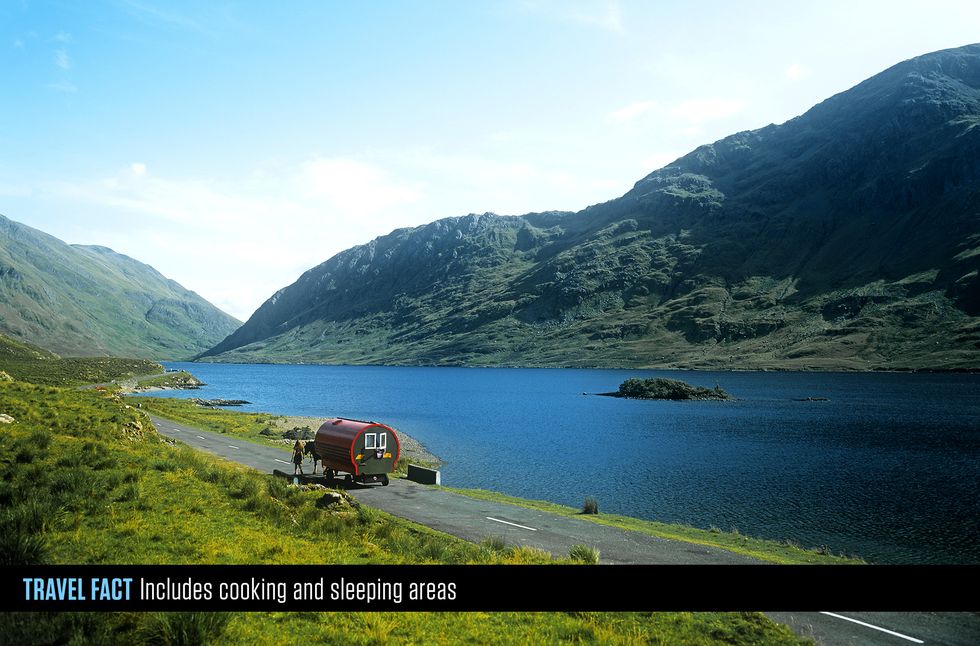
Go a bit old-school with a horse caravan in Ireland. While riding a horse may not offer much in the way of impressiveness, how about learning to harness and yoke a horse to a four-berth carriage that includes cooking and sleeping areas? That sounds a bit more remarkable. Plus, the horse-drawn carriages allow a fresh perspective on the countryside and beaches.
SpaceShipTwo, California
It hasn’t arrived just yet, but thinking about Virgin Galactic’s plans for both space travel and then sped-up point-to-point space flights has the opportunity to change the way some folks—we’re talking the super-rich—travel. Flying anywhere from Mach 3 up to Mach 5, the space plane plans to enter suborbital space, which gives passengers the weightlessness experiences and a view of the curvature of Earth, and then head to a destination for a runway landing.
Extreme First Class
Maybe you aren’t chartering your own private jet, but when it comes to traveling in luxury just sign on for the most extreme first-class experiences around, whether the Emirates Boeing 777 40-square-feet of personal space designed by a Mercedes-Benz team for a full enclosure or the Singapore Airlines Airbus A380 that includes a private suite with a leather reclining swivel chair and a double bed. Either sounds extraordinary.
Terra Bus, Canada
Made in Calgary, only roughly 20 of these Terra Bus Ice Explorer all-terrain vehicles exist and they almost all serve the Icefields Parkway and the Athabasca Glacier in Jasper, Canada. Designed specifically for glacier travel, the six-wheel, 49-foot-long vehicle looks like the most robust tour bus on the plant. And it is. At about 13-feet tall and with Goodyear Terra tires five feet in diameter, the Terra Bus Ice Explorer can handle 56 passengers and nearly any sort of ice, mud, sand, snow and rock the Canadian Rocky Mountains have to offer.
The Tünel, Turkey
Opened in 1875 as the second-oldest underground urban rail line in the world, the Tünel in Istanbul, Turkey, still contains a funicular section, basically an inclined cable railway. The stretch of this brick-lined tunnel is 1,820 feet long with the upper station 202 feet higher than the one below it thanks to a slope that reaches 15 percent in places. This historical trip—now with updated rolling stock—takes under two minutes.
Shinkansen, Japan
The original high-speed bullet trains, the Shinkansen can reach over 200 mph as they send visitors to Japan from Tokyo to throughout the country. Now with over 1,700 miles of track since first opening in 1964, the most popular lines ferry users to and from Tokyo to Osaka and to and from Tokyo to Nagano. The busiest high-speed line in the world can run more than a dozen trainer per hour and seat over 1,300 passengers per train in the highest-speed train efficiency in the world.
Umeda Sky Building escalator, Japan
The two 40-story skyscrapers that make up the Umeda Sky Building in Osaka, Japan, contain the world’s highest escalators. Suspended 550 feet in the air, a pair of escalators cuts through the open space between the buildings and brings visitors to the top of the structure in an escalator experience unlike any other.
Ice Angel, Wisconsin
When the waters of Lake Superior freeze completely, the residents of Wisconsin’s Madeline Island can take an ice road to Bayfield. And when the waters remain clear of ice, a typical ferry offers transportation. But for those in between months when the ice can’t quite support a vehicle and ferries can’t run, the Ice Angel steps into action. These ice boats with a pair of air propellers can run on thin ice across the 2.5-mile stretch that turns from water to slush to ice in one trip. With three different styles of these wind sleds, one features room for six passengers and plenty of cargo, while another can carry up to 22 passengers.
Freighter Cruise
You don’t need to captain a freighter—or stowaway—for a chance to get a new sailing experience. Whether the U.S.-based Maris or others from across the globe, expect to ride in impressive size, yet without the style. With limited passengers, often as few as a handful, freighter cruises can take months of your time with no special amenities (don’t even expect Internet), but they do offer an industrial-sized experience and ports you may not otherwise frequent.
Alaskan Hovercraft
We can't pick out just one hovercraft, but we can pick our favorite state where civilians use them: Alaska. In 1998 the United States Postal Services brought in hovercraft to start handling mail. But mail isn't the only thing getting hauled around by hovercraft in Alaska, where multiple hovercrafts—from the British built Hoverwork AP1-88 from the USPS to the Hoverwork BHT130—also work as a ferry service for freight and passengers, although the high cost to operate the machines have led to their demise in some places (i.e. King Cove, Alaska). Either way, the unique way of handling transportation offers up a variety of impressive hovering.
Peak 2 Peak Gondola, Canada
With the longest free span between ropeway towers in the world, and the highest point above ground of any cable car in the world, this British Columbia cable car takes visitors across a 2.7-mile journey from the peak of Whistler to the peak of Blackcomb. Dubbed B.C.'s "rooftop," the Peak 2 Peak Gondola on Whistler Blackcomb Mountain includes 360-degree views of the mountain terrain below, used for snow sports in the winter and hiking and biking in the summer.
World is Not Enough
Symphony of the seas.
At 1,181 feet in length and a gross tonnage of 228,000, the Royal Caribbean Symphony of the Seas is the largest cruise ship in the world. The steel ship features seven distinct on-board neighborhoods, surfing, ziplining, ice-skating, 3D movies and pools. Symphony also has a 21,500-square-foot solar array to power all these amenities while cruising throughout the Caribbean.
The Central-Mid-Levels Escalator, Hong Kong
If this Colossal Hong Kong escalator system didn't exist, you'd have all sorts of stairs to deal with to climb between the western and central Hong Kong districts. This system of 20 escalators, built in 1993, combines to become the longest outdoor covered escalator in the world, running a total length of 2,624 feet and rising 442 feet in the process. From end to end it's a ride lasting 20 minutes. That's a hearty "no thank you" on the stair option.
The London Eye, London
The world's largest cantilevered observation wheel won't take you to a new city, but it will offer you a new perspective. The 443-foot-tall London Eye, designed by Marks Barfield Architects, opened in 2000 as a temporary structure meant for a five-year run on the River Thames. The wheel's popularity skyrocketed, though, and it became a permanent, unique icon and an unmistakable piece of the London skyline.
Shanghai Maglev, China
The fastest train in the world travels whisks travelers between Pudong International Airport and Shanghai in a cool eight minutes. The magnetic levitation (Maglev) train, also know as the Shanghai Transrapid, has a maximum operational speed of 223 miles per hour. Manufactured by CSR Qingdao Sifang Locomotive & Rolling Stock in 2004, the rapid train system has taken modern train travel to new speeds.
Airlander 10
The world's largest aircraft prepares for a return to flight after a few trial flight mishaps. It first flew in 2012 as part of a U.S. Army contract, but was returned to Britain in 2013. The Hybrid Air Vehicles Airlander 10, a helium-filled craft powered by turbocharged diesel engines, went through a series of test flights from 2016 and 2017, which included a couple minor mishaps that will require repairs. Once airbone, it can fly for five days non-stop. The four engines include vectored thrusts for takeoff and landing, and the makeup of the 301-foot airship allows it to land in a variety of locations, such as the tops of buildings.
Icy Strait Point Zipline, Alaska
Traveling at an average speed of 60 miles per hour, people flying down the mile-long Icy Strait Point Zipline in Alaska finish the course in just 90 seconds. This isn't the longest zipline in the world, but if you find yourself zooming down its 1,300-foot, 24-degree vertical drop, you'll have a hard time saying it's not impressive. One fun thing to do while you're here: Six riders can strap in and take off simultaneously on parallel lines, allowing for a race to the bottom against five of your friends. The longest ride in North America offers views of the mountains, trees, and ocean—if you can see all that scenery while you're moving so fast, that is.
Stanserhorn Cabrio, Switzerland
Stanserhorn Cabrio can carry 60 people at a time near the top of Switzerland's 6,233-foot-tall Mount Stanserhorn. But what really gives visitors the "wow" factor is that this is world's first cable car with a roofless upper deck (it moves on side-mounted support cables), letting people on the top of the double-decker cable car bask in 360-degree panorama views. The lower level has wall-to-wall windows, but a staircase leads to the sun deck, with room for an additional 30 visitors.
Tim Newcomb is a journalist based in the Pacific Northwest. He covers stadiums, sneakers, gear, infrastructure, and more for a variety of publications, including Popular Mechanics. His favorite interviews have included sit-downs with Roger Federer in Switzerland, Kobe Bryant in Los Angeles, and Tinker Hatfield in Portland.
.css-cuqpxl:before{padding-right:0.3125rem;content:'//';display:inline;} Infrastructure & Transportation .css-xtujxj:before{padding-left:0.3125rem;content:'//';display:inline;}

Inside the Final Minutes of a Horrible Train Wreck

What to Learn From the Baltimore Bridge Collapse

Secret Tunnel in NYC Destabilizes Nearby Property

The Secrets of a 26-Year-Old Medieval Castle

How Laser Lightning Rods Could Save Our Buildings

Christopher Payne's Industrial Photography

What It Took to Build the World’s Largest Sphere

Greek Mythology Impacts Longest Suspension Bridge

The Hubris of Building a City From Scratch
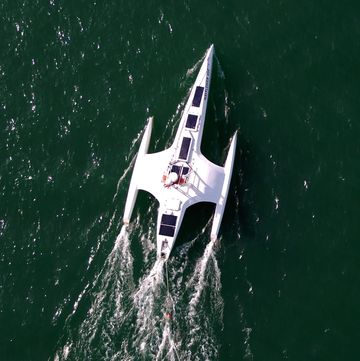
A Fully Autonomous Ship's Perilous Journey at Sea

Everyday Explained: What Happens After You Flush
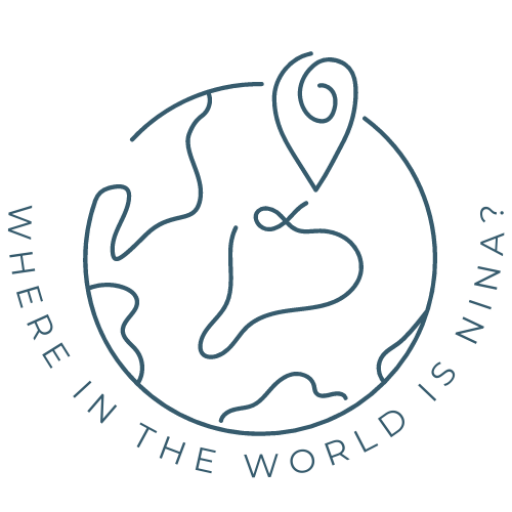
100+ Best Travel Tips After Over a Decade of Traveling
Pin this post for later!
After traveling for over ten years, it was about time I came out with a massive article on all of my best travel tips! Here is everything I have learned along the way, after six continents, 11 years, and nearly 50 countries…
I know not every single tip will apply to every single person or every country out there but it’s all here anyway! Some are just reminders, some are absolutely essential, and some are for your safety. So at the least, do a quick scan so you’re prepped with the best travel tips out there for your next journey!
Table of Contents
1. Travel Insurance
2. anti-theft gear, 3. travel banking cards, 4. car rental, 5. free accommodation, 7. best budget travel tip, 8. staying connected, 9. how to travel longer, 100+ top travel tips, top money travel tips, haggling and local money travel tips, top travel tips for accommodation, top travel tips regarding scams, safety, and rip-offs, top travel tips regarding electronics, top travel tips for food abroad, top travel tips for things to do, clothing travel tips, best travel tips for apps, hacks, internet and more, bags and packing travel tips, best tips for when to travel, top travel tips for transportation, top travel tips for making friends, logistics travel tips, general and random travel tips, top travel tips for being bold, traveling the world alone tips: solo travel for women, travel safety tips—no matter where in the world you're going, 11 ways to get free accommodation while traveling the world, carry on essentials + how to pack a carry on bag, quicky run down of my top 9 travel tips.
Want my top tips really quick? Here are my 9 most essential helpful travel tips to arm yourself with before hopping on a plane !
Honestly, having travel insurance is a must! Being covered for major medical needs, catastrophic accidents and occurrences abroad will give you peace of mind. One of the cheapest and most traveler-friendly insurance out there is Safety Wing . It’s what I use anytime I set foot outside the US! (They cover Covid too!)
Another item to have for peace of mind is anti-theft bags . It’s the easiest way to keep all your important things safe and literally the only bags you’ll need for years.
To get money out of an ATM, you NEED a bank that doesn’t charge you fees. Charles Schwab is my bank of choice. A travel credit card is a way to go for collecting miles and points. Grab yourself a Chase Sapphire Reserve or Venture X card.
Are you renting a car? This is where I usually have the most luck! Want to rent a cool van or RV? Outdoorsy is THE place to start an epic road trip adventure!
With hotels.com , if you book 10 nights and your 11th night is free! No catch, and nothing else to know! It couldn’t be easier. Who says no to free hotel stays!?
Want even more nights for free? Try out…
- Worldpackers – it’s a work exchange that can use to get free accommodation!
- Trusted Housesitters – you can take care of someone’s pets while staying at their house for free!
Want to book the best tours out there ahead of time? The best sites to do so are Get Your Guide and Viator . This way, you can book ahead and not have to worry about booking once you’re on the ground.
The #1 best travel for saving money is being flexible. Be flexible with flights, the time of year you’re traveling, your dates, literally everything… If you’re flexible, you’ll have a better time and get better deals.
The two best ways to stay connected is either purchase a local SIM card once you land (the cheapest option) or use GoogleFi , which is a SIM card that works in over 100 countries (the most convenient option).
Want to travel longer? Don’t want to figure out everything yourself? Want someone to tell you precisely what you need to do to live your best travel lifestyle? Want to live, travel, and work around the world for cheaper than your living costs right now?
Grab your Live Around the World Shortcut ! It was made just for you!
If you want AAALLLL of the travel tips I’ve gathered during my travels, I got you! It’s A LOT. These are general travel tips. I’m not really speaking about anything country-specific. Take everything in but don’t be overwhelmed. I’m literally dumping over 100 travel tips on you right now so read through it but don’t worry, a lot of these are just general things to keep in mind.
Also, not every tip here is meant for every person and for every situation! These are all things I have learned over the course of ten years and have helped me in one way or another along the way. I hope they help you too!
- Get a Charles Schwab card – Charles Schwab has the best card for Americans and they don’t charge international charges or ATM fees, and refund any ATM charges you encounter. There’s also Revolut and Starling for the UK and Wise is great for transferring money when different currencies are involved.
- Alert your bank and credit card company – When you travel, it is always wise to alert your bank and credit card company about your plans and what countries you are likely to be visiting. It won’t take long, and will just give those companies a heads up so they won’t freeze your card when they see foreign transactions being made. Notify every bank card you’ll be traveling with. Even the one you don’t plan on using. You never know when you’ll need your extra card in an emergency and that’s the worst time to get flagged.

- Don’t do currency exchanges if you can avoid it – If you have a bank card that doesn’t charge fees, going to ATMs are your best bet for a fair exchange rate.
- Don’t exchange money at the airport – If you need to exchange money, don’t do it at the airport. The airports know that many people will need to exchange money last minute, therefore will bump up their exchange rates and you’ll be paying a lot more. Either wait until you get to your destination, or change some funds up before.
- Carry some USD on you – No matter where you’re from or where you’re going, having a few bucks in another currency, mainly USD, is a good idea. You never know when you’ll be in a bind that requires cash.
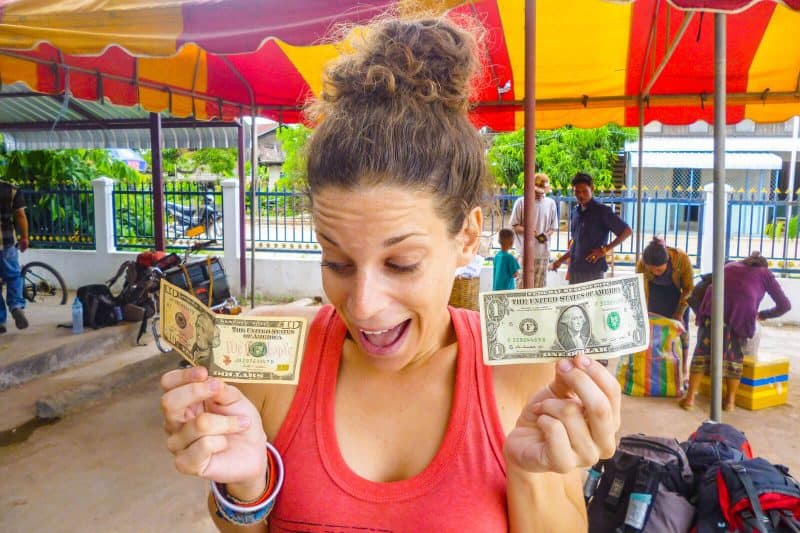
- Get a travel rewards credit card – Not everyone will want a credit card , but if you do, it may be worth doing a little research to find the one that will give you the best travel rewards. You just have to make sure that you pay off the card everyone month. With the right card, rewards can build up quickly, with points that you could put towards flights and hotels and perks such as early or late check-in and airport lounge access.
- Always choose local currency – When using your credit card to purchase things, always make sure you choose to be charged in the local currency. Your bank will give you the best rate. If you choose to be charged in USD (or your home country’s currency), you’ll be getting a worse deal. It’s also best to always pay in local currency even if they advertise they accept USD.
- Plan your post airport travel – The moment you leave an airport, you are the most vulnerable. At this point, you have no idea what a fair price for a ride is and what is the cheapest mode of transport. Do a little planning beforehand so you won’t have to worry about it when you arrive. For example, know if there’s Uber available or what bus to take to get to the city center. If you forget, ask the tourist info kiosk that many major airports have for assistance.

- Get to know the local exchange rate – Understanding the exchange rate can help when trying to work out exactly what you are paying for things. It will still take a little getting used to, but a bit of research is sure to give you a head start. XE is also an excellent app to have on your phone for quick currency conversions.
- Eat at restaurants at lunchtime – In many cases, some of the most expensive restaurants serve the same food at lunch as they do in the evening, just at half the price. This way you can treat yourself for cheaper!
- Ask for advice regarding prices – Always ask a neutral party for a price if you’re unsure about what price to expect. For example, ask a waitress how much they pay for a taxi from A to B to get a base price for a taxi negotiation.
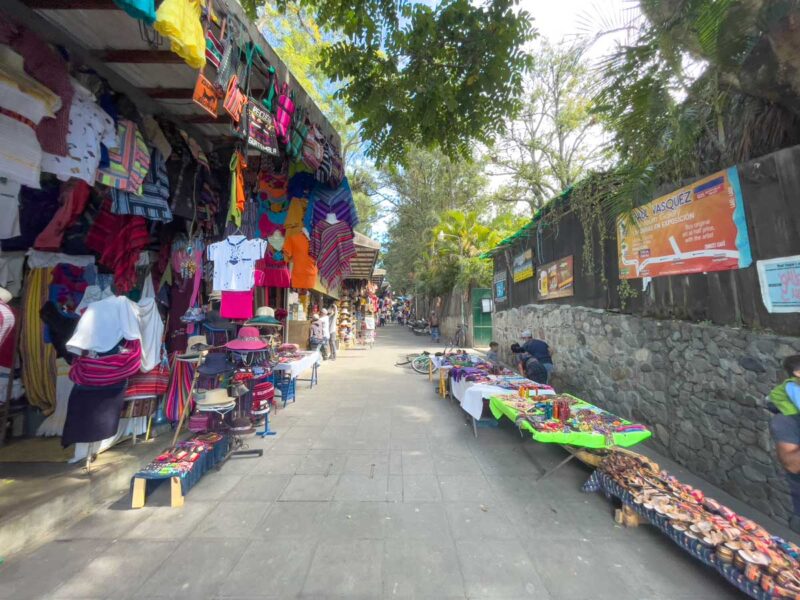
- Shop locally – Be sure to shop locally for everything you buy abroad, particularly food. Farmer’s markets, mom and pop markets, and whatever produce is in season. This is the best way to stock up on food for less, pretty much how the locals would.
- Don’t be a cheapskate – It’s OK to be frugal and haggle and know the value of something, but being a total and complete cheapskate will be foolish, and you’ll waste time. You don’t want to offend anyone by asking for one of their products for a super cheap price; this is how they make a living. Make sure to haggle, because it’s appropriate in many countries, but don’t be an @$$ about it.
- Use a City Pass – Cities all over the globe have City Passes, which are a great way to see all the city has to offer at a reduced rate to what you would pay if you visited all the attractions separately. You usually get a few free attractions, discounts to attractions and eateries, airport transfers, and free transport for one fee. They also sometimes allow you to skip the line at some more touristy places. It’s worth looking into to see if it’s a deal for you.

- Don’t eat near a tourist attraction – This is one of the top travel tips that people know, but it’s worth repeating. Unless you are happy to pay exorbitant amounts for your food and drink, eateries around tourist attractions should be avoided at all costs. Usually, the closer you are to an attraction, the more expensive the food will be, and it can be of worse quality.
- Take it slow – Travel slower if you’re low on dough. Slow travel is a sure way to spend less as you won’t be trying to cram a lot of attractions into one day, and the benefits are getting to know a country better. This is my favorite way to travel.
- Don’t book everything in advance – If you’re OK with being a bit spontaneous to save some cash, don’t book much ahead of time. 90% of the time, a place is cheaper when you’re a walk-in but of course, it’s a risk they could be booked, and “shopping around” can be time-consuming. Gamble wisely. This works very well in some areas of the world like Southeast Asia. This will also work best if you travel for a more extended period . If you’re abroad for just a week, this travel tip might not make sense for you.
- Join an accommodation rewards program – If you frequently use the same booking site when you book accommodation, check out if they have a rewards or membership program. You could end up getting a free stay now and again. My favorite one is using hotels.com simply because after every 10 nights; you get your 11th for free!
- Rent a place with a kitchen – Kitchens save money. Buy groceries, cook easy stuff, save a ton of cash! Even just cooking your breakfasts could save a lot of money and even time.

- Save the address to your place somewhere – Write it down, take a picture, pin it on your Google Maps, whatever it is, you’ll need the address later that day, and it’s an easy thing to forget. If you are staying in a hotel, ask for one of the hotel’s business cards that you can carry around with you.
- An apartment/house is usually cheaper – When staying somewhere long term, aim to get a house or apartment. Hotels will always be more expensive. Long-term apartment rentals can easily be found by word of mouth, asking the guy at the coffee shop because his mother’s, sister’s, cousin probably has a place for rent and even Facebook groups for city-specific places. Even the monthly option on Airbnb is often heavily discounted. If it’s not, it doesn’t hurt to ask either.
- Location is key – You may have found what you think is some incredible accommodation at a great price, but if it’s so far out of town you’ll have to use public transport to get there, you may not be saving any money at all. Plus, it will be a lot of effort and a waste of precious time to travel to the city center every day.
- Avoid the ground floor – When checking into a hotel or hostel, one of my best travel tips is asking for a room that’s not on the ground floor. Ground floor rooms are a lot easier to break into, are often noisier, and you won’t have any sort of view.

- Get free accommodation – Yes, I said free! There are a few ways, but these are two favorites:
- Worldpackers – Do a work exchange and get a free place to stay!
- Trusted Housesitters – Take care of someone’s pet while the are away and stay at their house for free!
RELATED: 11 Ways to Get Free Accommodation While Traveling The World!
- Stay away from the desperate – For example, a taxi driver in your face begging you to take his taxi. A random person is telling you to book with their tour… Anything desperate—stay away from.
- Too good to be true type situations – Check yourself and don’t fall for it. I think this just goes for life in general, right?! An example is a “free tuk-tuk ride” in Southeast Asia. It’s free because they’ll take you to some shops hoping you buy their friend’s overpriced goods.
- Make sure tickets are official – Be wary of purchasing “tickets” off people. Make sure it’s official – a website, an official-looking stand that has locals buying things…etc. Not just your random new friend.
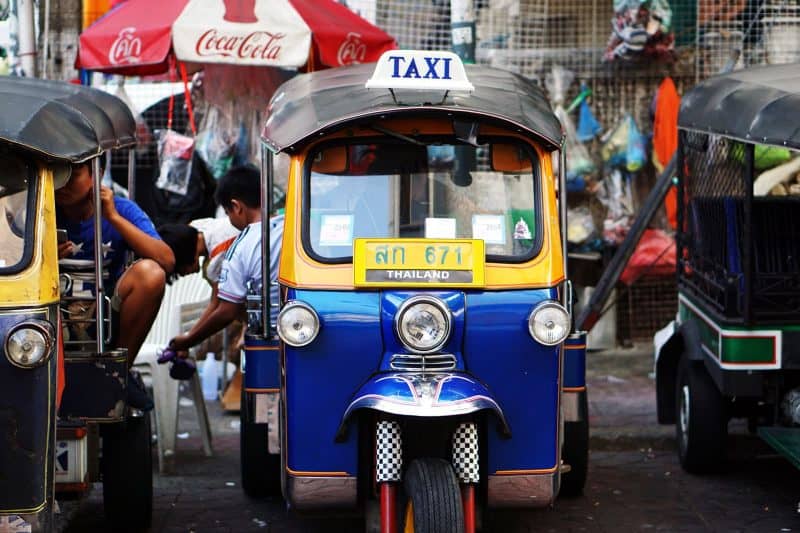
- Be careful of food scams – Be suspicious when someone REALLY wants you to eat at their friend’s place, offers to take you there, etc… Sometimes they are taking you to a place known for being overpriced, and they will get a commission for bringing you there. Of course, read the situation, it could be genuine, but this is a popular scam.
- Don’t buy things on the ‘tourist street’ – Restaurants in touristy areas will be more expensive than those a few streets away, but even worse than that is purchasing tours or bus tickets. They may actually be cheaper on this street, but you’ll pay in other ways. The bus will be crappy, take ten times longer, and the worst part, there will be thieves on the bus. Where do the locals buy their bus tickets? The bus station! Go there. Your hotel might charge a bit more, but they sometimes sell tickets too for convenience, it can often be fine, but sometimes you still might find yourself on the shittier bus.
- Never order off a menu without prices – If a menu doesn’t have prices, then it will likely be expensive, and even worse, if the restaurant owner can tell you are a tourist, there is a chance they will bump the final bill up further, and there is nothing you can do about it. On this same note, sometimes they have two menus, one with inflated prices.
- Don’t take up random offers – One of my most important travel tips is never take anything that’s offered to you. YOU ask for something. When someone out of the blue asks if you want something, like someone insisting you put a bracelet on, or being tempted by a local offering a super cheap tour out of the blue, be very wary, this can be the start of a scam. Only trust those whom you ask for things.
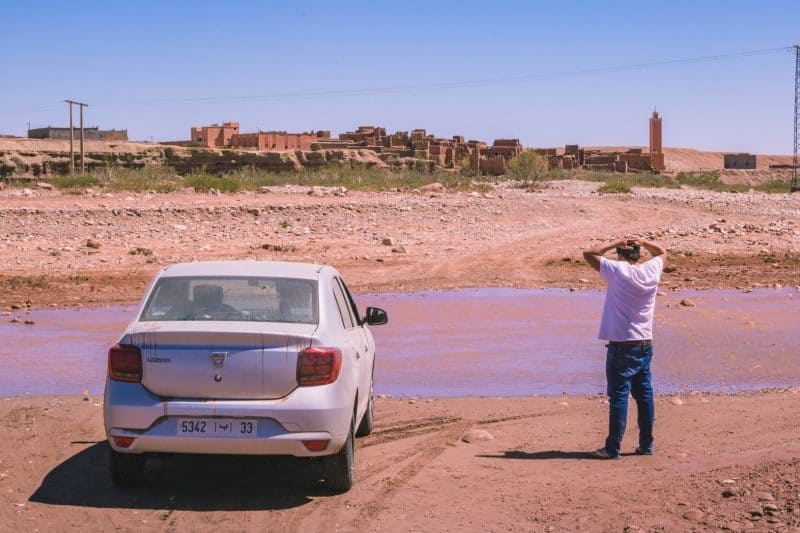
- Take pictures of your rental vehicles – And video too. Everything you rent, make sure to thoroughly document by taking pictures and video so the company can’t try to charge you for a dent or scratch that you didn’t do.
- Avoid the night – Honestly, if you want to be safe when traveling abroad, you’ll be better off not doing anything at night. It’s unfortunate, but if you eliminate going out at night, you’ll be way more likely to be safe and not have anything terrible happen. If you go out at night, make sure you’re with other people. Another thing to keep in mind is to avoid arriving late at night. Make sure you land or your bus arrives or whatever it is during the daytime for extra safety.

- Avoid getting wasted – I know, unfortunate, you should be able to party without worries, but honestly, you’re opening yourself up for trouble if you’re drunk. And you’re likely to be drunk at night too… it’s simply when most bad things happen even if you weren’t traveling. You have bars at home, spend time getting to know a country instead.
- Do a quick Google – Always do a quick Google on top scams for *insert country* before jetting off. There are tons of general tips and things to keep in mind sometimes, there are country-specific travel tips to keep yourself safe.
- It stays on you – Electronics should always be on your carry-on bags . When you fly or take a bus. No matter what or where make sure these stay on you at all times until they are safely locked in your room.
- Back up everything – Don’t lose those memories. Back them up on different devices! Backblaze and Google Drive are good options.

- Bring a Kindle instead of books – I know, real books are great, but the weight is unbearable. Plus, if you’re an avid reader, you’ll never run out of books with a Kindle , or need to find a store that sells books in English/your language.
- Pack a power cord – If you have more than a phone, you’ll be happy to have numerous plugs to play with. If you’re in a dorm or traveling with a friend, you’ll be a savior for having one of these. Make sure it has surge protection too.
- Pack electronics wisely – When going through security at the airport, you’ll be asked to remove your electronics from your hand luggage. Stay ahead of the game and have all your electronic devices at the top of your bag/easily accessible. Don’t be that person who has to empty half their bag when going through security!
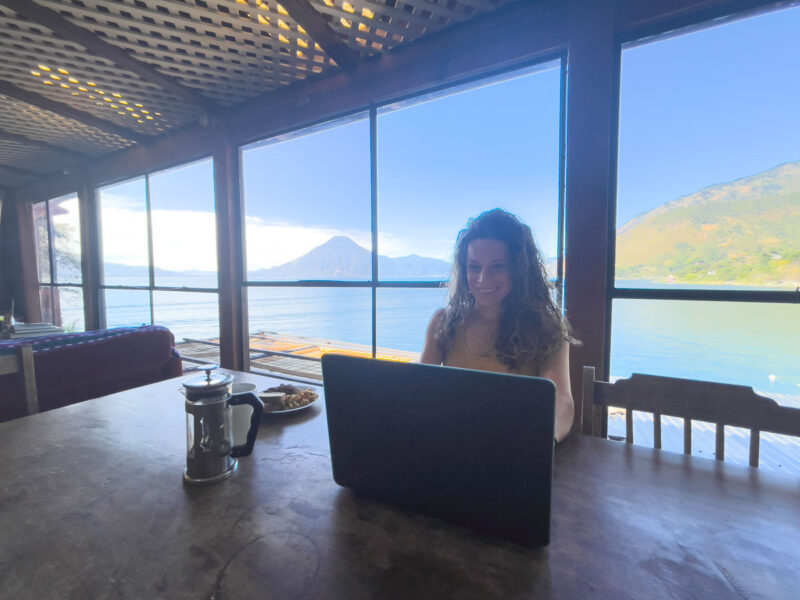
- Get a portable phone charger – A power bank will keep your phone charged which is AKA your maps, telephone, contact with the outside world, camera, probably has your list of activities for the day too… So yeah, don’t let your phone die. It’s also great to make sure you’re charged for long buses etc.
- Don’t plan on buying electronics abroad – Depending on where you go, you’ll either get a fake item, which can be common in Asian countries or get charged more, like in New Zealand and Australia. This travel tip is highly relative and depends on which country you’re from and going to, but it’s something to think about. I paid a few hundred more for my Macbook when I had to get one in South Africa.
- Ask where the locals like to eat – Don’t ask “where should we eat” because they may direct you to the touristy/western/expensive place. Ask where they eat.
- Buy fresh – Market food is my fav, but I rarely buy from the people who’ve had their food sitting out/ones that clearly don’t reheat it. There are many people in markets whipping up fresh food or, at the least, reheating.

- Stay hydrated when you travel – It is imperative to stay hydrated when you travel, especially on long flights. This not only will you feel more alert and have many health benefits. Make sure you bring your water bottle to cut down on plastic waste.
- Don’t drink tap water – When traveling in developing countries, always avoid tap water. They may be contaminated with bacteria or viruses that your gut isn’t used to and could leave you feeling pretty ill. Google, ask around and find out before sipping even just a little bit. The best way to save on plastic use and make sure your water is clean is using a filter water bottle. I use Grayl , and it’s saved me a million times!
- Ask about the ice – It is easy to forget when ordering a cocktail, but the ice in developing countries can sometimes be made with tap water. On a similar note, don’t go overboard and don’t have ice ever; just ask to make sure! The most likely situation will be the ice is fine, so don’t skip out on delicious smoothies or an icy beverage in sweltering weather!
- Make your own meals – Sure, it is nice to dine out whenever possible when traveling, but it is not always the kindest on your wallet. Making your meals is cost-effective and allows you to have control of what you are eating.
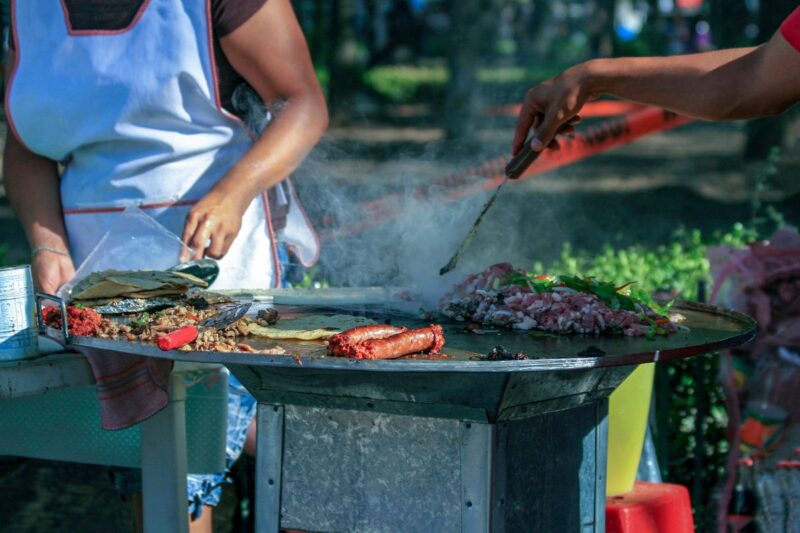
- Don’t be afraid of street food – Street food can be some of the tastiest, cheapest and freshest food available when traveling, and you shouldn’t be scared of it! Try to only go to vendors with a crowd around it, as you’ll know that these are the most trusted. Again make sure they are cooking it up fresh or reheating. And not trying to turn anyone off of meat, but nine times out of ten, meat is what is going to make you sick. Trust me as a pescatarian/mostly vegetarian of over 12 years and queen of eating at street stalls ! I was ALWAYS the person who wasn’t sick in the group that ate together at street stalls. Guess what the others ate? Yep. Meat.
- Try the local food – Food is a great way to get to know the local culture better, and you’ll get to try hundreds of new amazing dishes that you would never be able to if you just played it safe with a burger or chips every night. Get out of your comfort zone and try something new!
- Find a vista – Most cities will have tall buildings that you can climb and see the city sprawled out around you. When out and about in the great outdoors, a clifftop, hill, or even mountain may be your best option! Look for the highest point to see that sweeping view.
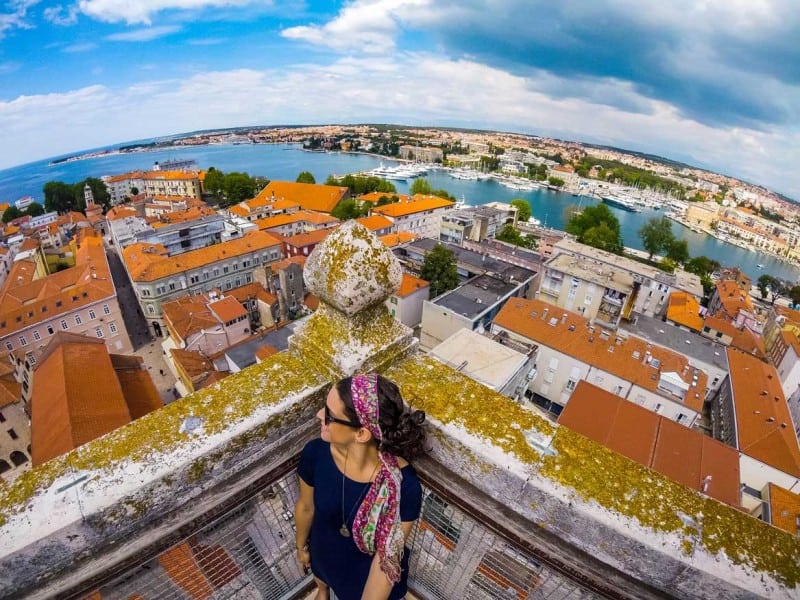
- Get lost – Ditch the map for the day and see where your feet take you. It is on these little ventures that you might find some of the most incredible things on your trip. Just make sure to pin your hotel/familiar area on your map, and then get wonderfully lost! It’s my favorite thing to do in each town I visit.
- People watch – Sometimes, all you need is to sit in a town square or on a balcony and watch the world go by. It is one of the best ways to feel as though you are part of the local life, even though you are a tourist creeping on others… Just kidding 🙂
- Free walking tours – These are a great way of seeing the city when you first arrive. You’ll likely visit all the main attractions in a short space of time with someone who knows their stuff. You know it will be a quality tour as the tour guides just rely on tips.
- Use Atlas Obscura – I always check Atlas Obscura – it’s packed full of ideas for things to do and see that you wouldn’t find in your usual guidebook or things that are a little off the beaten path. I love the wonderfully weird, so this is fun to give you something unusual to do.

- Be flexible – Things are not always going to go as planned when traveling, which you need to expect. Just plan for delays and don’t be upset if things go wrong, as it is almost inevitable that they will.
- Visit sights at sunrise – Visiting a site a sunrise (or at the least early) means it is likely to be less crowded as everyone is busy getting their beauty sleep. This is also a good time for photos as the lighting is great.
- Visit the tourist office – The staff here will be more than happy to answer any questions you may have free of charge, and at the very least, you will be able to pick up a free tourist map. They can give you the best travel tips for the area, activities, and events, help you with public transport, and much more.
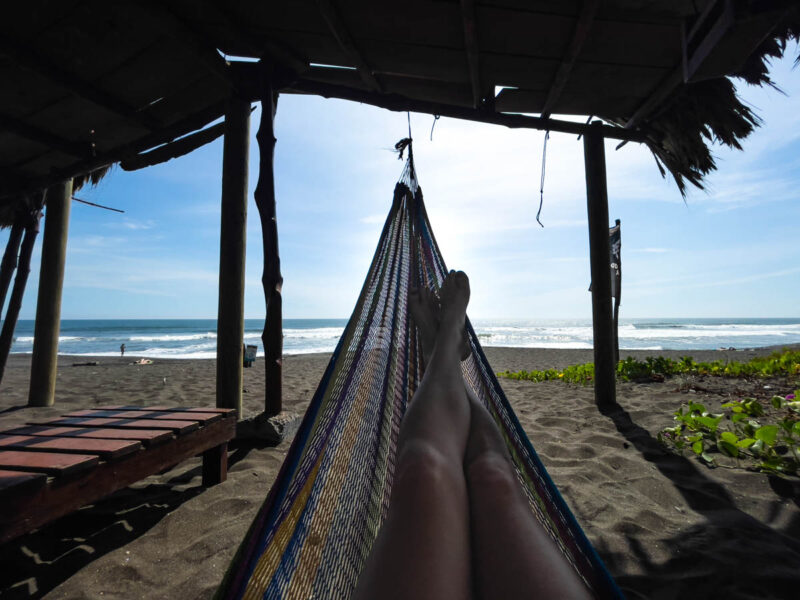
- Relax – There are so many things to see and do in the world that you may forget to find time for yourself. Relaxing is a massive part of the traveling experience, just pause for a moment and take it all in. There is nothing wrong with having a beach day or just sitting around on a hammock with a good book. This can be the best way to recharge and prepare yourself for the adventures to come.
- Hostel activities – It may not be for everyone, but some hostels have organized activities, which can be a great way to meet people. From beach picnics to rooftop yoga sessions, it is something to consider when looking at which hostel to go with. If all else fails, at least you have the hostel bar crawl!

- Best tours to book through – The most reliable tour operator sites are Get Your Guide , Viator , Klook (mainly Asia), and G Adventures (multi-day group trips). If you want to book tours online to get everything reserved, these are the ones to use.
- Use a laundry mesh bag – I use a laundry mesh bag for dirty clothes; they can come in handy when on the move and to separate items. It’s also used for my delicates in the wash, so they don’t get gross and too “used” looking.
- Be ready to wash clothes on the go – Don’t pack something that can’t be washed in the sink. No joke, if you can’t wear it three times, then wash it in a sink, then leave it behind. Bring easy to wash, not super wrinkly material, durable, sensible clothing. Nothing dry clean, no special need clothing!
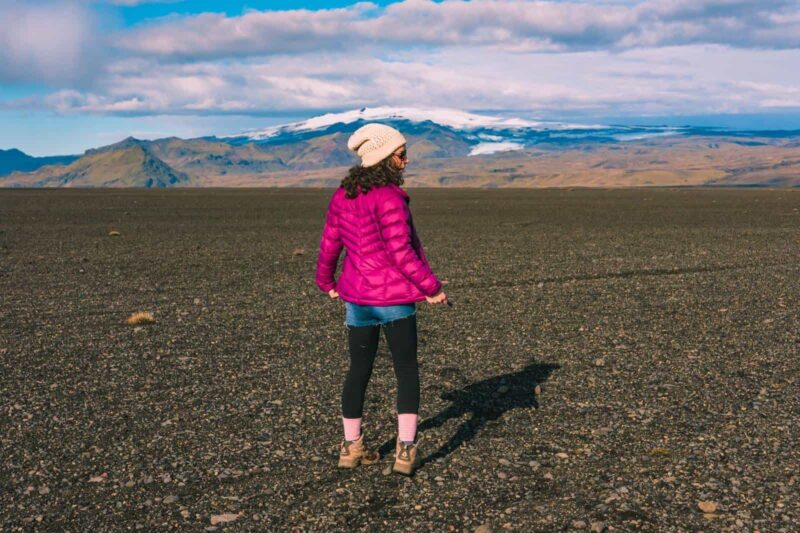
- It’s OK to hand wash – You’re not being cheap, you’re being thrifty and skeptical if you’ll get everything back, and you are watching out for how your clothes are handled. I’m a little OCD with how things are washed, and I rarely like my things going through a hot dryer. Use your hands and the sun… it’s OK. Keep in mind that most other countries worldwide don’t use dryers either, so even if you take it to get washed, they will likely use the sun to dry your stuff.
- Use Merino when in cold weather – There’s something about Merino wool that just works for cold climates. I guess it’s the quick-drying, lightweight, comfortable, and smell-free features… Buy them if you’re hiking especially.
- Bring a sarong – For an item that won’t take up much room in your bag, a sarong will undoubtedly come in handy in multiple situations. If you are cold, you can put it around your shoulders for an extra layer, they can be used as protection from the sun, plus if you are going to a place of worship, it is respectful to have your shoulders covered in many countries. I use it as a beach towel, a bathroom towel if one isn’t provided, a swimsuit cover-up, and even a “blanket” on a chilly bus ride. I like this better than a quick-dry towel because I feel like those often get a bit smelly, and they often can’t be used in all the other ways I mentioned either!
- Choose clothes that do double duty – As with the sarong, try to choose other items of clothing that can serve multiple uses. Use a tank top that can be worn during the day and as PJs (or sleep half naked as I do), and don’t pack anything that is used in one specific way. If you’re worried about getting bored with what you wear, consider multi-wear clothes to switch things up. (I have reversible swimsuits that are amazing!)
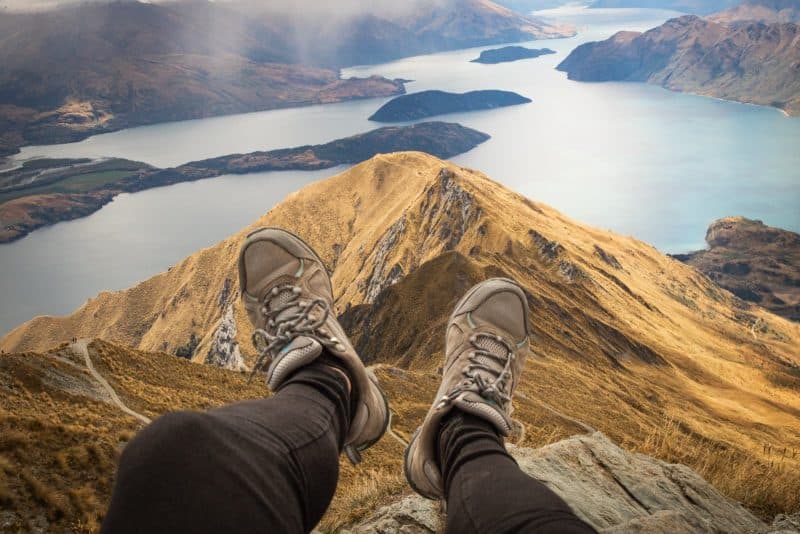
- Good shoes – Shoes should not be underestimated when it comes to travel. You will be wearing them all the time, and chances are you will be doing a lot of walking. Invest in some good shoes before your trip and be ready for anything. I usually travel with flip-flops , a closed-toe casual walking shoe, and either a sandal or hiking shoes , depending on my destinations. Usually no more than three pairs.
- Download an offline map – My go-to map app is Maps.me. There are cool things to discover on the map, and it has GPS functions all offline. Just download it all while on wifi. I also download Google Maps offline as a backup, particularly if I need driving directions.
- Buy a one-way ticket – You don’t always need to fly roundtrip. Particularly if you’re on the road for a bit longer, buying one way can often be cheaper and more adventurous. But with that said, don’t forget about buying an onward ticket depending on where you’re going if it’s a requirement for entry.

- Look for other nearby flights – You don’t always need to fly direct. Sometimes flying into the main city and taking a bus will be significantly cheaper. Or flying to a nearby area and then buying a separate leg could be more affordable as well.
- Flexibility with flights – Being flexible is the #1 travel tip for flying! This is how you find the cheapest flight. I know tons of others try to tell you to book on a Tuesday, use a VPN, etc and those could work, but the only guaranteed 100% way to save on flights is being flexible with your dates and even the place you fly to.
- Get a VPN – While away, you will be using a load of unprotected WiFi networks, and a VPN is a great way to ensure that you stay protected. It will also allow you to change your location as you move around. this can be handy for remote work situations or even trying to see if a flight is cheaper when “you’re in another country.” But ultimately, it should be used on sketchy wifi, like the free wifi in airports or cafes. Lastly, a fun tip is to use a VPN to get different choices on Netflix too!
- Investigate using GoogleFi – This could be the answer to having wifi everywhere. I use GoogleFi because I love having internet straight off the plane and never have to worry about topping up. I’m covered in over 100 countries. It’s not always the fastest, but it’s the most convenient SIM I’ve owned so far. If you’re in very cheap countries, the local SIM should be fine, but GoogleFi is so you don’t need to purchase a new SIM in every country. Do note you will have to pop in and out of the US otherwise, they flag your account if you’re abroad too often. I haven’t been flagged yet but I’m visiting the US at least once a year.
- Invest in a SIM abroad – Buying SIM cards isn’t that scary. Many countries worldwide have extremely cheap SIM card options for your phone. Don’t be afraid to just buy them straight off the plane. They are often easy to top up, and this will be the cheapest option. GoogleFi is best if you’re country-hopping a lot, but if you’re going to be in one place for just a few months, a local SIM will be the cheapest.

- Make sure your phone is unlocked – Don’t leave your home country without an unlocked phone. It’s the only way to travel and get SIM cards along the way.
- Use Google translate – Download Google translate for offline use. The camera setting is invaluable, and you can even save a few phrases and things to be offline so that you can use them later.
- The power of Skype – Download Skype and put $10 on it. If you ever need to call your bank, parents, a friend, you can reach them without a $2894894 phone bill. Just get on wifi and give them a ring. I had to call my bank and only used a dollar or two for a 20 min convo. If you’re on a local SIM or have an expensive carrier for phone calls, this travel tip is perfect for you.
- Never use an “open” or over-the-shoulder bag – Ever. Anywhere. They get in the way, increase the chance of your goods getting stolen, and overall is just not a great accessory for travel. It’s common in areas of the world for motorbikes to swoop past and grab them off shoulders.
- Be careful in crowds – I always have my bag in front of me, or my backpack turned around and worn in the front. On crowded transport, in markets, in any area where people are close together—always have your bag in front and even place your hand over it. This is a prime opportunity for pickpocketing.
- Use cross-body bags – This is the only type of purse I use. A crossbody bag or a crossbody fanny pack of some sort. Something that zips close, and something that is securely around your body. It’s the safest bag to use.
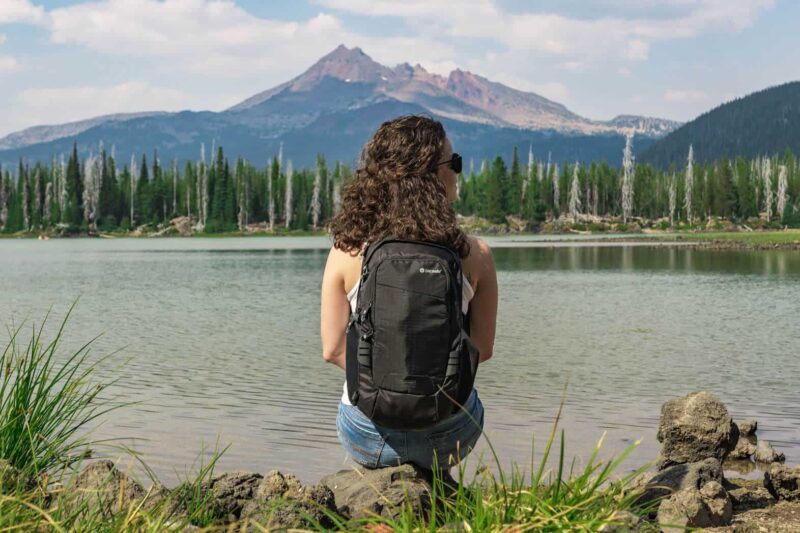
- Use a backpack – Backpacking is sometimes the best answer. No matter how great wheelie suitcases are, it’s sometimes literally better to travel with a backpack or, at the least, be mentally prepared to drag your wheelie suitcase around cobbled streets, across a beach, or held above your head as you walk to a small boat… Keep in mind the type of traveling you’ll be doing to decide which one is best.
- Invest in anti-theft gear – Buy yourself some anti-theft gear for your sanity. Get yourself an anti-theft backpack, purse, or even both. I’ve been traveling with both for years, and it’s great for peace of mind and safety.
- Grab yourself a dry bag – I’ll recommend dry bags until the day I die. It’s a beach bag, rainy day purse, a dry place for electronics, a laundry bucket, a souvenir bag… I have traveled with one for ten years now.
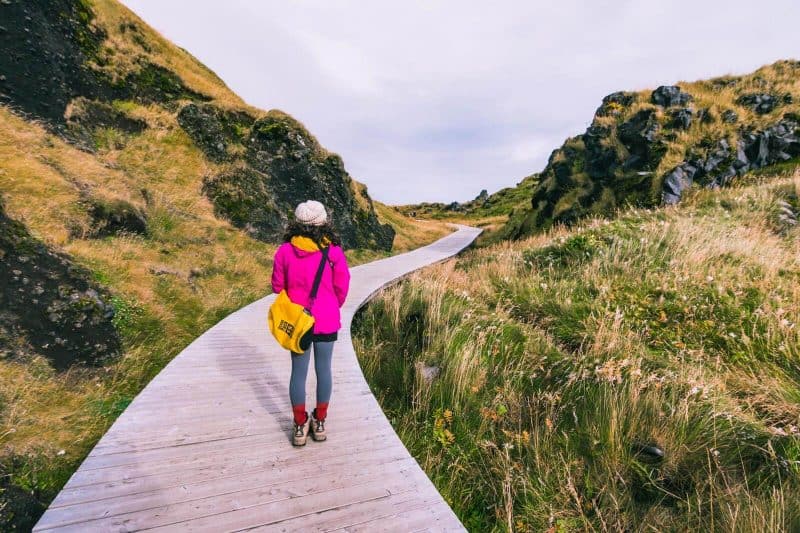
- Use a bag – Actually, use your bag, not your pockets. Things in your pocket are an invite to thieves to take them… Keep your pockets empty and your bag close to you at all times. If you’re a dude, keep things in your front pockets only and be on alert.
- Make your luggage noticeable – If you are traveling with baggage that you need to put in the hold or check-in, a quick tip is to wrap a colorful band or ribbon around it. Make yours stand out from the rest so that you’ll quickly be able to spot it when it gets unloaded from the plane. This is particularly true if you have a basic black bag like the thousands of others traveling that day!
- Pack cards and money separately – Hide a bit of each in a few bags and always have more than one card. That way, if one gets lost, you have the other as a backup in another bag.

- Carry a padlock – Always carry a padlock with you when you travel; you never know when it may come in handy. It won’t take up much room in your bag, and when you stay in dorms, it can be a necessity. One with a combination lock usually works best as then you don’t have to worry about losing keys.
- Pack a water bottle – Preferably with a filter so you can use less plastic when you travel. Some water bottles are better than others, so make sure you research. I use Grayl ; these water bottles save my life and save me from wasting so much plastic.
- Bring some earplugs – Even if you’re not a light sleeper, new places will have noises you’re not used to. Whether it’s other people in a shared hostel room, or just unfamiliar traffic sounds, a good set of earplugs will help you wake up fresh and ready for adventuring.
- Use vacuum/compression bags – These are ideal if you need more space. Packing cubes or vacuum bags can make your stuff shrink with a few squeezes of the bag (no, you don’t need a vacuum) or an extra zip for compression. I’ve used both, and both work for me. I use compression bags more nowadays simply because the vacuum bags eventually get worn and get a hole in them, rendering them useless.
- Wear your heaviest and bulkiest items – Even if you may look a little silly in the process, every piece of luggage weight is precious, so by wearing your heaviest items, you may just open up a little space to fit in another outfit or save in overweight fees.

- Don’t pack toiletries if you’re tight on space – You can buy these very easily at your destination. So if you’re looking for some extra room, leave the toiletries at home and purchase them when you land. Unless you need super specific things, this is easy to save some room in your bag.
- Fill dead space – Make use of every little space in your bag that you can. That means rolling all your smaller items up, such as socks and underwear, and stuffing them into shoes and all the nooks and crannies you can find.
- Know your limits – There is nothing worse than a surprise hefty fee at the airport when your bag weighs too much. One of the best travel tips for saving money is to double-check your baggage limits and weigh them at home first.
- Pack some hand luggage – Even if you are checking in your main bag when you travel, always pack the necessities and a change of clothes in your hand luggage . Sometimes the unthinkable happens, and your main luggage may go missing for a few days at the airport. That way you won’t have to run to the shops as soon as you arrive at your destination to buy replacement clothing. Your electronics should ALWAYS be in your carry-on only and anything else of value.

- Packing for multiple seasons – I honestly simply don’t. I’ve avoided winters all my life up until recently. The easiest way to pack is to make sure you’re staying in similar climates so you don’t need so many types of clothes. If I travel to a place where I need warm items, I make it a round trip. Sometimes you can’t help it and in that case, pack multi-use items and layers like when I went to Iceland .
- Check the season of your destination – No matter when you travel, check the season. It’s easy for someone from New York to forget to pack winter gear when visiting Australia in June. Make sure you’re not getting your hemisphere’s weather mixed up.
- Try traveling in low or shoulder season – Not only are prices lower, but there are fewer tourists, making sightseeing easier. This is your best bet for getting the cheapest accommodation, flights, and tour packages. The only risk is you may not get the best weather 24/7, but this could be a risk worth taking.
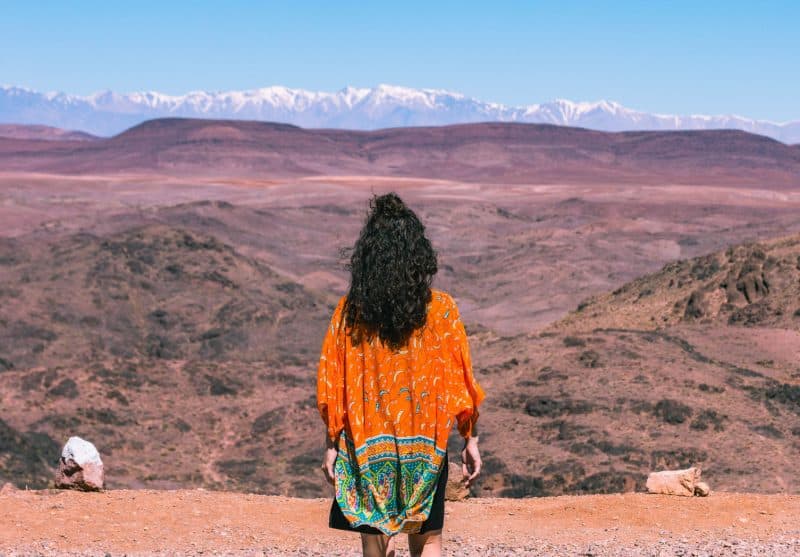
- Just do it – There will never be the ideal time to go traveling, be it because of work, family or friends, but sometimes you have just to get up and go instead of sitting around waiting for that ‘perfect’ time. Chances are, you’ll be waiting for a very long time!
- Flexibility – We talked about this already, but it’s worth mentioning again flexibility will be your best for finding the best deals.
- Avoid taxis if possible – Taxis are usually a budget buster. Is there any other way to get from A to B? Double check, as taxis are a headache to haggle with and may overcharge you once they realize you are a tourist. If it’s inevitable, ask a neutral person how much it should be for a base price to negotiate. Google taxi scams for XYZ country too to be double aware. Follow them on your phone through Google maps.
- Download Grab/Uber – Grab is an excellent app in countries in SE Asia, as you can hail a cab to wherever you are and know how much it will cost you before you accept it. You probably know about Uber. And Lyft works abroad too!
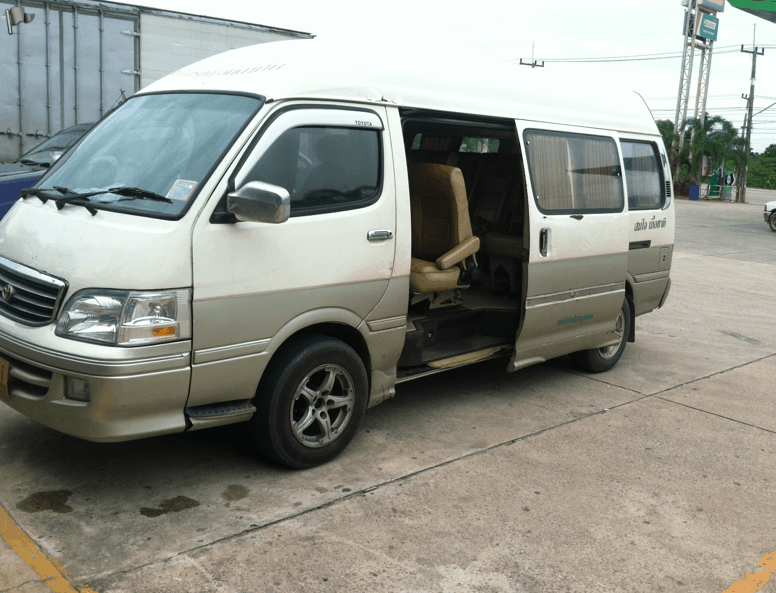
- Lounge on a layover – If it’s long enough, explore; if it’s not, use it as a time to stretch, journal, get work done, make the random friend at the coffee shop or bar… Better yet, treat yo’self and go to a lounge. You could get Priority Pass or may potentially have it through your credit card . If not, you can buy day passes for many of them as well. Lounges are great if you get to the airport early or on layovers, in fact, it’s life-saving! It includes better bathrooms and wifi, free food, and even booze!
- Take into account transit days – Just because you have 14 days of vacation, it doesn’t mean all of those days are fun. Some of those days will be entirely spent on transposition or jet-lagged. Add day accordingly and perhaps don’t go TOO far from home if you don’t have a lot of time.
- Arrive at the airport with plenty of time – One of the most stressful things in life is getting to the airport with only a little time to spare. Many things could take longer than you think, and you never know how long the lines can be. Missing your plane is not like missing a bus; you can’t just hop on the next one that easily.
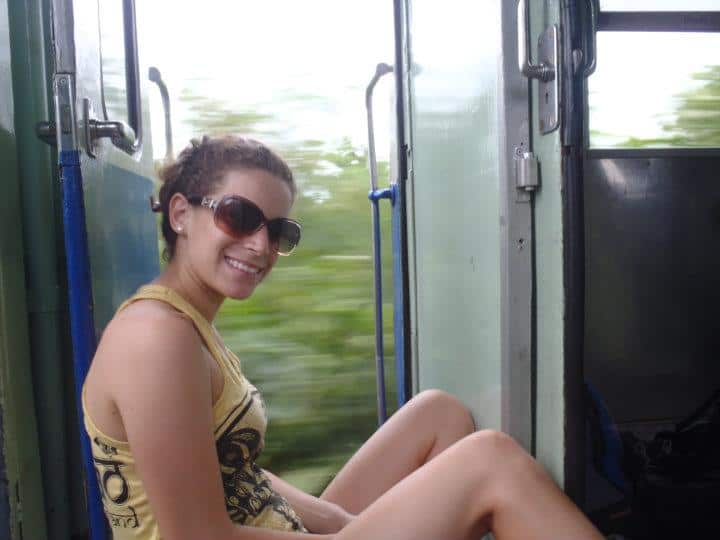
- Check-in online – Many flights allow you to check-in online, which will save you precious time at the airport. Sometimes the check-in queue can be scarily long.
- Make use of sleeper train/buses – Don’t be scared to use a sleeper train or bus to get from A to B. They may take a bit longer than a flight, but are likely to be considerably cheaper and will save you the cost of one night’s accommodation.
- Talk to people – You might make friends for life on your travels, but to do that, you can’t be afraid to talk to people. The easiest way to do this is to join an organized tour or stay in a hostel, it is likely that others will be in the same boat as you and want to make friends. Just be brave enough to strike up a conversation, and you may be surprised by how much you have in common.
- Talk to the locals – If there is anyone who will know the best things to see and do in a new location, those who live there. The chances are the locals will be more than happy to provide advice, and you may even come across a hidden gem that you otherwise would not have discovered and get to know the country better.
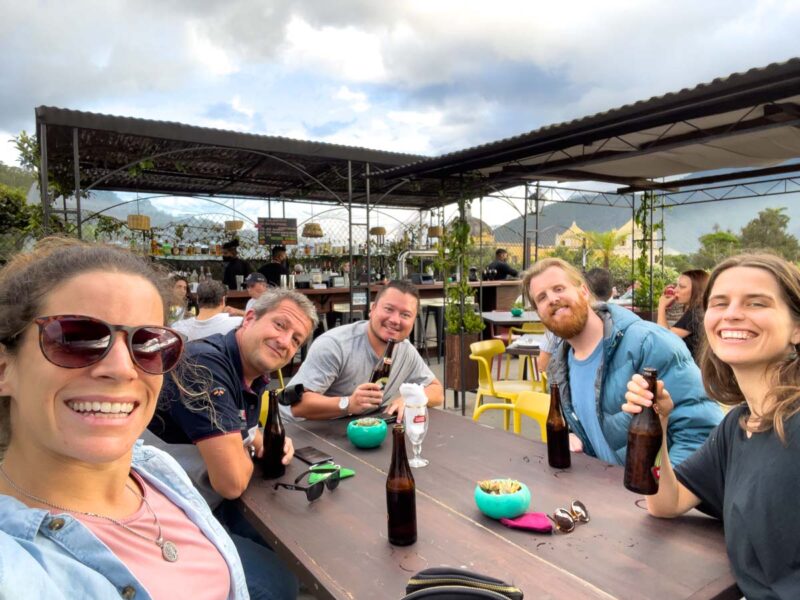
- Show respect – No matter what. Never let a situation get you so angered you disrespect the other party. You are a guest in another country, which can cause an even bigger issue. Always remain calm.
- Keep an open mind – When traveling, it is a chance to meet people you probably wouldn’t speak to at home. Differences such as age and culture become irrelevant as instead, you’ll bond over things like shared experiences.
- Keep your guard up – Although you should be open to strangers, this doesn’t mean letting loose and forgetting all potential red flags. Be in tune with your gut and go with it. Your sub-conscience usually can sniff out a sketchy situation; listen to yourself.
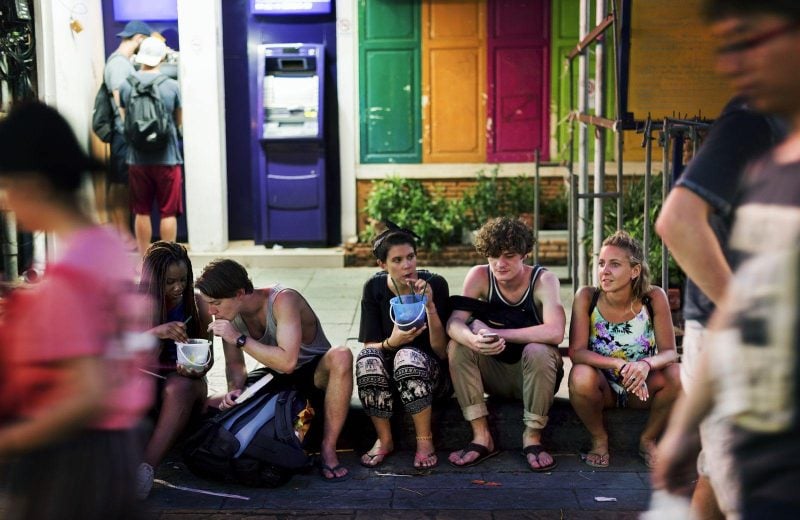
- Staying in a hostel isn’t always fun – This is coming from someone who isn’t a fan; I need my space. Hostels aren’t always your only option sometimes a one-bedroom in a hostel or a guesthouse is only a few bucks more. Making friends is fun, but not having stuff stolen and getting sleep is more fun in my eyes. I can be social in the common rooms!
- Join Facebook groups – This is one of the best tips for traveling if you want to make friends and be in the know about what’s going on in certain places. There are thousands of Facebook groups, some for particular countries, some for specific towns and cities… Join the ones you’re interested in visiting, and you’ll find out about tons of events and find others who are looking to make friends.
- Check your passport expiration and pages – Some countries won’t let you in if you have three-six months or less until you’re due for a new one. If you don’t have enough pages to stamp, you’ll also be denied entry. Some countries won’t let you in with less than two pages free. Plus, some visas take up an entire page!
- Check the visa requirements – Never assume you can just land and enter a country. Always double-check the requirements for visas. All of this is Googleable, and it depends on what country you are from as well.
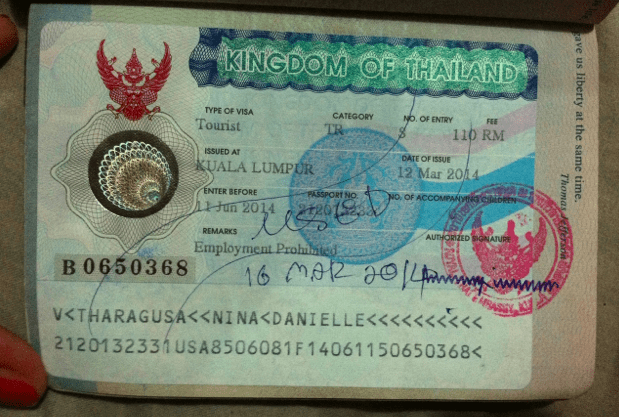
- Get travel insurance – This is very important; too many people think they will be fine without it. Accidents can happen, and for the sake of some pocket change, you could save yourself some hefty hospital bills. The easiest travel insurance and one I use is Safety Wing . This is particularly the best one for people traveling for longer. Read more about travel insurance.
- Photocopy important documents – You should always keep a photocopy of your essential documents in a separate bag from the originals, just in case they get lost! It could get you out of a sticky situation for something that can take seconds to do, and it is always good to have a backup as an extra sense of security. I carry them in my bag, have them in an email to my mom, and have a document folder saved on my computer. Passport, ID, visa info…
- Leave the guidebook at home – Rather than lugging a whole guide around with you, why not just take photos or download an app? Saves both space and weight. Also, travel blogs like the one you’re reading now often have better info than a guidebook that may have been written two years ago by a person that visited a place for 36 hours.
- Don’t bring your passport – I never carry my passport with me. Even if it’s a requirement, it’s safer hidden in the hotel than on me, in my opinion.
- Ask a hotel if you are lost – Walk into any hotel or store and ask for directions; they will be the most trustworthy and gain nothing from lying to you.

- Learn a little of the local language – There is no way you will be able to learn the language of everywhere that you go, but there is no harm in learning a few choice phrases of the local lingo to help you get by. A few good phrases include, ‘hi,’ ‘please,’ and ‘thank you, but the words for ‘bathroom’ and ‘beer’ may also come in handy!
- Watch a documentary – Sometimes, before visiting countries or popular places, watching a documentary is a great way to get educated before arriving. Having a bit of a visual will often make you more aware of what to expect of your destination than simply reading a travel guide.
- Make use of McDonald’s – If you’re in a city and are dying for a toilet… run into a McDonald’s and do your thing. They usually have free wifi too but buy some fries and don’t take total advantage.
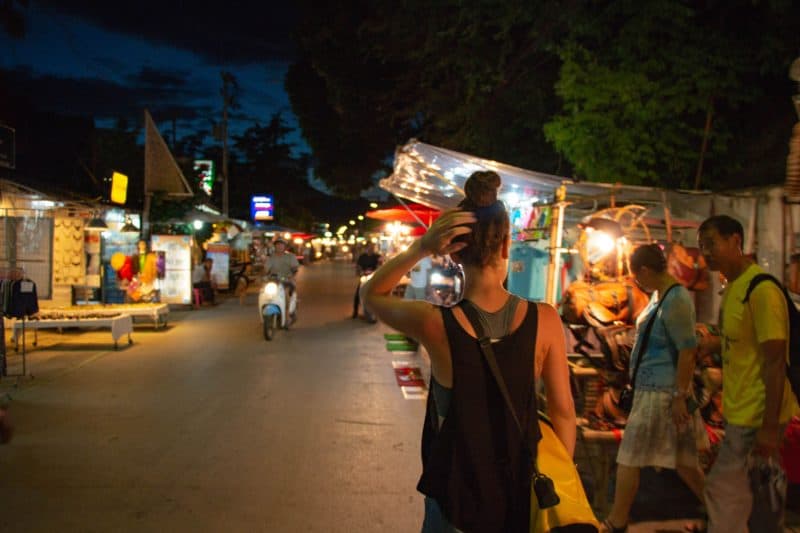
- Say no to as much plastic as possible – Some countries are obsessed with plastic. 711s in Southeast Asia will give you a bag for your small snack and water and a plastic straw on top of it. Refuse the extra plastic.
- Don’t be the over-planner – It will only lead to delusional plans, disappointment, and stress.
- Don’t have too many expectations – Having crazy expectations is a recipe for disaster. Go in with low expectations and be blown away. Nothing will go perfect; accept that things will go wrong.
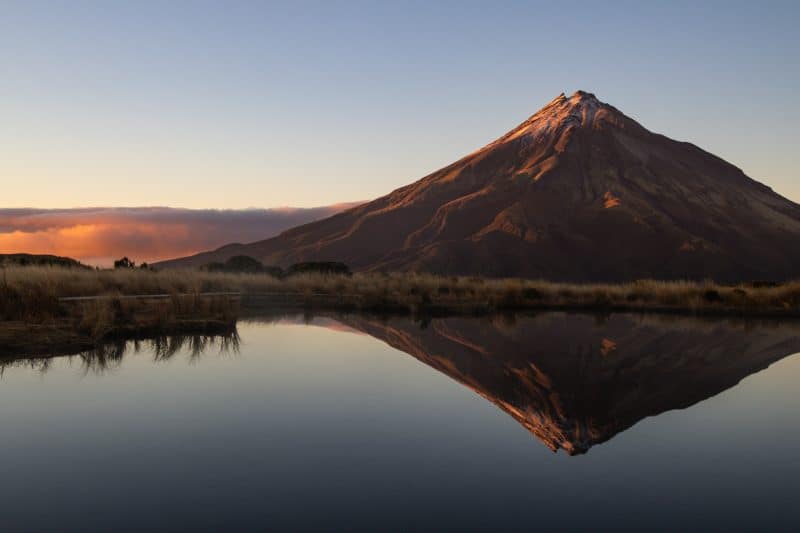
- Get up early – Yes, the early bird indeed gets the worm. It’s worth making the most of your day when you don’t have much time in a place, and getting up early means fewer crowds and better pictures. Not only that, but you’ll also have the rest of the day to do other awesome things.
- Travel with a smile – It’s cheese AF, but it’s so true. Smile more, randomly smile to locals, have a smile even when a situation is frustrating; it’s part of the journey. Smiles go a long way. Wear it often. Everyone is willing to help but not if you’re an angry asshole.

- Vaccinations – Always get a doctor’s advice if you are traveling somewhere where there may be a vaccine requirement. There will likely be a vaccination you can get to protect you from most nasty things, and if it’s a requirement, the airline will probably ask you for proof before you even board the plane!
- Write things down – You may think you’ll remember every aspect of your traveling experience, but it is scary how quickly you can forget the little things. If you wrote something down, even just a line or two a day, it can be a great thing to look back on in a few years and may help jog your memory about other events that occurred on your trip.
- Wear sunscreen – It is such a simple tip that so many people tend to ignore. Even if you are hoping to catch a tan, sun cream is vital and has many long-term benefits associated with it. Some places may have an intense sun that you are not used to. On a similar note, sunscreen is often one of the most expensive toiletries abroad! So bring it from home!
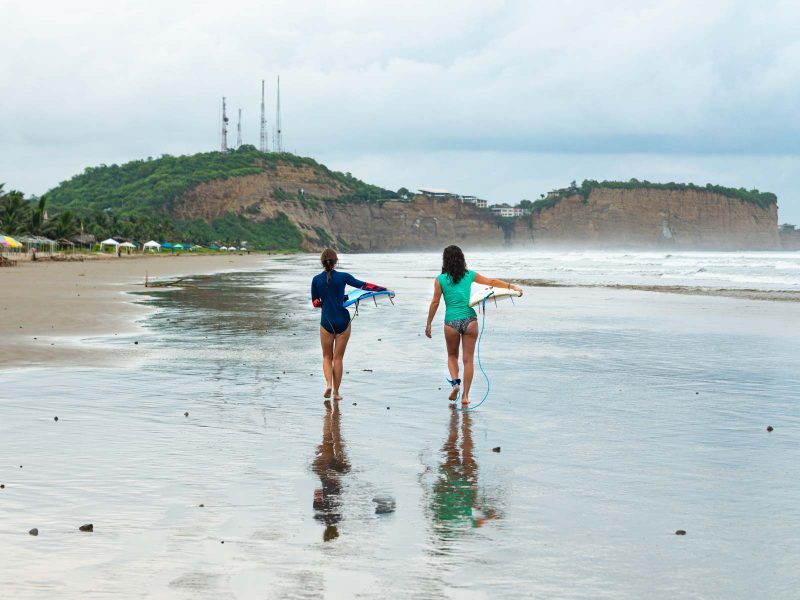
- Tell people where you are – For safety reasons , it is always best to ensure at least one person knows where you are and when. An excellent way to do this is to send an itinerary home to your families, such as your upcoming flights and accommodation; that way, if you disappear for a few days, someone will always know where you should be. Before venturing in nature alone, always tell someone.
- Wear flips flops in the shower – Imagine how many people use the hostel showers every day! Ew! Stay protected and wear flip-flops ; you won’t regret it! This is more often for those staying in hostels or in places where many people share bathrooms.
- Learn something new – Go surfing in Morocco or ride a motorbike in Thailand. Go diving in Indonesia or hike a volcano … Traveling is all about new experiences, and the opportunities are endless out there in the big, wide world.
- Embrace the nerves – It’s OK to feel nervous and excited. The nerves will pass, you’ll have fun and everything will be OK. Don’t let nerves hold you back; it is entirely normal!
- Travel solo at least once – For many, traveling alone can seem like a pretty scary experience, but there are so many perks when it comes to solo travel ; it should be done at least once. You’ll learn about yourself, how to be independent, how to overcome obstacles, and overall do everything that you want to without having to think about anyone else. You’ll also learn some valuable life skills along the way.
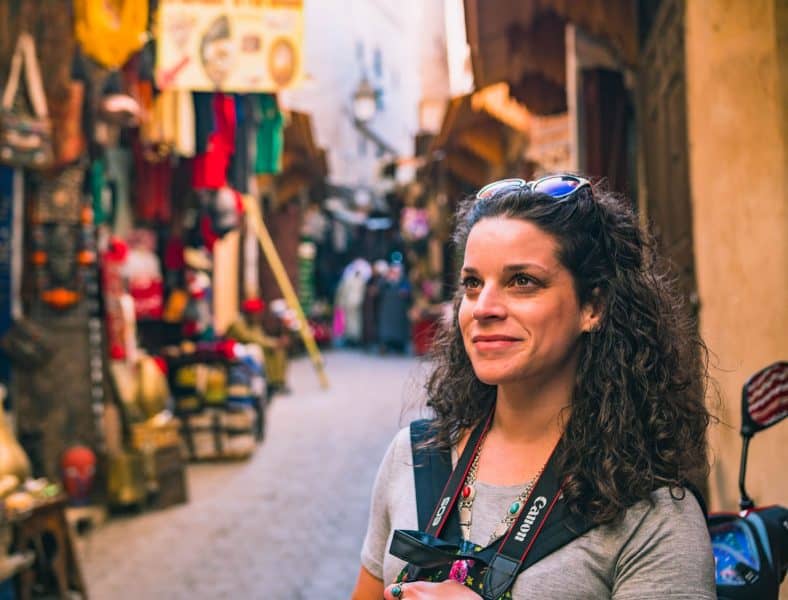
- Step out of your comfort zone – There are not many other opportunities in life where you can step out of your comfort zone and do something that you’ll remember for the rest of your life. Traveling is the perfect time to do something that you would never usually do at home; you’ll likely be surprised about how exhilarating it can be.
- Get a job to stay abroad longer – If you think you will struggle with the fact of coming home, there is no problem with staying abroad! Yes, it’s true, it’s possible to stay abroad longer, and no, you do have to be rich! There are tons of travel jobs out there, both work abroad and remote work . If you want to stay abroad longer and keep traveling, you’re in the right place. This is the blog to read! I have been blogging for about ten years on exactly how to do this. Head here for more info on working, living, and traveling the world .
More Travel Tips
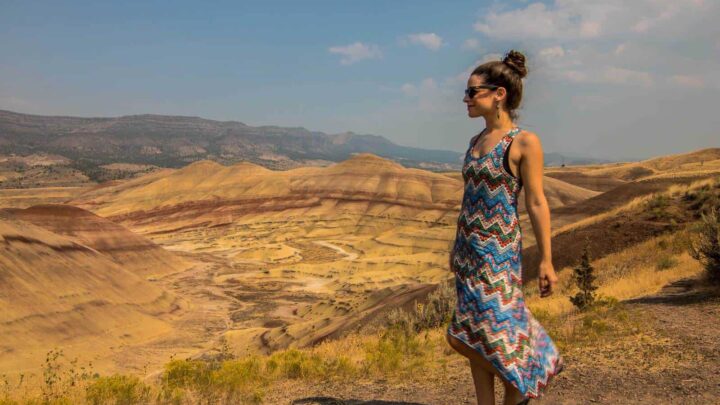
TAKE THE SHORTCUT
Want to know how to live abroad without being rich.
Get my shortcut! It's THE ONLY guide you'll need on how to sustain a life abroad—NO BS!

Nina Ragusa is an adventurer, messy bun master, breakfast fan, and full-time travel blogger. She's been abroad since 2011 and blogging on Where in the World is Nina? for nearly as long. Nina helps people like you move around the world while making money. She loves talking about how to work abroad and online to travel longer! Read more about Nina
Leave a Reply Cancel reply
Your email address will not be published. Required fields are marked *

How To Travel The World Cheap: 57 Epic Budget Travel Hacks for 2024!
There are lots of practices you can adopt in order to travel the world cheap . The most effective ways are to take advantage of Airmiles, exchange work for free food and accommodation, have a well researched travel plan and to be savvy with bank cards and money exchanges.
Since 2008 I’ve travelled all over the world on a fairly tight budget, often working as I go. In this guide I want to share 57 cheap travel hacks that I’ve picked up which will have you exploring the globe for less.
So, let’s get straight into it!
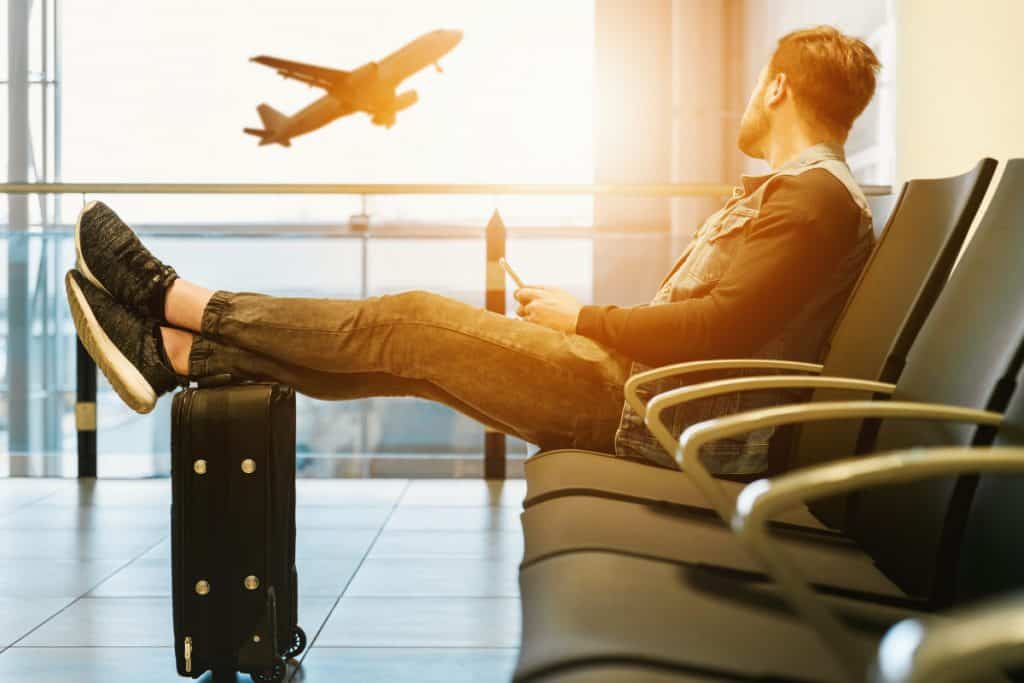
Transportation Travel Tips & Hacks
1. Flight booking hacks. One of the biggest initial costs when travelling is your flight ticket. So in order to travel cheap, use flight comparisons sites such as Kiwi . You may find booking directly through the airline is cheaper but always use a price comparison engine to check before you book.
Pro Tip : Make sure to clear your cookies and browsing history to avoid price increases. By searching for flights you are signalling to the world that you are looking to buy, so prices will then increase daily in order to get you to panic buy. Delete cookies or browse in incognito mode to avoid this. @import url('https://fonts.googleapis.com/css2?family=Inter&family=Inter:wght@500&family=Noto+Serif&family=Noto+Serif:wght@500&display=swap'); .tp_wrapper { font-family: 'Inter', sans-serif; /* the font, can be replaced with 'Noto Serif' */ max-width: 1024px; } .tp_content { background-color: #DEE9F0; /* main block background color */ padding: 24px 32px 32px; } .tp_subtitle { margin: 0 0 16px; font-size: 22px; font-weight: 500; } .tp_text { font-size: 17px; font-weight: 400; line-height: 145%; margin: 0; } .tp_button { display: inline-block; background: #2A243B; border-radius: 6px; box-sizing: border-box; cursor: pointer; color: #fff; font-size: 20px; margin-top: 24px; padding: 12px 32px; text-decoration: none; }
2. Try changing the home location of flight booking websites to see if purchasing in another currency is cheaper.
3. One of the cheapest ways to travel is through offering to get bumped off a flight in exchange for a flight voucher. These can be seriously rewarding! Companies will regularly overbook flights on the assumption that people will cancel or not show up. On those times when this doesn’t happen the airlines need to free up seats quick, and that’s where you step in!
4. For short trips choose carry on only or if you need to check baggage, pay for it online before you travel. Airlines will often charge more at the airport.
5. Save on rail travel costs by using railcards. I saved a ton through using the Japan Rail Pass during one visit, however they only save money if you use them to the full so do the research first. Also consider using overnight trains to save on accommodation costs. This works great in some countries such as India and is an awesome local experience too.
6. If you feel comfortable, consider hitchhiking. Alternatively, connect with other travellers at your hostel to carpool.
7. If you have a flexible plan, investigate relocating vehicles to get free or discounted car hire.
Consider renting a car with Rentalcars , an international car rental booking service that is present all over the world. With Rentalcars you will definitely find a perfect car for your perfect trip wherever you are.
8. When travelling for long periods save money through walking or using buses, instead of using expensive taxis. Use ride sharing apps such as Uber, Lyft, Cabify and Grab. Uber opened the door for cheap car journeys but now there are lots of different companies operating all over the world. Research which ones are best for the areas you’re traveling too and download the app before you go.
9. One of the biggest ways to traveling on the cheap by far, is to use an Airmiles credit card. Every time you spend money with that credit card you will be earning Airmile points which can be exchanged for flights. Just remember to always pay off your credit card every month to avoid high interest fees.
10. Create frequent flyer accounts with every airline you travel with then sit back and enjoy the rewards.
11. A top sneaky travel hack is to jump on airline price errors. Sometimes airfares can pop up at crazy low prices, often caused by a glitch in the Matrix (or something!). If you manage to purchase one of these flights the airline will often honour the incorrect price. Act fast and take advantage of these opportunities by following these ninja websites:
- Secret flying.com
- Jacks Flight Club (UK) or Scott’s Cheap Flights (US)
- The Flight Deal
12. Pack light and smart to avoid excess baggage fees. Roll your clothes or use packing cubes to save on space.
13. Take advantage of layovers to enjoy a quick city visit without any extra flight costs.
14. Try booking two one-way trips rather than a return. I’ve had success with this on flights and rail trips.
15. Keep receipts for gift purchases and claim back the tax at the airport before you leave the country.
16. Travel by campervan. If you’re looking to explore your own country (or continent), consider buying a campervan to combine your method of transportation with your accommodation. My campervan has been one of the best investments I’ve ever made and I can highly recommend it. For all the latest info on converting your own campervan check out my van life section .

Accommodation Travel Hacks
17. Get cheap or free accommodation through housesitting . With housesitting you will generally look after the persons house whilst they are away. Many housesitting jobs often include pet sitting.
18. Get free accommodation and learn all about life from a local through couch surfing .
19. Pick accommodation with free breakfast to save on food costs.
20. Choose private hostel rooms instead of more expensive hotels.
🏨 Where can I find the cheapest hostels?
You will definitely find the hostel you need with Hostelworld , the global hostel-focused online booking platform, inspires passionate travelers to see the world, meet new people, and come back with extraordinary stories to tell.
21. Use booking.com ‘s price matching promise to get the best price on hotels.
22. Travelling on a special occasion? Be sure to let your hotel know and they might offer you a free upgrade.

Work Abroad
23. Exchange work for accommodation and/or food with companies such as Workaway or World packers. Or, if you want to learn about organic growing, check out WWOOF .
24. Earn a passive income to support yourself whilst travelling. There are so many ways to get a side hustle going these days but some examples include;
- Selling your photos on stock photography websites such as Dreamstime or Shutterstock.
- Starting a website. Make sure you use a fast and reliable host. For my websites I use Siteground .
- Selling your photos directly with a website that does it all for you. I use Smugmug .
- Teaching English online.
25. Join a voluntary programme abroad for example VSO. Many volunteer programmes charge a fee and in return they will provide accommodation, food and training. There are volunteer programmes all over the world in all sorts of different professions. For example, I joined the American Conservation Experience as I was interested in conservation and wanted to explore the South West . Here are some other ideas to explore .
26. Work in a travel job, for example as a tour guide with Contiki, Exodus or Backroads. For adventure travel consider life as an Overland Leader. I’ve worked as an overland leader for severn years and have travelled extensively through Asia, Africa and the Americas. Read more about this job here . If you have a particular trade you can also work on cruise ships or private yachts.
27. Work abroad with a work visa. Below the age of 30 work visas for many countries are quite straight forward to get. Whilst in that country you can then pick up temporary work which is usually unskilled, such as fruit picking, retail or a bar work.
After a certain age, usually 30, some countries will still allow you to work but will require work visas for specific professions, for example as a ski instructor or scuba dive instructor.
Alternatively you could get your TEFL certificate and teach English abroad. This can also be done remotely, online.
28. Do your job online. Can your work be done remotely? Post Covid it seems like more companies are exploring this as a full time option so this could open new avenues for many. If you have a service that can be provided online you could also offer your services on Craigslist or Fivrr.
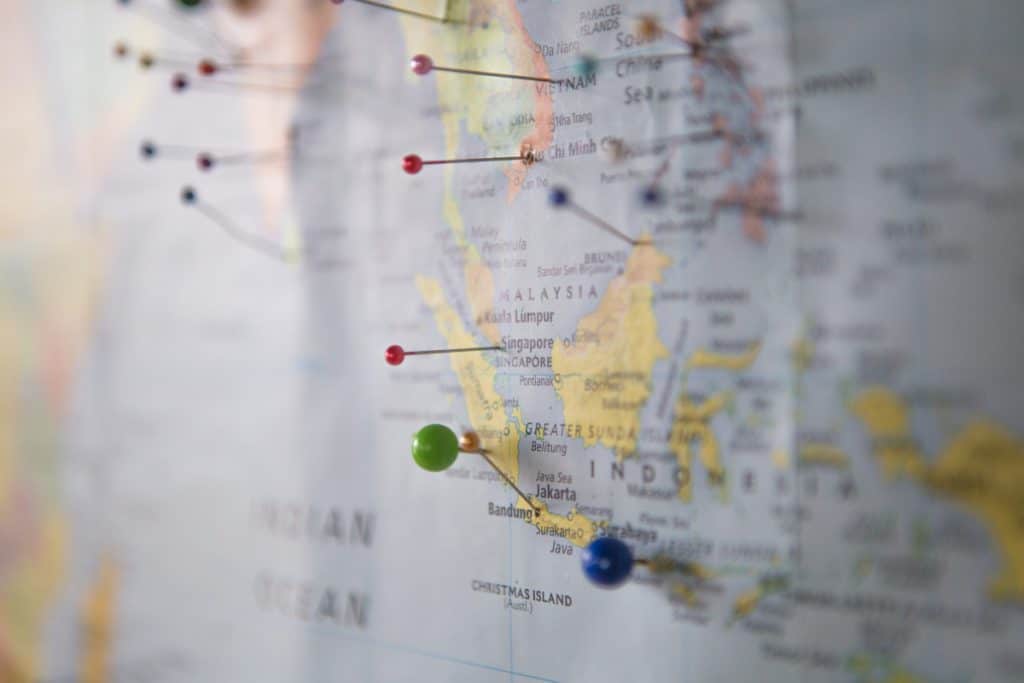
Destination Tips For Budget Travel
29. A cheap way to travel is to visit destinations where your home currency is strong. You’ll benefit from a strong exchange rate and from cheaper costs of living.
30. Whilst you’re on a tight budget, skip destinations with expensive visas.
31. Stick to one region at a time to avoid air travel costs. When I first went travelling I booked a round the world air ticket thinking I could see the world in 6 months. Boy did I have a lot to learn! Pick one region to fully explore first before moving onto the next. Don’t do what I did and be in a hurry to see everything all at once.
32. Travel during the shoulder season to benefit from lower costs and avoid the crowds at the same time – double win!

Food Travel Hacks To Save Money
33. Cook your own food. One of the best ways to travel around the world for cheap is to limit the amount you spend of food. Now don’t get me wrong I am a complete foodie and believe one of the best things about travelling is experiencing new types of cuisine. However, eating new types of food doesn’t mean going to the most expensive restaurants, in fact it’s often the opposite. But travelling on a limited budget does mean it’s not possible to eat out everyday since the cheapest way to eat often involves cooking your own food. Therefore choose accommodation with kitchens included such as hostels or rent an apartment.
34. Jump on happy hours and all you can eat deals.
35. Eat out at delicious and cheap street food stalls with the locals.
36. Avoid restaurants near popular tourist spots as these will often be overpriced.
37. Limit your alcohol if you have a limited budget. Alcohol is often expensive and isn’t a necessity.
38. Use a filtered water bottle and never buy water again. Check out this guide to discover which filtered water bottle I recommend for travel .
39. Stealth budget travel hack: Use chewing gum or tic tac containers to transport your favourite spices. Cheap food doesn’t have to be bland!
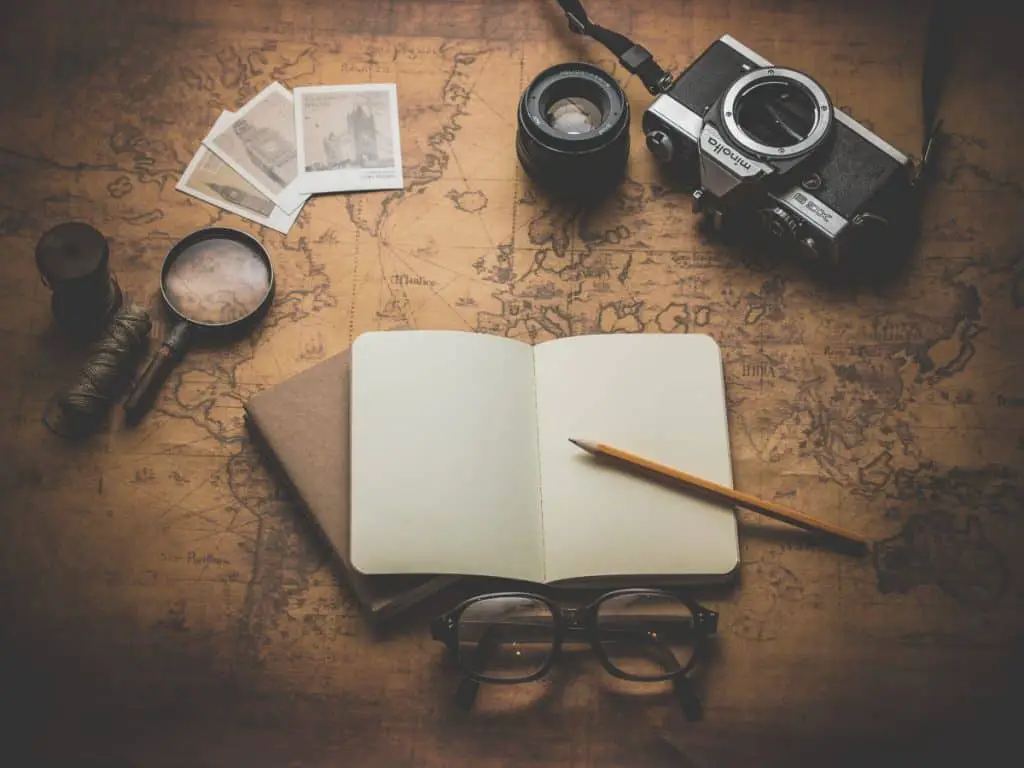
Planning Tips For How To Travel On The Cheap
40. Set a budget and stick to it. But be sure to include a generous contingency to allow for times when things don’t go to plan or to cover a once in a lifetime opportunity if it arrises.
41. If you are travelling on a tight budget you need to make a plan before you leave. List your priorities before you set off and refer to the list once you’re on the road. That way you won’t get sucked into doing expensive tours that you weren’t interested in anyway. Check out Google Maps Trip Planner for a great free trip planning tool.
42. Research whether activities you want to enjoy are cheaper to book in advance or are best left open and flexible. Last minute trips can sometimes work out cheaper.
43. If you don’t want the hassle of planning a trip use a travel agent. They know what they’re doing and can often find you the best deals.
44. Get smart and savvy with city tourist cards which provide entrance fees for multiple sites. If you know you’re going to visit all the top sites these will definitely save you money overall.
45. Enjoy free city walking tours. I’ve enjoyed great free city tours in Galway and Yerevan to name just two. But of course they’re not completely free – don’t forget to tip!
46. Research entrance prices beforehand to avoid getting scammed. However, just be aware of what the local currency is doing as prices can jump up if a currency weakens.
47. Follow your favourite travel companies on social media to learn about special promotions or giveaways.
Money Top Tips For Traveling Cheap
48. Get smart on money Exchange. Never change money at the airport or at busy tourist spots as these will have the worst rates. Hotels or hostels may also offer exchanges which again typically aren’t the best rates but they are safe and convenient so way up the risks/benefits of both.
49. An easy but important cheap way to travel is to use a travel card or join a bank with no overseas fees. This way you can hit the ATM without getting hit with overseas withdrawal fees. I use Starling Bank which is an online bank. All of my transactions are managed online via an app. Also, if purchasing online, they don’t charge for overseas transactions and have decent exchange rates.
50. Haggle but don’t be a d**k! Some cultures embrace bartering, expect it even, but these local people also have to support themselves so don’t be the person that walks away from a purchase for the sake of a dollar!
51. Use donatefull.com or groupon.com to find best coupons or use wikibuy to apply coupon codes at checkout.
52. A top life hack for travelling is to purchase a Scrubba bag and save on laundry bills. This nifty little bag packs down really small so doesn’t take up any room in your luggage and with just a 3 minute shake, can wash your clothes as good as any washing machine!
53. Keep rechargeable batteries in the fridge or at least in shady places. Rechargeable batteries retain 90% of their full charge if they’re kept cold. Not freezer cold though as this will have the opposite effect.
Phone and Internet
54. Get a local sim card and avoid hefty roaming fees. In some countries these can be a rather involved process but for most it’s quite straight forward. You often need your passport to register the sim card.
55. Use offline maps to save data. I use maps.me for most places when I’m travelling.
56. Consider investing in your own wifi router if you require a good connection. In our campervan we use this super fast Huawei wifi travel hotspot which allows us to connect multiple devices in areas where signal is typically poor.
Travel Insurance
57. Last but by no means least, get yourself some good travel insurance. Travel insurance can be expensive for long trips but you just never know when you might need it. The world of insurance can be a minefield but the guys at SafetyWing do great deals for long term travel through allowing you pay on a month by month basis. I highly recommend checking them out.
Summary On How To Travel The World Cheaply
Travelling around the world cheaply can do be done in many ways but it often requires a good amount of planning in advance. Be prepared for your trip through investigating the best deals, signing up for Airmile credit cards and joining frequent flyer programmes. Consider exchanging work for accommodation and reduce food costs through cooking your own food. Ensure you have the best bank cards to avoid big transaction fees, choose destinations where your currency is strong and use local Sim cards for the best phone and internet deals.
Through incorporating even just a few of these cheap travel tips you’ll be well on your way to exploring further, for longer 🙂
Join my newsletter today for more travel tips!
By checking this box I consent to the use of my information provided for email marketing purposes.
Louise is a Mountain Leader and Snowboard Instructor from South Wales. As a former Adventure Tour Leader she has spent the last 15 years travelling Asia, Africa and the Americas. Louise is a published photographer and is currently based in the UK.
Recent Posts
Discover All The Best Things To Do On The Turquoise Coast Of Turkey
Turkey's Turquoise Coast, also known as the Turkish Riviera (Türk Rivierası), is a gem nestled between the azure waters of the Mediterranean Sea and the rugged Taurus Mountains. Stretching 600...
The Best eFoiling Destinations For Beginners
Imagine gliding effortlessly over the water, powered by the wind and waves, but with a futuristic twist. Welcome to the world of eFoiling - a dynamic blend of traditional water sports and...
- Share full article

Travel 101: Our Favorite Hacks, Hints and How-Tos
Successful trips take thorough preparation, from picking the right destination to nailing down all the details. We’ve done the homework so you don’t have to.
Credit... Dani Pendergast
Traveling is exciting, fulfilling and even life-changing. Planning to travel can be stressful, confusing and overwhelming. What should you pack? How can you arrange that big trip with friends and not end up enemies? How do you get to your destination when cancellations and delays conspire against you?
This new series, Travel 101, is designed to help. We’ve talked to the experts, read the fine print and dived deep into the details to offer actionable, practical solutions that will help you maximize the joy and minimize the headaches. We’ll be adding to this guide regularly to create a compendium of advice you can turn to at each step along the way. Bon voyage!
Tips for Parents on Kids Flying Unaccompanied

For many parents and guardians, putting a child on a flight alone may seem terrifying. Belligerent passengers, delays, turbulence: All loom large in a caregiver’s imagination.
Life sometimes leaves no other option. Hudson Crites , 17, of Marshall, Va., was 10 when he started flying unaccompanied to visit his father in Kansas and later Georgia, said his mother, Chelsea Tippett. But the extra attention from airline staff made Hudson “feel special,” Ms. Tippett recalls. Other than a single tarmac delay, he has had no problems.
On rare occasions, children have had troubling experiences. In December, Spirit Airlines accidentally flew a 6-year-old to Orlando, Fla., instead of the intended destination of Fort Myers. Spirit apologized, fired the gate agent responsible and offered reimbursement to the boy’s grandmother for her travel to Orlando. But while the boy was unharmed, his grandmother expressed worry that he had been kidnapped .
If you decide to fly your child unaccompanied, you’ll discover that each airline has its own procedures, fees and routes open to children. While some may find the process complicated, flying alone may be exciting for your child, instilling some independence. Here’s what you need to know.
Before you book, know the process
Regardless of the airline or route, flying an unaccompanied minor differs from an adult or a family catching a flight. Airlines require a trusted pre-authorized adult to be at the departure and arrival gates, and will ask you at booking to provide contact information for those adults. They will also need to present identification at the terminals.
The journey begins at the originating airport’s airline ticket counter. There, airline staff will check your identification and check in the child, perhaps handing them a lanyard or wristband to wear. The agents will provide you with a pass to get through security with your child. You will accompany them to the gate, where you will hand them off to a gate agent. You must stay at the gate until the plane takes off.
In the air, the flight crew will keep watch — but will not babysit, or sit with, your child. If the flight has a connection, a crew member will walk your child off the plane and a gate agent will take him or her to the next gate.
At the arrival airport, the child will be handed off by staff to the authorized guardian or parent who should have already checked in at the ticket counter with proper identification, gone through security with their gate pass and be waiting at the gate.
To learn more about this process, read the Department of Transportation’s online guide, “When Kids Fly Alone,” followed by the website of your selected carrier.
Choosing an airline and paying an extra fee
Before purchasing a ticket, experts advise you to consider an airline’s on-time performance. “Solid on-time performance is hard-earned, and signals a carrier that has tight control of its operation,” said the Ask the Pilot author, Patrick Smith. The Bureau of Transportation Statistics has those numbers.
Booking procedures vary. Delta Air Lines and American Airlines require you to call. United Airlines allows bookings online. JetBlue Airways does online bookings, too, but asks for three printed copies of its forms upon arrival at the airport.
International flights may call for a notarized consent letter describing where the child is traveling, with whom they’ll stay and how long they’ll be there.
On top of the ticket fare, flying an unaccompanied minor can be pricey.
Southwest Airlines charges $100 one way for each child, regardless of distance. Alaska Airlines charges $50 per child if the flight is nonstop; a connection adds $25. On Delta, one $150 fee will cover up to four children, and American’s $150 covers all siblings, with no cap on number. United charges $150 for one child, or two children flying together.
Restrictions: There are plenty
U.S. carriers allow children to fly as unaccompanied minors once they turn 5 and before they turn 18. But regardless of your child’s age, make sure he or she is ready by discussing the trip details and your expectations of their behavior. No policy can replace your judgment.
The low-cost carriers Frontier Airlines and Allegiant Air don’t allow unaccompanied minors, Other airlines have restrictions that, in the broadest terms, differentiate between young children and teenagers. American and Delta restrict children under 8 from routes requiring connections. Both airlines allow children between 8 and 14 to take some connecting flights.
On American, no unaccompanied minor is allowed to take an overnight flight requiring a connection, or a flight that includes a connection on its final leg that also happens to be the last such flight that day (“unless it’s the only flight,” the company adds). Minors are not allowed on code-share flights.
United and Delta have similar rules. Southwest, JetBlue and Spirit don’t allow unaccompanied minors on connecting flights.
JetBlue prohibits minors from flying to Europe, and limits the number of unaccompanied minors in one party to three. Spirit does not allow children on flights to Central or South America. Southwest doesn’t allow children on any international flights. American, United and Delta let minors fly abroad, but restrictions on connections, code-shares and overnights limit options.
American and Delta allow children to opt out of flying as unaccompanied minors once they turn 15 — that is, the child can fly without the assistance of airline personnel. JetBlue ends unaccompanied minor service at 14, while Alaska has an opt-out option at 13. Southwest boasts the lowest opt-out age: 12.
However, you should be able to accompany your child to the gate even if they’re not flying unaccompanied. American requires that you do so for teens between the ages of 15 and 17, even if they’ve opted out.
What to pack
Have a plan to head off your child’s hunger, boredom and thirst. If they are older, make sure they have emergency money and a charged phone.
When her two daughters, then 9 and 11, flew to Denver, Joey Conover of Charlottesville, Va., had a long list for their carry-ons.
“Pack a backpack with iPad, headphones, lightweight book to read, a pad of paper and colored pencils (markers might smear), a small travel game, water bottle (bring empty and fill in airport), snacks, some kind of surprise fidget or animals to play with, hoodie, and a lovey,” she wrote in an email.
“Write your name and phone number on the inside of their arm in Sharpie and put a parent’s business card in a luggage tag on both suitcase and backpack,” Ms. Conover said. (A sheet of paper with all their identification, and their guardian’s contact information, also works. Simply stick in an easy-to-access pocket.)
Vacation Rentals: How to Shrink Your Carbon Footprint

Travelers choosing to stay in a vacation home instead of a hotel may have to spend more time searching for sustainable lodgings, but ultimately they will have more control over their environmental impact. The following are steps short-term renters can take to shrink their carbon footprint.
Search for sustainable rentals
The company Sustonica validates short-term rentals based on sustainability standards, including conserving water and minimizing waste. But it does not act as a search engine. Instead, travelers will find its logo on certified listings on platforms like Airbnb and Booking.com.
Airbnb’s rental categories can help travelers find off-the-grid options, highlighting more than 9,000 listings that rely on renewable energy sources or have no electricity, and Earth Homes , a set of accommodations built with organic materials such as mud or rammed earth.
Booking.com, which lists vacation homes as well as hotels, allows travelers to search for listings with sustainability certifications from more than 65 organizations doing third-party reviews of practices ranging from renewable energy sourcing to recycling.
The company said that more than 16,500 properties, a combination of hotels and rentals, have separate, third-party sustainability certification.
The vacation home rental platform Vrbo does not have an eco-friendly search filter, citing the lack of industry consensus on what makes a rental more sustainable. Properties listed by its sibling agency Expedia may say they are “eco-certified” and users can search using that filter. But read the results carefully; some listings lack information on their sustainable features.
Wherever you search, scrutinize the listings, said Bob Garner, the founder of EnviroRental , a service that works with short-term rental owners on sustainability practices. Do bathroom photos show shampoo in large, shareable dispensers? Does the description mention recycling? If the host has a separate website, look for press links or blog posts related to sustainability.
Talk to the host
According to Airbnb, more than 80 percent of its hosts say they incorporate at least one sustainable feature, such as composting, minimizing single-use plastics and providing guidance on using public transportation. The platform maintains a guide for hosts on sustainable tourism practices, with tips on things like creating a manual to direct travelers to local shops, restaurants and markets.
“When you think you’ve found the right property, ask some questions,” Mr. Garner said. “If they can’t answer them, then there’s a red flag.”
Just the act of asking about environmentally friendly features can have a lasting effect.
“If they think you care, there’s a greater chance of moving the needle,” said Diane Daniel, the founder of Vacation Donations , a nonprofit that encourages short-term renters to donate leftover food in the Tampa, Fla., area.
Consider a pedestrian- or public-transit-friendly location
Even if you can’t find a solar-powered stay, you can choose a location that allows you to get around with minimal emissions.
Connect your “environmental consciousness with the idea of being a good traveler,” said Beth Santos, the chief executive of Wanderful , a global women’s travel community, and the author of “Wander Woman: How to Reclaim Your Space, Find Your Voice, and Travel the World, Solo.”
She recommends travelers live like locals, including taking public transportation, visiting neighborhoods beyond city centers and patronizing small businesses. Take a “day zero,” or a single unscheduled day to walk the neighborhood to find nearby shops as well as transportation options.
Conserve energy
Conserve energy by turning air conditioning off or down when you’re out, switching off lights when you leave and turning off the tap while you brush your teeth.
“This could be one area where you say, ‘I don’t care, I’m on vacation,’” Ms. Daniel said. But travelers should stay vigilant, she said. “Short-term rentals are the easiest places to regulate your footprint, because it’s really up to you.”
Plan meals, reduce waste
Renters usually have the option of cooking meals. To avoid food waste , plan meals and shop for them as you go — and as plans change — rather than buying everything at once. Bring staples like salt and pepper and ask the host if the kitchen is stocked with other supplies like cooking oil and coffee.
“Buying slowly over the week as you need things is a really nice experience if you’re in a location where they’ve got some nice delicacies and interesting farm shops,” Mr. Garner said.
Ms. Santos of Wanderful recommends packing a collapsible food container. “You can throw it in your luggage, take home leftovers and have a place to reheat them,” she said.
Donate leftover food
Take as much leftover food home as you can and look for food pantries that accept donations for whatever you can’t take.
“Perishables are very challenging unless you’re near a pantry that takes them and is open when you’re checking out,” said Ms. Daniel of Vacation Donations.
Don’t assume the cleaner wants your food. In a pinch, Ms. Daniel recommends knocking on neighbors’ doors if you’re staying in an apartment building, or searching Facebook for local groups seeking food donations.
Consider ‘community offsets’
Carbon offset programs invest in activities like tree farming that reduce carbon in an amount matching the emissions generated by a trip. But it’s a controversial practice that has led to inflated, if not bogus, claims of carbon mitigation.
Instead, consider donating your time to a local cause in the area where you’re renting.
“Community offsets or volunteering work are opportunities to spend two hours one morning of a holiday to help in whichever volunteering work there is in this local area, from picking up trash to feeding homeless people,” said Vanessa de Souza Lage, the co-founder and chief executive of Sustonica.
Advertisement
Travel Advisers: When to Let a Professional Plan Your Trip

Decades ago, your vacation most likely began with a visit to a travel agent, who relied on a combination of expertise and connections to find the best deals on plane tickets, hotels, tours and more. Since then, the internet has turned most of us into our own travel agents, and artificial intelligence software is making research and self-booking even easier. But for some trips, that special insider knowledge can still make a big difference.
So when should you hire a professional, and how does it all work? Here are some tips.
Why should I consider a travel adviser?
It’s easy for a traveler to do the research for a standard trip, said Chris Anderson, a professor at the Cornell University School of Hotel Administration, “so they should look for a specialist for the type of tour they are looking for, say a bike trip in Ireland, who can really add value.”
The insider knowledge offered by a travel adviser can add the most value to trips that have multicity itineraries, involve a wide age range of travelers , are very significant (like an anniversary vacation) or are to destinations you are unfamiliar with, said Gary R. Johnson, who has run the travel agency Woodside Travel in Seattle for nearly 30 years. An adviser could help you decide, for instance, in which order to visit European cities based on local events and transportation options.
What can an adviser give me that a booking site can’t?
Travel advisers can help you research the best destinations, lodging, or activities for your particular group and travel goals, offering up specific advice that might be hard or time-consuming to find yourself. Those specializing in cruises might know which cabin to choose if you are prone to seasickness, while a safari planner could help you decide which park would be best for bird-watching or seeing specific animals, like rhinos.
Travel advisers typically have relationships with tour companies, hotels and cruise lines, sometimes through networks. Those connections can allow advisers to offer extra perks such as late checkout, free breakfast, airport transfers, a welcome basket or a credit to spend on a cruise ship.
“A good travel agent will be a better steward of your travel budget than you are,” said Guy Rubin, managing director of Imperial Tours , which arranges travel in China.
When bad weather or other circumstances disrupt your itinerary, travel advisers often have direct lines of communication with providers and can do the work of rebooking and changing plans, saving you time and stress.
OK, let’s say I need help. How do I find an adviser?
Networks like the American Society of Travel Advisors and Travel Leaders have websites that can help you start your search for a travel adviser by answering a few questions about your desired trip. Once you have a handful to choose from, get on the phone with them to talk about what they might do for you, how they charge and the level of service you can expect. Special trips can cost thousands of dollars, so it’s worth investing time up front, Mr. Rubin said.
Make sure to read over the travel agent’s reviews and any user-generated social content that mentions them, Dr. Anderson said. “If there is no external validation, that’s a red flag.”
How do advisers get paid, and how much will it cost me?
Advisers receive commission from suppliers, typically 10 to 15 percent of the price, when selling cruises, lodging and tours. They also sometimes charge travelers a planning fee, from a few hundred dollars, which may be credited to the final bill if the booking is completed, all the way up to tens of thousands of dollars annually for a luxury concierge travel planner they can call on all year. Mr. Johnson said that he charges a planning fee the first time he works with customers. If they return for other trips, he waives the fee.
Advisers may be tempted to sell you something that will earn them a higher commission, Dr. Anderson said. But, he points out, the same is true for the large online services, which promote hotels that pay them larger commissions. Travelers can ask advisers about specific commissions they receive or how they are affiliated with the products they are recommending, he said.
Sometimes a local tour company will package transportation, lodging and experiences for an adviser, who tacks on a percentage before passing it along to a client. But a bill that is not itemized can make it harder to make trade-offs — between a more expensive hotel and a special experience, for example. If pricing transparency is important to you, discuss it with the adviser up front.
How are A.I. and other technologies affecting travel advisers?
While new technologies are allowing do-it-yourselfers to create their own itineraries online based on individual preferences, and to type questions directly into travel websites, advisers are also taking advantage of those technologies to improve their services. Joan Roca, chief executive of the upscale travel planning company Essentialist said his team “uses technology to enhance the human touch,” employing artificial intelligence to choose options from a database of travel offerings selected by a human team. If a couple wants to take an after-dinner stroll, for example, Essentialist’s app will offer up ideas of where to go, based on what part of the city the travelers are in and conversations they’ve had with their travel adviser.
Drone Photography: How to Take Better Pictures

Before the advent of drones, people had to rely mostly on airplanes or helicopters to take aerial photographs. Now, thanks to increasing availability and decreasing price points of drones, as well as advances in obstacle avoidance technology, GPS navigation, battery life and camera stabilization, it certainly seems easier to take photographs from higher elevations.
But that doesn’t mean anyone with a drone can make excellent photographs. Here are some practical tips on the logistics of drone usage and suggestions to make better photos while traveling.
First, know the rules
In the United States, the Federal Aviation Administration oversees drone regulations, and FAADroneZone is the country’s official website for understanding drone requirements and managing drone services. If you are a recreational flyer, you must pass an aeronautical knowledge and safety test, called the Recreational UAS Safety Test , before flying your drone.
The drone company DJI also has a detailed website that instructs drone users on local rules and regulations.
The basic rules for flying a drone as a hobbyist — that is, recreationally using a drone — are to fly the unmanned aircraft only at or below 400 feet, always keep the drone in sight, do not fly in restricted airspace and do not fly over groups of people. If you are flying your drone commercially, you must become a certificated remote pilot by passing the F.A.A.’s Part 107 test . This is a more extensive test and covers additional drone rules, airspace regulations and weather conditions.
Be aware that many countries may have different regulations. Anywhere you go, you may be fined or your aircraft may be confiscated if you do not adhere to the rules.
Understand what your drone can do
Drones are incredibly fast, maneuverable and precise. You can fly up to 400 feet and move laterally in an infinite number of directions to get the perfect shot. But first-time drone flyers often fly as high as possible and take pictures that lack a point of focus or a strong composition.
In order to get photos with the most detail, set your drone to the lowest ISO, usually 100. This is the feature that sets the camera’s sensitivity to light and was known as the film speed back in the days of film. To achieve the best quality pictures, it’s best to shoot in RAW format, which is a digital image file that is unprocessed and contains the most amount of data. When processed, this will produce photographs with the most detail.
After you have purchased your drone, it’s good practice to regularly update the firmware, which is software that provides basic instructions for the craft’s hardware to function successfully, like the drone and remote controller working together.
Use maps and the weather forecast, and time it right
Whether you consult an atlas or follow your car or phone’s navigation, maps are very effective tools for seeing the shape of a river, lake or pond and provide ideas for good aerial subjects.
Once you have a location, shoot during the “golden hours” — taking photos around sunrise and sunset will often produce the most dramatic pictures with warm light and shadows. It’s a good idea to keep an eye on the weather forecast to know the sunrise and sunset times and also what the weather will be. High winds and rainy or snowy weather make flying a drone much more difficult.
Look for patterns, lines and light while flying
Many times a drone photographer will make discoveries from the air. You might launch with the idea of photographing one thing and, while in the air, you might discover something more compelling. Rivers, solar arrays, farm fields and trees can provide engaging patterns and lines.
And don’t forget the light and shadows, either. Good light can make or break a photo. Sometimes the best light means a golden sunrise, as we said earlier, but sometimes it means an overcast day with diffused light. On cloudy days, shooting straight down on a subject can be very effective.
Taking drone photos at twilight can also be very captivating. This is the time after sunset and before nightfall. Set the drone to manual exposure, set the ISO to 100 and experiment with long exposures. Some drones can take up to eight second exposures and maintain sharp focus.
Study an expert’s work
One of the great ways to make your photos better is to study the work of a professional photographer.
The photographer George Steinmetz has been making aerial photographs for decades — even before the rise of affordable drones — while working with publications like National Geographic and The New York Times. He has published five books on aerial photography.
“For intimate aerial photography, a drone is exceptional,” he said, but adding that any type of aerial photography can be transformative.
“You see the world in a way you’re not accustomed to,” he said. “It adds context and a new perspective.”
Renting a Car Abroad: Don’t Get Taken for a Ride

“Throw the keys through the kiosk’s open window. We’ll get the car when we open later”: Those slightly unorthodox drop-off instructions I once received from a Hertz manager in Croatia illustrate some of the differences U.S. travelers might encounter when renting a car abroad.
It pays to familiarize yourself with the local policies and protocols ahead of time. Here’s what you need to know before you accept the keys.
You may need an international driver’s license
If you have a U.S. driver’s license, an international driving permit is officially required (along with your state-issued license) in Australia, Austria, Bulgaria, the Czech Republic, Estonia, Italy, Japan, Poland, Romania, Serbia, Slovenia, Slovakia, Spain and Thailand, although its use is not universally enforced. It’s also a good idea to carry an I.D.P., a booklet — slightly bigger than a passport — that translates a U.S. license into 10 languages, when renting a vehicle in a country whose language is not written in Roman letters.
An I.D.P. costs $20, is valid for one year and is issued to any applicant by a local AAA office (the only issuer in the United States authorized by the State Department). You must apply for one in the country that issued your regular driver’s license.
Familiar brands may be franchisees
Car rental brands familiar to Americans operate throughout the world; those include Alamo, Avis, Hertz, National, Sixt and others. You can reserve a vehicle through a company’s U.S. website or through a rental aggregator such as Autoeurope.com , to compare rates.
The overseas branches of U.S. companies may not always be owned by the parent company. The discussion boards on websites like Tripadvisor abound with commenters calling out franchise operations of major chains for not providing the service they expect from a U.S. operation.
Franchise or not, disputes with a foreign branch should always be directed to the U.S. customer service operation, according to Hertz and Autoeurope.
Check minimum (and maximum) age requirements
The minimum age to rent a car varies by country and company, and it’s indicated on each rental agency’s website. Most countries charge a “young driver” surcharge for renters under 25. Some countries, such as France and Germany, allow (but do not require) companies to rent to 18-year-olds, but 21 is the typical minimum rental age for most.
At the other end of the spectrum, Hertz won’t rent a vehicle in Northern Ireland to anyone older than 79; those from 75 to 79 must have a doctor’s letter stating that they are in good health, as well as a letter from their insurance company proving that they haven’t had an accident within the past five years.
Cut costs with a stick shift
Cars with manual transmissions are still popular in many European countries, so if you’re comfortable driving one, select that option. Renting a car with an automatic transmission can typically cost an additional 30 percent or more.
Check your credit card’s rental insurance coverage
Many U.S.-issued credit cards cover damage to your international rental car if you’re in an accident, as long as you charge the entire rental fee to the card. Some issuers also require that the same card be used to make the reservation for the insurance to be valid. That collision coverage is primary, unlike in the United States, where your personal vehicle insurance would cover the costs while your rental insurance would pay for any deductible amount. Even if your credit card covers damage to your rental vehicle, you will be responsible for the cost of damage to any other vehicle if the accident is deemed to be your fault.
Be warned that standard rental insurance for American Express cardholders is not available in Australia, Italy and New Zealand, and other cards may have different restrictions.
Familiarize yourself with local driving and parking laws
Before you go, learn each country’s rules , including the meaning of various road signs and markings. For instance, simply because you see other vehicles parked with their wheels on the sidewalk — common in European cities with narrow streets — that does not mean that it’s legal to do so.
Autoeurope.com has driving tips for dozens of countries, not all in Europe, and Britain’s Automobile Association lists road rules for six European countries. Don’t forget that many places besides Britain drive on the left (including Japan, Australia, New Zealand, South Africa and numerous Caribbean islands). And if you get a ticket, don’t ignore it. The rental agency will eventually collect from you, along with an administrative fee .
Seatbelt laws are often strictly enforced, with a separate fine — sometimes issued on the spot — for each occupant not wearing one.
Finally, many European cities restrict driving in central or historic areas to residents only or those driving low-emission vehicles. Entering these limited-traffic zone areas can incur heavy fines, plus an added fee from your rental company. Watch for signs and gates (commonly marked “ZTL” in Italy ).
Know your fuels
Diesel engines are very common in other countries; putting diesel in a gas engine or vice versa can cause serious — and costly — damage .
While fuel pumps are color-coded to indicate what they dispense, those colors vary by country and region. Fuel requirements are listed on a sticker on the inside of the filler door.
In the United States, black indicates gasoline while green designates diesel. In Iceland and other European countries, it’s the opposite: green for gasoline and black for diesel.
Cellphones: Go Abroad Without Racking Up Big Fees

The horror story goes something like this: A family returns from a trip abroad, and the glow from the vacation has barely begun to fade when a cellphone bill with hundreds — or even thousands — of dollars in international charges arrives. The phenomenon even has a name: bill shock .
Smartphones have become an indispensable part of international travel. You can use them to check in at the gate, go through borders, find your way around a foreign city and pay for breakfast at a sidewalk cafe. Now, it’s easier than ever to use your phone just as you would at home without getting a big hit to the wallet.
There are two major options: You can get a data plan directly through your phone company or you can swap out your phone’s SIM card, a small chip that stores data about you and your carrier — on newer phones, you can use an app that does the same thing. Here are some tips:
Pick the right plan
The three biggest U.S. carriers all offer some version of an all-inclusive international data plan. The prices and countries covered vary. Some take effect automatically when you cross a border, and others require you to sign up before your trip. Almost all of them send a text message detailing your options when your phone connects to a foreign network.
AT&T offers the International Day Pass for $10 a day, allowing travelers to use their phones much as they would in the United States. AT&T automatically adds a day pass when customers with unlimited plans connect to the network in a foreign destination.
Customers with this plan can use their phones for as many days as they want, but they’ll be charged only for a maximum of 10 days per billing cycle. The plan covers about 210 destinations. (Canada and Mexico are included in unlimited plans.) Some exceptions: Cuba and the Maldives.
Verizon has a similar offer: TravelPass , which gives customers who have Unlimited Plus, Unlimited Welcome and other unlimited plans the ability to talk, text and use data for $10 per day (there is no cap on how many days you can be charged in a billing cycle), or a monthly $100 pass . The first 2GB of high-speed data each day is included; after that, travelers get unlimited data at a slower speed.
Unlimited-plan customers heading to Canada or Mexico do not need to buy TravelPass, but for all other plans, a day pass for those countries costs $5. TravelPass covers about 210 international destinations. Exceptions: Cuba and the Maldives.
T-Mobile automatically includes international coverage at no extra cost in its most popular plans, said Mike Katz, president of marketing, strategy and products. Depending on the plan, it includes unlimited texting in over 215 destinations worldwide and 5GB of high-speed data per billing cycle (but most phone calls cost 25 cents a minute). As with AT&T and Verizon, Cuba is not covered, but the Maldives is.
T-Mobile travelers needing more high-speed data or free calling can upgrade with day passes , starting at $5 (unlimited calling, and up to 512MB of high-speed data). For longer stays, a 30-day plan with up to 15GB of high-speed data costs $50.
Swap your SIM
Subscriber identity module cards — tiny, removable chips that link a phone to its owner’s network and phone number — offer another way to save money while you’re traveling , especially if you’re taking an extended trip or using a large amount of data. Instead of signing up for a U.S. provider’s international calling plan, you can buy a local SIM card, usually as part of a pay-as-you-go or prepaid package, usually at a cheaper rate. Rates vary depending on the provider, country and offerings.
If you have a newer model of phone, you probably don’t even need to swap out — and keep track of — physical SIM cards: You may have built-in eSIM capabilities instead.
Apps like Airalo provide affordable eSIM options for hundreds of destinations around the globe. Airalo’s options include Discover Plus , a global plan that includes 10 text messages, 10 calling minutes and 1 GB of data, starting at $15 for seven days. There is also a regional plan (covering places like Europe), starting at $5 for seven days, and a local plan (for only one country), as low as $4.50 for seven days.
Two caveats to SIM swapping: Your phone generally must be unlocked (not tethered to a specific carrier), and you will usually receive a foreign phone number when you set up the new SIM card, so make sure to share that number with anyone who needs to contact you. (Your regular phone number will go to voice mail.) If you use an eSIM and your phone has Dual SIM Dual Standby technology, you may still be able to use your regular number .
Tailor the technology
There are a few technological precautions travelers can take to avoid bill shock.
First, control your data use by turning off data roaming in your phone’s settings when you don’t need it. You can also download maps when you have Wi-Fi and then use apps like Google or Apple Maps in offline mode. You can also squelch data-gulping apps individually by toggling off their access to cellular data in your phone’s settings.
Finally, consider using secure Wi-Fi (be wary of public networks) to make calls on services like FaceTime or WhatsApp to avoid voice or long-distance fees.
How to Survive Long-Haul Flights

Long-haul flights are generally considered to be those eight hours and over, while any that stretch past a grueling 16 hours are nicknamed “ultra long-haul.” The longest nonstop commercial flights currently available include New York to Singapore (18 hours and 50 minutes; 9,530 miles) and Perth, Australia, to London (17 hours and 45 minutes; 9,010 miles). Qantas Airways, Australia’s national airline, plans to operate two even longer direct flights in 2025: Sydney to London and Sydney to New York — routes that will take up to 20 hours.
For travelers, flying at 35,000 feet for an extended period of time comes with its own set of challenges, including little space for movement, dry cabin air and time zone changes.
Though extreme long-haul air travel never gets easier, there are some things you can do — before, during and after your flight — to make it slightly less terrible.
Jennifer Bagnall, 40, a communications executive who often flies between her home in Los Angeles and Sydney, believes reframing the experience in your mind is an essential first step.
“Instead of approaching it as a long stretch of time in a confined space without escape, I think about how it’s a long stretch of uninterrupted time with no responsibilities and where I can’t be contacted,” she said. “It’s so rare you get that.”
Pack your carry-on smartly and strategize early
You’ll most likely be checking your luggage, so your carry-on bag will need to be well equipped. As well as any items you’re going to use for entertainment, think ahead to what will help you feel the most comfortable. Packing a change of clothes (if there is a stopover, you may be able to find a shower in the airport) as well as a toothbrush and toothpaste will go a long way to helping you feel fresher during your journey. Make sure you’re wearing comfortable clothing and a pair of compression socks to combat swollen feet from so many hours with little physical activity.
“Wear a hoodie,” recommends Nikki Greenberg, 40, a futurist and innovation strategist from Sydney who frequently travels internationally for work. “It is cozy, warm, covers the ears (less noise) and eyes (less light for sleep), and creates a private cocoon environment.”
Find a way to sleep as much as possible
Do anything and everything you can to make sure you spend a large chunk of the time onboard asleep. Some travelers consider sleeping pills or melatonin supplements as must-haves, while eye shades and noise-canceling headphones can reduce cabin lighting and help to dull the roar of the plane. A travel pillow like the Trtl Pillow , which supports your neck, can help when trying to sleep in the upright position.
Mapping out your sleep schedule ahead of time can also be useful, depending on when your flight or flights are departing. Vanessa Quincey, 33, an advertising director from Melbourne, Australia, who has lived in New York for the past decade, stays awake for the shorter leg of her journey — New York to Los Angeles — to ensure she’s extra tired for the long second leg to Melbourne.
“Purchase a ‘Do Not Disturb’ eye mask if you plan on sleeping through meal service,” she said. “The mask will block out the overhead lights, and the ‘do not disturb’ will let the cabin crew know not to wake you.”
Save up entertainment
Plan how you will fill the rest of the time onboard: A 10-episode narrative arc of a TV series will stretch out a lot longer than one movie. You can look ahead on the airline’s website to see what in-flight entertainment will be available on your flight. Be sure to download TV shows, movies, podcasts and music onto your devices before you get to the airport and have to rely on spotty Wi-Fi. Bring a good book you’ve been meaning to read. Have some offline games you can play on your phone or iPad. And don’t forget a backup portable charger.
Patrick Quade, a 52-year-old tech founder from New South Wales in Australia, has done the trip between the United States and Australia more than two dozen times. He recommends setting a goal that takes longer than 20 hours: “Learn Adobe Premiere well enough to make a three-minute short with edits and sound track.”
Never stop hydrating
The air onboard is extremely dry. Pack a decent moisturizer, lip balm, lubricating eye drops and a small nasal spray. Try to avoid alcohol and drink as much water as you can throughout the flight: Bringing your own empty water bottle to fill up at the airport after customs can help with this goal. Powdered vitamins or electrolytes can be added to your water to maximize hydration.
Move when you can
Many people prefer an aisle seat so they are able to get up frequently without disturbing their seat neighbor. Ahead of booking, research the layout and model of planes on websites like SeatGuru to find the most legroom. Do some stretches while you’re waiting in line for the bathroom and walk a few laps of the terminal during a layover to get your blood moving.
Think ahead to your final destination
Without a doubt, the most important thing is to never, ever take a nap if you land during the day, as tempting as it is after a grueling flight. “This is really tough flying to Australia because you usually land early in the morning,” says Nathan Weinrich, who has been traveling home to Australia from New Jersey for eight years. “But it makes a huge difference to how quickly you adjust to the new time zone.”
Tips for First-Time Cruise Passengers

You’ve picked a ship, booked an itinerary and chosen your cabin, but even with the hardest part done, figuring out the ship’s layout and how to get a spot on a popular outing can be daunting. Here’s how to prepare for a smooth first sailing.
Familiarize yourself with the ship, even before you board
Ocean cruise liners are big, and each ship is unique, so get familiar with deck layouts and features before you board. Most cruise companies have detailed plans and videos on their websites and there are virtual ship tours by cruise enthusiasts on YouTube and social media.
Once you’ve checked in and found your cabin, go on a scouting mission, identifying key areas like the main dining room, pool and lounge area while keeping an eye out for hidden nooks. “The crowds are fun, but there’s going to be moments when you want to escape them and find a quiet corner to relax,” said Mandy Holden, a retired teacher from Florida who takes an average of five cruises a year. “Take time to explore the ship, you don’t want to find the best spots on your last day.”
Bring a carry-on
After you check your bag at the terminal, it may take several hours before it’s delivered to your stateroom. “Be sure to pack a carry-on with all of the essentials you might need during that window of time,” said Colleen McDaniel, editor in chief of the cruise news site Cruise Critic , who suggested including “medication, sunscreen, a bathing suit, a phone charger and other essentials that you’ll need as soon as you board.”
Sign up for activities in advance
Popular onboard restaurants, shore excursions and spa treatments can fill up quickly so book ahead. Many companies will let you book in advance through their website or app, but if not, head to excursion and activity desks soon after you’ve boarded.
“The theater productions are incredible and produced at a very high quality,” said Chris Thompson, an avid cruiser of 35 years based in London. “You can usually reserve a seat in advance for free, but if it’s booked up, try showing up 15 minutes before the start of the show when seats often become available.” Mr. Thompson also suggests going to a specialty restaurant on the first night when there is likely to be more availability. “Most people eat in the main dining room while they settle in, so chances are you’ll find a nice table at one of the special restaurants,” he said.
Bring your own drinks
Beverages are expensive on cruises and can add up. Many lines offer all-inclusive food-and-drink packages for a flat fee, which can save money, particularly for those who enjoy alcohol, but it’s also worth bringing your own. Be sure to check your ship’s policy as the rules vary from line to line, and passengers may be limited to a quota of beverages they can bring onboard. Many cruise lines have apps where you can check on your daily charges and make sure they are accurate. Taxes and service charges are usually added automatically.
Switch your phone to airplane mode
During your cruise, you will likely be crossing through several international telecom networks and could rack up significant roaming charges as your phone automatically downloads data. It’s best to keep your phone in flight mode and connect to the ship’s Wi-Fi if it’s included or if you decide to purchase a package, which usually ranges from $15 to $40 per day.
Catch a deal during a port stop
On longer cruises with several stops, it can be worthwhile to stay on board and make the most of the ship’s offerings during an excursion day. Many lines will offer deals on spa treatments, restaurants and activities during port calls and it’s a good opportunity to use the ship’s facilities when they are less crowded.
Know that your itinerary may change
Itinerary changes are common on cruise ships and could occur at the last minute. Factors like weather, wars and civil unrest can disrupt what ports you leave from or stop at, and cruise lines will either substitute a stop or spend longer at the next scheduled destination. Refund and cancellation policies vary between cruise lines, so read the fine print. Even if an itinerary change doesn’t result in a refund, some companies may offer cruise credits as a courtesy.
To have your trip fully covered, consider taking out travel insurance. “A cruise is an investment of money and time and should be protected,” said Stewart Chiron, a cruise industry analyst and chief executive of the news site cruiseguy.com . “Besides providing protection for cancellation, policies also cover for interruption, medical, travel delays, property loss and are worth serious consideration,” he added. “If itinerary is a major determinant, consider a policy covering ‘cancel for any reason’ in case of major changes.”
Don’t be shy
The idea of being in the middle of the ocean with thousands of strangers can feel intimidating, but it’s a great opportunity to meet new people, particularly experienced cruisers who can offer tips in real-time.
Cruise Critic has Roll Calls for guests on a particular sailing to join and chat with one another in advance. Passengers have also used Roll Calls to form groups to plan independently booked shore excursions, which can be cost-effective.
“But be aware,” said Ms. McDaniel of Cruise Critic, “If you’ve booked an independent shore excursion that runs late, the cruise line does reserve the right to leave without you if you’re unable to return to the ship in time.” She notes that the ship will wait if you’ve booked an excursion through the line.
Follow New York Times Travel on Instagram and sign up for our weekly Travel Dispatch newsletter to get expert tips on traveling smarter and inspiration for your next vacation. Dreaming up a future getaway or just armchair traveling? Check out our 52 Places to Go in 2023 .
How to Avoid the Pitfalls When Renting a Car

From getting a good deal to figuring out insurance requirements, renting a car can be a complicated, pitfall-prone experience. Here are some best practices to follow, from reservations through returns.
Compare prices and convenience of airport vs. nonairport locations
Prices vary widely based on the vehicle model and the location of the agency. Airport rentals, subject to extra taxes and fees, are generally more expensive.
Some cities are now charging similar fees if an agency is within 20 miles of the airport, according to Jonathan Weinberg, the founder of AutoSlash , a car rental platform. “Always check both,” he said.
If you’re flying and choosing an off-airport rental location at your destination, factor in the cost and convenience of transportation to the agency. Most have more limited hours than airport-based outlets, which could be important if your flight is delayed.
Don’t prepay
Many agencies offer discounts for prepayment. But prepaid contracts often incur fees if you cancel.
Most unpaid reservations are flexible, allowing you to cancel anytime with no penalty. Experts advise reserving early and then using the time before your trip to check prices. If they go down, you can cancel and rebook at the lower rate. Many agencies, including Budget and Dollar , offer best rate guarantees, meaning if you find a better rate on their cars elsewhere and they can verify the claim, they will rent you the car for 10 percent below that price.
The website AutoSlash will track your reservation at no cost and alert you to any price drop.
Maximize your memberships
Use memberships at the retailer Costco or the organizations AAA or AARP to get a discount at specific companies. Payoffs vary. If you’re strictly joining Costco to rent cars, it may take a few rentals a year to recoup the $60 membership fee.
If you join loyalty programs at Avis, Hertz or other major rental companies, which are usually free, you are entitled to express pickups, which means you can skip the line at the counter and go directly to your vehicle.
Consider alternative companies
Turo and Getaround act like Airbnbs for rental cars: Owners offer their vehicles to rent through company websites or apps. Turo, available in 11,000 cities in the United States, Britain, Canada, France and Australia, requires renters to work out where and when to pick up cars from their renters, though some owners will bring the car to you.
Available in more than a dozen cities in the United States, the app- and internet-based rental company Kyte , which has no brick-and-mortar locations, will drop off and pick up its cars, which are competitively priced, wherever you specify, at no extra charge. The contactless and app-based UFO Drive rents E.V.s in more than 20 cities in the United States and Europe.
At the counter, understand upgrade policies …
At traditional agencies, when the car you’ve reserved is not available when you arrive, it’s a common practice to give you the next-best available car at no extra charge. This may not always be made clear, and agencies have been known to ask if you want to upgrade for a fee. Before accepting, request your original class of car. If it is not available, you are entitled to a free upgrade.
Watch out for “manager’s specials,” which tend to be bargain leftovers. As agencies transition to electric cars, renters have ended up with surprise E.V.s that they didn’t necessarily want, according to Mike Taylor, the managing director of travel, hospitality and retail at the market research company J.D. Power.
… and know your insurance coverage
If you already have auto insurance, in most cases that coverage extends to a rental. Many credit cards also provide coverage against theft and damage as long as you use that card for payment. Check on both before buying additional coverage at the agency.
“Credit card insurance is only collision, not liability,” Mr. Weinberg said, noting liability insurance will add roughly $20 a day.
If you do not have insurance and are relying on a credit card’s coverage, pay attention to exclusions of certain kinds of car and peer-to-peer rental agencies like Turo.
“You want to avoid duplication of coverage, but you don’t want to go in thinking you’re fully covered when you’re not,” said Chuck Nardozza, the managing director of sales at AAA Northeast.
Most personal auto insurance will not apply to driving abroad, with some exceptions for Canada and Mexico.
Before driving off, document the vehicle’s condition
Look for damage, including dings and scrapes and upholstery tears. Take photos or a video to establish the vehicle’s condition at pickup. If there is damage, ask the company to document it in your paperwork.
Take photos again when you drop off the vehicle. Even if an employee reviews the car and gives you a receipt, you’ll have a record of its condition should a deeper review find any damage.
Before returning the car, buy gas
Fuel options include returning the car with a full tank or having the company refill it at what may look like attractive per-gallon rates. However, in the second scenario, you must buy a full tank.
“If you use three-quarters of a tank, you’re giving the rental car company a quarter tank of free gas,” Mr. Weinberg said.
When you return the vehicle, take a picture of the gauge showing a full tank. Companies have been known to tack on extra gas charges, and photographic proof usually wipes those charges away.
Return the car on time
A rental car day is usually 24 hours from the time you leave the lot. Anything later might incur another full day’s charge.
Even if you reserved a car from noon on pickup day to noon on drop-off day, if you arrive early and take the car at 11:30 a.m., you’ll be expected to return it by 11:30 a.m. on the due date. “They might give you a little leeway, but that window tends to be short, like 60 minutes or less,” Mr. Nardozza said.
Bedbugs: Vacation Without an Infestation

Bedbugs don’t just live in beds. In hotel rooms, these apple-seed-size pests can hide out in furniture, waiting for their chance to come out, usually at night, to feed on humans’ (and pets’) blood while they sleep. Their bites, usually painless, often occur in clusters or lines.
Although bedbugs generally pose minimal risks to health, said Bryon Backenson, director of communicable diseases at the New York State Department of Health, their bites can cause allergic reactions for some and, of course, they are a source of discomfort and anxiety for pretty much everyone else.
Here are some ways you can prevent bloodsucking stowaways from sneaking home with you .
When you arrive
Check your hotel room before you settle in, even if the room is spotless. The warmth, blood and carbon dioxide of humans are far more important to bedbugs than an unsanitary environment, according to the Environmental Protection Agency’s bedbug myth website . But, the website adds, clutter can help them hide.
When you first enter the room, immediately put your luggage in the bathroom, then do your bedbug inspection, advises Jody Gangloff-Kaufmann, a senior extension associate at Cornell University who focuses on pest management and has a doctorate in entomology.
Adult bedbugs are wingless and have six legs and a flat, oval body. They’re about the size of Lincoln’s head on a penny, according to the Centers for Disease Control and Prevention . The eggs are pearl white and about the size of a pinhead, the E.P.A. website says.
Thoroughly check the bedding, box spring, bed skirt, side tables and even the alarm clock, anywhere the bugs can hide.
“The first thing you might notice is the fecal stains that they leave behind, which is kind of like magic marker dots in fabric,” Dr. Gangloff-Kaufmann said.
Also check the headboard; some can be popped off the wall. If there is powder behind the headboard, Dr. Gangloff-Kaufmann said, that may a sign that the room has been treated for bedbugs in the past.
Pack a small LED flashlight you can use as you do your inspection. It will help illuminate any eggs or shells discarded during molting. Finally, check the rest of the furniture and any nooks or crevices — think baseboards, moldings and floors — around the room. A sweet, musty smell may also indicate the presence of bedbugs.
Commercial bedbug tests such as the swab-based TruDetx , which promises “reliable detection in just five minutes” may work, but do not have enough scientific studies backing them up, said Dr. Gangloff-Kaufmann. They can also provide a false sense of security, Mr. Backenson said.
If you find any evidence of bedbugs, do not stay in the room. Instead, contact the hotel staff, leave the room with your belongings and request a room in another part of the hotel — not adjacent to the infested one.
During your stay
Minimize the places a bedbug could hide by storing your clothes in sealable plastic bags. Some travelers also bring large, airtight plastic bags for their luggage.
A hard suitcase, Mr. Backenson said, may be a safer choice than soft luggage because it has fewer crevices where bedbugs can stow away. Always keep your luggage on a rack, away from the wall, or in the bathtub.
Do not sprinkle diatomaceous earth — a white, silica-rich powder that some travelers have deployed to desiccate bedbugs — in a hotel room, Dr. Gangloff-Kaufmann said, because it may contaminate the room and potentially even cause a scare if a hotel worker sees it and doesn’t recognize it.
Blasting your luggage or clothes with a hair dryer or a portable steamer, another popular tip, may not work because the temperature may not be high enough for long enough to kill the insects, said James Mulloso, vice president of Northeastern Exterminating in Brooklyn. Their eggs may take up to 90 minutes at 120 degrees Fahrenheit to destroy, the E.P.A. says on a web page for bedbug control .
Wiping down your suitcase with rubbing alcohol, another popular bedbug-fighting strategy, can help kill the insects if done safely in a well-ventilated area, Mr. Mulloso said, but keep in mind that rubbing alcohol is flammable, and it could be dangerous.
After you return home
After your trip, unpack your bags in the bathroom against a light-colored surface, so you can spot any bugs, the New York City Department of Health advises, then shake out the clothing in a bathtub or shower and vacuum out your luggage. Don’t forget to empty the vacuum and dispose of its contents.
Put your clothes in the dryer as soon as possible, the experts agreed, and run it at the hottest setting for at least 20 minutes to kill bugs and eggs.
If you think an item has been exposed to bedbugs and it cannot go in the dryer, seal it in an airtight plastic bag and leave it in a warm area for six months — the time it takes for the bugs to die from lack of water, Dr. Gangloff-Kaufmann said.
Wildfires: Stay Safe in a Warming World

Climate change is warming up the spring, lengthening the summer, and drying out soil and vegetation , leading to more frequent , destructive wildfires . This year alone, wildfires have left at least 98 dead on Maui , forced mass evacuations from several Greek islands , and raged across Canada, forcing an entire city to evacuate and fouling the air across North America. If you’re traveling in this environment — especially if you’re planning a trip to the outdoors — how can you stay safe? Here’s how to prepare yourself, and what to do in case of an emergency.
Realize that every season is now fire season
In years past, travelers could plan around “fire season,” steering clear of the hottest, driest times of year. But — as evidenced by the Marshall Fire , which ignited Dec. 30, 2021, then burned more than 1,000 homes near Denver — when it comes to fire, season doesn’t really matter anymore.
What matters is weather. Heat, drought, low humidity and wind can signal fire danger, so the National Weather Service checks for these conditions year-round and issues red-flag warnings for places that are at high risk.
No matter the season, watch for those warnings. Lori Moore-Merrell, the United States fire administrator, whose agency supports and strengthens fire and emergency medical services, also recommends chatting with a local authority — for instance, a park ranger or a firefighter — “to kind of just say, ‘What’s going on today? What are you hearing? What are the conditions?’” That will help you gauge the risk level, and know what to monitor.
Check out the National Interagency Fire Center’s National Incident Map , FireWeatherAvalanche.org and CalTopo.com for real-time fire maps. You may also want to follow the social media accounts of the cities, counties and parks you’ll be visiting, as these accounts often deliver real-time information.
Prep your phone
Your device could save your life in a wildfire, but not if its battery is dead. Ensure yours works when you need it by bringing a charger that doesn’t need a wall or a car socket, such as one powered by the sun .
Both FEMA and the American Red Cross have free apps that you can customize to receive location-specific alerts. On the Red Cross app, there’s also an option to enable critical notifications to sound, even when the phone is on silent or in Do Not Disturb mode.
Candice Stevenson, a fire communication and education specialist for the National Park Service, advises signing up for emergency alerts for the area you’re visiting. These alerts might be shared via text, email or phone call, depending on where you’re traveling. “Sometimes,” she wrote in an email, “a text or alert can still work while in poor cell coverage.”
Another tool for low- or no-service areas is What3Words . The free app works by dividing the world into roughly 10-by-10-foot squares and assigning a unique three-word code to each square. (The geocode for the trailhead for the path leading to the top of Half Dome, in Yosemite National Park, for instance, is songbird.contraband.partly .) Because the service uses satellites, your phone can receive the three-word address corresponding to your location even without internet or cell service, which can help emergency workers find you when you do make contact with them.
“I can’t tell you how many times people will call and say, ‘I’m on fill-in-the-blank lake,’” said Alex Luscutoff, the deputy chief of law enforcement and emergency services for California State Parks. “When we get that information as first responders, sometimes it’s very difficult to distinguish what particular area of the park they are located.”
Use of the service is catching on. Besides the California State Parks, emergency responders in and around places like Austin, Texas; Niagara Falls, Ontario; Tucson, Ariz.; Los Angeles, Nashville and London have also adopted the app.
Bring analog backup
Phones are powerful tools, but they can also break, freeze up or get dropped in lakes.
Don’t underestimate the value of paper maps. Study them before you depart to familiarize yourself with your destination, and to find several evacuation routes. Then, keep those (preferably waterproof) maps handy.
Sherri McKinney, a national representative for the American Red Cross, also recommends bringing a lightweight hand-cranked weather radio , especially for backcountry travel, to listen for weather information and emergency announcements. A hand-cranked radio “can be the difference between life and death,” she said.
Be ready to evacuate
Once a fire starts, time is limited. “Fire is fast,” Dr. Moore-Merrell said. “It is fast when it is coupled with hurricane, gale-force winds as we saw in Maui; it is fast if it happens in your home.”
That means it’s critical to know your evacuation route before a fire starts. When you reach your destination for the night, Dr. Moore-Merrell said, look for exits, stairwells and any other escape routes. Better yet, Ms. McKinney advised, once you arrive and drop your bags, “take another drive after you’re checked in so that you can see what the exit route is, and practice that evacuation route.”
Above all, if and when you’re told to evacuate, don’t wait — get out.
Get to a safety zone
Maybe you’re too far from your car to reach it. Maybe you’re too deep in the backcountry to reach a road. Maybe the fire is blocking your only escape route.
If, for any reason, you cannot evacuate, look for a safety zone: a place where you could survive a wildfire and await help.
Ms. Stevenson of the National Park Service wrote that what constitutes a safety zone depends on a fire’s severity: “The larger the flame heights and the faster the wind speed, the larger the safety zone would need to be.”
If you’re on a hill, Drew Leemon, the risk management director for the National Outdoor Leadership School , advises going downhill. “Heat rises, so it’s going to go up the side of a valley faster than you can run,” he said.
Mr. Leemon also suggests heading for a body of water, ideally one deep enough to submerge yourself, if there is one nearby.
Fire needs fuel, so get away from as much fuel as you can. If you’re in the forest, he said, go to a meadow. Better yet, run to a place with very little vegetation, like a boulder field or a rocky area. If you’re in immediate danger, Mr. Leemon said, you can head into “the black” — the area that has already burned. That scorched zone presents its own risks — embers, hot ground and trees that might fall — but there is also much less left to burn there.
Foreign Exchange: Get the Best Rate

Using foreign money wisely requires understanding the going exchange rate with the U. S. dollar and practicing the following strategies to avoid excessive fees.
Take a card that doesn’t charge transaction fees
The primary rule of managing purchases abroad is ensuring you are not using a credit card that charges foreign transaction fees.
“Everything you buy will be 3 percent more expensive if you have a card that doesn’t waive foreign exchange fees,” said Nick Ewen, the director of content at the Points Guy , a travel website that focuses on maximizing credit card benefits.
You don’t need an expensive card with a $500-or-more annual fee to have foreign transaction charges waived. Capital One offers cards with no annual fees or foreign transaction charges. The personal finance website NerdWallet maintains a list of credit cards that don’t charge a fee for foreign transactions.
Credit cards are often safer than cash because fraudulent charges can be disputed. (But given high interest rates, use credit cards only if you regularly pay off the balance in full.)
If you are planning on paying primarily with credit, bring a second card as a backup in case the first is lost, stolen or declined.
Ask to be charged in the local currency
If you are offered the choice to be charged in U.S. dollars or the local currency, always go with the local option.
“People feel like they’re playing with Monopoly money so they will say yes to the U.S. price because they know what it is, but you should let the credit card company do the conversion,” said Sally French, a travel expert with NerdWallet.
Merchants offering to charge in the local currency or U.S. dollars are engaging in “dynamic currency conversion” or setting their own exchange rate, which is typically worse than the going bank rate. Mr. Ewen of the Points Guy has seen a markup of 3 to 10 percent for paying in dollars.
“The reason you get a favorable exchange rate with a credit card is the issuer is operating at much more scale and they’re able to do a large volume of transactions,” said Greg McBride, the chief financial analyst at Bankrate , a personal finance site.
Don’t exchange money at the airport
Though you may need cash upon arrival in a foreign country to pay for a cab or tip a bellhop, don’t get it at an airport.
“In general, the worst place to exchange currency is, in fact, the airport,” Ms. French said.
She advises ordering a small amount of foreign currency from your bank before you fly. This method may not deliver the best exchange rate, but it usually beats the airport currency desk, Ms. French said.
Other experts recommend holding out for foreign cash until you arrive and can use a local A.T.M., where you will most likely get a better exchange rate.
As with credit cards, if you’re given the option, always choose to have a withdrawal debited in local currencies. Some A.T.M.s will engage in dynamic currency conversion and dispense local currency but debit your account in a U.S. dollar amount; don’t fall for it.
Also, larger hotels will often convert small amounts of money for their guests.
Beware of A.T.M. fees
Expect to pay $2 to $6 to use a machine that is out of your bank’s network, plus an additional foreign transaction fee, usually 1 to 3 percent, according to NerdWallet. To avoid excessive fees, limit the number of times you use an A.T.M. by withdrawing larger amounts.
Check with your bank to determine whether it has a reciprocal relationship with a foreign bank that allows you to use its A.T.M.s without incurring out-of-network charges. For example, Bank of America has partnerships with a number of banks in Canada, Europe and the Caribbean, though it generally charges 3 percent of the amount withdrawn as a foreign exchange fee.
Citibank will waive out-of-network A.T.M. fees up to a certain number of monthly transactions, depending on the type of account. Charles Schwab Bank offers a checking account with unlimited A.T.M. fee rebates worldwide. Capital One offers a checking account with fee-free access to more than 70,000 A.T.M.s globally.
Use mobile payment for transit
Depending on where you’re going, check whether local transit systems accept mobile payments such as Apple Pay or Google Pay , which allow users to store a credit card in a cellphone app for contactless transactions. Transport for London , for example, allows mobile payments and will cap any charges once you’ve reached the price for a day pass.
The systems in Stockholm and Toronto also allow mobile transactions.
Don’t return home with coins
In countries like Canada and Australia, local currency commonly comes in high-denomination coins valued at $1 or more. When paying with cash, it’s easy to find your pockets weighted down with coins. Try to spend or donate them abroad, as it is harder to exchange coins for U.S. dollars once you are back stateside. Bank of America, for example, does not accept coins for conversion.
Rewards Cards: Put Those Points to Work

Sign-up bonuses, lounge access, cash rebates, free hotel rooms and plenty of fine print: The dizzying promotions and Byzantine rules on earning and redeeming points with rewards credit cards can make your head spin. Here are some ways to cut through the confusion and get the most out of them.
Rewards cards offer three types of value. There is typically a sign-up bonus, up to 120,000 points or miles after spending a minimum amount within a certain period. Then there are the points, miles or cash back you receive for spending with the card, sometimes multiplied for purchases in specific categories like travel, dining or fuel. Last, there are the benefits you receive as a cardholder, like credits for the Global Entry or TSA PreCheck application fees, access to airport lounges, and elite status at hotels.
Travelers should weigh the rewards against the annual cost of a card, which can range from zero to $695, and which airlines, hotels and other travel partners it works with. To get the best value, pay off the total balance each month to avoid interest charges. Autopay is your friend.
Make partnerships work for you
A co-branded card, like the Alaska Airlines Visa Signature (fee $95), helps you achieve status faster with that airline. Cards co-branded with airlines may also offer perks like priority boarding, free checked bags and lounge access — a plus if you tend to fly on one carrier. The Alaska card offers a $99 companion ticket (plus taxes and fees) each year when spending requirements are met. Hotel chains offer similar co-branded cards. The World of Hyatt Visa and Marriott Bonvoy Boundless Visa (both $95) give cardholders one free night, at their low- to midtier brands, on the anniversary of the customer’s sign-up.
If you choose a card that’s not co-branded, you can sometimes transfer your points to your preferred airline’s loyalty program. For cards that don’t have partnerships with certain airlines, you can often use code-sharing as a workaround. For example, Capital One does not allow you to transfer your points directly to Delta SkyMiles . To book a seat on a Delta flight, transfer your points to Aeromexico — which Capital One does have a partnership with — then use those points to book a code-share seat on Delta through the SkyTeam alliance .
Stretch points into pennies
Redemption values can change depending on how you use your points, said Gary Leff, of the travel site View From the Wing . His advice: Explore the variety of ways you can redeem them and aim to get at least one penny per point. Citi ThankYou points are usually worth a penny when buying gift cards from a variety of retailers. American Express cardholders will get 1 cent per point when they’re using their Membership Rewards balance to purchase an airline ticket or a hotel room on the Amex website — and some also earn five points per dollar spent. For example, a $500 room booking will cost 50,000 points, but earn 2,500 points, worth $25, for buying it through the website.
Those same Amex points are worth only about 0.7 cents if used to make a purchase on Amazon and 0.6 cents if used to pay for eligible purchases on your monthly statement. Credit card websites typically have a section detailing redemption values.
Sometimes, points can exceed 1 cent in value if you transfer them to an airline loyalty program to buy a ticket, Mr. Leff said. And keep an eye on travel websites, social media and your email inbox for temporary transfer bonus offers, which can give you an additional bump of up to 30 percent on points you are moving to a specific airline or hotel partner.
Save big expenses for new cards
Tempted by a hefty sign-up bonus? Wait until you’re planning a big vacation, doing a home renovation, or paying college tuition or another large expense, advises Kylie Queisser, who offers travel advice on TikTok . Then use that big expense to meet the minimum spending requirement for the bonus. The Capital One Venture X Visa card ($395) offers 75,000 miles after spending $4,000 in three months. The Citi AAdvantage Executive World Elite Mastercard ($595) was recently offering 100,000 points for spending $10,000 in three months.
Bonus amounts like those can be significant: 75,000 Capital One points can be redeemed for $750 in travel spending; 100,000 American Airlines miles could buy several cross-country plane tickets.
Play to each card’s strengths
If you don’t mind a little juggling, tailoring individual cards to specific purchases can maximize benefits. For example, pair a Chase Sapphire Reserve card ($550), which earns three points per dollar on travel and dining expenses, with a no-annual-fee Chase Freedom Unlimited card, which earns one and a half points per dollar, for everything else, Mr. Leff suggested. “There are similar ways to pair American Express cards and Citibank cards,” he said.
So how do you keep track of which one does what? Easy, Mr. Leff said: He puts little stickers indicating restaurants, gas, groceries or other categories on each of his family members’ credit cards.
Share your travel hacks
What’s your special trick for making every trip go smoother? Tell us about it.
Camping: A Beginner’s Guide

For first-time campers, spending the night outside presents a planning wilderness, including figuring out what to bring. The following are tips from experts in getting started.
Choose your camp style
Camping comes in many varieties, from car camping, meaning you drive to a campsite and pitch a tent, to overnight backpacking, in which you carry everything on foot.
Starter-friendly, car camping allows travelers to bring things like coolers and camp chairs, and most campgrounds maintain toilets.
Rental camper vans often come equipped with gear, including bedding, cookware and a camp stove. Companies such as Escape Campervans , Wandervans and Native Campervans rent modified vans that campers sleep in.
“My advice for a first-time camper is take small steps,” said Alyssa Ravasio, the founder and chief executive of Hipcamp , which lists campsites on private land such as farms and ranches. “Try a night or two. Go somewhere closer to home. And make sure the amenities that are important to you, such as a bathroom or shower, are there.”
Reserve in advance
Like hotels, many campsites can be booked online. Reserve your spot in advance, especially in peak seasons. At New Hampshire State Parks , for example, reservations open 30 days in advance with just a few campsites held back for day-of arrivals.
The federal website Recreation.gov offers campsite reservations across many government agencies, including the National Park Service.
If you aim to camp at a popular national park, plan well in advance and get familiar with its booking rules, which are not standardized, by searching park websites or Recreation.gov. Campsites at Upper Pines Campground in Yosemite National Park in California, for example, are available five months in advance. In contrast, sites at South Campground in Zion National Park in Utah are bookable up to 14 days before arrival.
If national park sites are booked, look for nearby state parks or alternative campgrounds. Hipcamp offers maps showing public lands, including national parks, and many places to camp around them.
Commercial campgrounds like KOA may offer amenities such as swimming pools or basketball courts. Websites like ReserveAmerica.com make it easy to find both public and private campgrounds. Booking platforms such as Hipcamp , the Dyrt and Pitchup.com are good places to look for off-the-beaten-path options or privately owned properties.
If a campground is booked, set up an alert with the Dyrt, which will text you if a site becomes available. The service starts at $9 for nonmembers.
Rent camping basics
When it comes to basic gear, rent before you buy.
“Gear can be pretty expensive,” said Ms. Ravasio, who recommends renting from an REI Co-op store. Other companies such as Outdoors Geek and Kit Lender will ship gear.
“With tents it is worth noting that a four-man tent won’t comfortably fit four men in reality,” said Dan Yates, the founder of Pitchup.com, noting that tent sizes don’t account for baggage. He recommends choosing a tent sized for two people more than will be sleeping in it.
Sleeping bags, rated for outside temperatures, are also often available to rent. Most guides recommend adding a sleeping pad or mat.
“We can deal with almost anything during the day if we get a good night’s sleep,” said Gary Elbert, who designs camping trips for REI Adventures . “If I’m investing money in something, it’s a sleeping kit.”
Plan the kitchen
With a vehicle, avoid buying specialty cooking gear and pack small pots, pans, plates and utensils from home. If you don’t want to cook over an open fire, rent a camp stove.
Food storage advice depends on where you camp. Where bears are not present, storing food overnight in your car deters animals such as raccoons. In bear country, follow campground requirements and use provided food storage safes. Depending on the location, the National Park Service recommends storing food in a locked car only during the day with food or food storage containers such as coolers covered and windows closed.
Water is a primary survival need. In its guide on what to bring , the National Park Service recommends two liters of drinking water a person a day and more if you are in hot places. The Green Mountain Club , a nonprofit that manages 500 miles of trails in Vermont, recommends adding two liters for cooking and another two for extinguishing a campfire.
“Most developed front-country campgrounds will have a potable water source, so be sure to check before you go,” said Emily Mosher, the visitor services manager for the Green Mountain Club.
Pack for problems
Pack and dress in layers to account for changes in temperature from day to night, and remember rain gear or a water-repellent outer layer. Avoid cotton, which absorbs water, including perspiration, and is slow to dry.
Bring a headlamp, which allows you to do things hands-free in the dark like unzip your tent. A utility knife or multi-tool device helps with chores. A first-aid kit should be stocked with bandages, antiseptic wipes and pain relievers.
To account for no or low connectivity, bring paper maps or download maps that you can review offline.
It’s not all defensive packing. Don’t forget cards, books and games.
Practice fire safety
One of the great joys of camping is sitting around a campfire. Campers should check with park or campground authorities to ensure fires are permitted; in drought conditions they are often banned.
Only burn wood that has been purchased or provided locally — firewood from other places risks transporting invasive insects or diseases.
There are several ways to build a fire, as covered in this guide from KOA. Using the basic tepee or cone structure, lean small sticks against a bundle of starter such as dry grass or birch tree bark. Once the tinder is ignited and the sticks catch fire, add increasingly larger sticks, working up to logs.
The most important step in breaking camp is to ensure your fire is out. According to the Department of the Interior, almost nine in 10 wildfires are caused by humans.
When you douse a fire, make “campfire soup” by drenching the fire pit in water and stirring it with a stick so that it reaches all the coals. The remains should be cool enough to touch before you leave.
Leave no trace
Collect all garbage and dispose of it or take it home. Strain gray water used to wash dishes and drain the water in collection areas.
The nonprofit conservation organization Leave No Trace offers a free 45-minute online tutorial in safe and eco-friendly camping basics.
Feel welcome
Outdoor lovers in historically marginalized communities have created organizations that encourage hiking and camping with events, trips and how-to videos. Look for educational resources at Black Folks Camp Too , Latino Outdoors and the Venture Out Project , among others.
Travel Photography: Make the Most of Your Cellphone

A cellphone allows travelers to have a camera always at the ready. The latest phones offer multiple lenses with better resolution and enhanced macro and telephoto capabilities, enabling virtually every moment to be captured for posterity. This can be both a blessing and a curse. When should we be taking a photograph and when should we simply be taking the time to look and wonder at the world around us? Here are a few tips on when and what to shoot, and how to better frame what we see when we travel.
Imagine your photos as an album
Try to capture a wide variety of images. While it is important to concentrate on classic landscape shots and portraits, also search for photographs with arresting colors and shapes, as well as the details of objects, works of art and food — the things that flavor a place and weave its visual tapestry. Imagine each picture as a jigsaw piece needed to complete an album’s puzzle. It’s useful to arrange these images in a separate folder on your phone, making one album for your favorites and another for the rest. That way you’ll be in better shape when it comes to the important task of editing.
Find your horizon
Steven Spielberg ends his autobiographical film, “The Fabelmans,” with a meeting with the legendary director John Ford. Ford’s main piece of advice? Place the horizon toward the top or bottom of the picture because the middle is “boring.” This idea — also known as the rule of thirds — divides the frame into thirds, horizontally and vertically. The concept is to find a more dynamic angle by visualizing the scene or subject not centered, but rather a third of the way up or down (or across) the frame. On most cellphones, you can set up a three-by-three grid for the screen in the camera settings.
Layer your picture with details
Successful landscape shots draw the eye across the whole frame, and for that you need to search for points of interest in the foreground, middle ground and distance. Find a vantage point that lets you see the different layers of a scene. Test different compositions by turning your cellphone both vertically and horizontally, and, if you have a choice of lenses, decide if the scene is best framed tightly or wide. Another way to enrich the landscape is to spot a person or an object and place them carefully in the frame as a focal point. It could be someone walking alone along a beach, or a tree on a hillside, or a horse in a field or a bicycle leaning against a wall. But look for something that catches the eye, giving scale and contrast to the scene.
For portraits, find the right backdrop
Look for a clean background — a natural canvas with relatively solid coloring or shape, like a wall, open sky or foliage. If that’s not possible, move around the subject to find a backdrop that is less cluttered. Also, check that there are no upright objects, such as streetlamps or thin trees directly behind people’s heads, or other unwanted items in the background that will distract from the subject.
Work the frame
It’s often helpful to have a portrait shopping list: headshot, half-body and full body frames (make sure not to cut off people’s feet), as well as horizontal and vertical ones. Having these frames in mind will help you choose the best shot. Many of the latest Apple and Android phones offer a choice of inbuilt lenses with different focal lengths, which help you do this quickly. You can also use the portrait mode on your cellphone’s camera, which shortens the depth of field, blurring the background and giving a portrait style that is similar to what you would get when using wide-open apertures on longer camera lenses.
Edit your photographs more than once
Choosing the best pictures is just as important as taking them. If you have been making a separate album of your favorites, you already have a base from which to start. Nonetheless, take your time and go through all the photographs you have taken, scrolling through the images at least twice. If possible, leave a day between doing so. The eye can get overwhelmed when looking at a large number of images, and it’s easy to overlook a good picture.
Go easy on post-production
Phone cameras, just like regular cameras, are not always able to read the light correctly. Often one needs to adjust a photograph’s exposure, shadows or color temperature. A lot of this can be easily done with a phone’s inbuilt software — though there are also plenty of specialist applications like Snapseed or Adobe Photoshop Express . What you can or should do is a personal decision. But, in general, spend as little time as possible working on a picture, and concentrate on balancing tone and lighting across your selection of images so they feel cohesive in style.
Have a hungry eye
Eve Arnold , the wonderful Magnum photographer, used to recount a story about walking with Henri Cartier-Bresson from the Magnum office in Paris to have lunch at his apartment on the Rue de Rivoli. During the 15-minute stroll home, as he kept telling her that he was no longer interested in photography, only drawing, he took three rolls of film on his Leica. The great photographers have an insatiable eye for images, and a cellphone allows one to be ready for everything. But it’s also necessary to understand the moment clearly. Everyone wants their memories of a journey to be captured so they can reminisce later. But it’s also important to see the world without feeling the obligation to take a photograph. Sometimes the eye just needs the pleasure of looking.
Travel Insurance: When and What to Buy

In the wake of Covid, travel insurance sales have spiked with the rebound in travel as people seek to protect their investments against flight delays and cancellations, extreme weather events and the persistence of the virus. But travel insurance is complicated with a range of benefits, inclusions and prices. Here’s what you need to know before you buy.
Know what’s covered
Generally speaking, travel insurance covers unforeseen events, like an illness in the family, the loss of a job or a natural disaster, that force you to cancel or interrupt a trip. It can also apply in the event of a strike at a transportation company, a terrorist attack in your destination or when your travel provider goes bankrupt. These are known as covered reasons . Most polices also include medical coverage, which is useful abroad where your health insurance may not cover you.
While policy prices vary based on age, length of travel and type of coverage, expect to pay between 4 to 10 percent of your entire trip cost to get insured.
Insure nonrefundable expenses
Travel insurance was designed to protect expenses you can’t get back any other way when things go wrong. Think of nonrefundable Airbnb reservations or the cost of a cruise to the Galápagos.
If your hotel is refundable and you can get the value of your flights back in credits, you can skip travel insurance.
Buy close to booking
Travel insurers say the best time to buy travel insurance — which usually takes effect within a day of purchase — is just after making your travel plans to have the largest possible coverage window. A lot can happen between booking a Christmas market cruise in Europe in June and going in December.
With many plans, purchasing travel insurance 10 to 14 days from your first trip payment entitles you to “early purchase” benefits such as a waiver for pre-existing medical conditions that impact travel. If such a waiver is included, it is usually prominent in a summary of benefits, so read it carefully.
“Not all plans have a pre-existing condition waiver,” said Suzanne Morrow, the senior vice president of InsureMyTrip.com , an online insurance marketplace. “If I have a heart condition and if something occurs, I don’t want it excluded, so I would need to buy a policy within 14 days of the first dollar spent.”
Hedge against the weather
You can’t control the weather, but you can insure against its unexpected disruptions. For example, if you’re ready to jump on great rates in the Caribbean during the height of hurricane season, buy your insurance immediately after booking so that if a hurricane develops and your destination is evacuated, you’ll be covered.
“That’s probably the biggest use case for travel insurance,” said Stan Sandberg, a co-founder of TravelInsurance.com , an online marketplace. He counsels travelers to buy early — if you wait and the storm is named it will be too late to insure against it, because it is no longer an unforeseen event.
Similarly, with winter travel, if you’ve purchased nonrefundable ski lift tickets and a storm prevents you from reaching the resort, you may be able to claim the unused portion of your ski pass.
This coverage may prove more valuable as climate change exacerbates weather events like hurricanes and tornadoes, which are considered “natural disasters” and are covered by most policies.
Pick up the phone
With the proliferation of automated insurance offers when you buy airline tickets or tours, travel insurance can feel like a one-size-fits-all product. It is not. Many policies, for example, exclude extreme sports like skydiving and mountain climbing, though there are specialty policies that include them.
If you have a specific concern — a family member is sick or you’re going heli-skiing — the best way to know if a travel insurance policy will cover you is to call an insurer or the help line at a travel insurance marketplace to get advice.
“Tell them the what-if scenario and then you can get professional and accurate advice,” Ms. Morrow said. “Thinking you’re covered and then having your claim denied is salt in the wound.”
Travel insurance does not cover ‘unpleasantries’
What if you’re dreading spending a week in an un-air-conditioned rental in England during a heat wave and decide you don’t want to go? Most standard travel insurance will not cover a change of heart.
“Travel insurance doesn’t cover you for unpleasantries,” said Carol Mueller, the vice president for strategic marketing at Berkshire Hathaway Travel Protection.
A policy upgrade, Cancel for Any Reason coverage, which is not available in every state, will cover a change of heart, usually up until a few days before departure. Most only reimburse 50 to 75 percent of your costs and the purchase must be made within weeks of your initial trip payment. It will bump your insurance premium up 40 to 50 percent, according to the insurance marketplace Squaremouth.com , which only recommends C.F.A.R. for travelers with specific concerns not included under covered reasons for trip cancellation.
A relatively new twist in trip protection, Interruption for Any Reason , works like C.F.A.R. in that it reimburses a portion of your expenses and can be invoked if you decide to bail while you’re on a trip for a reason that isn’t covered by standard trip insurance. Normally, you must buy it within weeks of your initial trip payment and be 72 hours into a trip before you can use it.
Keep records
If something goes wrong and you need to make a claim, you’ll need proof in the form of a paper trail. That could be receipts for clothing you purchased when your bags went missing, a hotel room required when your flight was canceled (along with flight cancellation notices from the airline) or a doctor’s note stating that you have Covid — or another illness — and are unable to travel. (With Covid, a positive test taken at home is not considered official documentation for the purposes of a claim.)
Resist pressure to buy flight insurance
When purchasing an airline ticket online, most carriers offer travel insurance to cover the cost with some version of vaguely menacing language like, “Do you really want to risk your investment?” when you decline.
Don’t fall for it. You may want to insure that ticket, but price out the policy elsewhere. A recent offer to insure a $428 flight for nearly $28 on an airline website cost $12 to $96 with a range of options at InsureMyTrip.com.
The $12 option was closest to the airline’s offer. Caveat emptor.
Jet Lag: Get Back in the Rhythm

You finally made it to Paris, but instead of running up the Eiffel Tower, you’re passing out in your soufflé. Blame jet lag, when your body’s circadian rhythm — its expected sleep and wake times — is out of sync with your new location, leaving you with brain fog at midday or insomnia in the wee hours. Not everyone has the same body clock, of course, and no two trips are exactly the same, but there are some tricks that could help you get your zip back quicker.
Shift before you go
The time differential and the direction you are traveling each contribute to jet lag, said Jay Olson, a postdoctoral fellow at the University of Toronto Mississauga who has studied the phenomenon. Dr. Olson said that traveling westward, when you need to stay up and wake up later to match the new time zone, is easier for most people than traveling eastward, when you are expected to do the opposite.
For shorter trips, make a gradual one-hour shift per day for the number of time zones you’ll cross, said Dr. Vishesh Kapur, founder of the University of Washington Sleep Medicine Center .
For example, if you are flying from California to Massachusetts — crossing three time zones — try progressively going to bed and waking up an hour earlier each day for three days before the trip. It’s usually not necessary to shift your bedtime before traveling less than three time zones west, he said.
Harness the power of light
Bright light helps keep our internal clock in sync with the outside world, traveling through specialized cells in the retina and signaling the part of the brain that sets the body’s master schedule. So, for longer trips, seek out or avoid bright light at specific times, said Dr. Olson. Starting a few days before your trip, gradually shift the light and dark times of your origin toward that of your destination, using dark glasses, sunlight or other light sources.
In the first few days of your trip, figuring out the best times to get light can be tricky. Let’s say you take an overnight flight from New York to London, arriving at 7 a.m. Your brain may still feel as if it’s 2 a.m., and getting bright light right away could confuse your internal clock. In this case, you may want to put on dark glasses for a few hours, then go out in the sun when it is closer to your waking time at home, extending your London day.
On long trips to Asia — when day and night are reversed — it is often easier to shift your cycle backward, said Mickey Beyer-Clausen, chief executive of Timeshifter , which makes a jet lag app of the same name. For example, when flying nonstop from New York to Tokyo, which is 13 hours ahead, think of it as being 11 hours behind (jet lag does not consider the international date line). That means if you land at, say, 2 p.m. in Japan — 1 a.m. in New York — you need to counter the fact that your New York brain is winding down for sleep. This means seeking out bright light all afternoon, especially in the evening, until bedtime in Japan. You can also get a head start on adapting to Japanese time if you go to bed and seek out light later than normal for two nights before you leave New York.
Online tools like Jet Lag Rooster and Timeshifter help create a customized schedule based on variables like time zone differences, departure and arrival times, and other factors.
Consider melatonin
If you are having trouble getting to sleep earlier in anticipation of traveling east, Dr. Kapur suggests taking one milligram of over-the-counter melatonin about four hours before bed, up to three days before the trip. (Melatonin is a substance that is produced naturally in the body as night falls, signaling that it is time to go to sleep.) This small dose is best for reducing jet lag, Dr. Olson said, because studies show a larger dose doesn’t necessarily work better and is more likely to produce side effects. Travelers should be aware that as a dietary supplement, melatonin is not regulated by the Food and Drug Administration .
Grab a quick nap
If you’re feeling drained as your body adjusts to the new time zone, curl up for a 20-minute snooze, said Dr. Kapur. If you nap longer than that, he cautions, the brain fog may worsen or you may have trouble falling asleep at night.
Refresh with a layover shower
A spritz at the airport between long flights can work wonders for a tired body. Airports with public pay showers include Tokyo Narita International Airport , Munich Airport and San Francisco International Airport . At some airports, only specific lounges — like the Delta Sky Club at Seattle-Tacoma International Airport — offer showers. If you’re not a member, don’t have access through a credit card and really need a boost, consider a day pass. The IGA Lounge in Istanbul International Airport, for example, costs $65. All offer towels, soap and shampoo.
Make the most of the lag
If you expect to be up super late or early as your body adjusts, plan ahead. Early in the trip, you may have the most energy for a visit to the Patpong Night Market in Bangkok , the early-morning tuna auction at the Toyosu Fish Market in Tokyo or a predawn excursion to see the sunrise at Haleakala volcano in Maui.
Delays and Cancellations: Know Your Rights

Flight delays and cancellations are unfortunate inevitabilities, especially in summer, when more people are flying and severe weather tends to occur more frequently.
How can you get your trip back on track when things go frustratingly wrong? Start by reading the fine print before booking, understanding what’s owed to you and being proactive at the airport in asking for what you want. Here’s how to do it.
Prep before you go
Download your airline’s app, which often shows an aircraft’s location and also posts timely updates on a flight’s status or gate changes. Updates may appear here before anywhere else.
The day of your flight, you can also scan FlightAware , a flight-tracking service accessible by app and website , to get a sense of delays and cancellations across major airports. Keep an eye on the weather, too.
It can help to know what airlines your carrier partners with, in case you need to be rebooked on another airline. In addition to partnerships like code shares, when an airline operates a flight on behalf of another, or alliances, most airlines also have relationships known as interline agreements that allow them to transfer passengers to flights on other carriers.
This information isn’t always readily available online; experts suggest calling an airline’s customer service for more guidance.
Be aware that if you have a ticket with a low-cost airline, like Frontier Airlines, Southwest Airlines or Spirit Airlines, you are most likely out of luck: They generally do not rebook on any other carrier.
Go deeper than the dashboard
The Transportation Department’s airline cancellation and delay dashboard is a helpful resource that spells out what 10 of the larger domestic airlines offer passengers. But this dashboard is not your only tool. Customer-service plans for specific airlines (located on their websites, and with links from the D.O.T. dashboard) have further detail about passenger entitlements.
For example, if your United Airlines flight is canceled because of reasons within the carrier’s control, such as understaffing, and you are rerouted to a flight that departs the next day, you are entitled to a voucher for food, a nearby partner hotel and transportation . If a room is not available at the airline’s hotel, and you must find another accommodation, United will reimburse you for “reasonable hotel costs.” There’s nothing on the United customer-service site indicating that food receipts or taxi receipts will be reimbursed.
If a delay or cancellation is the airline’s fault, most major carriers can also rebook you on another airline. A few have this ability regardless of what led to the disruption.
In most instances, American Airlines will rebook you on another airline if there are no American flights until the next day. Delta Air Lines also commits to organizing flights on alternative airlines if necessary, though it is not clear under what circumstances it will do this.
Strategize your ask
In the United States, if your flight is canceled, for whatever reason, all airlines must either rebook you on another flight or give you a prompt refund, even if you have a nonrefundable ticket, according to the Transportation Department .
When a delay or cancellation is caused by the airline, passengers — in most cases — are entitled to a handful of services after wait times have exceeded three hours. Major carriers will provide meals or meal vouchers. And if travelers are forced to stay overnight, most airlines will cover the costs of a hotel stay and associated transport.
But getting what you’re entitled to can be a challenge when hundreds of passengers are lined up and waits for a customer service rep on the phone can stretch to hours. That’s where being strategic can make a difference.
Mary Cropper, a travel specialist at Audley Travel , advised against asking for help at the gate, where many other passengers will be, too. Instead, seek out an airline’s service desk. Airport lounges, some of which are accessible by day pass, may also be a swifter avenue to assistance, she said.
When you do reach the customer service rep, be prepared with the specific request for the outcome you want, whether it’s being rebooked on a certain flight or a flight on a partner airline, or departing from a different airport from the one you might be stranded in. Don’t just ask what your options are.
“If an alternate flight arrangement does not get you where you need to be or when you need to be there, ask for something better,” said James Ferrara, the founder of InteleTravel , a global travel adviser network. And mention if you’re a frequent flier or have an inflexible commitment like a wedding or a work conference, he added.
Experts said passengers can also take matters into their own hands, whether that’s booking a hotel or a new flight, and submitting receipts later for reimbursement with an airline’s customer relations team. However, there is some risk that an airline won’t foot the bill, said Bobby Laurie , a travel expert and former flight attendant.
“You also have to be 100 percent sure you are in the right and are owed the reimbursement,” he said. “Armed with information, you make the best advocate for yourself. But you really, really, have to read the fine print.”
Understand that rights may differ with international flights
In the European Union , flight cancellations or long delays may give passengers the right to either a refund or a replacement flight. There may also be compensation of up to 600 euros, around $660, based on factors such as how long you waited, how much notice you were given about a schedule change, the flight’s distance, and the cause of the delay or cancellation.
The rule covers all passengers , regardless of nationality, and outbound flights from and within the European Union, including on U.S. carriers. On flights into E.U. countries, it applies only to E.U. carriers.
AirHelp, a Berlin-based flight compensation company, has a comprehensive guide outlining passenger rights in many countries.
Know you might be out of luck if the weather turns
Any compensation or help offered by the airlines hinges on whether the reason for the cancellation lies within a carrier’s control, such as staffing or maintenance issues. Air traffic control woes and the weather are not. Weather is the leading cause of delays this year to date, and “creeping delays” are the bane of every air traveler.
It may feel unfair, but “if your flight is canceled because of a thunderstorm,” said Scott Keyes, the founder of Going.com , a website that sends alerts for travel deals, “don’t expect the airline to cover your meals or accommodations.”
The Solo Trip: Explore at Your Own Pace

Solo travel has the power to transform: Think of the memoirs “Eat Pray Love” or “Wild.” But you don’t have to circumnavigate the globe or hike 1,100 miles to see why some people choose to go it alone. The freedom to explore at your own pace, open to connecting with people you meet along the way, can feel as intoxicating as a tropical breeze. But solo travel can be daunting, too, especially when problems arise. And of course, solo travelers need to keep certain safety considerations in mind.
So, are you ready to plan your adventure for one? Here’s how to get the most out of it.
Start off easy
“Keep your first trip simple,” said Carolyn Ray, who runs JourneyWoman , a website for solo travelers, and has visited more than 40 countries on her own. Overcome your trepidation by picking a destination in your own country or at least where people speak your language, she advises. Also, choose accommodations with communal spaces where you can meet others and that are close to the sites you want to see.
Wield the power of one
At even the hottest restaurants, solo diners without reservations can sometimes squeeze in at the bar. And singles can often snag discounted seats at shows and performances by looking for just one ticket close to showtime, says Kat Fleischman, 36, an American public relations professional who has been taking international solo trips since she was 18. She also advises travelers to inquire about single-occupancy discounts at hotels. Travelers on their own can also hop into faster-moving singles lines at amusement parks, filling in spots left empty by groups. Universal Studios Hollywood and Six Flags Magic Mountain , near Los Angeles, and Disney World, in Orlando, Fla., all have a handful of rides with singles lines.
Join group activities
Websites like Meetup and Fun JetSetter can help break the ice with others who share your interests. An internet search can reveal an array of options: Book dinners with locals and other travelers on the website Eatwith . Find fellow nature lovers through local groups like Alaska Outdoors , in Anchorage, which organizes hikes. Find new places to enjoy your favorite activities through sites like Pickleball NSW in New South Wales, Australia . Facebook groups devoted to people living abroad, like Spain’s Expats of Málaga group, can offer local advice and people to meet.
Some hostels and guesthouses also organize outings. You might find yourself going to a kayaking lesson, a singalong, a drag show or a dance club. The hotel chain Selina , for example, offers co-working spaces along with group outings in more than 100 locations in countries such as Peru, Israel and Thailand.
Talk to the locals
If you are eating alone, sit at the bar, where you are more likely to strike up a conversation with those around you. One trick: “Sit with an English-language book to attract other English speakers,” Ms. Ray said. Some dating apps have “friend” settings that solo travelers can use — take the usual precautions, of course, by meeting in a public place and telling others where you’re going and with whom.
Don’t overshare, and use a financial ‘safe word’
Be cautious about sharing personal information, accepting invitations or leaving your belongings with someone you just met. And consider packing a rubber doorstop to add an extra layer of security to your hotel room or Airbnb, and a loud key chain alarm, Ms. Ray said.
If you’re lost, Ms. Fleischman advises, instead of standing on the street to consult your phone, step into a cafe or a store. And rather than looking at your route on your phone as you’re walking, use your earbuds to get directions from mapping apps.
Come up with a term that only you and a chosen few people back home know, so that if you are genuinely in trouble and need money, they’ll know it’s not a criminal impersonating you . Leave an electronic copy of important documents like your passport, health or travel insurance, and itinerary with those people, too. You may also want to share your location with them using a cellphone app.
Leave space for spontaneity
“Stepping out of your comfort zone and embracing the unusual can lead to some of the most memorable experiences during your solo travels,” Ms. Ray said. Make plans that you can choose to change.
Keep a journal
Solo travel is an opportunity to “foster and cultivate your own sense of empowerment,” said Ms. Ray, and it will help to understand what you’ve learned if you keep a record — written, audio or video — of your goals, setbacks and triumphs.
The Friend Trip: Fun Without the Friction

Whoever said a friend is a friend forever has clearly never experienced a group trip that has devolved into a maelstrom of conflicting plans and bickering over restaurant bills. Traveling with your besties can be tricky. Here are some ways to do it without anyone getting unfriended.
Invite with care
“First and foremost, you cannot travel with everybody. All your friends are not travel friends,” advises N’dea Irvin-Choy, a 27-year-old Los Angeles-based travel influencer, on her popular TikTok account. She suggests picking travel partners who share similar interests, and deciding ahead of time what kind of a trip you will be taking — relaxation, partying, adventure. “The last thing you want is for your friends to be giving each other the silent treatment on a nonrefundable excursion somewhere on a beautiful tropical island,” she explained in an email.
Poll, brainstorm, then book
You can get the ball rolling by asking your friends where they want to go and what they want to do using services like Doodle , Google Forms and Troupe . Some people prefer to use familiar spreadsheet programs like Microsoft Excel or Google Sheets to organize the plan and share it with friends. Others prefer to use apps like Hoku , MiTravel and Plan Harmony that allow group members to collaborate in the planning process with photos, maps and more. And creating an Airbnb wish list lets friends suggest lodging options for the whole group to see. Once you’re in booking mode, Mobili provides a way to see each group member’s travel bookings at once, a tool that is especially useful for larger groups.
For sorting out flight arrangements, Robert Driscoll, who owns the L.G.B.T.Q.-focused travel agency VentureOut , swears by TripIt . After making your bookings, you can forward your confirmation emails to the app, which puts them all together on one timeline. Others in the group can then collaborate with the same trip by adding their own bookings to create a group itinerary. “It’s basically a chronological compilation of all your arrangements: flights, accommodations, car rentals, restaurants, activities, tours,” he said.
Commit cash up front
When one participant on a friend trip suddenly drops out, it can throw financing for the whole trip into disarray. Hedge against those monkey wrenches by setting a firm deadline for a monetary commitment. When people put down real money, whether for lodging or activities, they’re more likely to follow through.
Trade off the captain’s hat
Use a classic schoolteacher’s trick to keep everyone engaged and share the planning burden: Schedule a rotating group leader to take ownership of each day’s activities. This person will be responsible for making that day’s restaurant and tour reservations, or simply keeping everyone on schedule. Ask each friend to share a personal desire for the trip — for example, a tour of a museum or an afternoon at the beach — and assign that person to lead the group on the day of that activity. By making everyone the driver, everyone also gets the chance at some point to sit back and be a passenger.
Automate the money flow
Tracking expenses for a whole group can expose a lot of pain points. Differing price sensitivities and priorities make things complicated enough, and that’s before you get into the challenges of pricing couples versus singles, people who join late or stay longer, or charges in multiple currencies. “I have seen so many friendships dissolve because resentment builds when one person suspects other friends are taking advantage of her financially, or not pulling their weight,” said the friendship coach Danielle Bayard Jackson , who is based in Tampa, Fla.
Apps can help make complicated calculations easy and transparent, even while the trip is still underway. Mrs. Jackson said she liked TravelSpend , which automatically converts currencies, and Splitwise , which integrates with Venmo, to “help groups manage everyone’s tabs so there’s no confusion about who owes what.” For divvying up restaurant bills, Ms. Irvin-Choy said she recommended the app Tab , which uses a picture of the receipt to track each diner’s responsibility.
Avoid the ‘travel amoeba’
Groups can easily become what Dina Vaccari, a Seattle-based traveler, calls the travel amoeba: “an excruciatingly slow-moving blob of people that doesn’t really get anywhere.” There are countless situations where the group may end up stalled — when one member runs back to grab a lost hat or needs to use the bathroom or stop at an A.T.M. Decide as a group ahead of time that it’s OK not to wait and set a time and a place to meet up again. Or use the location-sharing feature of apps like WhatsApp , so that stragglers can catch up on their own schedules and the rest of the group is free to keep exploring.
Road Trips: How to Plan an Accessible Getaway

Planning an accessible road trip is getting a little easier for people with disabilities. There are more resources created by and for the disability community, and the tourism industry is starting to recognize the value of accessible travel. As a disabled, chronically ill, neurodivergent person, I take road trips every year and have learned some tips and tricks along the way.
Renting a vehicle
Most major car companies offer adaptive driving devices for their vehicles at no additional cost. Enterprise , for example, offers hand controls, left foot accelerators, pedal extenders and spinner knobs to facilitate steering. Budget can provide hand controls, spinner knobs, a panoramic mirror, swivel seats and transfer boards. Be prepared to request adaptive devices at least three business days in advance.
For a wheelchair-accessible van with a ramp or a lift, rent from a mobility company like BraunAbility , one of the largest builders of wheelchair-accessible vans in the country, with rentals at many locations. MobilityWorks , an accessible-vehicle and adaptive-equipment dealer, has rental locations in 34 states. AccessibleGO , which offers a one-stop shop for adapted rental cars and wheelchair-accessible vans, has agreements with 100 wheelchair van rental locations nationwide; request a quote on their website. For accessibleGO’s rental cars, you can request hand controls and a spinner knob at checkout.
Route planning
You can use Google Maps, Waze and MapQuest for initial accessibility research using photos and street view. Google Maps provides directions for some wheelchair-accessible pedestrian and transit routes.
Sites such as Roadtrippers and Furkot can plot an entire itinerary. While these websites are not disability specific, they are invaluable tools. (Roadtrippers does have a wheelchair-accessible check box in the search function.) You can filter by types of destinations such as national parks or museums, and search for hotels and campgrounds. Furkot allows you to input how long you want to drive each day, whether you want to travel on Interstate highways or take more scenic roads. The app will determine the best route and length of time between stops, and suggest where to stay overnight.
Finding lodging
While hotels and other accommodations are required to comply with the Americans With Disabilities Act, many hotels do not meet all accessibility needs. Most of the booking sites list hotels with accessible rooms for those with mobility, hearing and vision needs, but this information is not always verified. Do additional research on review sites and look for photos. Hyatt, Marriott, Hilton and Fairmont hotels offer allergy-friendly and scent-free rooms in some locations. Call the hotel to verify accessibility and to make sure a specific room is reserved for you.
Vacation rentals are typically not required to be A.D.A. compliant, but some do provide accessibility information. Airbnb recently rolled out an adapted category with accessibility search features and homes that have been scanned for accessibility. Review photos and contact the host for more information. Some hosts will make accommodations, such as changing the cleaning supplies or shifting furniture, but document your request using the in-app messaging system so that customer service can help if you run into issues.
Wheel the World is an accessible travel agency offering bookings at over 3,000 verified accessible hotels in the United States. The hotels have been reviewed in person by trained assessors; only those that meet the criteria are listed. Sign up as a disabled traveler or a companion and complete a personal profile that includes options for a variety of disabilities and accessibility needs. The site will provide listings that match your profile with partial, adequate and outstanding match options.
Food and medication
There are a variety of options to keep food or medication cold while traveling. Electric coolers can plug into your vehicle’s 12-volt outlet, but pay attention to the type of cooling mechanism — the less expensive versions are usually thermoelectric and will cool only to about 30 degrees below ambient temperature (if it is 70 degrees in the car, it will cool to 40 degrees). Compressor coolers are more expensive but maintain normal refrigerated temperatures.
Many hotels provide mini-refrigerators. When you know you will be stopping somewhere with a fridge almost every night, layer large ice packs and supplies in a cooler, then top them with another insulating layer like a cooling bag. This keeps everything cold for a couple of days at a time.
It’s also a good idea to travel with a single-burner cooktop — electric to use inside, or propane to use at rest areas and campgrounds — and a camp mess kit so that you can safely cook meals.
Some of the best apps to find food, restaurants and grocery stores that accommodate dietary needs are Fig for allergy-specific options, Happy Cow for vegan-friendly options and Find Me Gluten Free for celiac-safe spots. Add your favorite options to the route-planning app so that you know where to stop.
Finding activities
In addition to the apps mentioned in the route-planning section, state and local tourism organizations are good sources for accessible destinations.
National parks and monuments, which are required to meet federal accessibility guidelines, typically have visitor centers and recreation sites with accessible features. Each park website has information, as well as programs and services within the park. While accessibility varies, you can usually find information on wheelchair-accessible trails and campsites, tactile and audio features, assistive listening devices, and American Sign Language interpreters.
At state parks, accessibility features may not be consistent, but you can usually find some information on each park’s website.
Apps like AllTrails list wheelchair-friendly trails across the country, but the information may not be verified, so contact the park or land manager for verification. Among the parks with notable accessible trails are Redwood National and State Parks, North Cascades National Park, Badlands National Park, and Great Smoky Mountains National Park .
Syren Nagakyrie, the founder of the nonprofit Disabled Hikers and the author of “The Disabled Hiker’s Guide to Western Washington and Oregon” and “The Disabled Hiker’s Guide to Northern California,” among other guidebooks, leads group hikes and conducts assessments throughout the United States.
Traveling Light: How to Pack a Carry-on

For some travelers, the mere thought of packing a carry-on bag can sour even the most potent vacation anticipation . But packing light can also be a creative endeavor that helps build excitement for your upcoming getaway. And with fees for checked bags on the rise, it makes economic sense to master the art of packing a carry-on. Here are some tips on how to save space — and your sanity.
Get in the minimalist mind-set
If you tend to over-pack, begin by thinking about why you’re traveling in the first place. Doing so may help you focus on the many sights, sounds, scents and tastes you’re about to experience instead of the many outfits you’re unable to cram into your bag.
“It’s all about the mind-set,” said Pauline Frommer, co-president of the Frommer’s Guidebooks and Frommers.com , who has not checked a bag in more than 20 years. “When you’re traveling,” she explained, “it’s more about you seeing the world than the world seeing you.”
Pack colors that coordinate so you can bring fewer items yet still have options, like re-wearing the same pants with various shirts. Darker colors mean a stain won’t render something unwearable. And invest in some technical clothing. Such pieces keep you warm without being bulky, are easy to move in, have pockets for necessities like glasses and cellphones, and resist water as well as odors so they can be worn more than once. Many outdoor apparel brands ( Patagonia and Arc’teryx , to name a couple) make clothes that are great for hiking yet sleek enough to dress up when the sun goes down. Just pack some eye-catching accessories.
“I tend to maybe throw in a necklace,” Ms. Frommer said, which she wears on top of her day clothing “to make it look more dressy.”
Choose your bag
There is no perfect carry-on for everyone. To determine the bag that’s best for you, ask yourself how you’ll be using it. Will you be carrying it long distances, through subway turnstiles and city streets? Or will you typically be rolling off a plane and into a car? Bags with wheels tend to be less taxing on your body, though if you’ll be taking public transportation or flights of stairs, a backpack or lightweight duffel can keep you hands-free and may make for smoother transitions. Also consider the things you’ll be bringing. Structured, harder luggage is often best for keeping dress clothes wrinkle-free and organizing unwieldy items like high heels. That said, a soft duffel bag without wheels has a better chance of being able to squish into an overhead bin.
Nerissa Settie, who, as the butler executive at Raffles Doha in Qatar trains the butler team and oversees day-to-day operations, wrote in an email that “each option offers a different benefit,” with duffel bags providing more depth, and wheeled bags providing more compartments and less strain on your shoulders. If you opt for the latter, buy a bag with four wheels, Ms. Settie advised, which is easier to maneuver along an aircraft aisle.
Whatever bag you choose, know the rules. Carry-on bag dimensions vary by airline, so be sure to check your specific airline’s size and weight requirements, including those of any connecting carriers.
Also pay attention to your route and fare class, which can affect the number of bags you’re allowed to carry on, as well as their weight. And remember: While your bag may comply with the carry-on policy, that doesn’t necessarily mean you’ll be allowed to bring it on. For instance, if you’re in a low boarding group, you’re more likely to have to gate-check your bag. With that in mind, keep essential items like medicines in a small bag that can easily fit under the seat in front of you. If you’re unsure about whether you’re allowed to pack a particular item, check out the government websites for the places you plan to travel through, such as the Transportation Security Administration’s What Can I Bring? page and the European Commission’s Information for Air Travellers page.
Know when to fold ‘em
When it comes to packing your clothes, the question is: Should you fold them flat or roll them? Ms. Settie recommends rolling because it uses less space and results in fewer creases. That’s easy enough with T-shirts, but what about a suit jacket? The butlers at Raffles Doha use a technique that involves turning one shoulder of the jacket inside-out and then tucking the opposite shoulder inside it, aligning the sleeves and then folding the jacket in half while inside-out, which minimizes wrinkling and helps protect the outer layer of the jacket (Ms. Settie shared instructions here ). Or simply wear your blazer onto the plane, something Ms. Settie suggests because jackets and jeans take up a lot of space and weigh more. Besides, she said, doing so gives you “the added benefit of traveling in style.”
As you place items in your bag, think about balance. Put heavier items, like shoes, at the bottom (near the wheels, if your bag has them). Ms. Frommer said she typically packs two pairs and stashes things such as socks and jewelry in them.
Clothing should go toward the top of your bag to reduce creases created from weight, with jackets going in last, Ms. Settie said. You can also add a layer of protection from wrinkles by putting skirts and blouses in plastic dry cleaning bags before folding them flat and then placing them at the top of your bag.
Borrow and buy
A bit of research ahead of time can free up a lot of room. Call your hotel or vacation rental to find out if items like hair dryers and sunscreen are provided so you don’t have to pack your own, and ask if they have washing machines or offer cleaning at reasonable prices.
And don’t worry about packing for every possible eventuality. Buying practical things while you’re away can be great fun. It’s an opportunity to talk with locals, try regional products (like the affordable beauty elixirs found in Parisian pharmacies) and, of course, bring a few treasures home, thanks to all that room that’s left in your bag.
- Credit cards
- View all credit cards
- Banking guide
- Loans guide
- Insurance guide
- Personal finance
- View all personal finance
- Small business
- Small business guide
- View all taxes
You’re our first priority. Every time.
We believe everyone should be able to make financial decisions with confidence. And while our site doesn’t feature every company or financial product available on the market, we’re proud that the guidance we offer, the information we provide and the tools we create are objective, independent, straightforward — and free.
So how do we make money? Our partners compensate us. This may influence which products we review and write about (and where those products appear on the site), but it in no way affects our recommendations or advice, which are grounded in thousands of hours of research. Our partners cannot pay us to guarantee favorable reviews of their products or services. Here is a list of our partners .
How to Plan a Trip

Many or all of the products featured here are from our partners who compensate us. This influences which products we write about and where and how the product appears on a page. However, this does not influence our evaluations. Our opinions are our own. Here is a list of our partners and here's how we make money .
Have you avoided traveling during the pandemic? Travelers who’ve stuck close to home for the past two years are now looking to resume their wandering ways — maybe you are too.
But where to begin? Perhaps you haven’t planned a trip in a while and need a refresher. Or maybe you just got a new passport and don’t know where to start. We’re here to offer some helpful advice on how to plan your next trip, from choosing dates and accommodations to earning rewards points toward your next big vacation .
Be flexible with your destination and travel dates
Many want to travel to a specific place, and there’s nothing wrong with that. Japan in March, Greece in August, and Turks and Caicos in December all sound lovely, but be aware that high-demand destinations come with a high price tag, especially if you have specific travel dates in mind.
We’re not saying to throw a dart at a map to choose your next vacation, but we do recommend being open to a variety of destinations. Let a fare deal guide your travels.
» Learn more: How to shop for flights
For example, summer is a popular time to visit Europe. However, the autumn and winter months are when you’ll find some of the best flight deals to the continent. It’s also when accommodations are more affordable. So, take the opportunity to explore the world by following the price instead of the destination.
Additionally, be flexible with travel dates. Yes, a nine-day trip can help you include weekends and use less paid time off, but often flights cost more when your dates are nonnegotiable. We recommend being open to flying midweek to take advantage of the lowest fares.
If you want to redeem frequent flyer miles for an award flight, follow a similar strategy but book as soon as you find dates with low-level redemption rates. They can disappear quickly if others are shopping for flights using miles too.
» Learn more: Plan your next redemption with our airline points tool
Research what to do at your destination
If you’re visiting for the first time and are unfamiliar with your destination, it might be difficult to decide what to do once you get there. Cappadocia, a region in Turkey, is famous for hot air balloon rides. Australia’s Great Barrier Reef is known for some of the best scuba diving. Finland offers reindeer safaris.
Unless someone you know has been to these places and shared details about their trip, you wouldn’t know this information without first doing some research.
So, if you’ve already booked your flights and know how long you’ll be at your destination, it’s time to learn more about the place. For example, if you have two weeks and are flying to Istanbul, search online for “two-week Turkey itinerary” and read through several travel blogs for ideas.
You’ll likely find out about the relaxing hammams in Istanbul, the magical hot air balloon rides in Cappadocia, the ruins in the ancient city of Ephesus and the beautiful beach towns of Bodrum Peninsula. Put together an itinerary based on your interests and decide how many nights you want to spend in each city.
» Learn more: How to find cheap things to do in any city
Book accommodations
Unless you’re going on a short trip to one city, book your hotels after you create an itinerary. For a multi-city trip, decide how many nights you want to stay in each place and book your accommodations accordingly.
If you have hotel loyalty points , look up which hotel chains are present in each location and determine whether a redemption offers good value or if it’s better to pay cash instead.
» Learn more: The most valuable hotel rewards programs this year
If you’d rather stay in a boutique hotel or a guesthouse, look up your options on a site such as Booking.com. The website is a travel agency for lodging, where you can find anything from hostels to five-star hotels. If you sign up for its loyalty program and reserve many stays through the site, you can get discounts on hotel bookings, complimentary breakfast and upgrades at participating properties.
Learn how to get around in your destination
If you’re going on a road trip across the United States, this doesn’t apply to you as your choice of transportation has already been decided.
However, if you’re headed abroad and have multiple cities on the agenda, learn how to best travel around the country. For example, train travel is well-established in Germany, and you shouldn’t have problems traveling between Frankfurt, Stuttgart and Munich. However, visiting the Greek islands requires either flying or taking a ferry.
Rome2rio is a helpful website for planning transport in any geographical location. Enter two cities and find out the best ways to travel between them, including by bus, train and rideshare.
Open a travel rewards card
Signing up for a travel rewards card before a trip is a great idea. You can pay for everything with one card and meet the minimum-spending requirement faster than you would at home.
We recommend applying for a card that earns bonus rewards on travel and dining. For example, the American Express® Green Card earns 3 points per dollar spent on travel, transit and at restaurants. Use it to pay for lodging, public transport and dining out and earn triple points on most of the spending you do while traveling. Terms apply.
The Citi Premier® Card earns 3 points per dollar on air travel and hotels, at restaurants and in supermarkets, so again, many relevant bonus categories are covered. If you book a hotel totaling at least $500 through the Citi ThankYou Rewards portal and use the Citi Premier® Card to pay for it, you’ll receive a $100 credit back, once per calendar year.
The Chase Sapphire Preferred® Card is another great card to use on a trip and earn bonus points. With this card, you’ll earn 3 points per dollar on dining and 2 points per dollar on travel. You can also get an annual $50 credit when booking a hotel through Chase's travel portal.
» Learn more: The best travel card welcome bonuses right now
Set up lounge access
Many premium travel cards offer airport lounge access. After you book your flights, find out which airports have lounges and how many guests you can bring. Plan your lounge visits based on your layovers.
For example, the Chase Sapphire Reserve® and the Capital One Venture X Rewards Credit Card come with Priority Pass Select membership that includes restaurant credits (though the Capital One Venture X Rewards Credit Card will lose its restaurant benefit Jan. 1, 2023). You have to enroll in the benefit prior to traveling to get your membership activated before your trip.
If you hold The Platinum Card® from American Express , you have many lounge options. Cardmembers receive access to the following lounges:
Delta Sky Club (when flying Delta Air Lines).
Escape Lounge.
Lufthansa Business Lounge (when flying any class with Austrian Airlines, Lufthansa or Swiss International Air Lines).
Lufthansa Senator Lounge (when flying business class with Austrian Airlines, Lufthansa or Swiss International Air Lines).
Plaza Premium.
Priority Pass (no restaurant credit). Enrollment required.
The Centurion Lounge.
Terms apply.
Buy travel insurance
Although many travel credit cards come with built-in travel protection benefits, such as trip delay, baggage loss and auto rental collision damage waiver, you'll get more protection and higher coverage limits if you buy a separate travel insurance plan.
To compare rates, you can use a travel insurance aggregator, such as Squaremouth (a NerdWallet partner), that helps travelers find plans from multiple insurance providers. Enter your trip parameters and some personal details to find the right coverage for you.
When you’re ready to plan a trip
Planning a trip can be intimidating, but putting all the puzzle pieces together to create a beautiful travel picture feels great. Be open to nontraditional destinations and offseason travel dates to get the best deals. Become familiar with your credit card’s perks, or get another card for travel spending while on vacation. Finally, buy a travel insurance policy and have fun.
All information about the American Express® Green Card has been collected independently by NerdWallet. The American Express® Green Card is no longer available through NerdWallet. To view rates and fees of The Platinum Card® from American Express , see this page .
How to maximize your rewards
You want a travel credit card that prioritizes what’s important to you. Here are our picks for the best travel credit cards of 2024 , including those best for:
Flexibility, point transfers and a large bonus: Chase Sapphire Preferred® Card
No annual fee: Bank of America® Travel Rewards credit card
Flat-rate travel rewards: Capital One Venture Rewards Credit Card
Bonus travel rewards and high-end perks: Chase Sapphire Reserve®
Luxury perks: The Platinum Card® from American Express
Business travelers: Ink Business Preferred® Credit Card

on Chase's website
1x-5x 5x on travel purchased through Chase Travel℠, 3x on dining, select streaming services and online groceries, 2x on all other travel purchases, 1x on all other purchases.
60,000 Earn 60,000 bonus points after you spend $4,000 on purchases in the first 3 months from account opening. That's $750 when you redeem through Chase Travel℠.

1.5%-6.5% Enjoy 6.5% cash back on travel purchased through Chase Travel; 4.5% cash back on drugstore purchases and dining at restaurants, including takeout and eligible delivery service, and 3% on all other purchases (on up to $20,000 spent in the first year). After your first year or $20,000 spent, enjoy 5% cash back on travel purchased through Chase Travel, 3% cash back on drugstore purchases and dining at restaurants, including takeout and eligible delivery service, and unlimited 1.5% cash back on all other purchases.
$300 Earn an additional 1.5% cash back on everything you buy (on up to $20,000 spent in the first year) - worth up to $300 cash back!

on Capital One's website
2x-5x Earn unlimited 2X miles on every purchase, every day. Earn 5X miles on hotels and rental cars booked through Capital One Travel, where you'll get Capital One's best prices on thousands of trip options.
75,000 Enjoy a one-time bonus of 75,000 miles once you spend $4,000 on purchases within 3 months from account opening, equal to $750 in travel.

National Geographic content straight to your inbox—sign up for our popular newsletters here

How to travel better: a beginner's guide to sustainable travel in 2023 and beyond
Sustainable, green, responsible — planet-friendly ways to explore the world are more popular than ever but how do you start to make better decisions when you travel? The first step is to understand what sustainable travel is and why it’s important.
What’s sustainable travel? Sustainable travel is about travelling in a way that’s sensitive to the climate and nature emergencies while ensuring that the wellbeing of the places we visit gain long-term benefit from us travelling there. It’s a balancing act between maximising the positives of travel while reducing or eliminating the negatives.
What’s happening and why? The concentration of carbon dioxide currently in the atmosphere is well over 400 parts per million higher than at any time in at least 800,000 years — and it’s still increasing, causing global temperatures to rise. The consensus is that a rise of just 1.5C will cause dangerous warming of the planet. The stability of our world’s climate hinges on whether we can keep this small rise in global temperatures in check and time’s running out. This is the decade that counts.
How does this impact the natural world? Commensurate with the climate crisis is the nature emergency: worldwide, 1 million animal and plant species are threatened with extinction due to the intensification of agriculture and forestry, resource extraction, hunting, invasive species, urban sprawl, pollution and climate change. Yet, this is not just about the disappearance of remote rainforests or polar bears at the extremities of the planet – habitat and biodiversity loss are happening on a colossal scale in the UK, to our hedgerows and forests, our garden birds, and the fish in our seas.
What can you do about it? Being a sustainable traveller is not about making grand, one-off gestures, it’s a state of mind, an ongoing attitude to conscious adventure that influences all aspects of how we holiday, including what we pack in our luggage and how we travel out to destinations, as well as the choice of hotels and activities we take part in while we’re there.

How do I even get started? To begin with, consider packing less: travelling lighter will reduce the chances of having to dispose of items; it makes it much easier to travel around, especially on foot, by bike or on public transport; and it’s more fuel efficient — especially noticeable if you’re travelling in an electric car. A useful device for packing economically is to consider the three Rs: Reduce: What can I get away with not taking; are there items that can double up for several uses? Reuse: What can I take that I can reuse over and over again? Recycle: What can I take that can be recycled once I’ve finished using it? Try to avoid taking single-use plastic, such as bottles, bags and straws, which break down over time into tiny microplastics that enter the food chain when they’re consumed by marine wildlife and ultimately cause serious health issues for humans. Instead, pack a refillable water bottle, coffee cup, Tupperware containers for food and toiletries, and a shopping bag — it’ll be handy not just as a replacement for buying a plastic bag at a supermarket, but also when you’re out buying food and groceries at a local market.
What’s the most important change that I can make? The single more significant way to reduce the carbon emissions of travelling is to tackle the transport portion, which is often responsible for at least 70% of the carbon emissions of a holiday. The most effective way to do this is to reduce the distance travelled and to travel in a way that burns less or, even better, no fossil fuels, using more sustainable modes of transport; or by not travelling in a vehicle at all, choosing instead to travel on foot, by bike or under sail. There’s a steep difference in terms of the amount of carbon dioxide emitted by aeroplanes compared with most land-based vehicles. There are concerted efforts to decarbonise air travel using alternative fuels and methods of propulsion (such as via electricity and hydrogen), but even the most optimistic predictions support that this change is at least a decade away for most airlines. For the time being, the emissions from just one long-haul flight can be more than those caused by someone driving a standard petrol car for a whole year. Taking the train within the UK emits about six times less than flying and taking the bus emits about nine times less. In Europe, where many trains (including Eurostar) are electric, the emissions from rail travel can be as much as 10 times less than flying.
And what if I do need to fly? If you do fly, bear in mind that there’s quite a large disparity between the carbon emissions of aircraft and the operating procedures of airlines, so do use online tools such as the ‘Greener Choices’ label on the search results provided by the flight search engine skyscanner.net , which flags up those flights that have less than average emissions.
While flying continues to be such a large polluter, consider adopting a more selective approach to flying: just as with the flexitarian approach to food where you eat a mainly plant-based diet and only occasionally eat lean meat and sustainably sourced fish, a similar attitude to flying could be that you mainly travel overland and only occasionally fly, staying for longer, and making the most of the flight by choosing a positive-impact holiday that benefits nature conservation and/or genuinely benefits the wellbeing of local communities.

What does my carbon impact look like once I get to a destination? There are other factors that will affect your carbon emissions when you’re at the destination, including your choice of hotel and the food you eat. The average carbon footprint of a night in a typical hotel in the UK is about 31.1kg CO2, according to the Hotel Carbon Measurement Initiative, so choosing a hotel that has lower than average carbon emissions can make a significant difference to your holiday’s footprint. Thankfully it’s becoming easier to find green accommodation — keep an eye out for the green filters on specialist accommodation booking sites, such as Airbnb’s ‘off-the-grid’, Sawday’s 'Sustainable stars' and i-escape's 'eco rating', there are several online agencies that specialise in green accommodation, such as fairbnb.coop and myecostay.eu , and even the big online agencies, such as Booking.com , TripAdvisor and Google , now flag up eco-certified hotels in their search results. Many of these eco-certified accommodations do much more than reducing their carbon emissions, they’ll also reduce the amount of waste they send to landfill and reduce the use of chemicals and the amount of water they use.
Feasting on local, seasonal food washed down with the local tipple conveys a sense of place better than any travel brochure. It’s also much better for the environment as there are significant emissions of carbon arising from the ‘food miles’ associated with transporting food great distances. Whether it’s freshly baked bread for breakfast, salad from the local market for lunch, or the catch of the day at the nearby restaurant, choosing local isn’t just good for the planet, it’s also healthier and a great way to put money into the local community.
Where to go Some of the most colourful cities in Europe are a great choice for a green break, such as Bristol, Angers, Nantes, Zurich, Ljubljana and Copenhagen. Here, pragmatic local authorities are implementing the circular economy to create sustainable transport, housing and economic development policies that are accelerating their transition to net zero, which has the knock-on effect of improving the experience for sustainable travellers. For example, regenerative wetlands and connected green spaces help manage storm water, air quality and improve biodiversity, but also provide wonderful green sanctuaries that are great for appreciating urban nature or for just chilling out in parks and gardens across urban villages.

And how to get around? Countries that have a modern, high-speed rail infrastructure make it easy to travel with a lower carbon footprint. Switzerland has an extensive public transport network across the country (the Swiss Travel Pass provides free admission to 500 museums as well as unlimited travel on trains, bus, boat and public transport in cities), while France, Spain, Italy and Germany have impressive high-speed rail networks, particularly between major cities.
What about long haul? Further afield, some countries have made concerted efforts to include tourism in their sustainable development goals. Following decades of tree clearing for agriculture and livestock production, in the 1980s the Costa Rican government implemented policies that have halted and reversed this deforestation. Today, over half of Costa Rica’s land is covered by forest, compared to just 26% in 1983, allowing it to make the most of the biodiversity in its rainforests and pioneer the concept of ecotourism, developing small-scale, high-end eco lodges that have contributed to the conservation of its rainforests. Guyana, too, is developing community-based ecotourism to fund the protection of its rainforests. Lodges such as Iwokrama River Lodge , Rewa Eco-Lodge and Surama Eco-Lodge enable visitors to enjoy the country’s incredible biodiversity, while contributing to its conservation and to the livelihoods of remote communities.
Where can I look for more information? Richard Hammond is a sustainable travel expert and founder of Green Traveller and the author of The Green Traveller: Conscious Adventure That Doesn’t Cost the Earth (£18.99, Pavilion).
Subscribe to National Geographic Traveller (UK)
Follow us on social media
Twitter | Facebook | Instagram
Related Topics
- SUSTAINABLE TOURISM
You May Also Like

A beginner's guide to sipping rums

5 ways to make travel more meaningful in 2023
Free bonus issue.

A beginner's guide to fernet, the bitter Italian spirit

How South Australia's Eyre Peninsula is leading the way in sustainable seafood, from cockles to kingfish

Is this the end of short-haul flights? How sustainability is shaping the future of air travel

10 of the best UK destinations for spring travel

10 whimsical ways to experience Scotland
- Environment
- Perpetual Planet
- History & Culture
History & Culture
- History Magazine
- Mind, Body, Wonder
- Paid Content
- Terms of Use
- Privacy Policy
- Your US State Privacy Rights
- Children's Online Privacy Policy
- Interest-Based Ads
- About Nielsen Measurement
- Do Not Sell or Share My Personal Information
- Nat Geo Home
- Attend a Live Event
- Book a Trip
- Inspire Your Kids
- Shop Nat Geo
- Visit the D.C. Museum
- Learn About Our Impact
- Support Our Mission
- Advertise With Us
- Customer Service
- Renew Subscription
- Manage Your Subscription
- Work at Nat Geo
- Sign Up for Our Newsletters
- Contribute to Protect the Planet
Copyright © 1996-2015 National Geographic Society Copyright © 2015-2024 National Geographic Partners, LLC. All rights reserved
Sustainable travel: 6 simple tips to make a positive impact on your next trip

Apr 6, 2022 • 6 min read

Bring reusable bags for shopping © Imgorthand / Getty Images
Sustainable travel is about making smarter choices in every aspect of the trip. It starts at the beginning, when booking transport and accommodation, and comes into play when seeking out local experiences and being conscious of where you're investing your tourist dollars.
But that doesn't mean you need to totally overhaul your vacation. We've put together a list of practical tips that will help you along the way, even if you're just getting started on your sustainable travel journey.

1. Travel off-peak or off-beat
In recent years, the global phenomenon of overtourism has begun straining infrastructure and ecosystems, and pricing locals out of communities. For a time it appeared that this trend wasn't slowing down, but then the pandemic hit and holiday hotspots suddenly went from overtourism to no tourism.
As travel rebounds, many people are rethinking how they explore. Taking the road less traveled and visiting under-the-radar spots to avoid crowds is one way to be responsible.
But if you can't resist the lure of the big tourist districts, Justin Francis, CEO of activist travel company Responsible Travel , says you should travel off-peak . "If you really want to see the canals of Venice , or La Sagrada Familia of Barcelona , then consider traveling outside of summer or school holiday," he advises. "There will be far fewer people around, and the money you spend will help businesses that can struggle outside peak season."
The Points Guy: Carbon offsetting: How to calculate your carbon footprint when you travel

2. Go by road or rail
Trains, planes and automobiles. Which one is best? Air travel is the natural enemy of sustainable travel because it wreaks havoc on the environment. The Swedes have even coined a new phrase, ' flygskam’ or ‘flight shame,’ to refer to the feeling of environmental guilt travelers have over flying. Unfortunately though, sometimes flying is non-negotiable. If you live in New York and need to visit Shanghai , you're not going to take the slow boat to China . So the best solution is to fly less.
9 best sleeper train journeys to take in Europe in 2022
"Instead of taking three or four short city breaks by air each year, aim to take one, longer trip by plane and a few ‘staycations’ or trips where you go by road or rail," recommends Francis. He notes that travelers should always choose economy class (as first class can have a much higher carbon footprint ) and fly direct where possible. "You can also look into which airlines have the lowest emissions per passenger mile . And wherever you can, travel overland in a destination instead of taking domestic flights."
I'm a Lonely Planet writer and I gave up flying. Here's what happened

3. Opt for eco-conscious accommodation
Eco-conscious accommodation has come on leaps and bounds in recent years, thanks to changing attitudes among consumers. Now the industry knows what's good for the planet is good for profit and hotels are starting to rack up serious eco-credentials. There are CO2-neutral stays on offer in places like The Brando in Tahiti, the Olakira Camp in the Serengeti , Vienna's Boutiquehotel Stadthalle and Hotel Kong Arthur in Copenhagen , part of Arthur Hotels, which was the world's first carbon-neutral hotel group. You can even try Zero Island, a tourist-friendly island in Sweden that managed to go carbon neutral in one year.
When it comes to plastic waste, the Angama Mara in Kenya follows a strict plastic-free policy and EDITION Hotels launched the "Stay Plastic Free" campaign to remove single-use plastics from the hospitality industry. Companies are also giving back, like AccorHotels who are financing smart-tree planting schemes for local farms. In 2016, the international hotel group planted nearly 17,000 trees in the UK as part of its global Plant for the Planet program, financed by the £233,000 saved by guests reusing towels rather than sending them to the laundry.
16 stunning eco-hotels for the environmentally conscious traveler
4. Pack reusable items
The best way to reduce your waste output is to produce less. Vicky Ellmore from Reusable Nation says pack light and purposeful. "Stick to the basics and take reusables like a water bottle, coffee cup, steel or bamboo straw, food container (collapsible ones are great for traveling) and bamboo cutlery or a spork so you can avoid single-use plastics," she advises. "Take a reusable shopping bag and produce bags so you can shop plastic-free, and take zero waste toiletries, such as shampoo bars, deodorant paste and tooth tablets. You'll create a lot less waste and you won't have to worry about liquids and aerosols."
Bea Johnson, the author of Zero Waste Home recommends repurposing everyday items you use at home for vacation use. "I bring my own earbuds and a peshtemal, which I use as a towel at the beach, a picnic blanket in a park or a scarf when it gets cold, but also a blanket on the plane, so I don't have to use those provided by the airlines which are wrapped in plastic."
Innovative sustainable tourism attractions around the world

5. Spend your money locally
If you choose locally-owned accommodation, eat at independent restaurants, buy locally made products and choose local experiences you can make a positive impact. Travel social enterprises such as I Like Local use tourist dollars to create sustainable incomes for local guides and hosts in 19 countries across Asia and Africa . Founder Sanne Meijboom tells Lonely Planet, "As many local people in Asia and Africa are not benefiting from tourism in their country and more travelers are looking for authentic travel experiences, we connect the dots. A traveler like you can join local life and the local person earns 100% of the money he asks for the experience."
Colombian tour company Impulse also has a social enterprise mission and harnesses the power of tourism to generate a market-driven peace movement. "We do this by creating experiences travelers love and which actively involve local communities thriving for peace in the business. This generates economic and cultural empowerment that supports social transformation and helps break material and psychological poverty cycles within the communities," says Impulse's Nikola Kelch. "Our passion is to help communities get back on their feet, one tour at a time."

6. Choose your animal experiences carefully
Even 'harmless' selfies can be threatening to wildlife. According to the charity World Animal Protection (WPA), animals in the Amazon “are being torn from the wild so tourists can take selfies for Instagram and other social media”.
How to be a responsible wildlife tourist
Animals shouldn't be used for human entertainment and they need to live as free from human interference as possible. If you are keen to see wild animals in their natural habitat, choose places that offer ethical and sustainable animal interactions such as elephant sanctuaries and marine conservation volunteer projects. Elephant rides should always be given a miss and avoid all experiences where animals are behaving unnaturally.
The best way to travel sustainably is to be more mindful. As Responsible Travel's Justin Francis sums it up, "There is just one key point to keep in mind: respect the fact that you’re holidaying in someone else’s home, and think about how you can make a positive impact while you’re there."
7 easy tips for eco-friendly travel on a budget
You might also like: 'Why travelers need to rethink their attitude to travel' Into the green: eight destinations for an eco-friendly escape You can be a part of worldwide coral regeneration schemes – here's how
This article was first published June 2019 and updated April 2022
Explore related stories
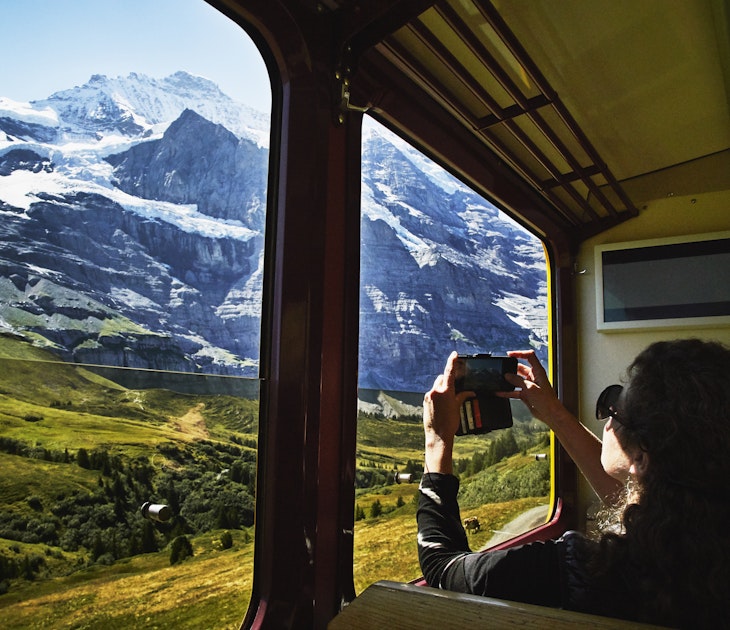
Sustainable Travel
Jan 16, 2024 • 8 min read
Rolling forests, saw-toothed mountains, bridges spanning river gorges - these European train rides put on quite a show.

Jan 9, 2024 • 5 min read

Jan 2, 2024 • 11 min read

Nov 1, 2023 • 4 min read

Oct 19, 2023 • 8 min read

Sep 12, 2023 • 9 min read
Aug 4, 2023 • 3 min read

Jul 5, 2023 • 5 min read

Mar 29, 2023 • 5 min read

Jan 3, 2023 • 7 min read
Protect Your Trip »
12 Unconventional Ways to Save on Travel
Points and miles are major, but there are other cheap ways to travel too.

Getty Images
Consider setting up airfare alerts, housesitting and traveling midweek to help stay in budget.
Traveling can be expensive, and even when you rely on widely known savings tactics – such as traveling in off-peak seasons or staying at a hostel or a rental with a kitchen – the costs inevitably add up. If you're looking for ways to save on your next trip, add these unconventional tips provided by travel industry experts to your hat of travel tricks.
Get a set of packing cubes
Traveling with just a carry-on bag is a cost-effective option since it's typically free on most major airlines, but it's often easier said than done. That's why packing cubes are a good investment. They don't cost much – you can get a quality set like this one by Bagail for less than $25 – and they inevitably allow you to save space and fit more in your carry-on (or checked luggage ).
[Read: Guide: Carry-on Luggage Sizes by Airline .]
Choose the flight, then the destination
Scott Keyes, flight expert and founder of Scott's Cheap Flights , recommends changing the way you search for flights to save on airfare . Instead of looking for flights to a specific destination, use a flight comparison tool like Google Flights , Momondo or Skyscanner to browse a variety of airfares from your preferred airport(s). Maybe a trip to Barcelona wasn't what you originally had in mind, but if the price is right, why not head there instead?
Consider alternate airports
While flying from the airport closest to home is always the most convenient option, Keyes also suggests comparing fares from other airports, even those that are a few hours away. You may find prices are hundreds of dollars less to get to the same location, making the combined cost of gas, parking and driving time an excellent investment.
If you can drive a few hours to a larger airport with more flight options in general, that may be even better. Not only do you have the potential to save money, but you're more likely to find a direct flight or a route with fewer layovers.
[Read: What to Do If Your Flight Is Canceled or Delayed .]
Set up airfare alerts
If you're eager to travel far and want to save big on airfare, keep an eye out for short-term airfare offers on websites like Hopper and Trip.com . These sites offer deals that usually last a short time, meaning you have to strike while the iron is hot. "I do this every time I book a flight and I usually save at least 10%, but sometimes up to 75%," says Josh Band of A Backpacker's World . "I once got a flight that should have been $200-plus for just over $50 by setting up an alert."
Go to Europe for Thanksgiving
Many Americans opt to head to Grandma's house or another domestic destination for turkey dinner. However, not as many escape to the Caribbean and Mexico, and even less go to Europe – which means you're more likely to find flight deals to Paris , London and other European vacations you've been wanting to cross off your bucket list.
Travel midweek
There's no set day of the week to book the cheapest airfare, but there are less expensive days to travel, says Keyes. He recommends flying on Tuesdays, Wednesdays and Thursdays since most business travelers fly on Sundays and Mondays (and consequently drive up the cost of airfare on those days).
Consider a 'bleisure' trip
If you have an upcoming business trip in a unique or new-to-you destination, consider tacking on a few personal days to the journey. This way, you can enjoy a mini-vacation sans airfare (assuming your company will cover that portion).
[Read: The Best Garment Bags for Travel, According to Reviews .]
Buy travel insurance
It may sound counterintuitive, but purchasing travel insurance can save your bank account (and your sanity) in the event that you or a family member falls ill or has another emergency that forces you to change your vacation plans before or during the trip. A basic and cheap travel insurance policy will suffice, though there are coverage options for a wide variety of needs – including cancel for any reason travel insurance (which is exactly what it sounds like).
Housesit for free accommodations
Did you know you can enjoy free accommodations in exchange for housesitting? Sites like House Sitters America and Mind My House offer housesitting opportunities for a small annual fee (less than $50). Many of the homeowners have pets who need TLC while they're gone, too, making this a fun and budget-friendly alternative to traditional rentals like Airbnb. No matter where you travel, it doesn't get much better than living like a local and playing with pups.
Similarly, you can try couch surfing, which allows you to stay with a local for free. Services like the site Couchsurfing charge a negligible monthly or annual fee to sign up and get verified for safety purposes, while others such as BeWelcome are free. These services also provide exclusive meetups with other travelers.
Read: The Best Vacation Rental Travel Insurance Plans
Sign up for a family loyalty program
Did you know there are loyalty programs that allow family members or groups to pool rewards or freely transfer rewards to others?
"This can be a great option for infrequent travelers who may not rack up enough points or miles for a free flight or hotel room individually – but can reach those rewards when combined," says Nick Ewen, director of content for The Points Guy . "In some cases, it's a single, pooled account that automatically combines points (like JetBlue). In other cases, you can simply transfer points from one account to another (like Hilton Honors, World of Hyatt, or Marriott Bonvoy)." He recommends reading the full terms and conditions of these programs, as some impose time limits, maximum transfer amounts and other restrictions.
Use travel rewards on experiences
Don't forget that both airline credit cards and airline rewards programs can be used to cover more than flights and hotels. Programs like Chase Ultimate Rewards make it easy to redeem points for sporting events, dining (including reservations, exclusive culinary experiences and takeout orders) and more.
You can also use points earned on hotel credit cards as well as hotel rewards programs to pay for fun experiences in hundreds of destinations around the world. Options range from cooking classes and concerts to outdoor activities and spa experiences .
Book a refundable car rental
While some companies offer discounts for prepaid car rentals, many travelers say they've had better luck with booking refundable car rentals , allowing them to secure a reasonable rate while keeping a watchful eye for price drops. If a better price pops up, simply cancel your original reservation and book at the lower rate. Frequent traveler Pamela Howard, who writes about her experiences on Our Adventure Is Everywhere , says she's consistently able to save anywhere from $25 to $100 using this tactic on Costco Travel car rentals. "It's simple and that little bit of time rechecking rates pays substantially in savings."
Ewen says you can do the same when you book a flight or hotel using points since many loyalty programs have flexible cancellation policies. "If you lock in a flight at 35,000 miles and see that your same ticket is 30,000 miles just a week later, you should be able to rebook and get those 5,000 miles back into your account," he explains.
You might also be interested in:
- The Best Cruise Lines for the Money
- The Top Cheap All-Inclusive Resorts
- The Top Cheap Weekend Getaways in the U.S.
- The Top All-Inclusive Resorts Where Kids Stay Free
- Cruise Lines That Let Kids Sail Free
Tags: Travel , Budget Travel , Travel Tips
World's Best Places To Visit
- # 1 South Island, New Zealand
- # 4 Bora Bora
If you make a purchase from our site, we may earn a commission. This does not affect the quality or independence of our editorial content.
You May Also Like
Best whale watching tours in maine.
Marisa Méndez April 23, 2024

The Best Wineries in Napa Valley
April 23, 2024

The Best East Coast Beaches
April 19, 2024

The Best Luggage Brands
Rachael Hood April 17, 2024

The Best Hard-sided Luggage Picks
Erin Evans , Rachael Hood , Catriona Kendall , Amanda Norcross and Leilani Osmundson April 17, 2024

The Best Carry-on Luggage

The Best Yellowstone National Park Tours
John Rodwan April 17, 2024

The Best Rome Colosseum Tours
Laura Itzkowitz April 17, 2024

Best Alaska Tours
Lyn Mettler April 16, 2024

The Best Fredericksburg Wine Tours

How to travel on a budget: Here are our 22 top tips

Editor's Note
"How can I travel on a budget?" is one of the top questions we receive at TPG.
There's no question that travel is expensive right now as millions satisfy the itch to travel more. Demand has been through the roof. Inflation and correspondingly high hotel, rental car and airline ticket costs have many would-be travelers throwing up their hands in frustration.
However, there are still many ways to save. In addition to using reserves of points and miles to book hotels and airfare, TPGers have many budget travel tips to help stretch your dollars when traveling.
Here are 22 ways to travel on a budget.
Use membership codes to save on car rentals
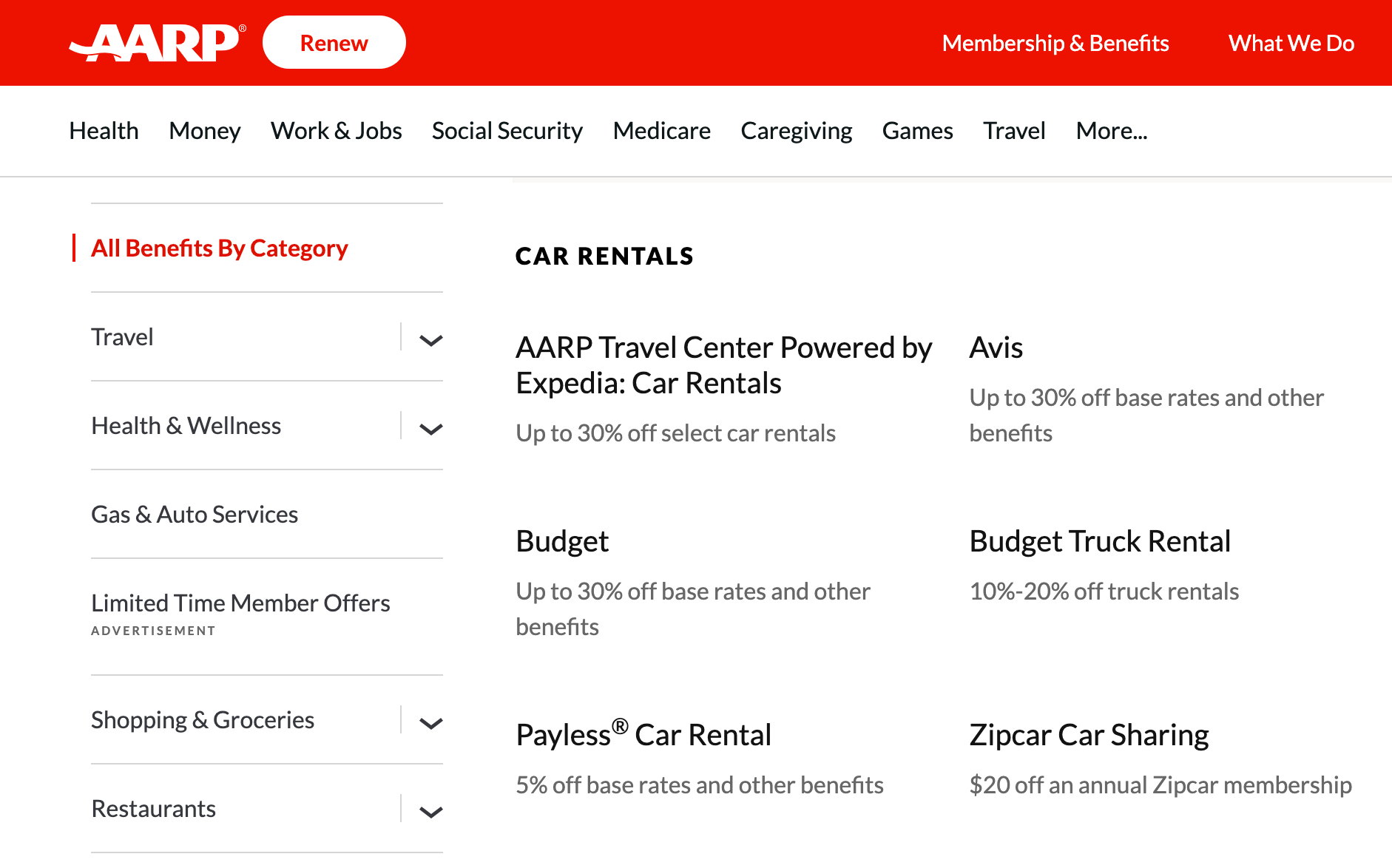
If you're a member of AAA or AARP, have a Costco membership, are a veteran or work for a large company with a car rental discount code, pull all of these levers. You might be eligible for discount codes you didn't even know about. A few examples from AARP include 30% off a car rental at Budget or Avis.
Related: How to never pay full price for a rental car
Look beyond traditional car rental companies and locations

Most people search for rentals at the airport with standard companies like Hertz and Avis. If you don't find good results, consider off-airport locations or try alternatives like Kyte , Turo and Silvercar.
Related: Delta and Turo launch partnership, allowing travelers to earn 2,000 SkyMiles on 1st rental
Check credit card merchant offers

Before booking your trip, review your credit cards' special merchant offers. Multiple issuers offer this option (although American Express is a leader in the category).
Every program works similarly: Log in to your card account online or through your banking app, review the offers available to you, add the ones you want and make a qualifying purchase using the card for which the offer is registered.
There are no promo codes to enter at online checkout or coupons to print to take to the register. There are likely offers you can activate that will provide discounts on dining, gas and entertainment.
Related: How credit card merchant offers can save you hundreds of dollars every year
Take advantage of free days at national parks
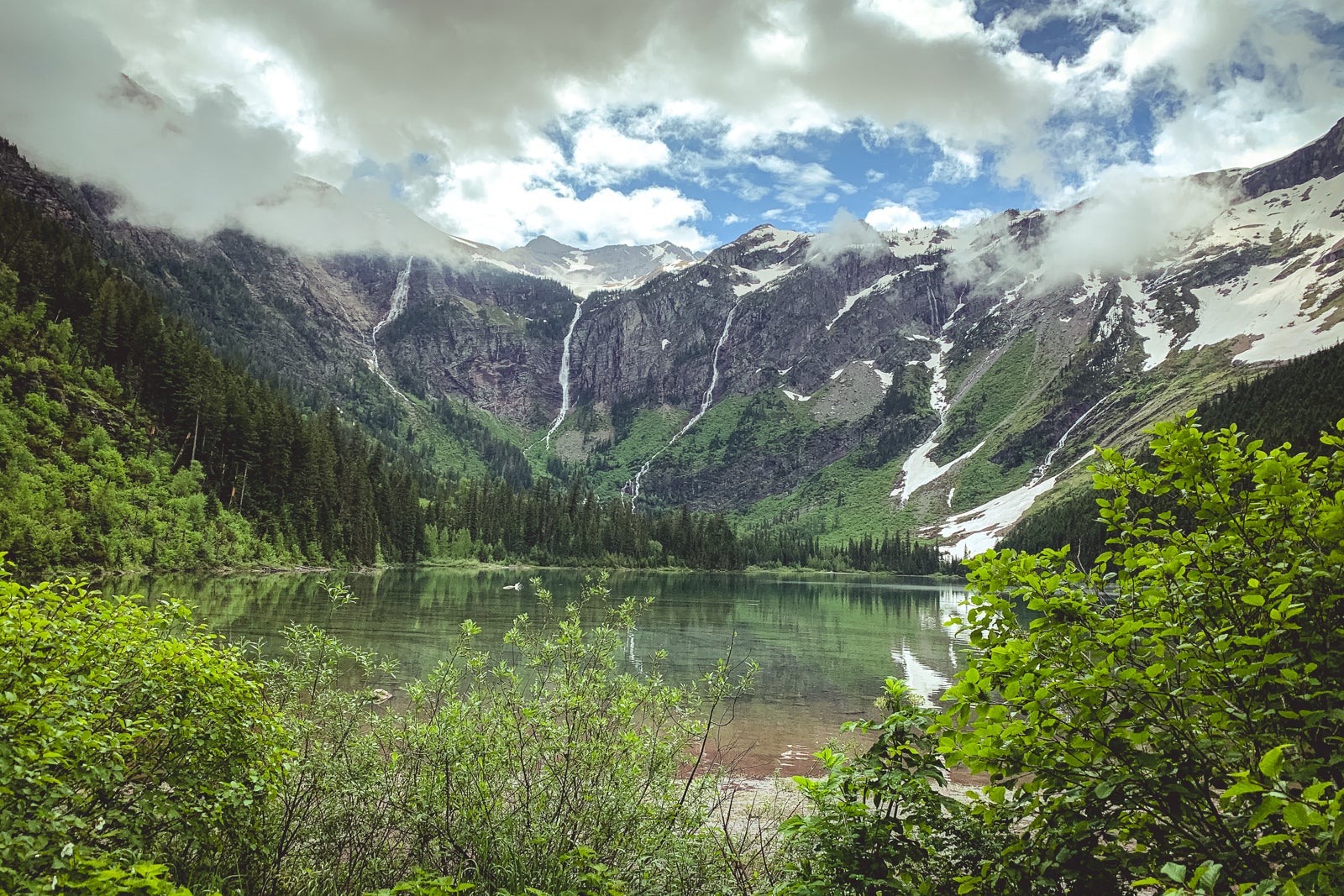
Every year the U.S. National Park Service sets aside several days when entry is completely free ; options include Martin Luther King Jr. Day in January, the first day of National Park Week in April, National Public Lands Day in September and Veterans Day in November.
Visiting a national park on one of the NPS' free-entry days can save you up to $35 per vehicle at some of the most popular national parks, such as Glacier National Park and the Grand Canyon .
Stay outside the national parks

You might dream of a night in a rustic cabin inside a national park, but getting that reservation could be challenging or costly — especially if you can't pay for it with points.
However, just beyond the park, there's probably a hotel you can book with points. For example, you could stay at the Holiday Inn in West Yellowstone with IHG One Rewards points; the SpringHill Suites just outside of Zion National Park is a great property if you have Marriott Bonvoy points to spend.
Related: The best campgrounds, hotels and lodges near Yellowstone National Park
Download the T-Mobile Tuesdays app
If you're a T-Mobile user, you're in luck: This app is a major perk that will put money in your pocket just for checking your phone on Tuesdays.
To participate, download the T-Mobile Tuesdays app , check the app on Tuesday and claim your discount code. We've seen weekly discounts on everything from rental cars to gas, hotels and theme park tickets.
Related: T-Mobile expands travel-focused 'Coverage Beyond' benefits
Get discounted gas at Shell through the Fuel Rewards app
At TPG, we love to stack savings. The Shell Fuel Rewards app is a good one to pile on the discounts.
You can link it to other loyalty programs — including American Airlines AAdvantage, Giant Food, Stop & Shop, Advance Auto and more — to receive extra discounts. Also, if you purchase through Fuel Rewards, link to partner retailers such as Petco, Bed Bath & Beyond, Office Depot/OfficeMax and many others to save even more.
Don't forget to use a credit card that gives bonus points or discounts at gas stations for even more savings. TPG likes the Citi Premier® Card (see rates and fees ), which awards 3 ThankYou points per dollar at gas stations, and the Blue Cash Preferred® Card from American Express , which also gives 3% back at U.S. gas stations.
Related: These are the best credit cards for gas purchases
Save on theater tickets in New York and London
Check TodayTix for cheap Broadway and West End tickets if traveling to New York City or London.
The TodayTix app has discounted tickets to various shows available. Prices vary, but most of the top shows currently playing are available on the site and the app.
While not all shows are hugely discounted, TodayTix often runs no-fee promotions. Keep in mind that for some shows, you won't be able to choose your precise ticket location. Instead, you will pick a section you'd like to sit in.
Related: On with the show! How to get a great deal on Broadway tickets
Save on entrance fees with Bank of America

Bank of America cardholders can enjoy free general admission to more than 225 cultural institutions in dozens of U.S. cities on the first weekend of every month just by showing their cards. It's through the Museums on Us program that's been going on for 25 years. It's open to Bank of America, Merrill and Bank of America Private Bank (U.S. Trust) credit or debit card holders.
Related: 5 reasons to get the Bank of America Premium Rewards credit card
Use your library card for museum entry
Another way to get free museum admission is with a library "lending ticket" — a program where libraries will lend museum passes for a set amount of time.
Also, check if your local museum's membership comes with ROAM (a reciprocity program across North America). It's an easy way to get maximum value from a regional (and usually less expensive) membership.
Take a free walking tour

Sign up for a free walking tour on your first day in a new city. It's an inexpensive way to learn about the city and orient yourself.
Look online for options before traveling and sign up in advance if necessary. Then, all you need to do is show up with comfortable shoes and enjoy your free tour.
Although tipping is suggested, you'll spend much less, even after generously tipping your guide, than you would with a standard tour option. You will likely also meet other like-minded travelers, which can be welcome if you're traveling alone or looking to make new friends.
If you're interested in seeing what's available on your next trip, Google the city you'll visit and the phrase "free walking tour" to see what comes up.
Dine on the cheap with Seated
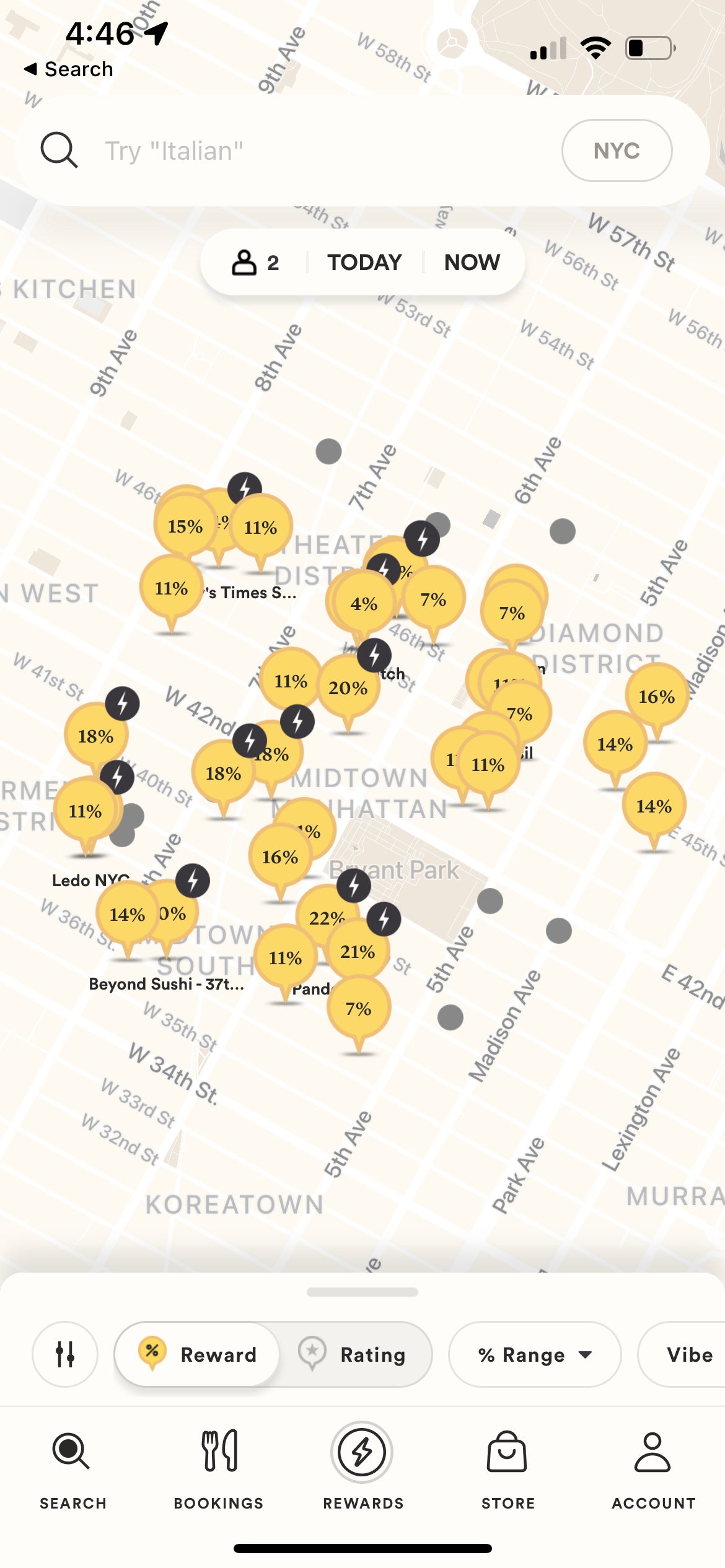
Here's a fun one: The Seated app allows you to dine out and get paid for it.
The app rewards diners who sign up and eat at designated restaurants with cash they can redeem through gift cards. All you have to do is let the app know you'll be dining at a location before you take a seat. You can also get gift cards for Uber, Amazon and Starbucks.
Fly on weekdays
Flexibility on which days you fly is one of the keys to getting the best airfare prices. Leisure travelers most commonly book weekend flights, while many business travelers fly on Monday. So, the midweek days — Tuesday and Wednesday — have lower demand and are often the best days to travel for lower prices.
Related: When is the best time to book airfare?
Book vacation packages
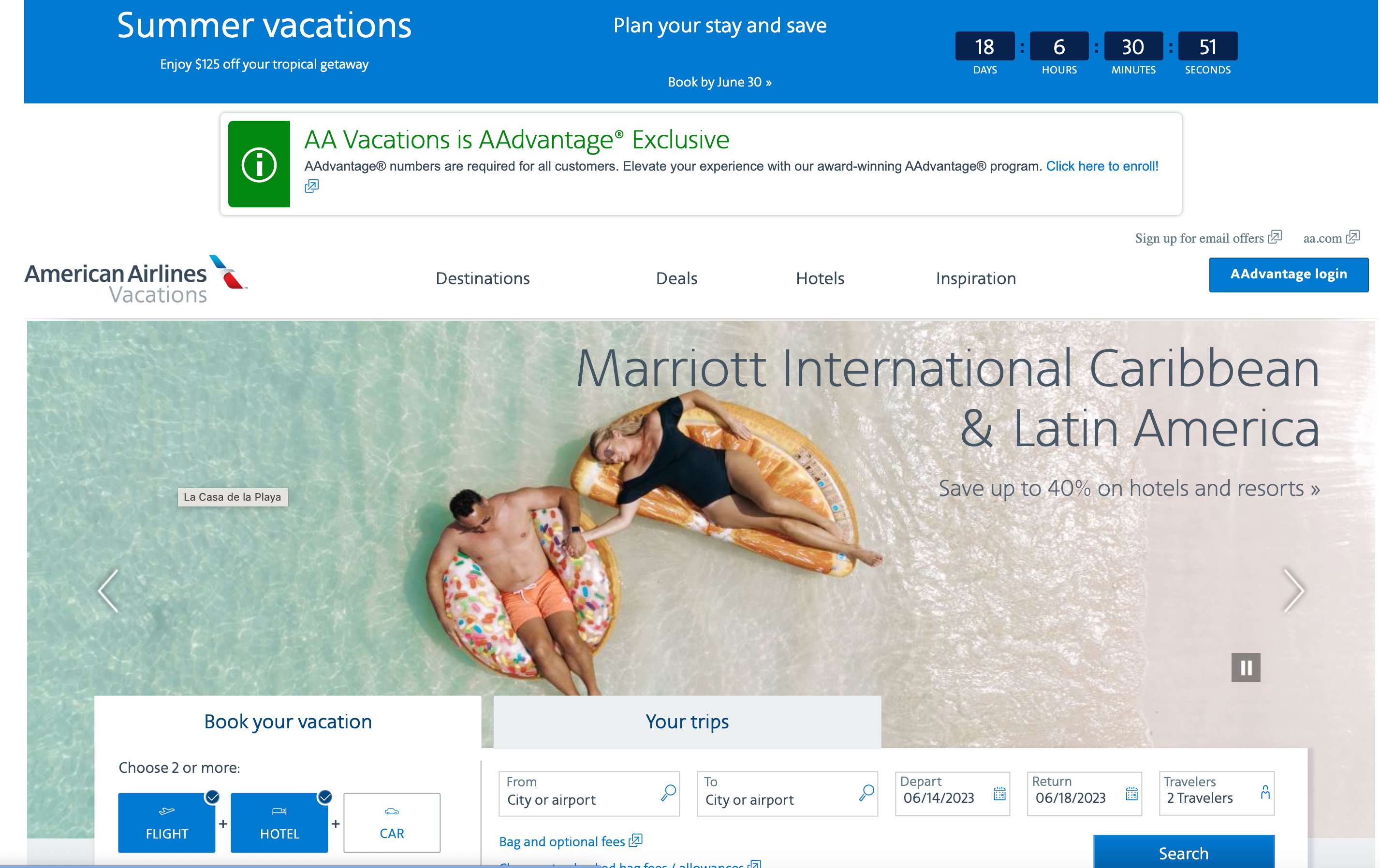
Airlines that bundle airfare and hotels as vacation packages can offer better deals thanks to their vast buying power and inventory. These bundles can offer savings of up to 40% off. Savings on business-class plane tickets and high-end hotels can offer some of the best deals.
Also, purchasing directly from the airline gives you a one-stop shopping experience. You can even add a car and activities to your trip at the same time. Plus, you'll often be able to take advantage of special sales and bonus points and miles offers.
Related: Everything you need to know about saving money with vacation packages
Use a price monitoring tool
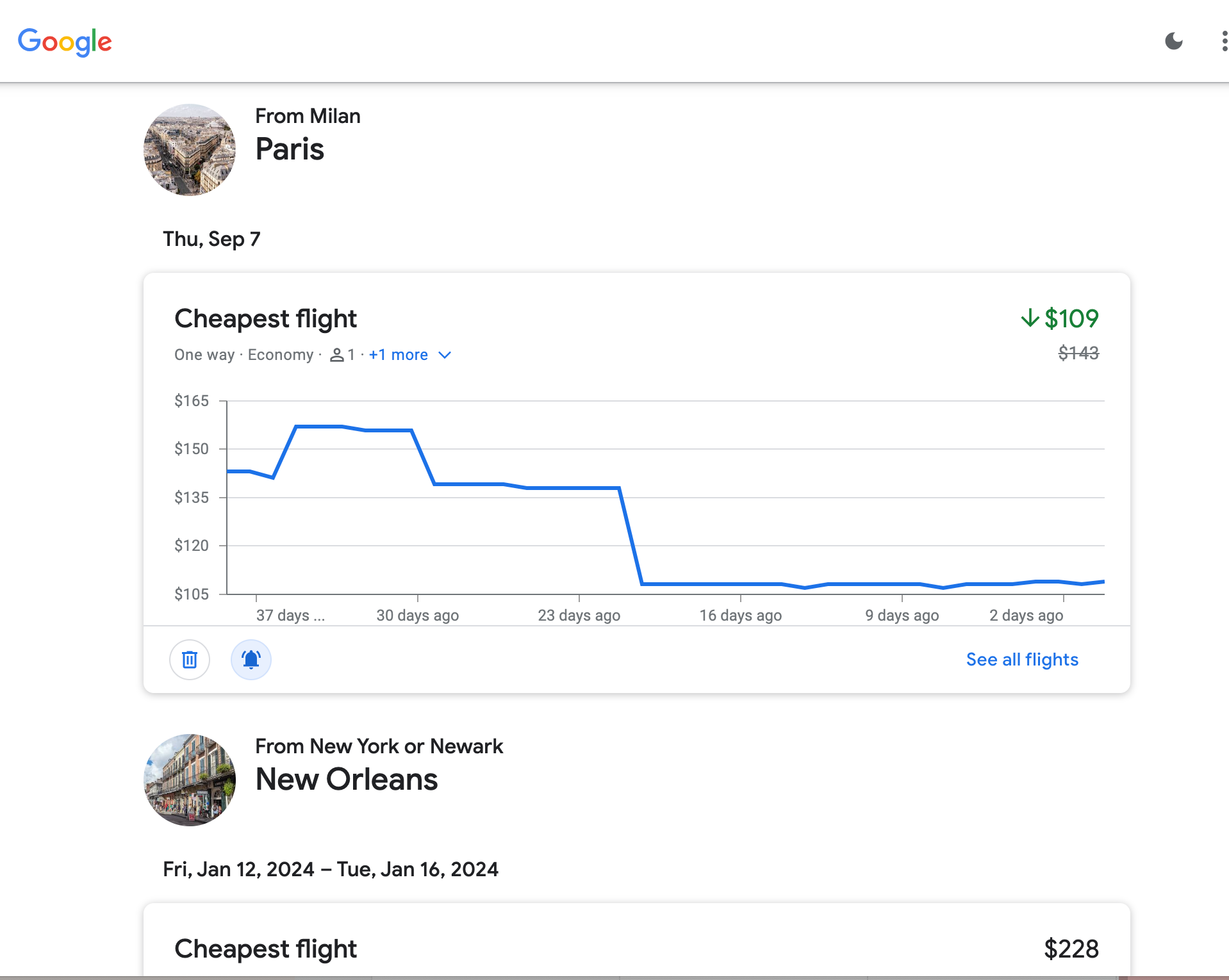
Airline fare monitoring sites such as Hopper and Google Flights ensure you get notifications when your trip's best and lowest prices become available. Set up as many combinations as you're considering, including different departure and return dates, so that you can get alerts for all possible fare reductions.
Be flexible on destination
If you're not locked into a fall or winter vacation location (like you would be for a destination wedding or family reunion that you can't change), try an alternative to find better prices. For example, consider subbing Quebec City in for Paris if you want Old World charm. For scuba diving enthusiasts, skip the expensive long-haul flight to Australia and the Great Barrier Reef and instead head to the second-largest barrier reef in the world in easy-to-access Belize.
Related: 5 key tools and tips for cheap airfare
Hold your deal
If you see a great deal but are not yet ready to book, hold it . For example, Hopper's Price Freeze allows you to lock in the price of a flight for up to seven days to take more time to finalize plans before you book. Some airlines will also let you hold flights for a small fee. (Remember that all U.S. airlines, by law, allow you to hold and cancel a flight booking within 24 hours without penalty as long as you book more than seven days in advance.)
Re-price your flights and hotels

As long as you've booked a hotel, car or flight that can be canceled without penalty, you should make it part of your weekly routine to check for price drops. If you find a lower price, rebook. You can use these same rebooking strategies with points to make dynamic pricing work in your favor for hotel stays so you can save on award nights.
Related: How I saved 33,500 points on upcoming hotel stays
Consider alternative airports
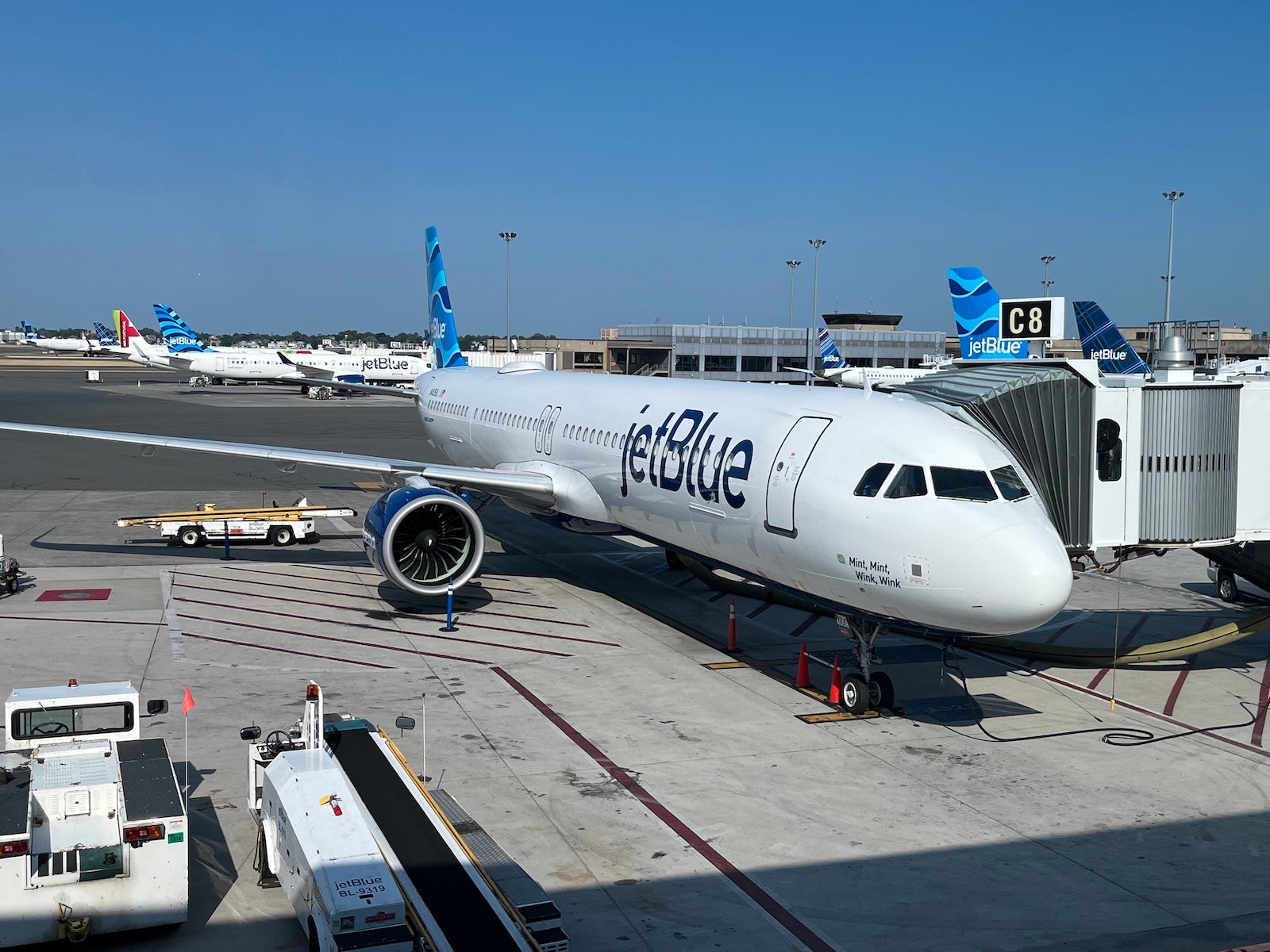
With prices high, now is the time to be flexible and check all nearby airports. For example, Houston and Chicago have two airports, while the New York City area has three, including Newark Liberty International Airport (EWR) in New Jersey . In Southern Florida, you could easily fly to West Palm Beach, Fort Lauderdale or Miami. It works internationally too: Try Gatwick Airport (LGW) instead of Heathrow Airport (LHR) when flying to London.
It may even make sense to get to one city by flying to another city and then taking a short train ride for the rest of the journey. For instance, you could fly into Philadelphia and catch a train to New York. Strategies like this can help you get to your destination on a flight with better pricing or award availability.
Use positioning flights
Positioning flights are unrealistic for every situation or trip, but they can often offer better award availability or pricing than those from your home airport. Can you reach your destination for a lot less by starting in Seattle or Chicago? Would adding another flight to a different airport save you money or miles? Just ensure you leave enough time between flights to avoid unnecessary travel headaches.
Related: Use positioning flights to get amazing deals
Use points and miles when appropriate
Since you are reading TPG, you may also want to earn points or miles through your everyday spending that you can use to pay for part of your trip. Some credit cards — like the Delta SkyMiles® Gold American Express Card and the Hilton Honors American Express Surpass® Card — can help you earn airline miles or hotel points that you can redeem directly with the airline or hotel. Cards such as the American Express® Gold Card earn transferable points you can redeem for travel or transfer to various travel partners.
If you have a stash of points and cash fares are high, it makes a lot of sense to use those points instead. For example, I recently priced a trip to San Francisco and found a flight over the Fourth of July weekend; it should normally cost about $400, but for this particular weekend, it was going to cost me at least $621. I used 46,000 Delta SkyMiles instead. While it wasn't the best redemption in the world, it was better than shelling out all that cash. Most of those SkyMiles came from credit card spending on my Delta SkyMiles® Reserve American Express Card .
Related: Why I'm keeping my Delta Reserve card even when I'm flying less
There are many strategies for getting the most out of your credit card . You'll generally get the most value when redeeming for premium-cabin flights or luxury hotel stays. However, you may prefer to book economy award flights or lower-category hotel stays using your points to stretch your points further.
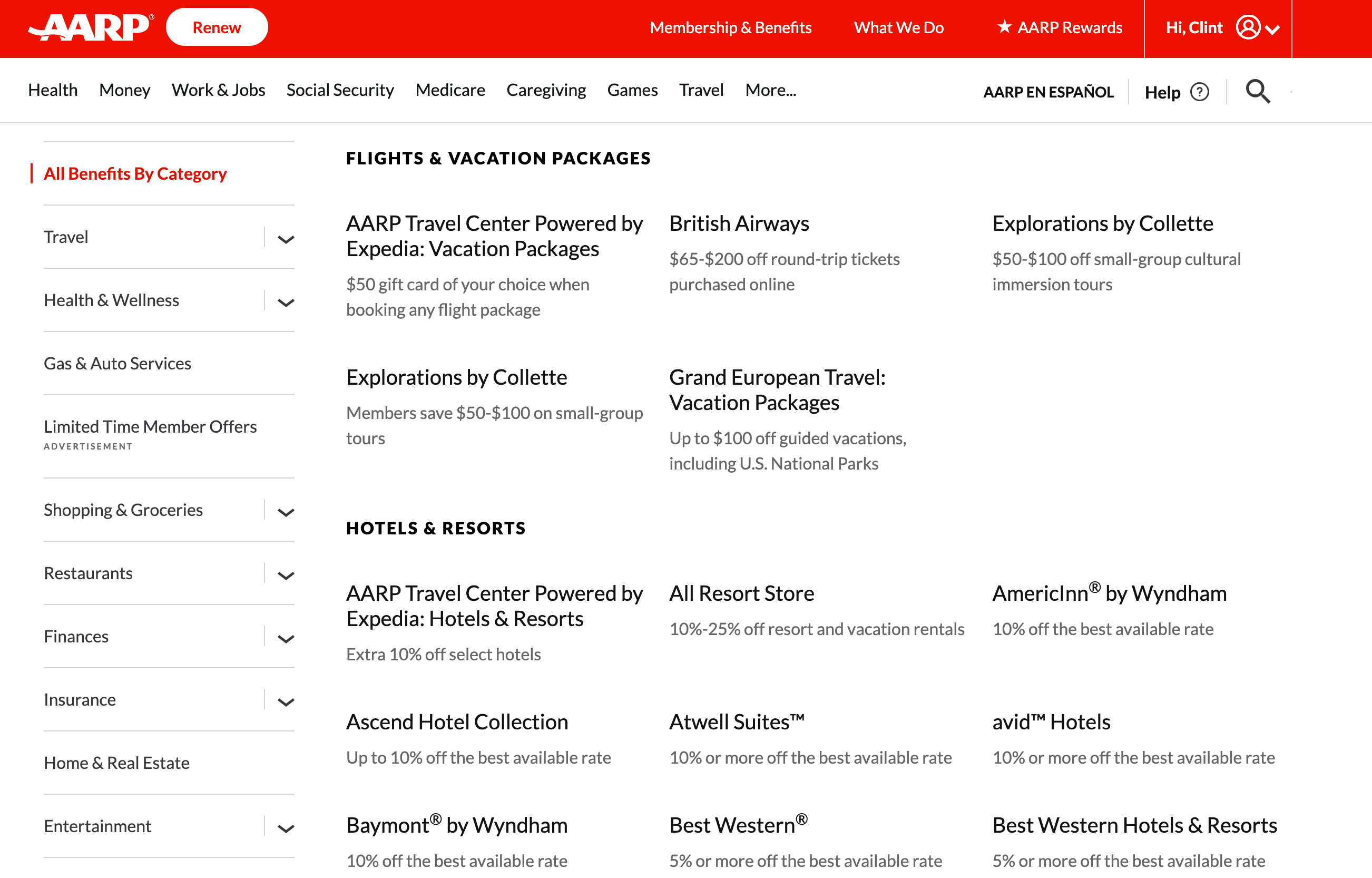
You can join AARP for discounts even if you are not retired. The advocacy group for older adults offers all kinds of cool discounts, including $60 to $200 off British Airways flights and 10% off Hilton hotels.
Related: How to use AARP discounts on travel
Bottom line

Spending a small amount of time researching the best ways to travel on a budget could easily make a dream trip, like a Paris vacation, more attainable.
It's possible to take an excellent vacation on a budget. You just need to put in the time to plan your trip, budget your expenses, download a virtual wallet of money-saving apps and consider using points and miles to decrease your out-of-pocket costs.
Some of our top budget travel tips include shopping around, signing up for deal alerts through websites like TPG and using points and miles. Opening a credit card or two for the sign-up bonus once or twice every few years could make your trips even cheaper. Don't forget to sign up for our daily newsletter , where we teach you how to travel better for less. At TPG, we make traveling on a budget easy.
Related reading:
- Key travel tips you need to know — whether you're a beginner or expert traveler
- The best travel credit cards
- The 18 best places to travel in 2023
- 6 real-life strategies you can use when your flight is canceled or delayed
- 8 of the best credit cards for general travel purchases
- 13 must-have items the TPG team can't travel without
Additional reporting by Melissa Klurman.
Get Daily Travel Tips & Deals!
By proceeding, you agree to our Privacy Policy and Terms of Use .
10 Totally Unique Ways to Travel
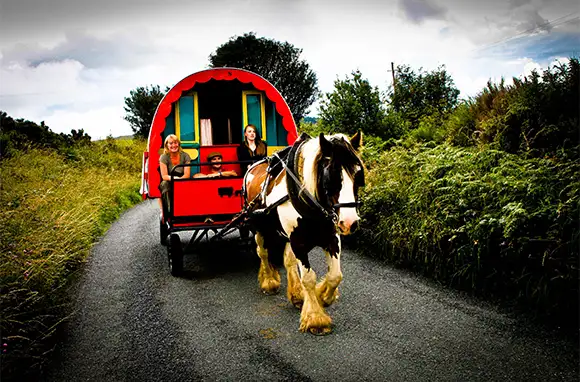
Dara Continenza
Dara Continenza has been exploring the world and writing about it since 2010. Her writing has appeared on Hopper, SmarterTravel, USA Today, Money, U.S. News and World Report, Yahoo, Business Insider, TripAdvisor, Huffington Post, Boston.com, and others.
Travel Smarter! Sign up for our free newsletter.
Road trip? Been there. Caribbean cruise? Done that. Simply jetting off for the weekend? Yawn . Ditch that everyday vacation and, instead, embark on a truly wild adventure. We’ve uncovered 10 kinds of wacky, totally unique ways to see the world, from horse caravans through Ireland to rocket-ship rides through space—perfect for giving your travel bug a bit of pick-me-up.
Image Gallery

Freighter Cruise
Perfect For : The traveler whose idea of minimalism is less modern art and more bunk-beds-and-cargo-holds.
Who Can Take You : Australia-based Freighter Expeditions or U.S-based Maris .
We were inspired by this hilarious New Yorker article by Patricia Marx, who embarked on a three-week-long freighter cruise as it "galumph[ed] across the sea" from the U.S. to Hamburg, Germany. If galumphing sounds right up your shipping lane, then take heed. Freighter cruises offer little in the way of luxury—most cargo ships were never intended to take on passengers—but they do offer the opportunity to see unique ports of call on unusually long journeys (some as many as 130 days at sea). Ships don't often come equipped with Internet and may only have one satellite phone (meaning sushi buffets and lido decks are but distant dreams). However, you'll have plenty of time for uninterrupted R&R while aboard a working cargo ship, and since the passenger lists average four to 12, seeing another soul is rare.
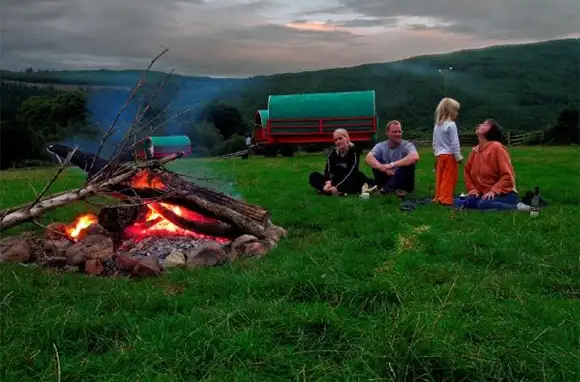
Horse Caravan
Perfect For : Equine enthusiasts who don't mind when their ride needs to stop to graze in a field.
Who Can Take You : Clissmann Horse Caravans .
Driving on beautiful Emerald Isle roads not doing it for you? It's not you; it's your method of transportation. Ditch the car and hitch a horse instead. Learn how to harness, yoke, and drive a horse before setting off for the Irish countryside with Wicklow-based travel outfitter Clissmann. The four-berth carriages come complete with cooking and sleeping spaces, although travelers will have to use the toilet facilities at various pubs and inns along the way. By day, explore long, sandy beaches and peaceful countryside festooned with wildflowers and butter-yellow gorse. At night, roll out your sleeping bag and nap in the comfort of your covered carriage. The days are open-ended, so the itinerary is entirely up to you (and your horse, of course).

Perfect For : Anyone who thinks trains are too punctual and seats largely unnecessary.
Who Can Take You : Norries are unscheduled and unregulated by the Cambodian government, so the only way to take one is to show up with a few bucks and hop on.
This quasi-train, colloquially called a "norry," is more or less a bamboo platform on two rusty axles, operated by a gasping secondhand engine (most often from a motorbike or discarded farm equipment). The norry, blissfully free of safety rails or seating, will hurtle you through the Cambodian countryside at a brisk 30-mph clip. While fewer norry routes are in operation since the national train system was restored in 2013, according to Slate , you can still hop on the rails between Battambang and a series of small countryside villages. Likely your companions will include a dog, some chickens, and commuting locals—truly an immersive cultural experience with a side of risk.
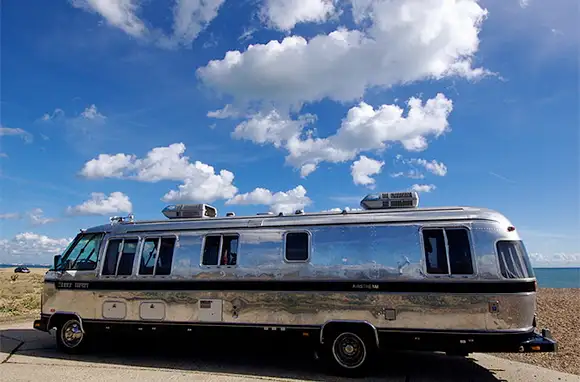
Vintage Airstream Trailer
Perfect For : Anyone with a vintage-y Pinterest board, an ironic monocle, or both.
Who Can Take You : Living Airstream and its collection of '60s models (as well as a few contemporary versions).
The sausage-shaped, silver-sided Airstream trailer is about as American as apple pie—but significantly more travel-friendly. Although they had their heyday in the '60s and '70s, Airstreams have seen an uptick in popularity thanks to vintage-crazy hipsters seeking to recapture old-timey American spirit. A few Airstream hotels have popped up around the country, but if you want to take yours on the road, Living Airstream and a few other outfitters can hitch you up. Vintage trailers start at $175 per day or $900 per week, making the sleek little vessels rather economical ways to see the states. The cozy, refurbished interiors offer sleeping space and mini kitchens, perfect for a national-park vacation (and a million Instagram photos).

Camel Caravan
Perfect For : Budding nomads who don't mind hours of biblical desert treks.
Who Can Take You : KE Adventures or Authentic Morocco and their respective camel companions.
Outside of bustling Marrakech, Morocco's countryside is wild and remote, its deserts, cliffs, and sugar-fine beaches perfect for adventurous vacationers. What better way to explore the romantic barrens and flats than by camel? A combination of trekking on foot and riding your camel through a landscape dotted with argon trees and grazing goats eventually leads you to seaside towns and the UNESCO World Heritage city of Essaouira. Astride or alongside your camel pal, you'll pass through Berber villages and over desert dunes, walking for up to five hours per day. Hot afternoons are cooled by sea breezes and stops for swimming, while nights are spent camping beneath clear, starry skies.
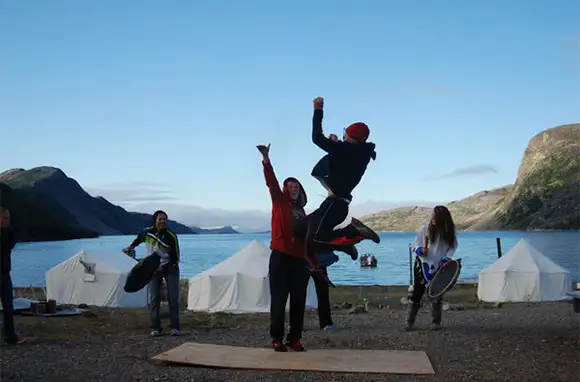
Inuit-Guided Tour
Perfect For : Fans of really, really roughing it (and learning about a mostly undiscovered culture).
Who Can Take You : Torngat Mountains Base Camp and Research Station .
You've likely never experienced the Great White North this way before. Catch a chartered flight from Happy Valley-Goose Bay in the Canadian province of Newfoundland and Labrador to Base Camp, populated by international researchers and Inuit guides from Nunatsiavut and Nunavik. At camp, nestled within the untouched, iceberg-choked expanses of Torngat Mountains National Park, you'll check in to your insulated Design Shelter (if you're going luxury) or your nylon-sided tent (if you're going wild). Then hike the fjords, spot harp seals and minke whales, fly in a helicopter over remote spreads of tundra, or take an Inuit-guided long-liner boat to the remnants of ancient food caches and caribou-hunting blinds. Communal meals and bonfires hosted by your guides cap off long, exhausting days on the majestic, stormy land.

Desert Island Drop-Off
Perfect For : Anyone who thought Lost looked like a bucket of fun.
Who Can Take You : Docastaway , the first travel company to specialize in desert-island travel.
Experience all the joys of a shipwreck without the terror of, well, wrecking a ship. Docastaway will set you up in true secluded style on an isolated island in the Philippines or Indonesia, from just €64 (about $88) per day. The outfitter offers two main types of travel: "Adventure Mode," for true survivalists ready to take on the wildest, remotest islands, and "Comfort Mode," for those seeking roofs, bathrooms, and perhaps a smidge of luxury on their getaways. (Explorers can take survival classes before being deposited on their desert isle via helicopter.) Differing "isolation levels" means you can be completely, totally alone on your exclusive island, surrounded by jungles, beaches, and lush coral reefs, free to explore some of the world's last lost paradises at your leisure.
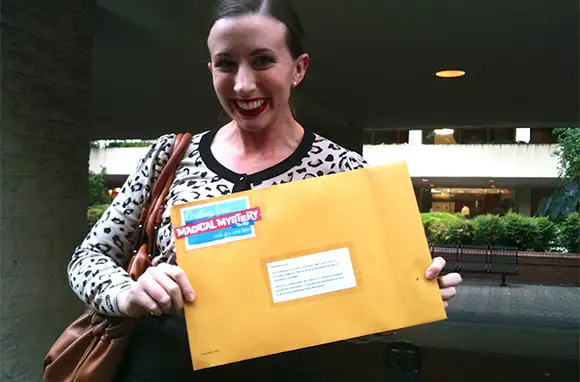
By Surprise
Perfect For : Type B travelers. Very type B travelers.
Who Can Take You : The Oprah-OK'd Magical Mystery Tours .
Do you love travel but loathe planning? Do you think surprise parties are fun, not freaky? Travel-by-surprise may be just the ticket—although you won't know what your ticket is for. Magical Mystery Tours offers a kind of one-stop vacation shop for those who don't mind being in the dark about their getaways. First, fill out a comprehensive questionnaire about your budget, preferences, and past travel experiences. In return for the $300 research fee and the cost of transportation and lodging (plus tax), you'll receive a sealed folder with all your trip details. Once you arrive at your travel hub (most likely a train station, an airport, or a bus terminal, depending on your budget and timeframe), you'll be free to open your folder and find out where you're off to, whether it's Hong Kong, Honolulu, or the Hamptons.
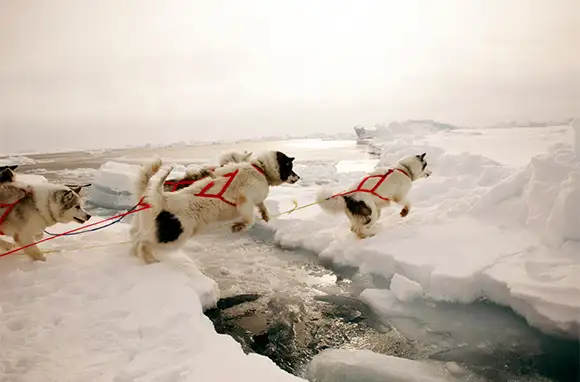
Perfect For : Dog lovers who don't mind being left out in the cold.
Who Can Take You : EarthSong Lodge in Alaska, Mammoth Dog Teams in California, or Nature's Kennel in Michigan.
Dogsledding has been a travel method for more than a millennium, and mushing along the vast and icy landscapes of the northern U.S. is a uniquely wild experience. A number of outfitters can set you up on multiday trips, complete with cute canines, all the necessary equipment, and lessons in driving your own dogsled. This method of travel is largely limited to cold, snowy areas, so budding mushers will need to be hearty fans of bitter weather (or The North Face coats). But travel-by-dog doesn't mean roughing it. During a trek through Denali National Park with EarthSong Lodge, you can choose from a combination of cabins or heated tents for nighttime lodging; on an upgraded trip with Nature's Kennel, you can sample local beer and sizzling bratwursts after a long day on the ice.

Perfect For : Budding astronauts; chronic one-uppers.
Who Can Take You : Who else but Richard Branson, via his Virgin Galactic venture?
What was once but a starry gleam in Richard Branson's eye now seems to be within the realm of possibility, with Virgin Galactic's SpaceShipTwo having made its third supersonic test flight earlier this year. Now that rocket-based travel has inched that much closer to reality, booking your suborbital spacefare means joining one of the world's most exclusive clubs (the short list of celebs who have signed up reportedly includes Ashton Kutcher, Stephen Hawking, and Justin Bieber). All seats aboard the spacecraft are $250,000 and include three days of preflight prep. Once inside the rocket ship, budding astronauts will take off at 2,500 miles per hour, breaking through the edges of the atmosphere before floating, gravity-free, in space. The entire voyage will be just two and a half hours, but we're sure the bragging will last for a lifetime.
You Might Also Like:
- 10 Hidden Islands You've Never Heard Of
- 10 National Parks You Never Knew Existed
- 10 Super Weird Laws from Around the World
Like this story? Join the 1 million other travelers who read our free Deal Alert newsletter . It's full of our best tips, trip ideas, and travel deals. Subscribe here today !
Don't Miss a Trip, Tip, or Deal!
Let us do the legwork! Sign up for our free newsletter now.
We hand-pick everything we recommend and select items through testing and reviews. Some products are sent to us free of charge with no incentive to offer a favorable review. We offer our unbiased opinions and do not accept compensation to review products. All items are in stock and prices are accurate at the time of publication. If you buy something through our links, we may earn a commission.
Top Fares From

Don't see a fare you like? View all flight deals from your city.
Today's top travel deals.
Brought to you by ShermansTravel
Porto to Lisbon: 7-Nt, Small-Group Portugal...
Indus Travels

Greenland: Luxe, All-Incl. 11-Nt Exploration Small-Ship...
Swan Hellenic
Ohio: Daily Car Rentals from Cincinnati

Trending on SmarterTravel

- Search for:
- Our Road To 100
- Featured on
- Learn the Tricks to Travel
- Travel Shop
Tricks to Travel
Tricks to Travel System Course Reviews
Tricks to travel review.
Excellent, very informative.
Carlos Diaz
Everything i didn’t realize i needed to know.
I’m so glad my girlfriend/sorority sister recommended the Facebook Group…Road to 100 Countries and Ronnie Dunston to me. I visited the Group, joined, checked out some of the posts…which took me down the rabbit hole to Ronnie and Dr. Sheba’s website. I was impressed and wanted to learn more about how this couple had visited more than 100 countries without breaking the bank. I took a risk (Ronnie had a very convincing pitch which I couldn’t ignore) and decided to sign up for the Tricks to Travel System Training. I must admit Ronnie did not disappoint and this is one of the most valuable points and travel courses that I have taken at a very REASONABLE price. I appreciate that Ronnie isn’t out to scam anyone, and that he is very passionate about his product…which delivers on what he said it would. I definitely recommend The Tricks to Travel System to others. So far, it’s definitely been worth the investment. Thanks, Ronnie, for personally reaching out to me and helping me to understand why this is the course that I didn’t know I needed…but I really did!
Yasmin Coleman
Best tricks to travel.
Learning how to properly use credit cards and hotel points to travel for free as well as airlines was one of the best investments, I made to purchase the courses. You learn so much about shopping and all purchases and how to use different cards and shopping sites to get points. I also learned how to pay my bills using cards more efficiently. So much to say, you just have to try it and purchase it. You won’t be disappointed.
Celeste Kenlaw
You did it.
My brain is on overload! There is so much awesome information in this course, I had to repeat a couple. I’ll still need to go back and listen to some. Taking notes and listening to you teach and show us how you did it. Thank you for wanting to see us win. You share these nuggets, which allow us to start our travel journey as well. I’m a newbie at this, but I have the tools to be a pro. Again, excellent course and I look forward to applying all the knowledge!!!
Zenobia Riley
Tricks to travel system.
I have now completed the course and the information is nothing short of AMAZING! I have learned so much and I have already started applying the knowledge that I have gained. Without these courses, I never would have known that there were so many travel perks that I never knew anything about! I am already seeing monetary gains from Rakuten, My Points and the various credit cards that I have applied for.
Lisa Johnson
Excellent and thorough.
Judith Hutchinson
Best money ever spent on knowledge..
Lots to listen too but so worth it.
Syreeta Turner
I learned so much. I certainly feel like I am entering into a new level of travel planning using points. The strategies that I learned are being put to use immediately.
Chandra Frederick
The system is invaluable.
So much great information that I will often refer to it. Ronnie really gives you your money’s worth, this will save you more than you could spend on his system. I highly recommend this for all levels of travelers that want to know how to save money and travel in ways you could not even have imagined.
Donna Ferguson
Great information.
I learned so much from this course. I look forward to learning more and traveling!
Sabrina Fitz
Thank you, thank you.
OMG! I have learned so much. These videos made me even more excited about traveling. I have already started taking steps toward earning points. I so appreciate you sharing what you have learned with us. With me. I took so many notes and screenshots. Watching, on my lunch break. This is good stuff. Again. Thank you so much for being willing to share what has worked. I’m so ready.
Great Course
This course is valuable and really provides clear steps on how to achieve points for various things such as hotel, miles and much more.
Tiffany Heard
Easy to digest.
I have acquired so much knowledge! The information was easy to digest and in an easy to comprehend format. I will use this information to enhance my travel knowledge and to grow my travel business. I would highly recommend this course to anyone who loves to travel. This small investment will not compare to the knowledge gained and the money that you will save by learning all the tricks to travel!
Good Information
Easy to understand the breakdown of cards and their benefits. Easy to follow and refer back to if you have questions.
Love the Tricks to Travel
I waited until I completed it before giving my review. This course didn’t disappoint, it was simply choked FULL of detailed step-by-step information. I can’t believe how much money I’m going to save versus what Ronnie had to spend to put this course together; it’s a steal! He proves what he is saying, showing you his own accounts as examples. I’m a native NYer, and Ronnie keeps it 100%. All Real Travelers need to cop this courses ASAP! Thank you so Much! #OneLove
Banetta McDaniels
T2t is the best.
Well, I thought I learned a lot this system takes travel hacking to whole other level!!!! Ronnie and Sheba Thank you for sharing your tricks with everyone because everything you taught is just clutch!!!! Being a visual person i just need a one-on-one just once then hopefully I can take it from there!!! I am loving everyone’s success on the program and patiently waiting for the day when I will have my turn!!! Cheers!!! and Thanks again for an informative and well put together course!!!!
Nadine Morris
Even more great info.
This course provides great insight into learning about traveling and what card(s) to use to get more bang for your buck!
Rachael Bass
Awesome course, I learned so much! Ronnie covers everything about points, miles and traveling. He breaks it down so it’s easy to understand. Thanks for the inspiring course and Fb sites where you put it into action!
Eileen Mitchell
Worth every penny.
This course has something for everyone, experienced and new travelers alike. I’m an experienced traveler who has managed to save a lot on travel throughout the years by utilizing error fare finders and flight deals and budget hostels etc, but I will now be able to save even more! I was totally blind to the possibilities of points, and I can now work toward making sure my future travels are essentially free if not deeply discounted. Can’t thank Ronnie enough!
Nadji Grizzle
Stop, look, listen….
Eye opening! Those are the two words I use to describe this course. There are so many benefits available to us if we just look and listen. Thank you, Ronnie, for demonstrating what this looks like…now give me some more!
Tonya McKlaine
Thank you for the wonderful course!
Brittany Zimich
Good info for someone just getting their feet wet 🙂
Tiffany Roldan-Howell
Great information.
I’ve dabbled a bit in miles and points before this course but definitely learned some new information and tricks I immediately put into play. Can’t beat the information for the price!
Indya Hartley
Great starter course to learn some tricks to traveling.
An Eye-Opener
Opened my eyes to the points game. Even though based In the North (CANADA) found the content very applicable. great job Ronnie and Sheba.
Victor Effiom
Enlightened.
To say I was overwhelmingly amazed at the content and experiences of Ronnie and Sheba is an understatement. Thank you for sharing your wealth of knowledge, experiences, and practical ways to create the same for others.
Andrew Adudu
Invaluable information.
All I can say is THANK YOU…THANK YOU…THANK YOU!!! I wish I would’ve gotten this information years ago, but it’s no time like the present to put these tips to work.
Aiyana Oates
Wealth of knowledge..
He is spilling the Tea on how to Travel like you stole it! Everybody says they want to travel; everyone says they don’t have the money and that they don’t know how to do it.
Lakeysha Brown
This course is everything.
Soo many gems, tips, and tricks in the tricks to travel system. Just buy it!! This is money well spent; definitely getting way more out than the initial investment you put in.
Stephanie Williams
Enjoyed the course.
Thanks for the knowledge!
Rosabelle Caramillo
Very thorough and well put together..
Fantastic course, love the level of detail. I’m a visual learner so all the graphics and visual aids help bring it together for me. Highly recommend.
Now I know what cards to get!
This system was very exciting, because now I know what cards to get and which ones to use for what. This was really helpful and will have me earning more miles in no time!
Lenise Chege
Great course, great course, rosetta colvin, this is a must if you want to save money on your travels.
The Tricks to Travel System is a game changer! It has already benefited me and I have yet to fully implement everything I’ve learned. There is a plethora of topics covered and the content is organized in a way that is easy to follow and find specific information. Your progress is also saved so no need to worry if you have to pause your learning. You can just pick up right where you left off. This came in very handy for me! I highly recommend Tricks to Travel. It will not disappoint.
Tara McDonald
Another, great course. This system is a masterpiece that will take your travels to the next level.
Tyone Stratton
This course was excellent! One of my favorite parts is when Ronnie broke down points earned/categories for various cards. The bonus is having access to a downloadable version! That’s going to make things much easier when deciding to select which cards I want to sign up for. This section alone is worth the money! I was leery about signing up for multiple cards, but this course taught me ways to properly close cards if I need to without lowering my score (I don’t play about my excellent credit #800 club lol). I would tell you more but I rather you purchase the course and see for yourself!
Tiffany Ross
Is the best, another awesome course.
This breakdown of airline rewards and even which cards to get was all I needed to get started on my journey with points. Awesome as always. Thanks Ronnie!
Barbara Chaney
If you want to learn about travel hacking, you need this in your life.
I LOVED the Tricks to Travel System! I was blown away at the content. It’s detailed, super straight-forward and is presented in a way that isn’t crazy confusing. I loved even more detail than I thought, I was blown away at the content especially for the price point! At $499.99, this course is a, NO BRAINER and STEAL. If you want to learn about travel hacking, you NEED this in your life. Thank you, Ronnie and Dr., Sheba!
Kreithchele Barnard
Taking points and miles to the next level, ahhhhmazing.
This course was so informative and there were so many things I learned. I’m so excited to use what I learned to have my family travel with me all over the world. I’m so excited to start! Thanks so much Ronnie!
Very Thorough
Great information, everything was very thorough. I loved it, thank you for this invaluable info.
Great introductory course, it has all the meat and potatoes! It really delves into how to earn points for just about every good travel card.
Krystalynn Merrells
A must take course.
Tricks to Travel is a must if you want to stay on top of the travel hacking game
Angelica Arteaga
Informative content.
This course completely opened my eyes to the possibility of traveling more frequently. Ronnie is thorough with his information and I like that everything he speaks about comes from his own personal experience. The information is easy to understand and overall, this course is a great starting point for traveling for free and or on a budget. Love it!
Wendy Mejia
Tried & true, crystal jones, hands down the best.
If you’re looking to travel for free and do not know how – these videos are for you! Ronnie breaks down everything from A to Z. I recommend these videos to people that are beginners and/or advanced because you can always learn something new from his videos.
Acamea Holmes
The course exceeded my expectations.
The Tricks to Travel has amazing content and was able to travel hack to Japan with all the tricks Ronnie shared. Thank you.
Dina Visram
Extremely beneficial, patrice lancaster, ready to level up get the tricks to travel system.
If you want to have your mind blown about how easy this really is…. take the Tricks to Travel System. You will be traveling for FREE if you follow Ronnie’s advice! This information is priceless and honestly undervalued! The T2T information pays for itself once you start accumulating points and miles. We know the system works. There are 1000s of success stories. You can win too! Buy this course and share it with your travel crew!
Millicent Whaley
Next level.
There’s no other way to describe this course other than Next Level!! This course provides a comprehensive overview to get you familiar with travel hacking and looking at travel differently. It really turns up the intensity for those who truly seek to travel like the rich and famous, but without breaking the bank!! I have booked free luxury properties and flights (in some cases business class tickets) using what I learned from the T2T System. I’m talking about Maldives, Zanzibar, Istanbul, Seychelles and Tahiti to name a few.
Tiffany Herring
A masterclass.
This is truly a masterclass on how to travel the world.
Antoinette Harris
Best in class.
This is hands down the best breakdown of how to travel for free! Ronnie breaks everything down in a very simple way. He provides step-by-step instructions on how to do everything. I recommend his videos to all of my friends and family!
I wish I had known this information years ago! Glad that I know now!!!
The Tricks to Travel system was more than I had expected. Such great information. I’m happy to be a part of the T2T family!
Reginna Criswell
I’m new to this. Never knew people traveled like this! Thank you for sharing all of this awesome information!
Regina Johnson
Excellent course.
Excellent course, when it comes to Hilton vs. Marriott, I am team HILTON now, thank you for all the information!
Pandora Carroll
Highly recommended.
This course was definitely a great investment! I’ve learned so much and I can’t wait to start applying the techniques so that I can save more on my travel, earn rewards and get more bang for my buck!
Awesome resource for both new and experienced travelers
I have been traveling internationally for 30 years. The knowledge I have gained from the Tricks to Travel system has allowed me to not only travel more frequently to destinations I may have not traditionally considered BUT I now also save thousands of dollars on luxury travel or travel for free! The access to the FB group I received when purchasing Tricks to Travel has been an invaluable tool as well. I highly recommend the Tricks to Travel System to anyone who would love to travel the world but not spend all their money while doing so.
Jacqueline Mitchell
Enlightenment.
This was so much information broken down that it made me pause and readjust something I was doing to make travel cheaper by knowing and working the system. This is sooo worth it. You have to see for yourself. Don’t take my word for it. BUY IT!!!!!!!
Venus Anderson
Bag o”tricks.
Once again this is different from other travel courses as it really does provide “tricks”, things I may not have considered. My favorite being buying a car and putting a portion on a credit card. We need 3 new cars (about to have a driving teen) so this was timely for me.
Twila Logan
Great content.
Hello Ronnie and T2T group, thank you Ronnie for the time and research put into this valuable info. I’ve learned so much and can’t wait to get started!
Torian Eddie
Loved it, esosa saint cyr, tricks 2 travel.
Lots of great information that I will definitely be putting to use to help reach my travel goals.
Christopher Martinez
Making it accessible for all.
I have to say right off the bat you save me $$$. I was just about to sign up for a very expensive card consultation, I wanted to learn how to fish before getting too far down the rabbit hole. The information here is invaluable, concise and very well structured. I can’t wait to dive in!
Ps as a Canadian I can really appreciate the “thank you” you gave after each chapter 😃
Stephanie Toms
Tricks to travel review.
This course was easy to digest and lots of detailed information was provided. Definitely worth the price!
Ronette Arthur
Very good information. We don’t travel much but hope we will be able to take advantage of your tricks to travel when we do travel. Thank you!
Shirley Lewis
I went through the whole course and it taught me a lot. Now I get to go back and re-play what I need to go over again. I love the fact that it is available after I have watched it once. I am still learning. Still trying to be like Ronnie and family.
Davina Minnix
Travel hacking for all of us.
I really enjoyed and benefited from this course. I’ve seen some of the info elsewhere and got the impression it was a game for big spenders. But Ronnie does a really great job of bringing it down to earth and showing how someone like me, with an average income, can use these tips to travel well and get extra perks. I really appreciate it and can’t wait to book my first trip with points!
Very informative! The videos were straight to the point! Can’t wait to apply the knowledge. Thanks, Ronnie! I do not regret investing in your Tricks to Travel System. Nice work 🙌🏻
This course was well worth the money and I’m certain any others will be as well!! It is information overload in a very good way!
Crystal Melchor
The info in this course is priceless! Definitely consider taking it if you want to travel all the time and save $$$ doing so
Anita Mitchell
What’s the point.
The point is to rack up the points and see the world! I have safely traveled to 21 countries and accumulated 3 million points during my travel adventures. My most memorable trip was spending a week in the Maldives using a combination of Marriott free night award certificates and points. Thanks to Ronnie for his tips and tricks!
Shanta Hall
The course has a wealth of information. While I already knew some of it, I was happy to learn a few more tricks to travel.
Grace Gichuru
I have never used points but feel so confident that I and my family of 6 can and will be able to leverage the information in this course and start travelling more while saving money!
Sharon Malvas-Tsumba
Awesome! I learned so much!
Ronnie is an excellent educator who really knows travel hacking at a very high level, He’s obviously enthusiastic about the topic and that made the course very enjoyable. He was willing to share his knowledge even if I had questions that went beyond the course material in the private Facebook group. The course exceeded my expectations in many regards — especially in the depth of information supplied. I liked that the course included step-by-step tutorials that provided very detailed information in a quick and efficient manner. It taught me what I was looking to learn, was well organized, and well-paced. I’m already applying what I learned to book my next trip with family.
Overall Review
This was very detailed and informative. Great tips on utilizing tools to save on travel.
Monique Griffin
Great course.
T2T was the course I was looking for to catapult my travel life by using points and miles. The system seemed so daunting trying to teach myself. This course breaks it down into little digestible bites of information that you do not get overwhelmed by. This course is also very affordable in comparison to others that are using the exact same strategies. I am thankful I was introduced to the course via social media. I hope this review encourages you to do the same!
I LOVED the Tricks to Travel System! I was blown away at the content. It’s detailed, super straight-forward and is presented in a way that isn’t crazy confusing. If you ever wanted to learn about travel hacking, this course is a NO BRAINER. At $499.99 this is a STEAL. I’ve paid more than this for other travel hacking courses that weren’t as detailed. If you want to learn about travel hacking, you NEED this in your life. Thank you Ronnie and Dr. Sheba!
Here really are no tricks; just a strategic and systematic approach to maximize the travel experience!
The course was designed to give the traveler the needed tools to be able to maximize their money and afford travel in a way that doesn’t cause a strain on the budget. I’d recommend the course to anyone and am looking forward to traveling the T2T way from now on.

Elecisha Pope-Bradford
Tricks to travel.
I thought this was a great course. The teaching was very simple with practical steps to follow. It gave me an outline on how to realign what I am already doing to best meet my travel needs.
Shandra Parks
The best travel investment i’ve made.
This course has taught me so many things I didn’t know about travel. Since completing the course, I’ve purchased 4 flights using points, upgraded to business class for $0 and I have used points to book hotels too. I have saved so much money by investing in this course. Get the course!
The blueprint of travel!
This volume is the blueprint on everything you need to know when it comes to traveling and racking up points! I loved the extensive breakdown of the different cards which helped me to make my decision on which card best fits my needs. There were some things I thought I knew until the modules shed some light. Every person who travels or makes purchases in general will benefit from watching the Tricks to Travel volumes. Awesome!!!!!
Charity Dunham
Everything you need to know in one spot.
Whether starting on awards travel or you know something about it, this is a great place to learn everything or review what you know. You’ll be pleasantly surprised to learn something new and expand your knowledge. No need to go to multiple pages looking for information and Ronnie makes the videos short, concise and easy to follow from his own travel experiences. The T2T FB community is a great place to share information too.
Monica Wiley
Very helpful course.
I already had a few travel credit cards and benefits coming into the course so I was unsure what I could learn, but the content was awesome! I loved the ease of scrolling, going back to view videos, tons of content and very personal passion for travel :). Highly recommend!!
Jessica Willis
Great course, now.
I am so glad I learned about this course, it had so much helpful information in it that it was much easier to start my journey using points and other tricks to travel. I’m in the process of planning a trip now with the information I learned here and I can see already how much I will be able to save using points.
Kenisha Ford
Next level material.
Ronnie takes it to the next level with this course! He shares so many tricks and his own experiences to help you choose what will work for your own travel goals. Highly recommend for anyone thinking they have the basics and are ready for more!
Tina Erickson
Went from oblivious to astute traveler for a jackson in a week.
Prior to taking this course, I was completely oblivious to points and miles. I was the Expedia and Orbitz girl. If it wasn’t on Travelzoo, I didn’t know about specials. Between work and mom duties, traveling kept falling on the back burner due to cost and lack of time. I immediately learned of all the free benefits accessible to me and the best credit card option(s) that could help me reach my traveling goals. All for just a Jackson aka twenty bucks (I jumped on the discounted rate). Ronnie is extremely detailed and helped me demystify the idea that traveling was too expensive or that I had to get into massive amount of debt to visit countries like Bora Bora or Maldives. He is always a message away and with the T2T community, I felt like a well-informed traveler. I became a savvy traveler overnight and have already increased my vacations to at least four times a year for the same price of one. I recommend this course if experiencing the world makes you happy and saving money makes you even happier.
Astrid Ferguson
So much detail and info.
This Tricks to Travel System got down to nitty gritty and I loved it! I was taking my sweet time on this, but wanted to finish before the new year and ya know what… no regrets! I learned some things I didn’t know before and then reinforced things I already knew. It was great to have this and the breakdown. Will definitely come back to some sections and dig deeper as they come up. Thank you, Ronnie!
Travel tips overview
Quick course for an overview of travel tricks and tips.
A must have
The Tricks to Travel System is truly a great intro to what should be considered a “master class” in traveling. I’ve left so many points on the table over the years by not utilizing my credit cards and the points the correct way, with these killer travel hacks. My fiancé and I are looking forward to exploring the many exotic destinations the world has to offer; with points of course.
Leonard Taylor
Enjoyed it.
Very informative and well put together!
This is the plug
This course is a necessity to understand the best current Tricks to Travel.
Destini Bowman
Great tricks to travel.
I thought the Tricks to Travel was a lot to take in, but also more informative! I appreciate all of this information and will be applying these techniques in my travels. Thank you!
Tonya Jordan
Awesome information.
I am very excited to learn the tricks to travel. Tricks to Travel provided so much information! I plan to use everything I’ve learned starting with the first trip top of 2023. Thanks to the Dunston Family!
Aneisha Johnson
Amazing.
I was amazed how easy it was to follow the course. All questions I had were answered in the course. Amazing job putting this great material together. I really enjoyed it and would definitely recommend it to people. Thank you.
Vitaly Dreval
Beginner friendly.
The course provided useful and detailed information about how to travel for free and maximize the points and miles system. Prior to the course, I was confused on which cards I should utilize, but after viewing the videos, I had a better understanding of which cards would benefit me and my family. I’ve enjoyed the course and look forward to the next volume.
Bridget Dunlap-Williams
Excellent value.
Excellent Value, thorough beginner information.
Chris DuVall
Awesome course.
Awesome course!! The Tricks to Travel provided great information which helped me see I can also travel like a Boss. Can you say Q-suites with points and miles; buy the course, you will not regret it.
Lakeita Horn
Wonderful course.
Another wonderful and informative course! I will definitely use the material for future reference.
Consolate Oburu
Thank you for all of the tips, the program is so insightful!!
Nasima Moody
The most comprehensive way to learn the art of travel.
This course was so inspiring and motivating to help my family and I go on trips of a life time every year!!! Ronnie makes accumulating points so easy and simple. This is an asset to any traveler!!!
Chris Barry
Just when i thought t2t couldn’t get better.
I was blown away at how much more I learned in T2T. Thank you so much Ronnie for putting this all together for us!!!
Excellent course!
Ronnie is a great teacher. All of the information is presented in an easy-to-understand way that will lead to your own road to 100 countries.
Monica Williams
Is the next step into a world of smarter traveling..
The tricks to travel system will have you planning smarter for aspirational trips. Ronnie explains in depth obtaining points across the board, how to book reward flights, and the proper way to request free hotel suite upgrades. One thing is for certain, you won’t be leaving any points on the table after completing this course!
Rashaun Andrews
The crucial travel course that continues to pay for itself.
Once again, Ronnie has put forth five-star quality effort and research into his videos that never disappoint. He keeps us in the T2T Travel group and always available to give his priceless input and advice when you need him. He seriously outdoes his competitors and other travel content creators in terms of content, quality of video production, effort and the most important aspect, PRICE. He won’t try to price gouge and empty your wallet. I do have a few recommendations for future videos. I hope he follows up with what he said in the credit transfer video and produce with additional videos on how to transfer available credit from other banks in addition to American Express as well as speaking on banks that are inquiry sensitive. This, in addition to the credit transfer videos, would be EXTREMELY helpful and useful for folks who get declined credit cards for various reasons. I know he seldom gets declined or said no from the big banks, but for those of us that are trying to keep up with him, we need a backup plan that helps to minimize an application declination which would also minimize a wasted ping and hard pull on our credit scores. This would put him in the avant-guard category and ahead of his competitors as I have yet to see other travel content creators post about this. Either way and in any case, the videos are very organized and they have a good organizational “flow” to them. The quality and content information are superbly consistent. I am exuberantly waiting for the next round of travel tricks and tips. A 5 Star review is well earned and deserved. Always happy and a pleasure to support and plan to continue to do so.
Lythia Becht
Lots of great information. The Tricks to Travel System is worth it.
Latisha Secrest
Dope a$$ course.
Definitely worth waaayyyyy more than he’s charging! Go ahead and buy the course and get some passport stamps!
Adriana Short
This is a well put together course with a lot of useful information. I’m ready to apply this knowledge, get reward points and take flights!
Bim Akinkuowo
Amazing content.
This is some next level you know what. The information here is everything a traveler could ever ask for Ronnie; you have out done yourself with this one. Please keep the information coming. I appreciate all your time and knowledge.
Valicia Lee
The Tricks to Travel System answers all of the questions that may have been lingering in your mind from blogs you read. It’s all there. Great information to continue learning to travel using the information you learn from volume one and exactly what to do to get the most bang for your buck.
Demetria McCullough
Fantastic, no matter your level of travel, there is ALWAYS something to learn about ways to step up one’s travel game!! Well done!
Grace Jarrett
The Tricks to Travel System does not disappoint. Thank you for putting all of these tools in place for us to take advantage of. It was an easy listen.
Nicholas Savary
Lots of very useful information.
This course was the best money ever spent to learn about points and miles game! Thank you, Ronnie.
Fanita Williams
Fantastic credit card breakdown.
If you’re new to the credit card sign-on bonus game, then this course is for YOU! Ronnie breaks down all the cards pros/cons which enables you to make the right choice for your travel needs. PLUS, it’s packed with other tips and tricks that you wouldn’t know otherwise. If you’re a traveler…you need this course.
Cynthia Clarke
You won’t be disappointed.
This course will take your travel game to the next level! Ronnie did a good job breaking down the benefits and use of various cards, and explaining how you’re able to maximize your points. I will definitely utilize his tricks and tips for my next travel adventure!
This course is a must have
Thanks again! I picked up some awesome new tricks. Many of them were put into effect or attempted before I finished the course. That’s how enthusiastic I was. If there was any constructive criticism, I would have liked to see the visuals bigger or to full screen in the course. Maybe I’m just old or too lazy to right click, zoom but it’s not that big of a deal.
Thomas Finley
Members only club.
This course was well organized and very informative. Most of all, I have already saved thousands by implementing the methods discussed. I can’t say thank you enough!!
Great videos
Great course, and be sure to tune into the videos and posts in the T2T Facebook group, they are the added bonus.
Good stuff for both beginners and avid travelers!!
Peter Anucha
Solid info launched to get you to travel for less.
Comprehensive and handy checklists! Incredible value!! You will make your money back a hundredfold. Thank you!
Jennifer List
Wonderful information.
I learned so much. Everything was well organized and easy to understand. Be sure to complete the course before you get any credit cards.
Veronica Jones
The tricks to travel system is awesome.
Truly enjoy everything in the Tricks to Travel System. Enjoyed it so much I applied for the Amex Surpass card and got approved! Thank you, Ronnie and Sheba.
LaToya Ellington
Excellent course.
This course opened my eyes to the world of free travel and has expanded my possibilities. I already have 2 free trip plans thanks to this course. Don’t hesitate to purchase!
Lisa Broughton
Practical and succinct advice.
Ronnie goes into detail about how to use the program while at the same time being succinct and practical!!! already seeing my points going up!!!!
Don’t miss out on this amazing information!
This is very well organized and thorough. Great information to get my traveling goals met!
Travel Tricks
All in one place, an excellent course!
Kyle Lipton
Great tips and tricks.
Thank you, Ronnie and Sheba, for introducing me to the Tricks of Travel! I am now well versed in how to get the most bang(points) for my bucks to enjoy free travel. There was also great information about travel insurance, visas, and communication while traveling abroad.
Yasmin Eleby
Travel knowledge is power.
I just finished the Tricks 2 Travel System. Ronnie does a great job of easily explaining everything. From novices to experts, there’s something new and useful to learn for everyone. The best part for me is learning how to book a free night! I highly recommend everyone to take these easy to learn courses.
Sean Morrison
Travel smart.
This course has very valuable information if you love to travel and want to learn to travel using points and miles. It has everything you need to get started and successfully start your journey to travel and to places you’ve never been.
The Tricks to Travel is a great value buy!!
I am so glad I joined T2T Group! The course was very informative, and I learned a lot more regarding how to save and earn points and miles to practically travel for free. I will take this information and start applying these techniques. Thank you!
So much great knowledge
Going in I figured I would learn a thing or two but I man was I wrong. I learned a thing or 4836383!!! Thank you, guys, for putting this program together because there was so much, I was missing out on!
Nikkina Davis
Wow, just wow you’re missing out, zabrina watkins, amazing travel course.
Whether you are new to traveling or a seasoned traveler, I guarantee that you will learn something new from this course! It’s so comprehensive and Ronnie takes the time to navigate through the websites and process so it’s very easy to understand. After taking this course, I now have the tools to make my “dream vacation” a reality!!!! Don’t wait, sign up for this course now!
Jasmine Quiles
Tricks to travel is great.
Great Program! Sign up as soon as possible, I wish I would have. Thank you, Ronnie and Dr. Sheba for sharing your tricks and tips. I have learned a lot and am better informed to start traveling the world. I’m looking forward to traveling for free and can’t wait to start applying these tricks in my future travel.
Everything you need to know in one location
I absolutely loved T2T, the little details that Ronnie provided in this course were very much necessary to know as a traveler. I’m very glad I took the time to watch everything and even printed out the checklist. I can’t wait to become a more seasoned traveler to use some of the helpful tips and maybe you’ll see me in the Maldives one day solely booked on points!!
Very thorough
I enjoyed the course. Even though I travel often, there are still tricks to learn. Thank you for compiling the information.
Cynthia Davis
Loved it very informative.
I have learned a ton of useful information that I can apply to achieve my goal of traveling more and saving money using the system taught. Thank you!
Cheneye Cousins
T2t is the best.
Thank you for the detailed information on how to maximize the use of points for travel. The information has helped me better understand the benefits of the credit cards that I currently have, and airline and hotel loyalty programs. This information can be overwhelming, but you broke it down well and made it easier to understand. Thank you!
Consulate Oburu
Invaluable information.
I’ve been traveling for 2 years now and have learned a few lessons along the way. This course taught me tricks that could have taken me 2 more years to figure out on my own. Thank you!
Ready to travel
Our costs are already going down since we have applied some of these principles learned in the Tricks to Travel System.
Points and Miles Info = PRICELESS!
I’m a pretty confident traveler but I must admit that way too many times I’ve spent more than I had to. Though I have membership/rewards cards I never took the time to make the most of them. The information provided was easy to understand and check full of detail. Best travel money ever spent!
Great information!
This was really helpful. I thought I had a lot of information from my own research, but learned a lot more after taking this course.
Kamisha Francis
See the world now, not after retirement.
I can travel bigger and better again. This course was like entering into a secret society of travel wizards! I am still amazed at how much you can learn and apply to see the world’s most luxurious travel destinations. You do not have to be rich, I’m not. You can go first class and you do not have to be rich, I’m not. You can travel now before you’re retired and old, I am (traveling now, not old and retired). This course has upgraded my life for the cost of a meal at a fast-food joint. That’s nothing!
Amazing as usual!!
Great course with so much information to earn status and points to travel for free!
Jarvis Joseph
Great and catchy title..
Great and useful information. Enjoyed the course and utilizing it already.
Mary Waweru
You don’t want to miss this.
Wow my husband and I just completed this course, and we are amazed at how comprehensive and thorough it is! Everything you need to know about smart travel is here: from coverage of various hotel and airlines credit card products to working the points system. I also loved the accompanying links with each module, downloadable pdfs, checklists, and actionable items. Thank you!!
Nicely done Ronnie, I enjoyed it and picked up some hidden gems. Great information on the HGVC timeshare hack.
Travel Game Changer
Thank you so much for the information. You have definitely saved me so much money! Looking forward to what the next volumes have to offer!
Eric Harris
Very informative, bria travick.
Absolutely amazing!!! Great concepts, great information! Just wish that we had more available cards for Canadians to really put the concepts to FULL use!!! Thanks so much we have learned so much!!
This is the course I have been looking for, for years! I knew I had just enough knowledge about points and rewards to get started but I also knew there was a lot of information I didn’t know. I tried listening to credit card gurus on YouTube, but they were above my head most of the time mainly because I was missing the free travel fundamentals. This course filled in all the missing gaps and leveled the playing field for me. I learned how to properly set my travel goals and smart strategies on how to achieve them. My confidence has soared as now it all makes sense. This is an unbelievable price point for the amount of quality and in-depth information you receive. It will save you so much time, energy and effort! If you’re even remotely interested in the ends and outs of learning about free travel, take this course now!
T Hawthorne
I have wanted to learn about travel points for a while, but never found information that made sense. This course was very easy to follow, get quality notes and execute.
Very informative and detailed.
Tricks to Travel – It’s Amazing!
I purchased Tricks to Travel since I will be traveling less frequently for work and not accumulating points that way. I’ve been building points from my corporate job since 2019 and wasn’t sure how to continue to do this on my own. Ronnie’s course exceeded my expectations and I feel confident about continuing to rack up points to book future personal travel from all of the information he provided. I will be purchasing any course he drops in the future!
Tiffany Stringfield
Excellent 👏🏾👏🏾👏🏾.
There is a wealth of information in this course and the Facebook group. My husband and I got a credit card through Ronnie’s referral link and we have accumulated so many points. I can’t wait to travel for FREE!
Laterika Hillery
Joshua grier.
Excellent Course, highly recommend!
A Wealth of Knowledge
I have learned so much about travelling and the tricks that come with it. I am happy that I came across Ronnie and his wife’s road to 100 pages! Traveling for free using the points and miles system is something I would recommend to everyone. Again, thank you Dunston Family!
Daylyn Whitley
Tricks to travel information is unmatched.
I took this class and just wow. So much great information is broken down on how to maximize points and miles to travel around the world. I can’t wait to start earning points and going places I never imagined I would go. The price for all of this course information is worth thousands but it’s like Ronnie and Dr. Sheba is giving this stuff away. I have a notebook full of great information. Thank you so much. Tricks to travel is definitely the best program I’ve ever purchased hands down.
Darniese Arnold
You need this course.
This course breaks down the travel game! You definitely need to dive into this course. Don’t you think you deserve to travel for “free”? I know I do!
Natalie Owens
Tricks to travel. the title says it all.
I’ve learned so much about points and traveling. This has opened up a whole new world of savings for me.
Loretta Ellison
Worth a million.
I just completed the “tricks to travel”, the information, explanation and examples were so detailed everything made perfect sense. I’m so excited to apply the information and take my babies around the world!!! Thank you sooooooo much for sharing!
Shavonda Lovett
Great job.
Very concise information. He teaches great information on how to travel with points, rewards and so much more. I had Amex points just sitting and had no clue what to do with them. I sure do now 💪🏿
Miles Scott
Mind blown.
This course was absolutely amazing! I’ve learned so many things about traveling free. I’ve taken a previous course, but the details in tricks to travel takes the cake! Thank you, guys, for taking the time to create this wonderful course!
Neiley McAdams
Spend the $money on the course…now.
There aren’t enough characters to describe my wonderful experience. I am not well traveled, yet, but I’m about to be! Playing the points game is new to me. I was raised to just pay your bills, avoid debt and credit cards. I have learned this is really the same thing as paying my bills on time, but now I get rewarded for it. This course has totally changed my mind set about credit cards. This is just a different way to achieve paying bills on time AND now I get rewarded for it. There are so many tips and tricks shared, just sign up. You may be experienced with travel and the points game already and I bet you will still learn something. Plus, you get continued support and master classes well after completion. Thanks for the level of detail and excellence displayed in each and every module.
Natalie Haney
Best travel course.
This was a very informative travel course and you will learn so many tips and techniques! Best buy for the $ money. Thank you so much for sharing all this knowledge!!
Ursula Martin
Excellent course.
The best money I ever spent. I can’t wait to start using these tips… I’m already searching for trips.
Betsy Russell
Good info all in one place.
I am so happy to have found this course. As a newly retired couple, my husband and I are stepping up our travel game and the tips in this course helped us to refine some strategies. I loved the downloadable resources. Highly recommended!
There’s something for everyone in this guide… even for seasoned travelers
Although I’ve been traveling for a long time, I knew I’d find something I didn’t already know in this program. Great info, very well documented and easy to follow.
Juanita Nelson
Useful information.
Easy to understand and thorough info to help you maximize your points and miles. Thanks for pulling all of this info into one place.
Nicole Wilson
Best course ever.
I am SO glad I stumbled across Road to 100 Countries and purchased the Tricks to Travel course! Shortly after starting the course my family and I became homeless and we eventually ended up having to stay in a hotel. I decided to have us stay at the Hilton hotels in the area so we could take advantage of our situation and build up points. We ended up having to stay for 4 months and in doing so we became diamond members! Now that I have finally fully completed the Tricks to Travel course my husband and I are excited to actually start travelling! There is so much amazing and valuable information here! Ronnie and Sheba really show that it’s possible for anyone to travel the world. This was literally the best money that I have ever spent in my life. If you’re on the fence for any reason take this as a sign to go ahead and buy the course!
Kiana Whitfield
This is an excellent course that provides priceless and necessary travel information. The information provided can be used by beginner travelers, as well as seasoned veterans.
Great Program
The number of jewels dropped in this course is amazing. People are so scared of credit cards, but this course gives you a play by play. We have been working on the system for about 4 months and are already ready to book a free trip.
Vida Robinson
Very informative and easy to follow..
I love being a part of a group that encourages you to travel more without spending more! This course has been designed to be very informative and also easy to follow. I am looking forward to all of the trips we are going to take. Thank you, Ronnie, for sharing your knowledge with us!!!
Kimberly Lawrence
My experience with t2t.
This training was awesome. Even when you think you know some things, Ronnie does help put it in a better perspective for you to look at the bigger picture when booking your destination, so you can get the most out of traveling for free. Without this training, I am sure I would have probably booked using more miles or points, when Ronnie showed there are ways to book using fewer miles or points. I enjoyed the helpful ways that were shown on how to earn more points and miles to continue to travel free. This material to me is abundant and for that, I am so happy I decided to purchase it. So much informative information I’ve never heard before and I just want to say thank you!
Sherry Montgomery
I loved The Tricks to Travel System!
Dawn Hughes
Great step by step process about travel credit cards and point systems to start earning miles to travel for free. I highly recommend!!
I thoroughly enjoyed this course. I love how simple and to the point the course is. My favorite part is understanding the differences among the credit cards and which airline/hotel credit cards would work for me. I also enjoy how personable the course is. I’ve already used many of the tips to secure upgraded rooms and cash in on those credit card referrals. I’m excited to put the knowledge to use.
Orinthia King
Everything you need to know.
This course was on point! It was well organized and covered everything you need to know to earn points for travel. I like the fact that I didn’t have to search different sites to figure out the tricks, it was all laid out here. I highly recommend anyone looking to save and learn travel perks to sign up for this course! This is great content and I’ve already started applying everything I learned.
Very informative and easy to follow!
The Tricks to Travel course is a perfect start to learning how to travel using points and miles. You’ll also have access to the T2T community where you can find more information and tips for travel.
Taneisha Simms
This course was the best money I ever spent. The wealth of information provided as well as access to the group is immeasurable. I will be recommending anyone I know to take this course. I am about to begin my points and miles journey. I am extremely excited to see all the places it takes me.
Tracy Walker
Great material.
It took me forever to finally finish, but I’m so happy I did. I’m so excited to start putting to work everything I’ve learned. I’m ready to start traveling luxuriously with my family without breaking the bank! Now it’s time to get all my friends and family onboard. Ronnie definitely needs to up the price for all the information provided, definitely getting your money’s worth and more!
Kimberly McCarty
The proof is in the points, eva michelle wheeler, wonderful course.
A very well-thought-out course that really reviewed all aspects of travelling. The comprehensive course teaches the tricks of how to travel and do so more frugally and more efficiently. I highly recommend the course for people across the travel spectrum from novice/beginner to expert.
VALUABLE INFO!!!!!
I saw Ronnie and Dr Sheba, a beautiful black couple on my Instagram, they were talking about how you can travel for 1/2 the price with their secret hacks. I was intrigued. especially for the price they were selling the course for. So, I got a lot of valuable information by purchasing the course. I highly recommend you buying this course and also join the movement #Roadto100Countries. It will change your whole mindset on how to travel the world. 🌍🌍🌍🌍
Nathaniel Chery
Such great information.
The information provided would take years for someone to learn on their own. I’m so glad that I took the course.
Marquita Wright
Great stuff to learn how to travel the world free!
Jeffery Blosil
Spend money and save thousands.
Great, engaging, detailed course. Ronnie leaves no stone unturned! Thank you for sharing your expertise!
Melinda Brown
This course is amazing..
It breaks down the information very clearly, step by step. You can’t go wrong with this system. Love it.
Why did I take so long to finish this course?!
This course was beyond Informative. Ronnie went above and beyond in detailing the tricks to travel system. After taking this course there is no excuse to ever pay full price for travel again. I wish I completed the course sooner; I feel like I have missed out on so many deals, but no worries because now I’m informed and ready to rack up points, use the full benefits on each of my cards and plan what cards to apply for next. How exciting is it to be able to travel just by spending money you would normally spend anyway!? The years I missed out on not knowing this stuff hurts…. I am so happy I took this course.
Tyisha Davis
Absolutely fantastic.
I consider myself fairly savvy at travel and booking with points and rewards. I was blown away at all the new tips and advice I learned from this course! It will pay for itself thousands of times over with all the money you will save from what you learn. Highly, highly recommended!! Thank you, Ronnie!
Darren Novi
One of the best travel courses.
I’ve seen the light. Thanks, Ronnie, for such an amazing and educational travel course. I’ve learned so much more than I thought I knew. Now I know where to go from here and I’m on it. If you haven’t taken the course, you’re missing out. If you want to learn how to travel for little to nothing, this is the course for you. Sign up now.
Michelle Bascoe
Fantastic travel tips.
I thoroughly enjoyed the course. I was even approved for the Hilton Surpass Card, which I had no idea existed. Thank you, Ronnie, for the fantastic information. I will be traveling for points soon. Terrin
Terrin Sledge
I enjoyed the course! I will be traveling for free in 2022!
Ramona McHenry
The best tricks ever.
I saw this course offer in Road to 100 Countries where Ronnie shares free tips and that’s where I was like, he’s giving these gems for free. I need to get his course! I use my MyPoints Visa card to pay for this course (One of Ronnie’s tricks I learned) so I basically got it for free!
Makeiba Winclas
Excellent course, outstanding value.
I wasn’t exactly sure what to expect in terms of content, but I guess that’s the point. You don’t know what you don’t know. And I found that there was a wealth of info in the course that I didn’t know and hadn’t even considered. Even if I only apply a tiny fraction of what I learned, it will be beyond worth the money spent. The only downside is that now I have homework – working this system to its full potential! But I feel equipped and I’m excited to start applying what I’ve learned.
Renee Thompson
Wow…like really…wow.
I can’t lie, I got a little angry during the course. I just could not believe that I got to this point in my life and career without knowing anything about the info that was provided on this course. I’ve been to a few countries and had to pay out of my pocket. Not only that, I did not get any points. If only I had taken this course sooner. It was a truly eye-opening experience. Please do not hesitate…take the course. The info is way more valuable than the course fee. I am about to get busy. Look out world, here I come.
Don Sawyer III
Definitely worth it.
The Tricks to Travel system was very informative. As a first time soon to be frequent traveler the information was clear and to the point. It was explained very easily as if your family member was speaking to you over the phone. I loved that it wasn’t all confusing to follow along. Do yourself a favor and definitely sign up 2022 is the year we do what we all love and that is TRAVEL.
Korene Davis-Smith
Take the course.
I wish I had known about this system before. I am one of those folks that didn’t think I could travel the way I really want to due to cost. Well, I was completely wrong. This program was highly educational and is a must for anyone that wants to travel. I will be recommending this to friends and family.
Lakisia Hull
Highly recommended.
This is a must-have resource for all travelers! Whether you’re a newbie or have years of travel experience under your belt, the Tricks to Travel course shows you the ins and outs of how to see the world without breaking the bank. Be prepared to take notes as Ronnie breaks down into a series of bite-sized lessons how to earn airline and hotel points to travel to your dream destinations! The knowledge gained is worth MUCH more than the low cost for this course. Don’t wait – sign up now!
Judith James
Awesome – must watch.
Awesome tips and information!
Teesha Stout
Fantastic program.
My wife and I have been avid travelers for many years but in order to pursue this interest we were paying a pretty penny. I had often heard about this miles/points game but didn’t have a clue where to start. This program connected all of those dots and steered us in the right direction! The price point also can’t be beat. You get so much bang for your buck it is worth every penny. THANK YOU for putting this all together!
Brian Stafford
Excellent in-depth info.
Excellent in-depth exploration of programs, credit cards and websites to help you travel about the World.
Clifford Wynne
Very helpful tips.
Lots of helpful tips.
Great and useful information
I learned a lot from the course. I have been accumulating points and miles for years but this course really helped me to take it to the next level! I’m now a Hilton fan as well!
Beth Ziegenfus
College credit worthy.
My husband and I got excited as we learned about the many ways we can save on future travels. As a family of 3, the expenses add up and it feels great to know we can continue to world school our daughter as we pursue our #Roadto100countries.
Salisha Shears
Travel ready.
I had already taken a course on travel game but this course came to it differently and filled in some gaps. Overall, it’s an excellent course for those of us getting started.
Oh, the Possibilities!
Sandra gayles, good information.
Great tips and tricks to travel.
Tara Gravitt
Review of tricks to travel.
I just completed the Tricks to Travel and learned a plethora of valuable travel information. Ronnie did an excellent job explaining the basics of maximizing travel awards for hotels and airfare. I look forward to planning my milestone birthday trips using the skills learned from this program. Thank you!
Shavonda Robinson
Changed how i view travel, jonathan stewart, best training videos.
Ronnie, your training videos were on point. I love the way you laid out the training where the videos are in segments and they are short and thorough.
Sharon Brooks
Awesome course invaluable investment.
If you never know unless you try, this course would be it. Never would I have thought to capitalize on points for travel and basically set myself up to see the globe virtually free at times. And to top it off, the cost was miniscule in comparison to the travel nuggets of knowledge dropped. Seriously, the content and format were very easy to follow and allowed for me to complete at my own pace. I am looking forward to traveling for FREE!
Talya Christian
The template alone.
Great content! I legit wasn’t sure the tips provided would be anything I hadn’t heard before. The template alone provides a ROI and then some. Watch and listen. Then put it into action. You will NOT regret it!
Odofoley Oquaye
Loads of great information.
Thanks for your very informative training. I literally felt like you held my hand through each step I’ve learned so much and can’t wait to apply it.
Courtney Gates
Angela newsom, plenty of info.
Ronnie has given all the info needed to travel for free. Lots of valuable info that’s going to help me travel for the rest of my life.
Vonda Callis
It was soooo much information that I had to take notes but I learned so much and will be applying it to my travels for sure!
Amazing Course with tons of valuable information
I consider myself a budget traveler and have been able to travel like this using a bunch of tricks that have saved me money. I took this course because the reviews were great and it was an affordable price point. I was not expecting to get as much value as I have received from this course. I am able to still be a budget traveler and upgrade my travels for free using points and rewards. This is a win-win for me. I am hoping to use these tricks to be able to travel on my honeymoon for free. Thank you so much for your great ideas and especially the amazing Facebook community. I have learned so much from the group about how to really “hack” the system to get free travel!
Darren Chew
The class was informative. The information was presented in a simple way, which makes it easy to understand. Thanks Ronnie
Sheryl Salmon
Life changing.
Following Road to 100 Countries and learning the Tricks to Travel System has truly changed my life! This course was not only easy to follow but 100% helpful in beginning to plan out my travel dreams! I have always wanted to travel but thought a lot of the destinations I wanted to visit were too expensive. When I started the course, I will not lie I was a bit skeptical but the more Ronnie teaches and explains it became a no brainer. After about 3 months of sitting on my hands I said what’s the harm in trying? I began implementing the tricks taught in this course…. AND IT WORKS!!!! I’m currently 3 months away from Dream Destination #2 and have already shared with family and friends to come jump on board! I truly appreciate the Tricks to Travel and Ronnie and Sheba Dunston! The time, effort, and assistance given leaves me speechless!
Kayla McClain
The Tricks to Travel system has great insight and information on getting started into points and miles to travel essentially free.
Simone MeadeHolt
Best money spent ever.
I have always loved traveling but having a family of 6 made us have certain places I could only dream about going. After taking this course, I now know that our destinations don’t have to remain dreams but they’re actually doable! (Especially when we leave our 4 kids at home with family and just travel as a couple ha-ha). Thanks, Ronnie, for taking the time to piece all of this together!! It’s a lot of information so if you’re reading this review to determine whether or not to buy it, BUY IT NOW!!! It’s a win-win situation and you can apply it to wherever you are on your travel journey.
Kierra Smith
Worth the investment.
I wish I had taken the Tricks to Travel earlier! I used to pay individually for Priority Pass AND travel insurance when I could have gotten a credit card with these benefits having an annual less than the cost of Priority Pass alone. Not forgetting bonus points/miles on top of the cost savings. I consider myself an expert traveler with 77 countries and 7 continents under my belt, yet I still learned new information. Take the class! You won’t regret your investment. It’s like treating yourself to a travel lunch.
Chloe-Mai Howard
Great intro to points and miles.
I love this hobby and have been at it a couple of years now. I was able to pick up a few more tricks from this information and I know it will more than pay for itself over and over again.
Justine Grayson
Fantastic tricks.
What an incredible platform to become a part of! I learned SO much in volume 1 that is GAMES CHANGING FOR TRAVELERS. Thank you to the Dunston’s for an incredible program 👏🏼 I’ll be sharing with my loved ones ♥️
Nicole Delgado
Definitely highly recommended.
This course is full of great information. I thought I knew what I was doing to gain points, but this course teaches you how to maximize the points system with every dollar you spend. I loved the links and how we’re kept updated with daily info in the FB group. I shared the website with several family, co-workers and friends. Hopefully they take advantage and get to traveling soon.
Yvonne Velez
Life changing information.
As someone who has planned domestic and international group trips, traveled solo internationally, and who yearns to expand my travel experiences even further, the information provided on this course has been truly eye opening and one of a kind! I learned so many new things, was able to learn about and secure my first 2 hotel cards, and maximize my experience with the travel cards that I already owned but wasn’t getting the most out of! This course has truly opened my eyes to new ways to earn points and jump back into traveling as we hopefully hover over the end times of this recent pandemic. Investing in the course to learn even more was a no-brainer! One of the best purchases that I’ve ever made because it continues to give back!
LaQuinta Scott
Easy to understand
Regina Page
Glad i finally joined the program.
I was hesitant to sign-up for Tricks to Travel because I thought I had it all down to a science. However, I thought what do I have to lose as even if I learn one thing it would be worth it. I actually learned several new tricks to travel and can’t wait to put them to use. Thanks, Ronnie, for the very useful information and for saving me $$$. LaDonna R.
LaDonna Reynolds
This course contained great information. Ronnie is also very responsive to questions in the Facebook Group even while on vacation. I would recommend this course to anyone wanting to learn more about traveling using points and miles.
Andrea Capers
Good sugar honey ice tea.
Can’t wait to add some new passport stamps to my passport!
Such valuable information is being shared in this jammed pack volume. I was taking so many notes. I am thankful these jetsetters shared their experiences and knowledge. Looking for to the next volume.
Chanda Adkisson
Very informative. Loved the course
Hanny Hillal
Valuable information.
T2T is a definite must if you are looking to level up your travel game and utilize benefits/perks that work best for you.
Halima Mason
Amazing course.
This course was so helpful and easy to understand! Even as someone who was already familiar with some of the tricks mentioned, I learned a lot of new information. Please take this course, no matter how long you’ve been traveling, or what you think you know. You won’t regret it!
Carmeisha Huckleby
Making travel accessible.
The Tricks to Travel course opened my eyes to the international experiences that are possible for ordinary people, if you just learn how to take advantage of the tricks and deals out there! I’m now about to book a week vacation to Curaçao with my family of 5, with free hotel and airfare. The best part about this course is I now have a list of international destinations I never dreamed I could actually visit, and I fully expect to visit all of them. The course lays out the basics to get you started on your first free trip, as well as some more obscure tricks, and Ronnie and the T2T community are always available to answer questions and help out in the members’ Facebook group. Best money I spent this year, by far.
Nicole Negron
This course is fantastic, and very insightful! The value you get out of the training is much more than the money spent. Using only one trick out of the many will save you thousands on any given trip. I highly recommend it!
Caroline Surber
Best money you’ll ever spend.
The amount of travel tips in this course is insane!! The information I learned on this course has allowed me to travel internationally with my 3 children. I didn’t think that was possible prior to taking this course! Ronnie is a wealth of knowledge and always willing to help everyone reach their travel goals. Best money I ever spent.
Rachelle Reyes
The tricks to travel system is an awesome tool. I’ve been traveling for several years and I didn’t know about anything other than signing up for airline miles while I travel. I’ve never accumulated enough to stay anywhere for free nor fly for free by using points. I have many more trips planned this year, and I will use everything I’ve learned to do better at getting more bang for my bucks. Thank you so much.
Yorubie Williams
Before booking your next vacation spend money to save you thousands.
This course is worth every penny and more. Since starting I’ve found the value in staying at a particular hotel and gaining their highest status. I’ve secured free suite upgrades by utilizing a technique learned in this course. Ronnie and Sheba teach from their tried-and-true experiences. There’s a reason they’ve been to 100+ countries and I’m trying to get there. Come and follow the blueprint they laid out and learn how to maximize the points and miles game.
Orane Williams
I was going into this with some caution, just because I had some knowledge on taking advantage of the point system. I’m in the military and annual fees are free for most credit cards. After going through the course, I realized how many points I was not taking advantage of to the fullest extent. I am very excited to get organized with my travels and enjoy the adventure. Thanks Ronnie and Sheba!!
Lidia Fusco
What a plethora of information! Videos were user-friendly and easy to follow. The presentations were upbeat and well done. Great Job!
The tricks to travel were amazing. I’m so glad I came across your page on Instagram showing how you traveled to many countries all over the world using just points. From the first couple lessons I immediately started changing the way I operate when it comes to my credit cards with points so that I can get the most out of it. The class was very affordable and your tricks are the best tricks you can teach people. Keep doing what you are doing!
Marie Ginou Cadeau
Everything you need to travel for free.
I have been using points and miles to travel for years and learned that I was an amateur in the game. This course will put point and mile acquisition on steroids. Can’t wait to take my travel game to the next level!!!!
Amazing information for travel
I am just blown away at all of the information that is contained in the course. Not only will it save me time and money, it opens so many doors for me. I like how simple the information was to understand plus things that I can easily go back and refer to as I move forward in seeing 100 countries plus. No matter how savvy you may be in travel you will learn something from this course. The investment is so small compared to the return. I highly recommend this course for every level of traveler.
I’m so glad I purchased Tricks to Travel. The course was very helpful, especially in the areas of using and obtaining points. I’ve traveled the 2nd half of this year using mainly points for my flights and I now have gold status with Marriott! I’m ready to ramp up my traveling for next year.
The course was put together well but I live in Canada so I have to do additional digging and background work to find ways and other method and strategies that can apply to me, anyway overall an eye opener on how to achieve some travel goals.
Priscilla Aning
Awesome course, has saved me thousands $$$.
I, at first, was hesitant to pay for this course, but after taking it I was so happy I did!! I love the course, but what is even more valuable is the private fb group where Ronnie (and others), are always posting great ways to maximize the points game and the monthly zoom calls. I haven’t paid for a hotel, flight, or rental car this year and for next year have already gotten 3 RT tickets to Italy using points. Ronnie is the GOAT.
Hannah Carey
The holy grail of traveling for free.
Tricks to travel is a wealth of information for those who want to be properly introduced to traveling the world. From the beginning to the end of the game, Ronnie’s presentation and personality flows seamlessly giving you a one-on-one teacher approach. The breakdown of using points and miles earned just off your everyday spending was an eye-opener. I’m looking forward to traveling for free.
The Tricks to Travel is great!
Great program! To get all the knowledge you receive for the price they charge is a steal! If you haven’t listened to the course and your traveling, you are throwing away money and missing out on some amazing deals. Get started today!
Charles Carr
Ronnie does a great job of breaking all of his information down so that it is simple, concise, and easy to understand. I cannot wait to start applying his “tricks to travel” to my travel journey!
Stephanie Madrid
The best travel information.
Excellent! Thank You! I’m still in awe of the information and support received.
LaShawn Williams
Simply Awesome…Ronnie and Sheba put together a simple strategic way to travel. A road map if followed, seems like it will work for many. I am excited to get started 😀
Wanda Davenport
This absolutely gave me the best option; learning the system! I cannot wait to start traveling
Amazing Travel Tricks and Tips
This course is worth more, the information is detailed from beginning to end. I will definitely use this system for my future travels.
I have learned so much from this course and continue to learn from the group. This course is well worth the investment many, many times over.
Shenell Laster
Fantastic course.
I gained so much valuable knowledge that I wish I had learned a long time ago. Ronnie teaches this course in such an engaging way; I looked forward to each segment! Highly recommend!!
Astrid Cooper
I love the tricks to travel.
This course has been so helpful. I now feel I fulfill my dreams of traveling the world. Thank you
Sabrina Williams
Great course with lots of helpful tips! You won’t be disappointed!
Life Changing Material
This course has changed the way I will travel in the future for myself and my family. I was able to rewatch and replay the material several times making sure that I understood each topic. This course is packed with valuable information that I am able to use forever for a better travel experience. My only complaint is that I wish I would have completed it sooner. Thanks Ronnie and thanks Sheba!!
ARIEL SENEGAL
Great stuff.
I only wish I had taken this course before now. Great info on what credit cards to get, how to upgrade hotel rooms, how to get to the SUB as quickly as possible. A wealth of information. Thank you!
Rosalyn Little
Excellent tutorials and a wealth of information.
This course was easy to follow with step-by-step guidelines to increase your travel knowledge. Ronnie’s visual details and straight to the point approach helped me gain more insight on winning when I travel.
TIANNA REID
Worth every penny.
This course is insightful and provides more information than I imagined. From hotel tips to point building tricks – my game has been amplified!!! I’m kicking myself for waiting 3 months AFTER I purchased to start the course.
Excellent course! Priceless information! WELL worth the cost!
This course is one of the best investments I’ve ever made! My husband and I are now living the T2T life – and we are so grateful to Ronnie and Sheba for sharing the tips and tricks they’ve learned over time and experience. Their support, encouragement and continuous teaching through daily posts in the T2T Facebook group, monthly zoom trainings, and especially for availing themselves to direct questions are invaluable. We used what we learned to book our anniversary trip this year with practically no out of pocket expense and we plan to do that every year… and add birthday trips and just because trips too! We were so impressed that we bought the course for our son and his wife. I hope they take the time to watch and learn. THANK YOU, THANK YOU, THANK YOU Dunston’s!
Ld Swett McKinney
Opened my eyes.
This was a really great course! Very informative and relatable – I was ready to start purchasing cards halfway through the course lol. But learning is key and I am happy that I was able to get through the whole course. It opened my eyes to sooooo much as far as travel and gave me a different perspective. I really enjoy traveling but to go to my dream places essentially for free will be amazing. I am ready to put in the work to rack up points and miles the smart way so I can continue seeing this beautiful world. Thank you, Ronnie and Sheba!!
Jasmine Hubbard
Tricks to travel course review.
The tricks to travel course has been life changing. One of the best things I have ever spent money on learning. The information I learned from this course is worth 10xs the cost of the course. Then the ongoing tips and tricks through the private FB group and monthly zoom calls definitely make this course a must have.
Marylean Parks
When you think you know enough…keep reading.
I’ve been learning so much with this system. I had 2 rewards cards that helped me pay for traveling the past 5yrs. Had I known these tricks I would have been able to triple the number of vacations I took! Which bonus to sign up for. Not every card is equal. What airline card to get. When the annual fee makes sense. Don’t get a bonus for the sake of a bonus. Have a plan. Sooo much to learn. Ronnie takes the overwhelming and makes it simple. I am so thankful for his leadership… his desire to learn more and his love to teach us. My family owes you so much gratitude for making traveling for us easy and way more affordable…because we live Paycheck to paycheck lol. I highly recommend this course to anyone who wants to learn to travel at a fraction of what you were paying for before!
Juan Rodriguez
I haven’t completed the course just yet but I’m learning so much. I have 90,000 points so far and can’t wait to take my first free flight.
Lutishia Donston
Great travel tips.
The Tricks to Travel course was exactly what I needed! The course covers so much great information for those that may be new to traveling or those that simply want to improve their travel experiences. I refer back to this course often!
Kiana Wilson
This course is clutch! Covers so much, and easy to follow.
Ja'Netta Kennedy
Excellent information.
Loved the Tricks to Travel course! Very informative and helpful. My husband and I were able to do a road trip free staying at Hilton’s because of this course. Highly recommended!
Nirelle Miller
Don’t wait.
The small things taught here are the biggest things. No matter what you know, you will learn way more. Worth every penny as the visuals are on point and the time spent to create something so affordable that will save you so much money is mind blowing. Do it now!
Lisa Summers
Best $ you will spend.
This course has been super helpful thus far. I was one of those folks that thought having an airline card was going to be the best course to get some free travel in– not so! Thanks to this course I am able to work the system from multiple angles! And maximize cards! Best $ I spent!!!
Jade Cunningham
Secret sauce to traveling smarter.
The Tricks to Travel is described in two words: JAW DROPPING. I’ve learned so much in this volume that I literally adjusted the way I was going about my travel. As well as paying more attention to hotel incentives, flight incentives and credit cards. Alone using this course, I racked over 400k hotel points, spent less than $200 for a flight to Australia and I look forward to learning more. Get the course, you will not be disappointed. THANK YOU
Keyshonna Norman
Amazing info.
This may be an inexpensive course but it has $1M worth of info. Travel for free or for less you can find it here through things you didn’t even know about or expect. Thank you, Ronnie and Sheba!!!
Great Course for the Beginner Traveler
We really enjoyed the course and how everything is explained. If you are new to traveling or want to know more about the many benefits of traveling then this course is for you. We enjoyed the section about the best travel credit cards and how to reach your spending limit. We would definitely recommend this course to any travels that are looking to take their traveling experiences to the next level.
Dana & Anlia Ford
Solo trickin if you got it.
I have been following Road to 100 Countries for a couple years now and learning from Ronnie as much as I can. The Tricks to Travel has given me some wonderful stays and some great deals! I would say the best method I have learned and used multiple times is the Hotel email. I have the template Ronnie gave me and it has helped me so much with my travels! Upgrades coming in from left and right, free black car pickups from the airport, checking in from the luxury lounge, quick responses and just all-around appreciation for their travelers. I love, love, love reading as much as I can when he posts about great new deals and or points to look out for. I may be a solo traveler, but I’m still making the game work for me. The Tricks to Travel is only one part of it, you get to utilize those skills you learned and put it into action. I love to travel, and I honestly love getting as much free or discounted as I can! Solo tricking if you got it.
Summary on Tricks to Travel course
I was highly impressed with the content as well as the visual aids in the Tricks to Travel course. I made excellent notes and I am already utilizing some of the tricks as we speak. Thank you to Team Dunston for sharing this information with the community. Peace and blessings!!
Isreal Holmes
Opened my eyes.
I used to use credit cards as my daily cards and get cash back as my reward. It was like free money. This course has opened my eyes to the fact that I could get so much more with points and now I’m planning an incredible luxury honeymoon for free!!!
Nikki Sheehan
Valuable information.
This is a great course for both the novice and experienced travel. Everyone will walk away with a nugget that they can use to save money.
Erika White
How to travel like a pro.
Tricks to Travel taught me so much about what I was missing. I had no idea of the right way to travel. Everyone should purchase The Tricks to Travel by Road To 100 Countries. Knowledge is worth so much more. Thanks, Ronnie Dunston, for putting me on.
Whitney Moore
Take the course, you’ll learn a great deal!
Great way of traveling for nearly free
Although I had a couple of reward cards before taking this course, I did not know how to maximize what I earned.
Liliana Celedon
Fits perfectly.
Very informative… I wish I took this course long back! It’s going to save me so much and help me travel in style 😎
Shazia Ashraf
The course is great with lots of useful information.
Mercede Alexander
The content is clear and concise. It gives you a great base for learning how to use points for travel. It walks you through the steps of booking and optimizing earning potential on specific cards.
Jennifer Colvin
This course changed my travel-life!!! The information in this course is well organized and well prepared to help the student learn the material for application. Get this course if you want to travel “essentially free”
Something for everyone
I know this course is mainly focused on those new to the Travel/Points Game; however, there’s something in this course for everyone. For me this course included new and refresher content. I’m familiar with the different travel credit cards and hotel chains, but feel those sections do a great job setting people up to reach their travel goals through points. For me, I really gravitated to Points for Shopping and Surveys along with the best international calling plans. I will say it again, there’s something in this course for everyone. Not only is the price well under the savings you’ll gain after applying tricks for the course, but also, the idea of having a T2T forum makes it even better!
Awesome Course!
Jose blandon.
This course provides tools and resources on how to enhance and maximize my travel experience.
Keyona Lazenby
A very thorough introduction to traveling for free highly impressed.
My husband and I have been great at scouring the internet to save us hundreds while traveling internationally, but this course teaches so much more than just finding good deals. It’s using points to make your own great deals to anywhere possible. In less than 6 months from course completion we’ve racked up enough points to get approx. 12 hotel nights free and have only scratched the surface. The creators are very active in the private group and the support is phenomenal!
Lexie Gamble
An exceptional travel course that exceeds one’s expectations.
A few minutes of video instruction per day can save you up to thousands of dollars on your next vacation in the future. Ronnie teaches you how to tweak and use different various travel systems to your advantage. I was already aware and using of many of the ideas he presented in his course, but was able to learn a few new tricks that I will be using in the future to my travel advantage. Down from the Hotel points systems that combine with their associated credit cards to the Airline partnerships, he thoroughly breaks it down for you video by video. A small fee is a minuscule pittance of an investment that will take you further in your knowledge of travel. Don’t delay and spend the money today!!! It will save you thousands in the future.
Why not?!?!
Don’t waste your spending on a debit card, let your spending earn you free hotel nights.
Claudia Brown
Great course for anyone looking to travel by points and miles. Very detailed
Kevin Blount
Great resource.
The tricks to travel was a great course that laid outcries basics of reward travel. It was great to have all of this information in one place instead of having to search the internet. The Facebook group is the cherry on top. I have learned so much more about using the system from group posts and comments. It really takes the course to the next level. Do yourself a favor and buy the program. It is well worth it!
Shivon Scott
Priceless travel information.
Ronnie has studied travel perks like a pro. He could probably teach the credit card companies how to get travel perks. He has made this easy to digest program for the novice travelers and seasoned travelers alike. You can’t get this type of information, at this cost, anywhere.
Michelle Morgan
Now i can afford to travel.
The Tricks to Travel System has made travel much more affordable and often times free for myself and my family. I applied what I learned immediately and made changes in the way I use credit cards, points and miles. Every day I learn something new from the T2T community. It’s like being an Insider. The system has sincerely made it possible for me to meet my travel goals. I’m looking forward to learning more and traveling more. The value of this system is worth so much more than the price.
Lareeka Dixon
Best travel tricks ever.
If you haven’t joined the Tricks to Travel family now would be the best time to join. You learn how to travel and stay for free using hotel points and airline points. You learn everything from how to pay for everyday bills and get points for hotel stays and flights. You learn how to improve your spending and shopping abilities to gain on everyday shopping. Learn how to use the system and enjoy your next vacation, or just a relaxing weekend for pennies or nothing out of pocket at all. Best travel tricks ever. I have enjoyed vacations at some of the best hotels and flights just by taking this course and learned how to maximize my loyalty cards from hotels to airlines. Even referring my family and friends has helped me get points to travel. I highly recommend this course, especially now during the pandemic so you too can travel in style and free.
You better come get these POINTS!
I’ve taken quite a few courses and read e-books on points. I find that this course gives you the opportunity to choose the stuff you want to focus on and master. It’s really good! It’s also great for the experienced and beginners.
Lungiswa Moore
Helpful is an understatement.
The plethora of info in this course can be intimidating but take your notes because Ronnie is great! He breaks everything down and even gives scenarios. I would absolutely recommend taking the course.
Atiyah Baldwin
Practically a travel bible.
The system is beyond awesome. I’ve been an airline employee for 15+ years and that in itself comes with a lot of perks. However, because of that I’ve never really ventured outside of that to find other deals and hacks, but since learning the system I feel like I’m double and triple dipping with all of the hacks I’ve learned so far. If you’re on the fence, DON’T BE!!! Sign up and learn the game!!!
Desmond Nylander
Love the course.
This course saved me a lot of money and opened my eyes to new possibilities that I didn’t think existed.
Marsha Bryan
Wish i did it sooner.
When I think of all the points I missed out on, putting this system off, because I didn’t think I had the time. Ouch! I didn’t need any time at all. The program is designed in a way that it was so easy and smooth and I sailed right through. It’s not a new language, it perfectly puts together what you kind of know but didn’t know how to use properly. Don’t wait, get it!
Casey Shands
Excellent info.
This course is very informative and educational. It definitely is worth every penny. The videos are short and to the point and easy to follow along with. I had no clue how easy it is to acquire points and then be able to travel using very little money. Also, the fact that he offers this course at very little cost also shows Ronnie’s heart and willingness to help people. I’m very happy I’m connected to him through the Facebook groups as well because my learning did not stop with the course. He is consistently dropping nuggets into the group to be of even more assistance in my points to travel journey. Thank you, Ronnie!
Kenyetta Murphy
So glad I signed up. Whether seasoned, newbie, or somewhere in the middle, there is something to learn in this presentation.
Traveling the world
Don’t wait! I did and paid so much money to travel, before learning how to use points to travel For free all around the world with T2T. It’s definitely not a waste of time or money. You’ll learn so much.
The Tricks to Travel System is very informative and gives step by step details of how to work the system. This course is definitely worth more than the cost. I learned a lot from this course and took plenty of notes that I have already referred back to on occasions. Thank you, Ronnie and Sheba, for sharing your system.
Brandi Jones
Good program.
Lots of useful info!
Keisha Turnbull

Username or email address *
Password *
Remember me Log in
Lost your password?
Username *
Email address *

Travel the world for cheap with these 13 tried & tested hacks
Travel Travel Inspiration Travel Tips & Hacks How To Travel For Cheap
Traveling to your dream destination doesn’t have to be a long-term plan that breaks your bank account. You can always travel to your dream destination on a budget. Here are some of the tested and proven ways to travel the world for cheap. You can thank us later!
13 sure shot ways to travel the world for cheap
#1 become a pro at travel hacking.

Travel hacking is essentially collecting points on travel credit cards, frequent-flier points, and miles to get freebies. This will, in turn, help you travel for cheap. Depending on how much you collect you can afford free flights, free nights at hotels, access to tours, and much more. Travel hacking can even allow you to have once in a lifetime experience if you collect enough points. For example, certain credit card companies offer luxurious stays like villas in Rome and trips to the French Riviera. Additionally, you can even experience exotic destinations like the Galapagos Islands for dirt cheap if you’ve travel hacked your way right.
What’s truly brilliant is that anybody can accumulate these points and become a pro at travel hacking. All you have to really do is get an airline card, a travel card, or a general rewards card like Chase Sapphire. Ensure that the cards offer a sign-up bonus of at least 50,000 points. The more the better. Now, simply pay for your groceries, restaurants, and daily shopping with these cards. This will help accumulate points extremely fast. Of course, you can go a step further and accumulate more points by using these cards to take surveys and indulge in (necessary) online shopping.
You can even get multiple credit cards for your different needs and club them. For example, some cards might offer free accommodation while some might only offer free miles. Once you take away the airfare and price of accommodation you can spend much more on brilliant experiences.

Your Guide To Traveling The World For Free!
#2 learn the art of finding cheap flights.
Surprisingly, you can save a ton of money on airfare by simply looking for cheap flights in the right places. While platforms like Google Flights and Booking.com can make it easier for you to find tickets, it doesn't show the best offers.WhichBudget is a great site as it shows you hundreds of cheap airlines in over 200 countries. All you need to do is put in some research time and book much in advance. It’s also best to never book around the holidays as prices are almost always at an all-time high.Interestingly, the airports matter as well. A flight to a relatively smaller airport in the city might be cheaper than flights to the bigger ones. Additionally, you can travel for cheap by avoiding checking in luggage as it tends to cost a lot if you’re traveling to multiple countries.

17 Golden Hacks To Snagging Cheap Flight Tickets
#3 couchsurf and list your place on airbnb.

#4 Trust last-minute deals
Hotels and airlines almost always offer last-minute deals to fill up the last seats or rooms. They even go to lengths to price it below their profit margin closer to the dates. . If you’re not concerned about the last-minute hassle and risk, it’s worth pouncing on these deals. Most importantly, you can travel for cheap and save a ton of money. Finding these last-minute deals have become quite easy with sites like Jetsetter and Hipmunk. For last-minute experience deals, there’s no place better than Headout. Planning to visit the Colosseum while standing in a queue at the Vatican? Get the Headout app and in 3 taps find the best last-minute deals in 50+ cities across the world.
#5 Opt for budget travel destinations
This one’s a no-brainer. If you’re looking to travel for cheap, simply opt for a budget travel destination. A budget travel destination does not only offer cheap accommodation but even the food and experiences will be much cheaper than other popular travel destinations. For example, you can eat amazing food, travel around and stay at a paradise-like place in Bali all for less than $100 a day. Countries like Thailand, Sri Lanka, and Portugal are not only extremely affordable but are also rich in culture and are safe. Most importantly, since transportation, food, and accommodation are cheap, you can afford to stay for long and even splurge a little
#6 All-Inclusive packages can be a steal deal
If you’re looking for a super-condensed travel experience, then an all-inclusive package can be an amazing deal. Not only is it cheaper than traveling to all the places on the itinerary individually but it’s also extremely convenient as everything like stay and travel is taken care of by the travel company. Additionally, it’s super safe as you’ll more or less be traveling with a group. Of course, these days all-inclusive packages can be personalized. So, you have the option to spend more or less. And if you want to save some money, it’s best to look out for those last-minute all-inclusive getaway packages
#7 Off-season travel is the way to go
The off-season is the best time to travel if you're wondering “how to travel for cheap?”. Of course, peak seasons have their advantages - the weather, locals out and about, all establishments open in full swing and whatnot. If you’re willing to let go of the little pleasures, then off-season travel is your best bet. Moreover, you won’t be rubbing shoulders with other tourists which you have to admit is a blessing. If you do your research and figure out the off-season months for a city you can expect the airfare and accommodation to be significantly cheaper as well.
#8 Use cards with no foreign transaction fees
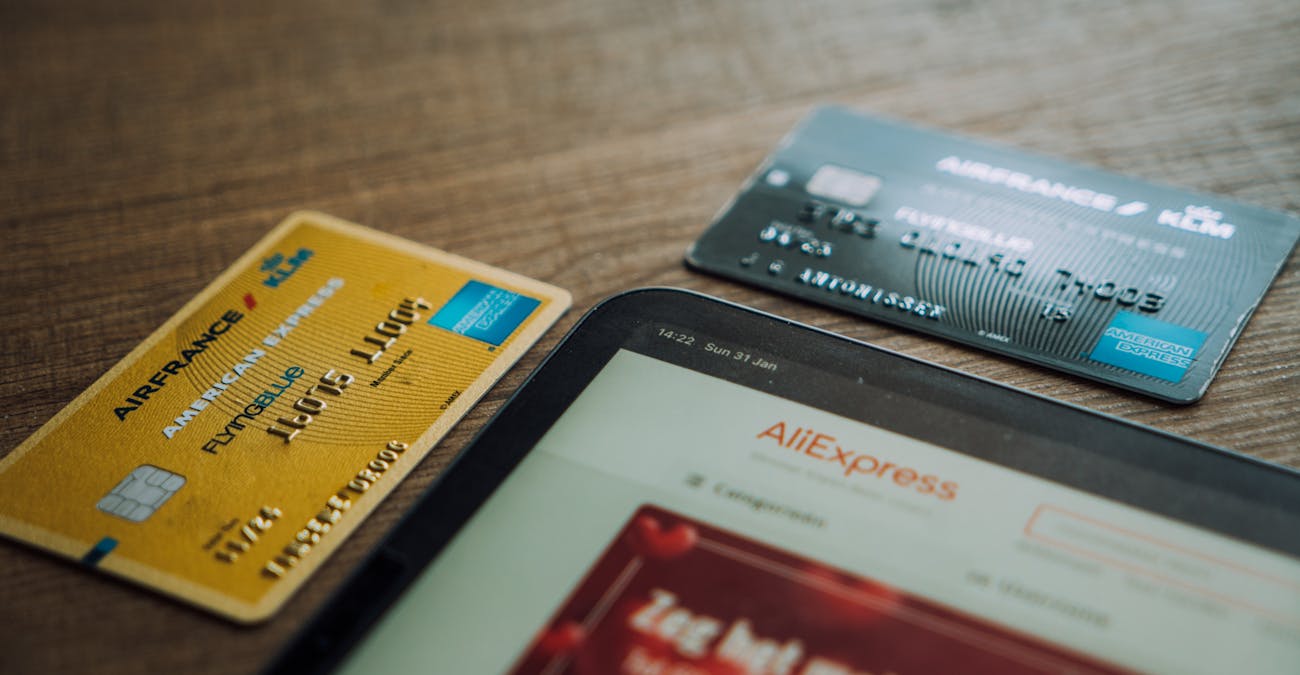
Sign up for our monthly newsletter
Your dose of travel fix - from hacks and deals to travel tips and everything in between, delivered monthly to your inbox
#9 Sign up for free tours
In a majority of cities around the world, free walking tours are easily available. Free tours are essentially pay-what-you-feel tours conducted by a local guide or a college student who knows the city in and out. You can book a slot online and at the end of the tour, you can tip your guide as much as you please. However, that is optional as well. These tours usually last from 1-2 hours and the guide will take you around the most popular places in the city on foot. You get to learn a lot more about the city you're visiting and the history from these tours than the paid ones that tend to cut corners. Furthermore, you can get amazing nightlife and food recommendations from the local guide.
#10 Steer clear of tourist traps
In every city, there are always several tourist traps that you’ll inevitably bump into. It might be accommodation in certain countries or public transportation in others. Regardless, it’s always better to know what are potential tourist traps you could fall for before you step foot in the country. Public transportation and even popular tourist spots in certain countries tend to take advantage of naive foreigners and charge exorbitant prices. Always negotiate and finalize the price before buying a ticket or before getting into the vehicle. When it comes to food and accommodation, book from trusted online portals in advance and you’re good to go!

12 Travel Scams to Watch Out for in 2021
#11 don’t leave home without travel insurance.
Having a travel Insurance policy that suits your travel style is one of the most underrated parts of traveling. Not just for your belongings but also your health. It’s even more important to get it if you have pre-existing health conditions. Travel insurance is also comprehensive protection of sorts that helps you save a lot of money in unfortunate scenarios like theft, cancellations, accidents, and even injury. While it may seem like an extra expense, when things go wrong you can bank on your insurance for coverage. You can get travel insurance from either your pre-existing insurance provider or from third-party providers like World Nomads, Insure My Trip, and Medjet.

The Ultimate Guide To Buying Your First Travel Insurance In The Post COVID World
#12 travel overnight to avoid hotel costs.
One of the best ways to save money and travel for cheap is to travel overnight to avoid hotel costs. You can skip paying for a night if you’re traveling overnight. It might be a tad bit uncomfortable compared to your hotel bed, but it’s worth the money you’re saving.
#13 Get a local sim

We recommend you get a local simcard if you’re planning on staying for more than a week. Roaming charges or even paying for Wi-Fi abroad can get expensive. Getting a local sim allows cheaper international calls and most importantly affordable data plans. Roaming around in search of Wi-Fi is not fun and a local sim can come in handy especially if you’re working while traveling.
Lakshmi Menon
Born to parents bit by the wander bug, Lakshmi calls her love for travel "hereditary and habitual". Perpetually ensconced with a book in her hand and a mug of coffee in the other, she has been to over 15 countries in her 23 years of existence and is currently saving miles and money for her solo trip to Iceland. Always hustling towards the least trodden path, she has encountered some wonderful people during her escapades and if you ever meet her, she won't stop gushing about them.
Be a smart traveler
The first to know about trending destinations, travel deals, tips and all things travel.

- Deadly Snakes
- Traveling the World
100 Ways to Travel the World For Free (Almost)
Travel is often something we all take for granted. It’s incredible how diverse our world is and how many cultures there are to explore. They say that people who travel are more accepting of others and have a greater appreciation of life’s little quirks.
Did you know that travelling, even just a little bit, can make you happier , smarter and healthier ? What’s not to love about it? Well, there is one thing… It just costs so damn much.
The good news is that, with a bit of work, it doesn’t have to be expensive at all . In fact, it turns out, you can travel the world for free if you’re savvy enough! Who knows, you might even get paid to travel.
Bookmark this page as it’s great to re-visit it for reminders on your travels. Let us know how you get on with some of these tips! Here are our 100 ways to travel the world for free.
Table of Contents
Share this Image On Your Site
<p><strong>Please include a link to www.sniffoutdoors.com/100-ways-travel-world-free with this graphic.</strong><br /><br /><a href=’http://www.sniffoutdoors.com/100-ways-travel-world-free/’><img src=’http://www.sniffoutdoors.com/wp-content/uploads/2016/08/the-ultimate-travel.png’ alt=’100 Ways to Travel World for Free Infographic’ width=’800px’ border=’0′ /></a></p>
Transport – How to travel the world for free
This is often the most expensive element of any good trip. The cost of planes, trains, boats, taxis and Ubers can quickly add up. Here are our best tips for getting around the cost of travel.
1. Hitchhike
It goes without saying, this mode of transport is completely and utterly free. It’s also a fantastic way of meeting some incredible people and you’ll get to see parts of countries you otherwise wouldn’t.
Although there are loads of genuinely nice people who want to help you out, you have to be aware of the potential dangers of hitchhiking. You just don’t know who you’re going to meet! To minimise the risk, plan beforehand by using a site like compartir.org .
2. A Free Ferry Trip
Why not combine our tip above and hitchhike just before the entrance to a ferry crossing? Of course, you’d have to make sure it’s the car carrying kind of ferry first. You’ll find that most ferries charger per car, rather than per person.
3. Volunteer on a Private Sail Boat
Unless you’re victim to the odd bit of sea sickness, travelling by sail boat is an excellent way to get around. You could try to ride on the generosity of others who are travelling anyway. If you have sailing experience, all the better, you’ll be very welcome on board.
4. Fly for Free
This is getting much harder than it used to be, but it can still be done. If you’ve been collecting your air miles for a while, then this is the perfect chance to use them. There are some great credit cards you can use which reward you for using them with air miles.
If that doesn’t work out, you could try complaining? Nobody likes a complainer but you can get a long way with the threat of a bad review or a negative tweet.
5. Walk (yeah, really)
You might struggle to walk your entire round the world trip, but you’ll be able to get much further than you think. It can be tricky if you’re carrying around a lot of gear, but you can save a lot of money by doing so. Why not combine walking and hitchhiking? If you plan on walking for a long time, you might be better off carrying your belongings in a cart instead of a bag. Keep in mind that you may need to invest in gear, like walking gaiters or similar equipment.
6. Work on a Cruise Ship
Work might not be at the top of your agenda, but this is not only an awesome way to get around for free, but you could even get paid to do so! Understandably, you’ll be restricted in terms of where you’re going and when. If your aim is simply travel, then this is a good option.
7. Carpool
This is a little bit like organised hitchhiking, which we briefly touched upon earlier. There are some incredible services which aim to put together driver and hitchhiker, safely. Check out blablacar.co.uk , karzoo.eu and ridefinder.eu .
8. Train Hopping
We probably have to put a disclaimer on this, don’t we? This is totally ILLEGAL. However, it is also free! If you’re determined enough to do so, you’ll figure out how. In fact, here’s a handy guide on how to do it successfully.
If you’re not up for breaking the law (we don’t blame you), you can seriously reduce train costs by booking ahead of time. It’s incredible how much you will save by weighing up your options.
9. Shop at Places Partnered with Airlines
Most airlines offer great deals in conjunction with major supermarkets and online stores, like Amazon. If you tactically shop at these stores, you’ll soon rack up enough air miles to fly for free (or at nicely discounted price).
10. Tour Cities with Services like Vayable.com
You can meet up with locals of the cities you are in to explore and navigate by using vayable.com and other similar services.
11. Rail Passes
This is our legal version number 8 (train hopping). Although not as exciting, you won’t have to deal with any potential legal costs and fines! If you’re committed to travelling by train frequently, then signing up for rail passes will save you a tonne of money.
We’re not sure how it took us to number 12 to think of this one.. but cycling is completely free, great for the environment and can be much easier than walking everywhere. It’s also an excellent way to quickly tour cities.
13. Budget Bus Trips
Companies like polskibus.com offer tickets so cheap, they’re almost too good to be true. Seriously, you can get a long distance ticket within Europe for as much as €1 at times.
14. Charity Trip
A great way to raise funds for a good cause and travel at low cost is to organise a charity event or sign up for an official one. Something like globaladventurechallenges.com offers incredible opportunities for people who are willing to raise the money for their chosen charity.
15. Book a RTW Flight
If trying to get a free flight seems too much work for you, you can make good savings by booking a round the world flight. There are services which organise your lay-overs for you and significantly brings down the overall cost. A simple Google search for “round the world trip planner” will get you started.
16. Fill in surveys for free flights
Yes, this is possible. If you’re dedicated some mind numbing work, it can be done. Here’s a handy website to get you started. Simply get filling in surveys and over time, you could rack up enough air miles to be deserving of a free flight.
Think about it… Tinder matches you with local people. Change your bio to say something like “Currently travelling around [CITY] and trying to get to [CITY] on the generosity of others”. Voila! You’ve essentially just turned Tinder into a hitchhiking app. Read how a man successfully did this here .
18. Deliver Somebody’s Car to Them
Check with car rental places and see if you can deliver a car to their owner. It’s a nifty way to get from A to B while helping someone out.
19. Drive a Campervan
If you are travelling with friends, this can be a super cheap way of getting around, since you’ll be splitting the cost. Taking a camper van with you means that you can cut down on the costs of flights, trains and buses. Plus, you can sleep in it!
20. Hitch a Ride on a Motorbike
An exhilarating form of hitchhiking! Grab a spare helmet and jump on the back of somebody’s motorbike to get around places quickly.
21. Horse Riding
If it’s not your own horse, you might not get very far with this. However, it can be a great way to explore rural places and get from A to B. If you do happen to stumble upon someone with a horse AND cart, even better. Offer them something of value for a lift to your destination!
22. Book Directly
If you need to book any transport, be sure to book it directly from the companies website. If you use comparison sites or business listing site, you can often be charged slightly more. This is because these listing sites need to make a cut, so will mark up the price.
23. Paddleboard Across the World
You might think this is super unrealistic, but if we inspire one mad person then our job is done. Read about this man who plans to be the first guy to paddle across the Atlantic. Apparently his journey is due to begin in November 2016.
24. Kayak Your Way to Freedom
Sometimes your pit stops aren’t all that far apart and can be separated by a stretch of water. It seems costly to take a boat or plane. So, sticking with the water theme, why not kayak to each destination? It’s a good way to tour the coasts of a country.
25. Tour With a Band (or circus…)
If you can somehow become a useful member of a band or a travelling show, you can potentially earn yourself a free round the world trip. You’ll need to be able to offer your target something of value in order for the exchange to be well received.
Accommodation
With a combination of creativity, imagination and pure willpower, you can get far with little money. Let’s see how we can use the same mentality to find comfortable places to sleep. The list goes on…
26. Couch Surf like a pro
Couchsurfing connects travellers with people anywhere in the world who are willing to give up a free bed or, well, couch. This means that you can potentially stay anywhere around the globe for absolutely free.
27. Work for Your Accommodation
There are plenty of small-medium businesses who will be more than happy to exchange some effort for a free night. All you need to do is ask! It might involve some manual labour or heavy lifting, but definitely worth it for a cost-free night in their accommodation.
28. Leverage Your Talent
Are you an amazing photographer? If so, why don’t you offer some free photos of their hotel or B&B in exchange for a free stay. For some businesses, it can costs hundreds of $ for good photography, so there will be people willing to partake in this exchange.
29. House Sit
If you’re not up for doing some manual labour, there’s still an option for you to ‘work’ in exchange for your stay. There are services which bring home-owner and traveller together. Typically someone who will be away for a certain time will ask someone to come and stay to look after their house. Check out mindmyhouse.com .
30. Pitch up a tent
Yes, one of the more obvious ways of going about it is to camp. Do check out local rules and regulations as some places you might actually get in trouble for camping.
31. Camp in Somebody’s Garden (Huh?!)
Ok, so this is a service which is growing in popularity throughout Europe, where people offer a spot in their garden for you to camp. Browse campinmygarden.com for a place to stay and then apply for that place!
32. WWOOFING
WWOOF is an organisation which essentially gives you free accommodation on the understanding that you help with a variety of agricultural jobs, such as weeding, harvesting or helping with animals.
You have to organise and pay for your own travel, however accommodation is free and you’re doing a great thing for local communities.
33. House Swapping
You can live like a local in your chosen city by using a service like HomeExchange.com . This will allow you to have your home comforts and be much more affordable. All you have to pay is a registration fee and you can advertise your house.
Granted, this one is not free. But, you can stay in some ridiculously nice places at amazing prices. Moreover, you can read reviews before you book something so that you know you aren’t going to be disappointed when you arrive.
35. Sleep while travelling
You can cut down on the costs of accommodation by some smart travel planning. If you know you have a long train, bus or plane journey, try to plan it overnight. This will mean you can rest during the travelling period, without having to splash out on a place to stay.
36. Hostels
Designed with the budget or student traveller in mind, hostels offer a cheap and convenient stay. They’re the perfect solution if you’re stuck for a night. Also, they’re excellent for meeting like-minded travellers!
37. Stay in a Monestary
No, you don’t have to be religious for this one, as you may think. There are monestaries around the world which either offer cheap stays or completely free, in exchange for a donation or some work. Here’s a great resource to get you started.
38. AU Pair
This is a well-known method to save on accommodation costs. Sometimes you can spend as much as a year with your host and you are often required to help them look after their kids and teach them English.
39. Public Places
Maybe not the ideal place to sleep, but it can be done relatively safely (and even comfortably!). Let’s say you have booked a bus trip; why not have a quick nap in the terminal before you have to leave? Alternatively, you can do the same thing in an airport or train station.
40. Squatting
No, not at the gym. Squatting is staying in somebody’s premises without their permission. This often happens on disused properties and shacks in rural areas. Depending on which country you’re in, it may be illegal so it’s worth checking out local laws.
41. Stay with friends
It’s almost so obvious you might not think of it! We all know some distant cousin or friend we briefly met one time who lives on the other side of the world. Reconnect with them and see if you can stay at their place for a few nights.
42. Sleep in Your Vehicle
If you have taken a car or other vehicle as a form of transport for your road trip, sleep in it! Just make sure you haven’t had a night of drinking first, because that can count as driving under the influence of alcohol, even if you’re just sleeping.
43. Sneak into a hotel under renovation
This one is maybe a slightly more sophisticated version of squatting. The trick is to find a hotel which is currently under renovation or maybe disused. You can sometimes find a room or floor to stay for the night without anyone knowing!
44. Make Friends with a Local
Force yourself to be sociable and make a good friend with a local. You can explain your situation to them and if you’re lucky enough, you might even bag yourself a free stay.
45. Local Homestay
If you don’t manage to make friends with a local, you can always pay a small price for a night in their spare room. Local residents are often willing to accept a small sum of money. Again, you just need to be willing to ask!
46. Work on a Cruise Ship
We mentioned it in the list for an easy way to travel. Now, it’s on the list for free accommodation for obvious reasons! As well as earning money, you’ll be put up for the amount of nights your travelling. Double win. Cruise ships can also be great for parties and festivities, with organised events, top quality marine speakers and good people.
47. Pet Sitting
It’s a little bit like house sitting, but for home-owners with pets who need looking after while they are away. Sometimes the home-owners are simply on vacation or working away. Food won’t be included, but free rent is!
48. Sleep on the beach
If you’re lucky enough to be in a warm (and safe) country, then why not have a night under the stars and sleep on the beach. Be careful you have your belongings safe; maybe tie your bags to your leg or arm. If you choose to sleep in the great outdoors, it might be wise to get familiar with the local wildlife, like venomous snakes and such like.
49. budget guest houses
Most places in the world, you can find a cosy B&B for not too much money. A quick search on Google before you head off or ask a local when you’re travelling, will do the trick. Tip: TripAdvisor is a great place to search for cheap rooms to rent.
50. Volunteer for Accommodation
WorkAway.info is a service which partners budget traveller with a place to stay. In exchange for accommodation, you can expect to complete work in Australian rainforests or on farms in Switzerland. The chances are, you’ll thoroughly enjoy yourself while earning a place to stay!
How to get free food
It’s something we all need to think about, whether we like it or not. The cost of food can soon add up, with meals out at night and convenience food at airport. It’s simply a cost you can’t avoid too easily. Here are our best ways to get free food or cheap.
51. Look for free samples
There will be many market stalls you visit which offer free samples. Seriously, if you manage to bag enough of these in a day, you’ll cut out at least one meal! Plan ahead and find out when the next one will be and make sure you’re there. Tip: farmer’s markets are often on Sundays.
52. Go at closing time
This will not work every time, but worth a shot. Head to a take away restaurant around closing time and offer to clean up anything they are going to throw out. If they don’t give you something for free, you might be able to get something cheaper.
53. Eating competitions
Often, eating competitions are free to enter (or a small fee for the amount of food you get to eat). What a sneaky, devious way to get a cheap or free meal. Even if you don’t win, you’re bound to last a while before you’re next meal.
54. Work in a bar or restaurant
Double win. Earn money and get to eat at a discounted price or clean up the left overs. Just make sure it’s a place which serves food you like and won’t get sick of; you’ll be eating a lot of it!
55. Gather wild food
If you do a bit research, nature offers plenty free food! You can pick wild berries, garlic and mushrooms. Also, why don’t you go fishing? If you don’t catch a fish, you might be able to pick up mussels or seaweed. Here’s a great resource on wild food for you.
56. Freebies on the web
A simple search online for free sample of food and you’ll find long lists of companies who want people to try their food in exchange for an opinion or promotion. Usually you’ll need an address so that they can send you the samples.
57. Make friends with a gardener
Gardeners and farmers always have extras left over from their crop. If you become friendly with someone who grows fruit or vegetables and they understand the position you’re in, they may be willing to give you some of their extra produce.
58. Become a Freegan
After a few viral Facebook videos, this style of living is growing in popularity and becoming more accepted. Supermarkets are notorious for throwing good food out at the end of the day. Much of this food is perfectly safe to eat. Head there around closing times and see what you pick up.
59. Supermarket samples
As well as farmer markets, supermarkets also often give out free samples of food. It won’t be much but it might curb the cravings for a small snack.
60. Legal free food from restaurants
When it comes to promotion, businesses are always looking to give out free stuff. Restaurants are no different. We found this list of 156 restaurants which give free food for signing up to their email newsletter. It’s a no brainer. Just make sure you use an email address which you don’t mind being spammed for ever more.
61. Tinder date
This can work for both guys and girls, but it’s a bit devious. Organise a date from Tinder for yourself and charm your way to a free meal. Depending on how strong your dating game is, you could make this a regular thing.
62. Hotel buffet breakfast
Disclaimer: illegal. Fun disclaimer: a super easy way to bag a free breakfast is to take advantage of a buffet in a hotel you’re not actually staying in. The key to pulling this off successfully is to walk with confidence. If you feel eyes are on you, grab and handful and leave!
63. Cook at home
This is more of a money saving tip, rather than completely free. It can be far too tempting to eat out at nice restaurants. Save money and cook a delicious meal at home!
64. Book a Hotel with Free Breakfast
Often, breakfast comes included in the cost for a B&B or hotel. If not free, they are usually a lot cheaper than buying breakfast would be. Shop around when choosing your hotel to see how much food you can get away with.
65. Stock up on Hotel Breakfast
Now that you’ve got your hotel breakfast, it’s time to stock up. Fill your bags, pockets and boot with food from the buffet. You can make rolls later with the ingredients you pick up in the morning. This can potentially last you rest of the day if you organise this wisely.
66. Coupons
You might have seen the extreme coupon-ing programme on TV where people save tonnes of coupons and get ridiculous discounts on their grocery shopping. Well, without being as extreme, you can save a lot by simply being wise and looking out for coupons.
67. Head to the reduced isle
Supermarkets almost always have a reduced section. Typically, these items will be going out of date tomorrow but are still fine to eat. You should always check this isle first before you do your shopping.
68. Dine away from tourist areas
It’s well known that restaurants hike up their prices in tourist areas. If you are eating out, make sure you visit the restaurants locals go to, so that you save on unnecessarily high prices.
69. Accommodation with a kitchen
When you are choosing where you’re going to rest your head for the night, choose a place which has a kitchen. Hostels are usually great for this. By planning this part of your trip well, you won’t be forced to eat out.
70. Pack lunches
Heading to the airport? Pack your food in advance. Airport prices are extortionate and there is no need to spend this money when you bring stuff with you!
71. Street Food
Buying street food is generally much cheaper than buying a meal from a restaurant. It can also taste just as good! Try to find stands which sell things like hot dogs and sandwiches.
72. Cut out the Snacks
It’s just so easy to pick up an ice cream then a bag of sweets at the next shop. Making sure you resist the urges will save a lot of money when added up over time. Instead of snacking, trick yourself and drink more water! It will fill your stomach, making you think you’re less hungry.
73. Buy Water from Shops
If you need to buy water, make sure you don’t do it at restaurants and bars. Again, the price of water goes way up in places like that. Instead, buy it from a local shop. Usually, if you buy a big bottle, it will be cheaper than a smaller, branded bottle.
74. Split meals
You can either do this with a friend or on your own. If you’re at a restaurant with a friend and you know the portions are big, go halves with them. Remember, you don’t need to eat until you’re stuffed! If you’re on your own preparing food, make the portion marginally bigger but then split it into two meals.
75. food included
Try to book travel, events and parties (basically anything) where food is included in the cost of entry. It’s the perfect way to double up. If you’re booking a flight anyway, try to book one which includes a free meal. Parties and meet-and-greet events often have free snacks available as well.
Jobs to travel the world
Although the ideal would be to travel with no financial concerns, money does run dry eventually. But don’t worry, you don’t need to keep making dents in your savings. The list goes on with ways to make money while travelling.
76. Teach english Abroad
There are tonnes of organisations which give you the opportunity to teach English abroad in amazing countries. Don’t worry, you don’t need any qualifications; just a good attitude! Check out GoAbroad.com , InterExchange.org and FootprintsRecruiting.com for a start.
77. Work in a Hostel
Don’t settle for having to pay for your accommodation, let the accommodation pay you! Working in a hostel is great because you get to meet lots of like-minded travellers and interesting people all day long. It’s a sure fire way to make some friends for life.
78. Travel Blog
It seems that just about everyone is doing this now and there’s a reason for that; it works! But it does take a lot of work, and unless you strike lucky and build up a big social following, you’ll probably need to know how to rank your blog on Google.
79. Become a Freelance Anything
Maybe you have a skill that people are willing to pay for, for example, writing or photography. Figure out how to leverage your skills in exchange for money. It’s a relatively easy way to make money on the side if you’re clever about it.
80. Bar work
This is the ‘go to’ for all travellers. It’s not too hard to land yourself a bar job abroad. After all, there are plenty of bars around. It could even save you money on alcohol when it’s your turn for a night out.
81. Teach an Instrument
If you know how to play the guitar (or any other instrument for that matter), why not teach it to children and adults? You can earn good money for a half hour or hour long lesson.
82. Teach a Sport
Maybe you’re a swimmer or tennis player. Well, there are plenty of places where children learn these sports abroad. If you are particularly experienced in one of these areas, you will find places want to hire you. For example, if you’re a keen wakeboarder , you can apply to become an instructor at camps like Neilson Holidays .
83. Au Pair
Like we saw in the accommodation section, organising an au pair is one of the best ways to save on places to stay. Sometimes, au pairs can pay good money too. We’ve seen friends who have helped out fairly wealthy families.
Hopefully this is already on your list if you’re a talented musician. As well as teaching somebody how to play an instrument, you can get paid for standing in the street and playing good music. Just make sure you check local laws before you find yourself in trouble with the police.
85. Personal blog
Just because you’re travelling, doesn’t mean you have to blog about that. You can blog and earn a living by talking about absolutely anything. We’d recommend trying to find your own niche and in the back of your mind, think of a way you could monetize it.
86. Fruit Picking
This is a very popular option among travellers. There are specific farms you can go to and pick fruit, getting paid per kilo of fruit you collect. You won’t earn big money doing this but it’s a little extra to help you along the way.
87. Fiverr gigs
Fiverr.com is a freelancer’s heaven. You can advertise a gig, from design to voice overs, and people come onto the site searching for the service you are selling. It’s completely free to post a job.
88. Give Haircuts
We’d advise you only do this if you’re actually good at cutting hair. Otherwise, you’re just setting yourself up for complaints. If you cut hair at home, take this skill with you and do it on the side in whatever country you are in. Just be sure to have any relevant visa.
89. Design Websites
Web design isn’t super complicated like people think it is. In fact, people even pay half decent money to get a WordPress theme installed for them. Learn how to do this and you could approach small to medium businesses all over the world.
90. Sell Art
There’s always markets and stalls in European cities. If you’re a budding artist, set up a stand at one of these and flog your art for money. It costs a small amount to rent a stall, but you can soon earn that money back and more.
91. AIRBNB
If you’re travelling, it likely that you’re leaving a property behind. Post it on Airbnb . You can make a killing doing this, especially if it’s in a desired area. Check out the website to see what similar properties are going for and give it a go.
92. Work on a Boat
FindaCrew.net offer jobs on all sorts of boats, depending on your experience level. Simply create a free profile and try your luck with it.
93. Summer Camps
One of the most popular ones of these is Camp America, but there are others too. Work a whole summer in one place and make some really great friends while doing so. People who do this thoroughly enjoy the experience and have one of the best times of their lives.
94. Tour Guides
Although you’re in a foreign country, there are still English speaking people looking for tours while they are on holiday. Either set one up yourself or work for a company. Often, the tour agencies are aware that you may only want to do a few weeks worth of work.
95. Translation
Wander around any local bar or restaurant, have a quick glance at the menu and you instantly spot several spelling mistakes or mis-translations. For a small fee, offer to tidy this up for the business owner. You might find that some places don’t even have an English menu. If this is the case, you can possibly charge a bit more money.
96. Become a flight Attendant
This will be a more long-term job but it does allow a certain amount of travel. You’ll get to stop off on some great places, but it’s not always for long. The bonus is that you usually make a good living with this job. So, if it satisfies your urge to explore the world, it might just be the perfect job for you.
97. Buy and Sell on Ebay
An effort based way of making money is to sell stuff on eBay. First, you can make money from selling old things you don’t use anymore. After that, visit garage sales and buy used toys cheaply, then mark them up on eBay later that day. If you’re determined enough, you can make a few hundred $ in a weekend.
98. Volunteer
This likely won’t make you any money but you’ll have an incredible experience. Furthermore, you’ll often get free accommodation in exchange for your efforts. It might also help you save some money on food too!
99. Be a Local Handy Man (or Woman!)
If you just have a natural gift for fixing things, don’t let this talent go to waste. Try to find local directories or build up a good reputation through word of mouth and you’ll soon find yourself in great demand. You don’t need to just fix things, you can do lots of odd jobs people need done around their houses.
100. Run Social Media Accounts
If you aren’t building up your own social media account, you could always work freelance and run an already existing business social media profile. The great thing about this is that it often doesn’t require a place of work, meaning you can do it on the move.
Whoa. Well, that was a long list. Make sure you bookmark this page to refer back to later. If you’ve found it useful, please share it with a friend!

- Adventure Travel

[VIDEO] 7 Unique & Different Ways to Travel The World

The GoAbroad Writing Team is a collection of international travel writers with decades of experie...
- button]:border-none [&>button]:bg-white [&>button]:hover:cursor-pointer [&>button]:hover:text-cyan-400"> button]:hover:text-cyan-400 [&>button]:bg-white hover:cursor-pointer" height="1em" width="1em" xmlns="http://www.w3.org/2000/svg">
The usual leisurely stroll down a cobble-stoned street isn’t quite what you’re looking for. Everyone loves a nice museum every once in awhile to restore your resting heart-rate, but you’d much rather keep your blood pumping, heart racing, ears ringing, and sweat dripping. You’re all about conquering fears and getting as far out of your comfort zone as you can. You’re an adventure traveler wanting more unique ways to travel and experience the outdoors abroad. Whether it’s climbing the next mountain top or catching the next wave, your pursuit of the adventurous never ends.
Since space travel isn’t really commercial yet (we’re keeping our fingers crossed), check out these unique and different ways to travel adventurously this year. Video & transcript below!
Ok Bear Grylls. Before you get your sock out to start filtering foot-water from a mountain stream, let’s actually talk about adventure travel.
If you’ve been feeling the call of the wild, you’re gonna want to keep watching because we break it all down for you— BY EXPERIENCE. Because we all know destination is secondary so long as you’re having a badass experience.
That’s right, these are the top seven adventure travel activities and the best ways to get your adrenaline pumping . Honestly, if this doesn’t inspire you to sign up for adventure travel, nothing will and you should just get back under the covers and accept that you aren’t YOLO-ing to the fullest.
The most unique ways to travel this year
BUT, if you’re already organizing your gear, here are the most adventurous and unique ways to travel this year.
1. Photography Trips
Because just like us, you’re all about looking at the world through a new lens. No matter your preferred glass, aperture, or subject—you get the picture—there are more than enough adventure travel programs to make your heart shutter.
You can be like myself and trek across the Judaean Desert in Israel and you’ll be on a camel, snapping photos, it’s a lot of fun! And, I must admit, all the lighting in the desert is just beautiful.
2. Backpacking & Hiking
Pack on your back and everything’s just fine. You knew backpacking was cool wayyyy before Reese Witherspoon got “Wild.” Your boots are all laced up and you’ve already made your infamous trail mix.
My trail mix just consists of M&Ms, but, I mean, that’s ok.
You can embark on a long thru-hike in the Swiss Alps, walk the Camino de Santiago, or just take a nice out-and-back day hike wherever and chase trails—but don’t go chasing waterfalls. Ok, ok, maybe a FEW waterfalls, but remember what TLC said! Happy trails!

Backpacking and hiking trips top our list of unique ways to travel this year.
3. Rock Climbing
Bouldering, sport climbing, on belay or off. We’re not just talking about the gym here! You want it all—the chalked up hands (and clothes), the feeling of solving a problem and conquering a long pitch.
With so much choice rock climbing worldwide, the real question is where will you go first. Wherever you go, just don’t forget crash pads! Climb on!
4. Surfing
Catch those gnarly morning waves and warm rays around the world. I’m sure you can feel the mist of the ocean against your face already. The planet is mostly water, so there’s no wave you can’t ride! Wetsuit up and get going! That pipeline isn’t going to surf itself after all. Grab your passport—and a dry bag—and get on that board!
5. Water Sports
Surfing’s not your game, but life on land has you feeling like… well… a fish out of water! All your favorite aquatic activities are here. You can sail off into the sunset, hop in a kayak and see where it takes you, or introduce yourself to some friendly sea critters when you scuba dive abroad.
There’s nothing stopping you from hitting the high seas! Especially once you’ve got your sea legs and the Moana soundtrack handy. Oh, I LOVE Moana. She is so cool.
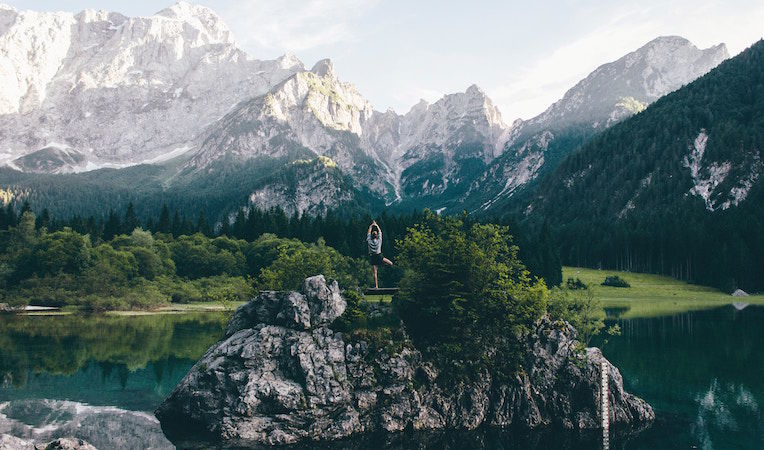
One of the most unique ways to travel this year? With your yoga mat!
6. Yoga
Not every adventurer has to be an adrenaline junkie. You can search for calm, balance, and breath all around the world. You’re with yourself, you’re thinking, you’re calm, you’re cool.
You don’t want to savasana on the opportunity to take your yoga practice international for the adventure of a lifetime. Nama-don’t stay home!
Whether you’re going cross-country on a road bike in France or popping wheelies down a mountainside in New Zealand, this isn’t your SoulCycle class anymore! Wherever your two wheels can take you is where you will go.
See how fast you can go through each country; set a goal! Or, see how many miles you can do within a day or a week. Get that heart rate pumping and feel the wind blowing through your hair, but always remember your helmet, though. Safety first, people!
More advice on these different methods of traveling

You don't have to go alone
If you’re feeling overwhelmed, don’t worry, there are programs out there than can help you plan your adventure from start to finish. They’ll be with you every heart-racing step of the way!
It’s all about stepping outside your comfort zone. The key is to be prepared. Be sure to pack your cam and plenty of memory cards. Adventure travel is going to blow your mind and be the experience of a lifetime.
Next steps to adventure travel abroad
You have to walk before you can run. Here’s how to best prepare for your own adventures abroad and leave no stone unturned!
- Our badass Online Advisors can match you with the perfect adventure
- #NoDudsAllowed: The world's most adventurous places to visit in 2018
- How to find & book adventure travel abroad programs (work smarter, not harder)
- Adventure travel abroad programs vs. solo adventure travel —which will YOU choose?
- Travel bucket list ideas for a true adventure traveler
Next stop? The highest peaks and the deepest valleys! Your adventure begins today.
Look no further for unique ways to travel!
When you’re on your way home and haven’t showered so no one wants to sit next to you on the plane.
You don’t have to be Indy Jones to have an adventure abroad. In fact, you should leave that whip at home because that is definitely not going to make it through customs. All you really need to bring is a sense of adventure, an eagerness to try new things, and maybe some sunscreen—no...definitely bring sunscreen.
Find the best adventure travel programs right here, right now

Explore Adventure Programs on GoAbroad.com
Related Articles
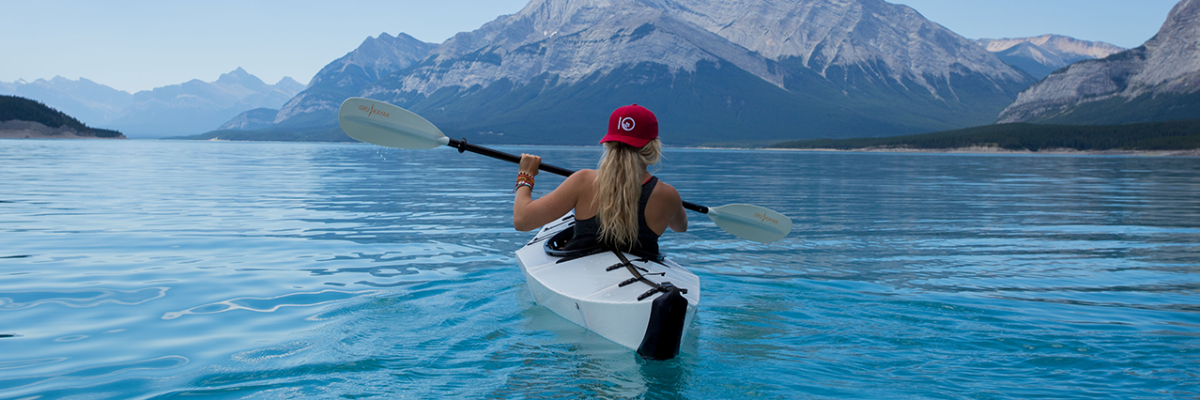
By Kerianne Baylor | April 10, 2024
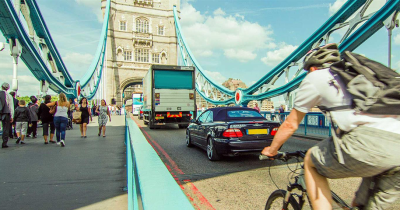
By Steph Dyson | April 9, 2024

By Hailey Hirst | April 9, 2024
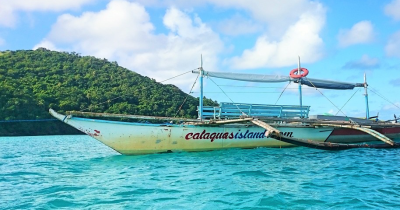
By Dominic James Fusco | April 5, 2024
Popular Searches
Recommended programs.

1905 reviews
MAXIMO NIVEL

Seamester Study Abroad at Sea

Penda Photo Tours

African Horse Safaris
Top Adventure Program Providers
Popular opportunities to check out
Join us on our exceptional photographic journeys with a do-good twist!
Program fees from $180 join ivhq's incredible and affordable volunteer programs, come join us for a wonderful summer of your life wcc global, come join us on the ultimate horseback holiday adventure, join ethical small-group adventure tours in uganda, for travelers, travel resources, for partners.

© Copyright 1998 - 2024 GoAbroad.com ®
- Study Abroad
- Volunteer Abroad
- Intern Abroad
- Teach Abroad
- TEFL Courses
- Degrees Abroad
- High School Abroad
- Language Schools
- Jobs Abroad
- Online Study Abroad
- Online Volunteer Programs
- Online Internships
- Online Language Courses
- Online Teaching Jobs
- Online Jobs
- Online TEFL Courses
- Online Degree Programs
100 Ways To Holiday Here This Year
From quintessential road trips to the drama and beauty of our beaches and coastline. From Indigenous festivals to the bright lights of our cities. Now is the perfect time to plan your next escape and help businesses and communities on the road to recovery.
- Experiences
Explore The 100 By Experience
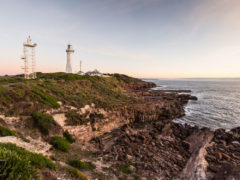
Food & Wine
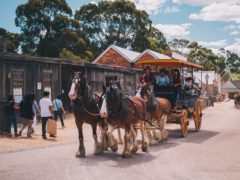
Bushfire Affected

Drought Affected
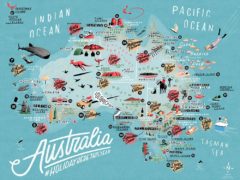
© Australian Traveller Media 2024. All rights reserved.
Nomadic Matt's Travel Site
Travel Better, Cheaper, Longer
How to Road Trip Across the United States on a Budget
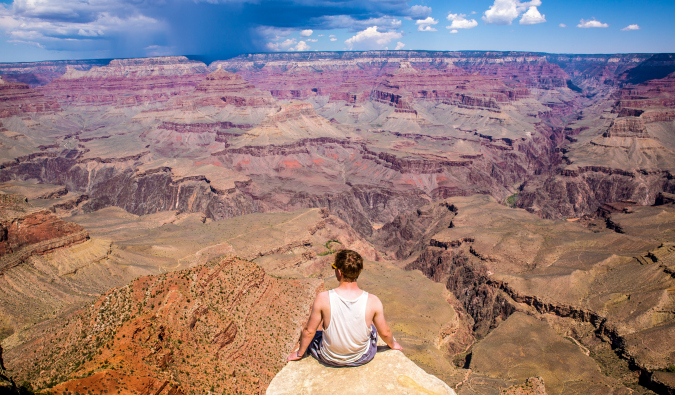
The Great American Road Trip is a rite of passage in the United States . We Americans have a unique fascination with the open road. It’s built into our cultural DNA. In Jazz Age America, the car was a symbol of freedom — a chance to escape your small town and the watchful eyes of parents.
As the highway system was developed in the 1950s, a wave of kids set out on the road to explore the country, giving new life to America’s car and road trip culture. Today, many still dream of getting in a car and driving into wide open spaces for months on end.
I’ve had the privilege of taking several multi-week and multi-month road trips around the country over the years. From traveling the Deep South to criss-crossing the country coast to coast , I’ve visited almost every state, exploring the myriad nooks and crannies of Uncle Sam’s backyard.
One thing is for certain, in diversity and scale, the United States is virtually unrivaled.
But this isn’t a post about fawning over America and its landscapes ( this post is ). This article is about how you can travel around the US on a budget.
Because, as it turns out, this country is surprisingly easy to travel on the cheap.
While rising gas prices and rental car price gouging post-COVID put a damper on things, it’s still easier than you think to have a budget-friendly road trip adventure around the USA.
In this post, I’ll explain how much I spent on one of my trips, how much you should expect to spend, and how you can save money on your next road trip.
Table of Contents
How Much Did My Cross-Country Road Trip Cost?
How to save money on your road trip, how to save on accommodation, how to save on food, how to save on sightseeing, how to save on transportation.
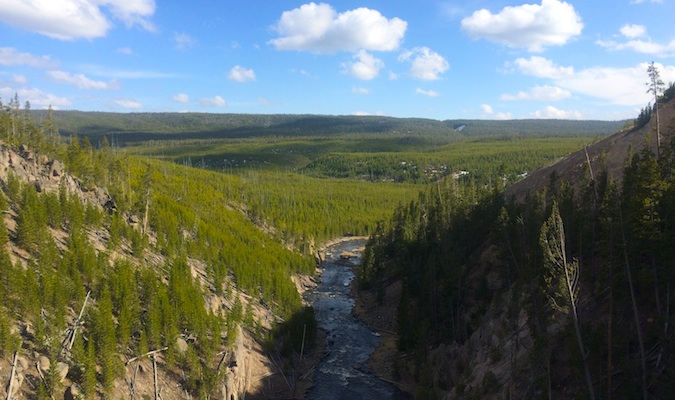
After 116 days traveling around the United States on this trip, I spent $6,262.67 USD, or $53.98 USD per day. While that is slightly higher than $50 USD a day, there were many parts of my budget I splurged on (see breakdown below) which skewed the number up. I definitely could have visited the country even cheaper if I didn’t have an addiction to Starbucks and sushi.
Here is how the numbers from my road trip break down:
- Accommodations: $1,036.36
- Food: $3,258.23
- Drinks: $438.94
- Gas: $696.98
- Parking: $253.00
- Starbucks: $75.26
- Miscellaneous (movies, toiletries, etc.): $170.00
- Attractions: $269.40
- Taxis: $41.00
- Bus: $17.50
- Subway: $6.00
- TOTAL : $6,262.67
Let’s break this down. First, my Starbucks addiction was unnecessary and added to my costs. Second, as a lover of sushi, trying various restaurants throughout my road trip drastically raised my food costs. Sushi, after all, is not cheap.
Moreover, I ate as if I wasn’t on a budget and rarely cooked, which is why my food expenses were so high relative to everything else. I would have definitely gone below $50 USD per day if I followed my own advice and cooked more often.
But, while I splurged in some places, three other things really helped me to keep expenses down: First, gas prices were low, averaging around $2.35 USD a gallon over the duration of my trip. (We’re going to discuss how to still do a road trip on a budget with high gas prices in the next section.)
Second, once you leave the big cities, prices for everything drop by nearly half so I spent a lot of time out of cities.
Third, I used Couchsurfing and cashed in hotel points to keep accommodation costs down. That helped a lot.
Overall, I didn’t do too bad and am happy with how much I spent. But is this how much you’ll spend, especially in the face of inflation and high gas prices? Let’s discuss that below.

It’s no secret travel costs a lot lately and inflation and high gas prices have really made super cheap road trips hard if you’re not staying places for free but that doesn’t mean the road trip has to be super expensive.
With that in mind, here’s how to cut your accommodation, sightseeing, food, and transportation costs — all without cutting into your experience!
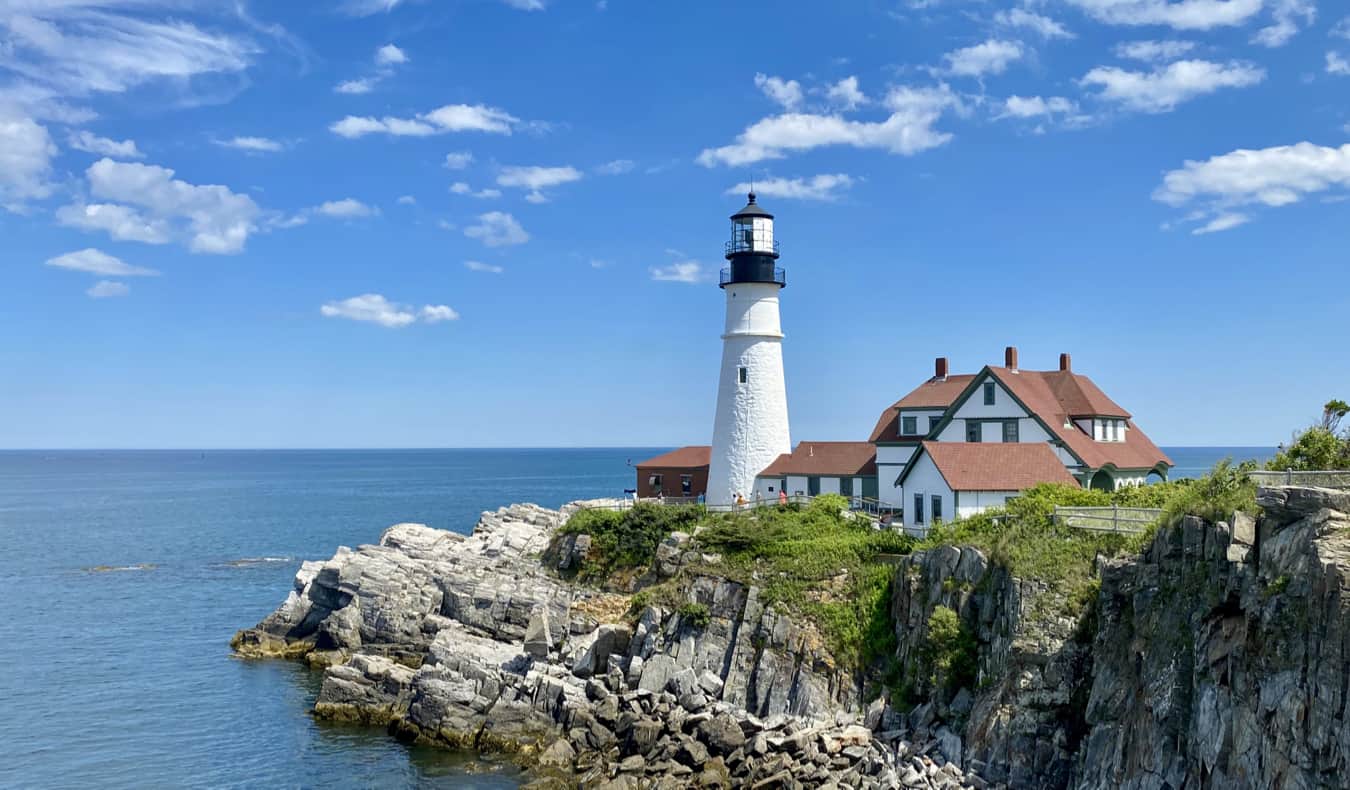
1. Couchsurf — Couchsurfing is a service that allows you to stay with locals for free. Using this website (or similar ones) is the best way to lower accommodation costs, as you can’t get cheaper than free!
More than that, it’s a wonderful way to meet locals, get insider tips, and find off-the-beaten-track stuff to do in the area you’re visiting. While you’re generally expected to reciprocate your host’s kindness (cooking them a meal, taking them out for drinks or coffee, etc.), it’s still far cheaper than paying for a hotel or motel.
While the app has seen its community shrink in recent years, there are still plenty of hosts across the United States so you’ll rarely find problems finding someone to put you up.
Additionally, if you don’t feel comfortable staying with a stranger, you can use the app to meet people for drinks, coffee, activities, or anything else you want to do. That way, you can still meet a local and get their insider tips without having to stay with them. The app has all kinds of meet-ups and events too so be sure to check it out.
2. Airbnb — I only recommend using Airbnb in rural, out of the way places where hotels are limited. Avoid them as much as possible in other circumstances. Here is why we don’t really recommend them.
3. Budget hotels — There are a plethora of cheap roadside hotels such as Motel 6 and Super 8 that will help you stay cheap. Rooms start around $50 USD per night and are super basic and always look well worn. You’ll get a bed, bathroom, TV, tiny closet, and maybe a desk. They are nothing to write home about, but for a quiet place to sleep for a night, they do the trick.
And if you’re traveling with someone you should always say the room is for one person as these hotels charge you more for two people.
Also, make sure you sign up for Booking.com and Hotels.com loyalty programs. Hotels.com gives you a free room after 10 bookings, and Booking.com offers members 10% off bookings, as well as free upgrades and perks if you book multiple times after signing up. They definitely helped a lot.
Pro tip : Book through websites like Mr.Rebates or Rakuten . By using their links before going to Hotels.com or Booking, you’ll get 2-4% cash back in addition to the loyalty program deals.
4. Hotel points — Be sure to sign up for hotel credit cards before you go and use those points when you travel. You can get upwards of 70,000 points as a sign-up bonus, which can translate into a week’s worth of accommodations.
The points came in handy in places where I couldn’t find an Airbnb, hostel, or Couchsurfing host. This saved my butt in big cities around the country. I was glad I had accrued so many hotel points before my trip.
To learn more about, check out these posts:
- The Best Hotel Credit Cards
- The Ultimate Guide to Picking the Best Travel Credit Card
- Points and Miles 101: A Beginner’s Guide
- The Best Travel Credit Cards
5. Hostels — There aren’t many hostels in the United States, and most of them are overpriced. A dorm room typically costs around $30 a night, which means you can obtain a similar private room on Airbnb at the same price. If you are traveling with others, it’s often more economical to get a budget hotel than a bunch of dorm beds.
However, if you are traveling solo and want to meet others, the social benefits may outweigh the lack of value. There were just some times I didn’t want to be alone – I wanted to be around other travelers.
Some of the hostels I loved are:
- Samesun Venice Beach (LA)
- South Beach Hostel (Miami)
- India House (New Orleans)
- Jazz Hostels (NYC)
- ITH Adventure Hostel (San Diego)
- The Green Tortoise (San Francisco and Seattle).
For more hostel suggestions, here’s a list of my favorite hostels in the USA.
6. Camping — Dotted around the country — including around all the national parks — are inexpensive campsites. If you have a tent and camping gear, this is by far the cheapest way to travel. Campsites cost between $10-30 USD per night, which makes seeing the country incredibly affordable. Most campsites have basic amenities like running water, bathrooms, and the ability to upgrade to get electricity.
In addition to your standard campgrounds, check out the sharing economy website Campspace . It lets you pitch a tent on private properties all around the country for a small fee. Much like Airbnb, some plots are super basic and barebones while others are more luxurious, so be sure to poke around for a cheap place to stay as there are plots available all around the country.
It’s also legal to wild camp in national forests and on BLM land unless otherwise marked.
7. Sleep in your car — I know this isn’t glamorous but sleeping in your vehicle brings your accommodation costs down to zero. I know lots of travelers who did this to make their trip more affordable, some sleeping in their car just occasionally and others doing it every night. Chances are you won’t sleep well but you will save money, and that’s a fair trade to some people!
For those traveling in an RV, there are tons of free places to park and camp all around the country. Use iOverlander to find the best spots.
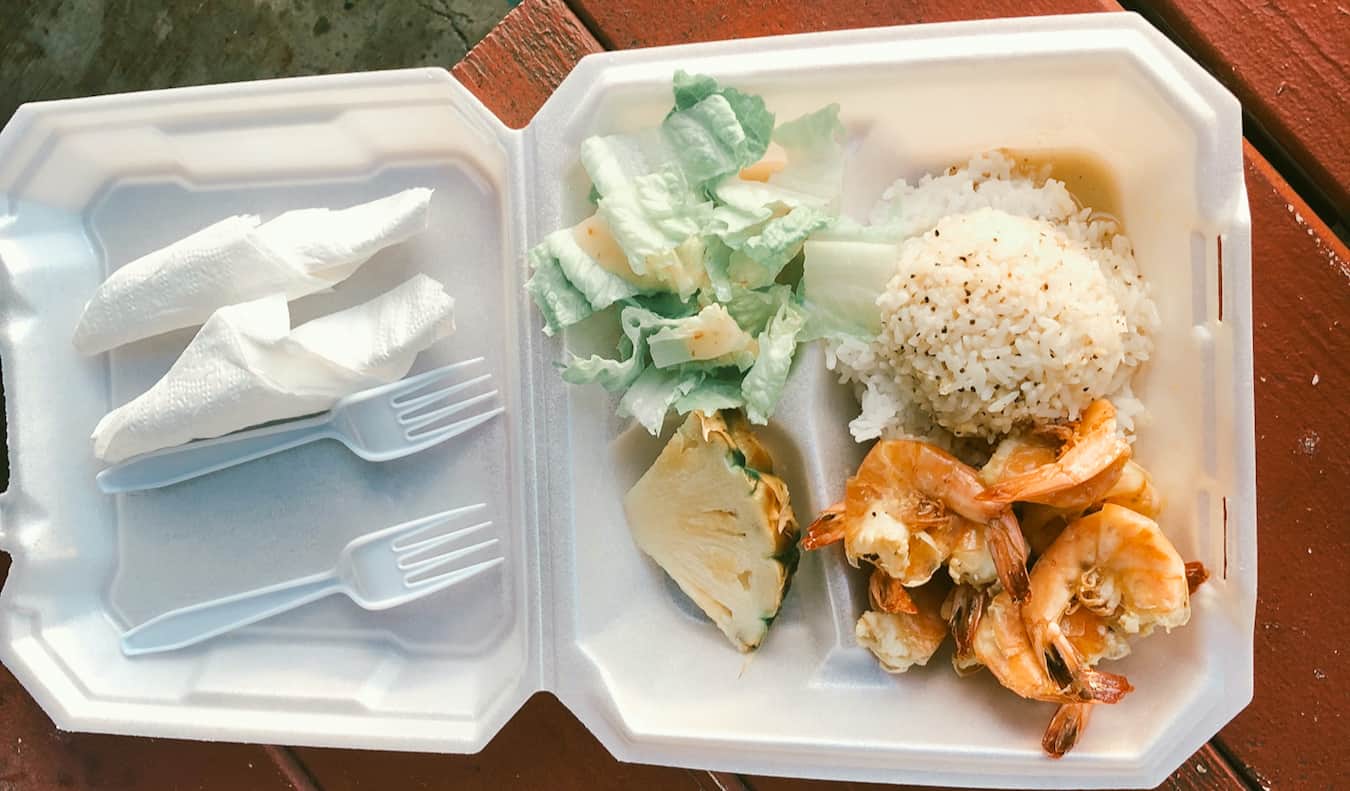
To help you keep your food costs in check, here are a few quick tips:
1. Cook your own meals as often as possible – If you can bring a cooler in your vehicle, you can pack groceries instead of eating out all the time. And if you bring some containers, you can store leftovers in the car too, allowing you to cook larger meals at dinner that you can eat the next day for lunch.
2. Stay in accommodation with a kitchen – If you want to cook, you’ll need a kitchen. Prioritize accommodation like Couchsurfing, Airbnb, and hostels as those will typically provide kitchen access so you can cook your meals.
3. Shop cheap – Avoid the pricier grocery stores like Whole Foods when it comes to getting groceries and stick to budget places like Walmart. It’s not glamorous, but it will be cheap!
4. Find cheap restaurants – When you want to eat out but don’t want to break the bank, use Yelp, ask people on websites like Couchsurfing, or inquire at the desks at hostels for suggestions. Locals have the best tips and insights when it comes to where to eat so they can point you in the right direction. Simply cook, limit your eating out, and be happy!
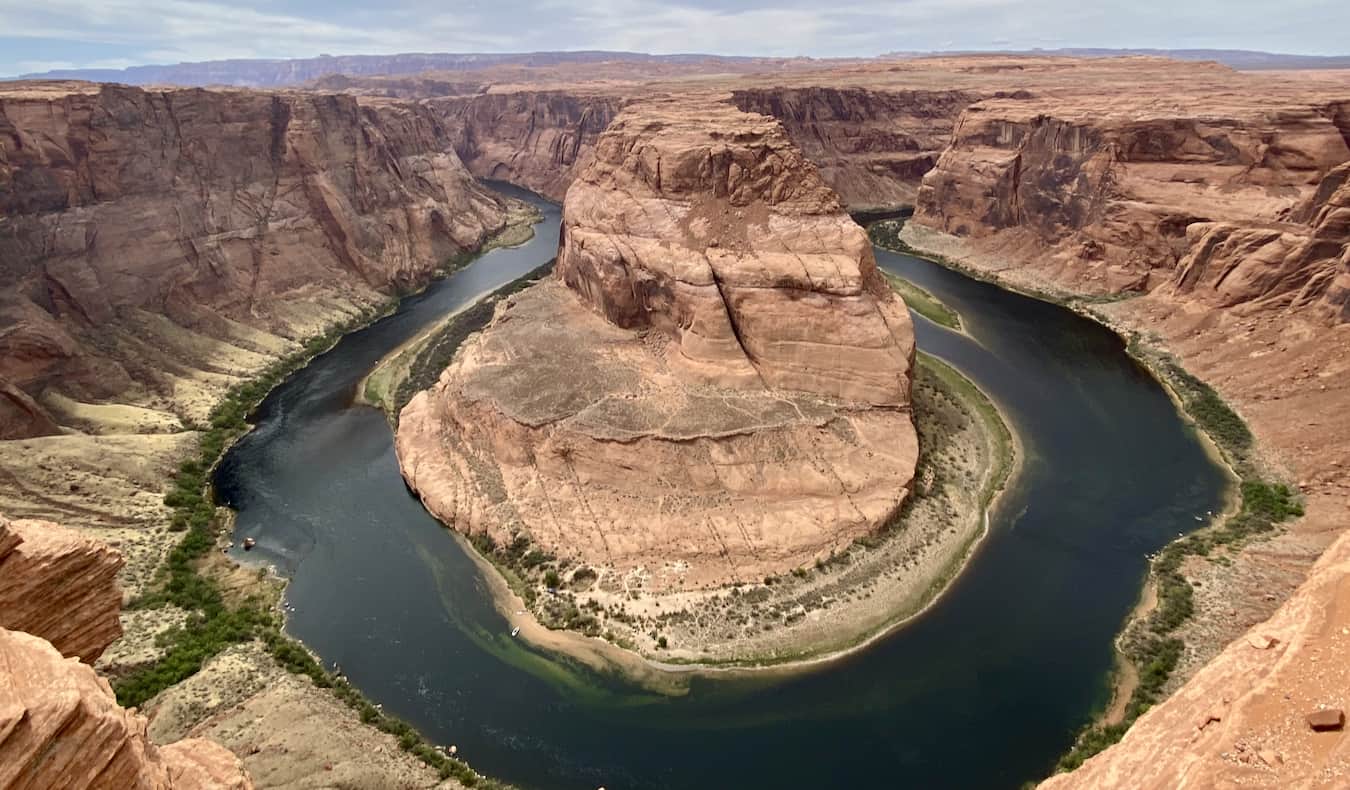
1. Get a National Parks pass — For $80, you can purchase an annual National Parks and Federal Lands ‘America the Beautiful’ pass that provides access to all 63 national parks (as well as any other recreation areas administered by the National Park Service). In total, you can visit more than 2,000 federal recreation sites with the same pass. At $20-35 USD per visit, seeing five during your trip makes the pass a money saver. When you visit your first park, simply buy the pass and you’re good to go. There’s no need to order it in advance.
The U.S. national park system is amazing and really highlights the diversity of landscapes in the country. You can’t travel across the country without stopping at many of the national parks, especially as you get out west.
2. City tourism cards — City tourism cards allow you to see a large number of attractions (and often include free public transportation) for one price, usually $75-100 USD. They provide free access to museums, reduced access to attractions, and restaurant discounts. Be sure to look into them if you plan on doing a lot of sightseeing, as they generally will save you money. They can be purchased at tourism information centers or online before you go.
3. Free museums and events — Inquire at tourism centers, use Google, or ask hotel or hostel staff for information about free events and museums. Many museums offer occasional free or discounted admission throughout the week. There are always tons of free activities in any city in the United States.
4. Free walking tours and city greeter programs — Many cities in the US have free walking tours or city greeter programs that pair you with a local guide who can give you a brief tour. Whenever I visit a new city, I start my trip off with one of these tours. They show you the lay of the land, introduce you to the main sights, and give you access to an expert local guide that can answer all your questions.
Check in with the local tourism office when you arrive to see what programs and tours are available.
For greeter programs, you’ll need to sign-up in advance before your visit. It’s good to give about 2 weeks’ notice as they have to find someone to take you around. Google “(city name) greeter program” to find them as some are run independently of the city tourism board so might not be listed on their website.
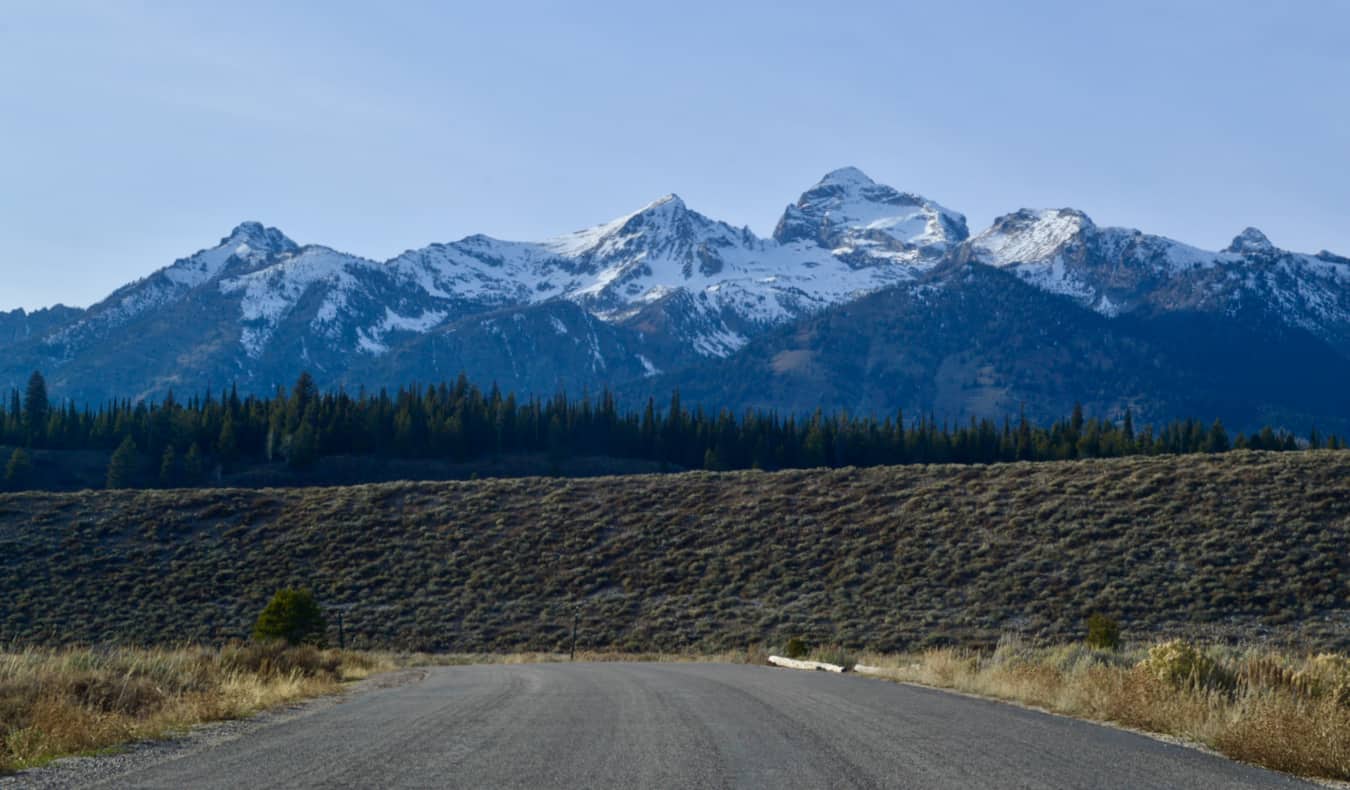
Here are your options when it comes to traveling across the country:
1. Hitchhike — This isn’t something I did on my trip, as I had a car, but it’s very doable (and relatively safe). Here’s a post by my friend Matt who hitchhiked across the United States explaining how to do so and come out alive (don’t worry, it’s safer than you think)..
For more hitchhiking tips, use Hitchwiki .
2. Rideshare — Taking on riders can be a way to lower your costs. On my first trip across the U.S., I offered rides to people I met in hostels. On this trip, I had friends and readers join me along the way. You can post ads on Craigslist and Gumtree and at hostels to find riders. This not only makes the trip more enjoyable but lowers your gas costs. Or if you are a rider, you can use the same services to find rides to get you places.
3. Buy a car — If you don’t have a car or don’t want to rent one, you can buy cheap used cars from car dealers or owners on Craigslist. There are lots of listings, and you can resell the car at the end of your trip to recoup some of your initial purchase cost. While this is easy in other countries, it’s hard to do in the United States, so remember a couple of key points:
- You’ll need a US address for registration documents to get sent to. I would use a hostel or hotel address and then set up a forwarding address with the Post Office.
- You’ll have to buy car insurance, which can greatly add to the costs of your trip.
Another option is to use a car relocation service. This is when you take someone’s car and drive it across the country. You are usually paid, and gas is covered. The downside is you don’t often have a lot of leeway on timing, so you might not have much time to stop and sightsee along the way. Car relocation options are also usually limited. Two companies worth checking out are Transfercar and Hit the Road .
If you just want to rent a car, use Discover Cars .
4. Use gas apps & membership programs – Install GasBuddy , an app that finds the cheapest gas prices near you. It is a must. If you’re going on a longer road trip, sign up for the monthly program; it costs $9.99 but will save you up to 40 cents a gallon.
Also, sign up for every gas loyalty program you can, so as to maximize points and discounts. Moreover, if you get a brand’s credit card, your first 50 gallons usually come with 30 cents off per gallon.
You should also consider getting a Costco membership for cheap gas. They have around 574 stores around the US so you’ll be able to earn the cost of a membership back by saving money on both gas and food.
5. Download parking apps – Parking costs add up — especially in cities. Use apps like BestParking and Parker to find spots and compare prices.
6. Take the bus – If driving is entirely out of the question, you can find bus tickets for as little as $1 USD from Megabus. Greyhound and Flixbus also have cheap rides all around the US. Rides under five hours are usually around $20 USD if you book early, and overnight rides usually cost $50-100. You can save big if you book in advance (often upwards of 75%!).
Don’t let the United States fool you! A road trip across the United States is a fun way to see a lot of diverse landscapes, experience different cultures, and meet interesting people. Traveling America isn’t very expensive once you are outside the big cities and you can easily travel the country on a budget by using the advice in this article.
Book Your Trip to the USA: Logistical Tips and Tricks
Book Your Flight Use Skyscanner to find a cheap flight. They are my favorite search engine because they search websites and airlines around the globe so you always know no stone is left unturned!
Book Your Accommodation You can book your hostel with Hostelworld as they have the biggest inventory and best deals. If you want to stay somewhere other than a hostel, use Booking.com as they consistently return the cheapest rates for guesthouses and cheap hotels.
Don’t Forget Travel Insurance Travel insurance will protect you against illness, injury, theft, and cancellations. It’s comprehensive protection in case anything goes wrong. I never go on a trip without it as I’ve had to use it many times in the past. My favorite companies that offer the best service and value are:
- Safety Wing (for everyone below 70)
- Insure My Trip (for those over 70)
- Medjet (for additional evacuation coverage)
Looking for the Best Companies to Save Money With? Check out my resource page for the best companies to use when you travel. I list all the ones I use to save money when I’m on the road. They will save you money when you travel too.
Want More Information on the United States? Be sure to visit our robust destination guide on the US for even more planning tips!
Got a comment on this article? Join the conversation on Facebook , Instagram , or Twitter and share your thoughts!
Disclosure: Please note that some of the links above may be affiliate links, and at no additional cost to you, I earn a commission if you make a purchase. I recommend only products and companies I use and the income goes to keeping the site community supported and ad free.
Related Posts
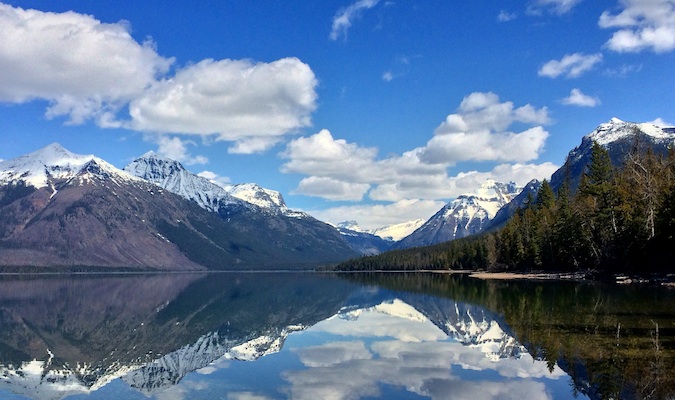
Get my best stuff sent straight to you!
Pin it on pinterest.

IMAGES
VIDEO
COMMENTS
44: Make Friends With Locals. Make it a point to avoid other travelers from time to time and start conversations with local people. One of my best travel tips is to make eye contact and smile more. Maybe stop to ask for directions. This is a fast way to make new friends.
Shanghai Maglev, China. Paul Sounders // Getty Images. The fastest train in the world travels whisks travelers between Pudong International Airport and Shanghai in a cool eight minutes. The ...
3. Travel Banking Cards. To get money out of an ATM, you NEED a bank that doesn't charge you fees. Charles Schwab is my bank of choice. A travel credit card is a way to go for collecting miles and points. Grab yourself a Chase Sapphire Reserve or Venture X card. GET MY CARD. 4. Car Rental.
Uber opened the door for cheap car journeys but now there are lots of different companies operating all over the world. Research which ones are best for the areas you're traveling too and download the app before you go. 9. One of the biggest ways to traveling on the cheap by far, is to use an Airmiles credit card.
There are ways to get ahead of any possible travel nightmares. First, be smart when booking. ... TSA PreCheck is a $78 application fee for five years, and Global Entry is $100. Related: 7 ways to get Global Entry, TSA PreCheck and/or Clear for free. TSA PreCheck allows you to speed through airport security without removing your shoes, ...
Much of the time, this is accomplished through welcome bonuses earned when you open a travel credit card. For example, a round-trip flight from Los Angeles to Paris costs $1,255 at the beginning ...
Southwest Airlines charges $100 one way for each child, regardless of distance. ... Mobili provides a way to see each group member's travel bookings at once, a tool that is especially useful for ...
Enter two cities and find out the best ways to travel between them, including by bus, train and rideshare. Open a travel rewards card. Signing up for a travel rewards card before a trip is a great ...
The single more significant way to reduce the carbon emissions of travelling is to tackle the transport portion, which is often responsible for at least 70% of the carbon emissions of a holiday ...
1. Travel off-peak or off-beat. In recent years, the global phenomenon of overtourism has begun straining infrastructure and ecosystems, and pricing locals out of communities. For a time it appeared that this trend wasn't slowing down, but then the pandemic hit and holiday hotspots suddenly went from overtourism to no tourism. As travel ...
Make Your Meals. You can easily save a few hundred dollars by making your own meals and buying local groceries and food when traveling. You can save a little money making breakfast and lunch on your own, and splurge on everything else. How much you can do may depend on whether you have access to a kitchen.
Paris. #1 in World's Best Places to Visit for 2023-2024. France's magnetic City of Light is a perennial tourist destination, drawing visitors with its iconic attractions, like the Eiffel Tower and ...
12 Unconventional Ways to Save on Travel. Points and miles are major, but there are other cheap ways to travel too. Consider setting up airfare alerts, housesitting and traveling midweek to help ...
Here are 22 ways to travel on a budget. Use membership codes to save on car rentals. AARP webpage showing car rental discounts. AARP. If you're a member of AAA or AARP, have a Costco membership, are a veteran or work for a large company with a car rental discount code, pull all of these levers. You might be eligible for discount codes you didn ...
Yawn. Ditch that everyday vacation and, instead, embark on a truly wild adventure. We've uncovered 10 kinds of wacky, totally unique ways to see the world, from horse caravans through Ireland to ...
The Tricks to Travel System ®, aims to teach strategies on how to travel the world for a fraction of the cost. Our system is comprised of 50+ how-to videos, where we show you step by step how to maximize the points and miles systems to travel essentially for free. In addition to our system, we also provide access to our exclusive, private Tricks to Travel Facebook group, where we provide even ...
All you have to really do is get an airline card, a travel card, or a general rewards card like Chase Sapphire. Ensure that the cards offer a sign-up bonus of at least 50,000 points. The more the better. Now, simply pay for your groceries, restaurants, and daily shopping with these cards.
9. Shop at Places Partnered with Airlines. Most airlines offer great deals in conjunction with major supermarkets and online stores, like Amazon. If you tactically shop at these stores, you'll soon rack up enough air miles to fly for free (or at nicely discounted price). 10. Tour Cities with Services like Vayable.com.
Happy trails! Backpacking and hiking trips top our list of unique ways to travel this year. 3. Rock Climbing. Bouldering, sport climbing, on belay or off. We're not just talking about the gym here! You want it all—the chalked up hands (and clothes), the feeling of solving a problem and conquering a long pitch.
100 Ways To Holiday Here This Year. Holiday Here This Year. From quintessential road trips to the drama and beauty of our beaches and coastline. From Indigenous festivals to the bright lights of our cities. Now is the perfect time to plan your next escape and help businesses and communities on the road to recovery. Experiences.
Here are the best ways to travel around Europe on a budget: 1. Travel by Bus. Taking intercity buses is one of the cheapest ways to get around the continent. The main international bus companies are Eurolines and German-based FlixBus, which expanded greatly when it acquired Megabus and now has routes all around the continent. Flixbus is usually ...
In this post, we're going to break down the costs of one of my first big road trips. I took this trip during the launch of my book How to Travel the World on $50 a Day with the intention of keeping my daily costs below $50 USD.. After 116 days traveling around the United States on this trip, I spent $6,262.67 USD, or $53.98 USD per day.